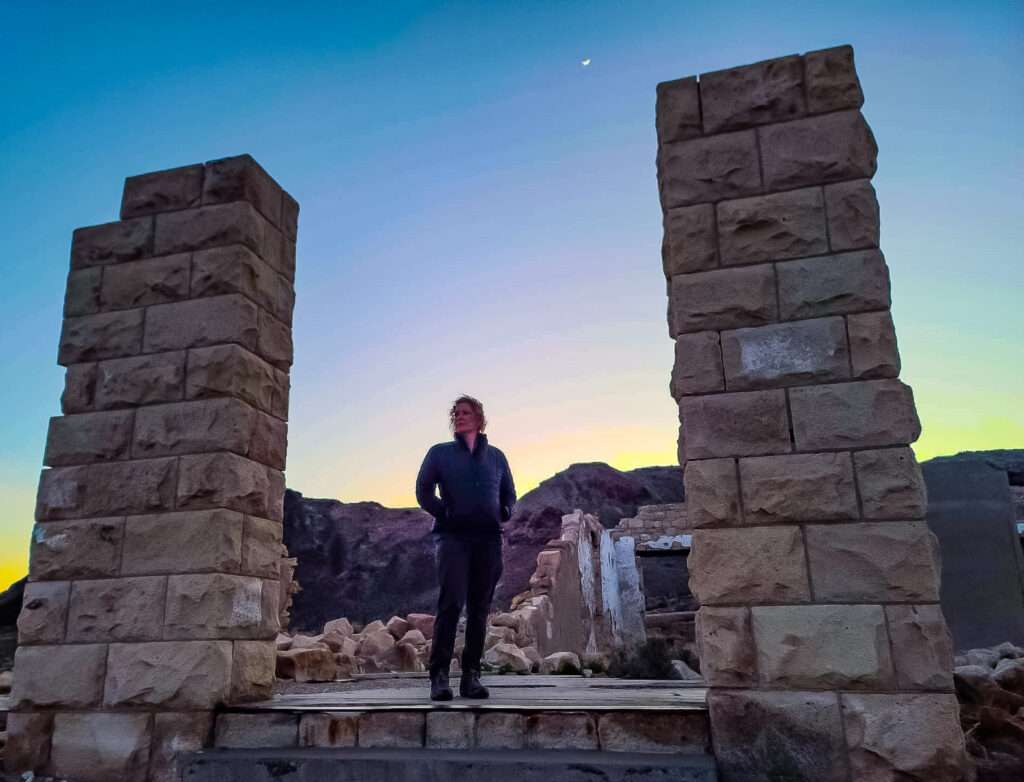
Beatty is known for two things, as a gateway to Death Valley and the ever-popular road trip stop, the Death Valley Nut and Candy Company. Travelers fill the hotel rooms at night but leave early the next day to continue their journey between northern and southern Nevada, or head into Death Valley National Park. Some visit the spectacular ghost town of Rhyolite, but otherwise, few explore the surrounding area. What many don’t realize is that ghost towns surround Beatty, enough to keep you exploring for days.

Ghost Towning
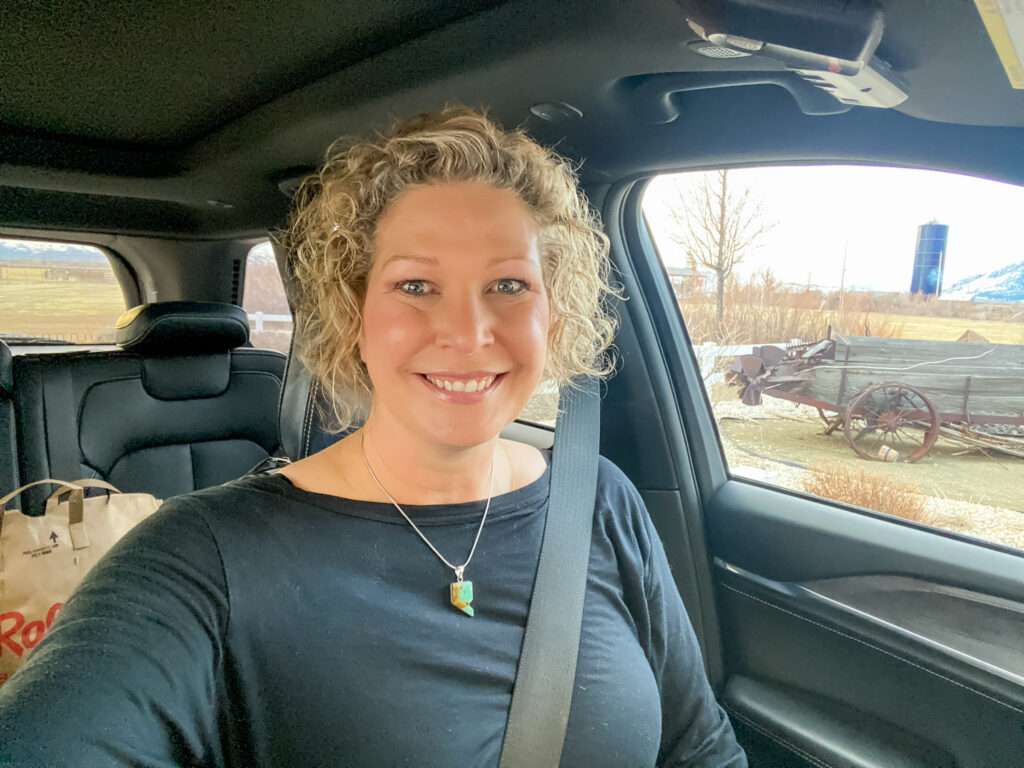
(Austin, Nevada, to clarify!)
After a long winter, I was ready to get out and explore. Austin of Nevada Expeditions had the week off and called to ask if I wanted to go on a trip. My week was free, and the family almost shoved me out of the house. We decided to head south as northern Nevada has been like Hoth, the ice planet from Star Wars. Beatty would make a great base as neither of us had spent much time in the surrounding area.

On the way to and from Beatty, we visited ghost towns and historic sites along the way. We visited so many locations, I broke the trip into two sections, Beatty Ghost Town Bound, covers the trip on Highway 95.
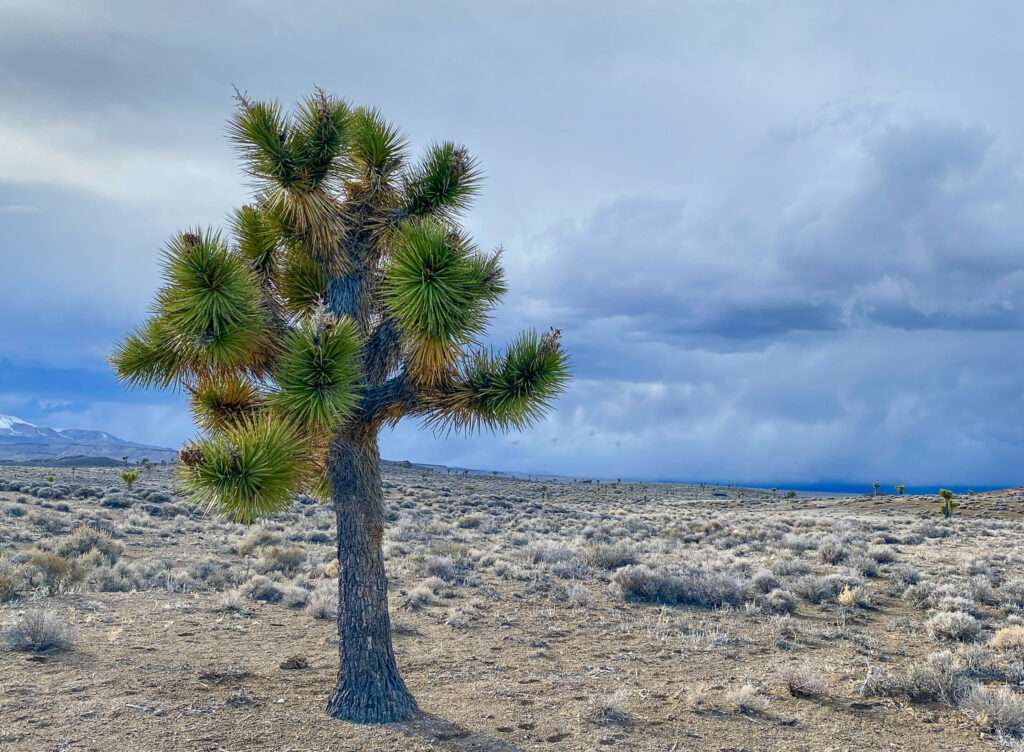
After narrowly escaping the breaking storm in outside of Goldfield, we made out way to our home away from home, the Death Valley Inn. The hotel was a great base for our travels. We headed to bed early to begin our explorations.
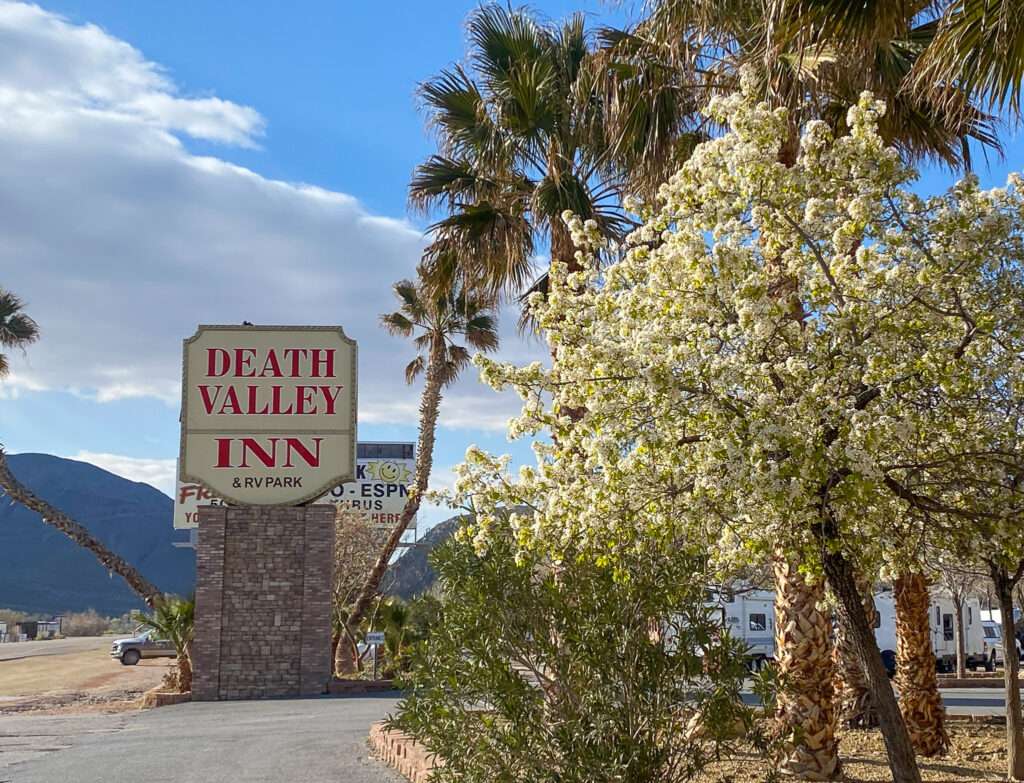
The next morning we grabbed goodies from the hotel breakfast and headed out.
Bullfrog Mining District
The Bullfrog Mining District encompasses most of the area around Beatty. The district is well, bullfrog-shaped, with Beatty at the heart. Between 1907 and 1910 the district produced an astonishing $1,687,792, over $53 million in 2023 terms.

With the Comstock Bonanza, over 60,000 people moved to Virginia City and surrounding areas. The rich ore funded the Civil War and Nevada was granted statehood and became known as the Battle Born state. Following the Civil War and the mining bust, Nevada’s population decreased to 40,000. Some even proposed to remove Nevada’s status as a state and return it to a territory. The Bullfrog district, Tonopah, and Goldfield pulled Nevada out of the thirty-year depression.
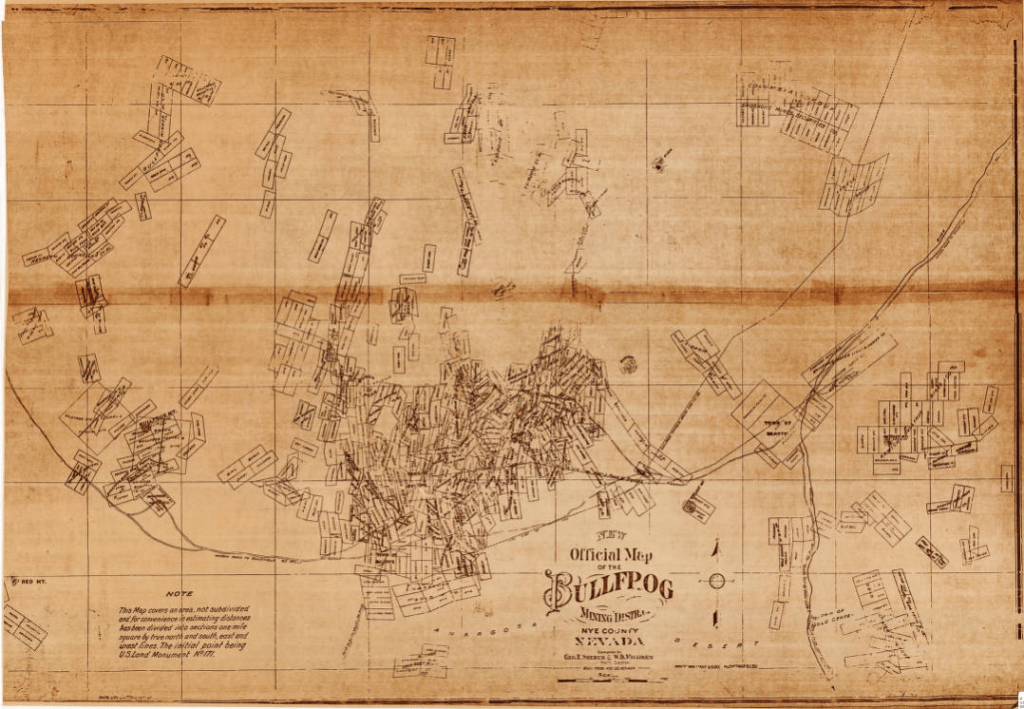
Gold was discovered in the Bullfrog district on August 9, 1904, and the rush was on. Towns sprung up over the region. Many were relocated as new strikes were found. It is said that someone could leave for a few days, and when they returned, the entire town was in a new location.
I’ve seen many gold rushes in my time that were hummers, but nothing like that stampede
Shorty Harris

(Photo credit: Legends of America)
The Bullfrog boom didn’t last a decade and soon the area, well, croaked. By 1910, the largest town, Rhyolite, was struggling to survive. Beatty withstood the test of time, but most towns faded into the Nevada desert as the mines played out. Rhyolite hung on until 1919 when postal service was transferred to Beatty.
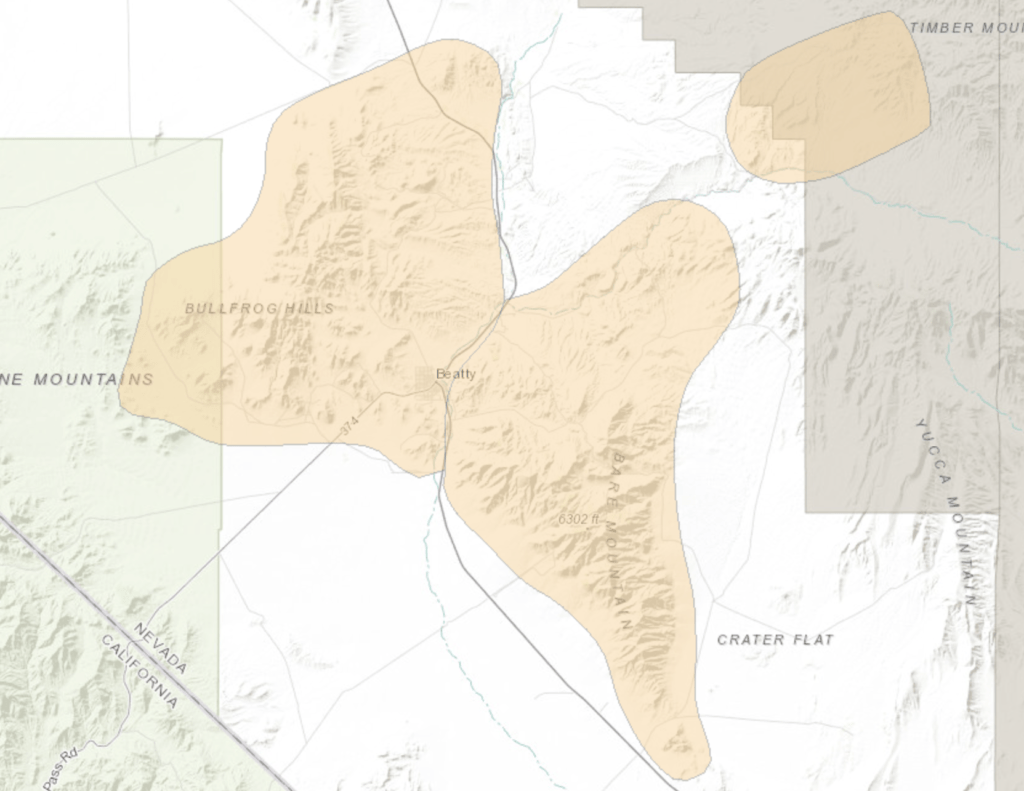
Nevada Bureau of mines and geology
The boom-to-bust cycle and relocation of towns mean the Bullfrog district is rich in another resource, ghost towns. Below are the sites we visited, but even in three days we couldn’t visit them all.
Fluorspar Mine
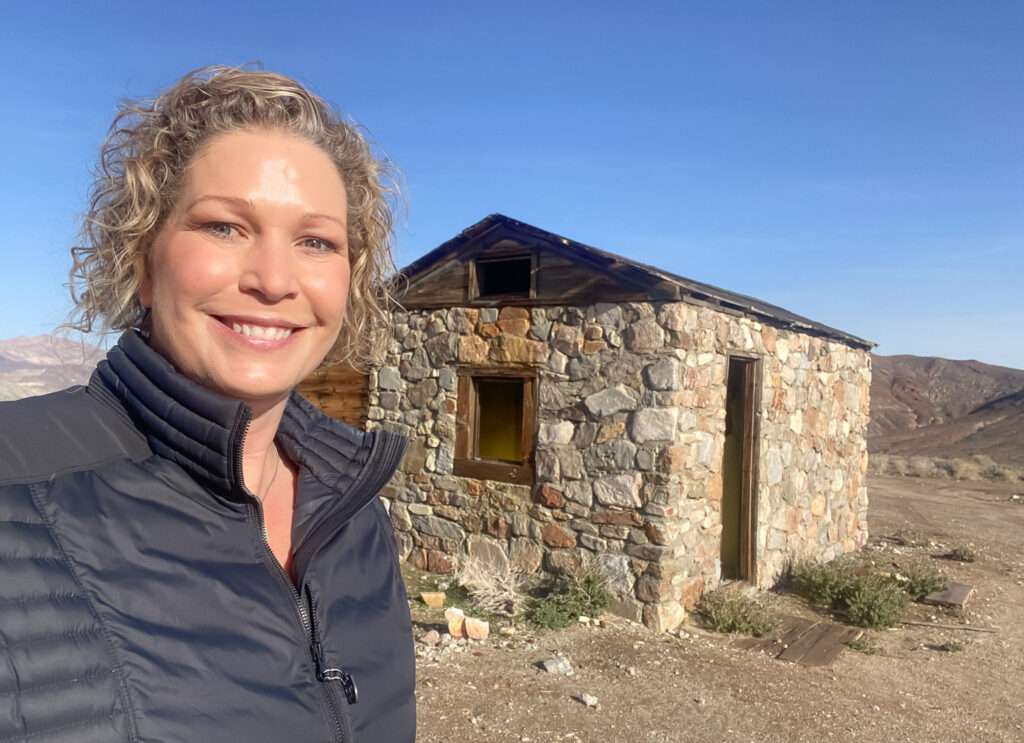
The Fluorspar mine was a great start to our first day. The cabin is in amazing condition.

Fluorspar Mine was founded in 1918. The mine was one of Nevada’s largest producers of fluorspar. The mineral has multiple uses, including lapidary work, optics and manufacturing products, refrigerants, aluminum and gasoline. In 1923, a mill began processing ore in Beatty. The mill expanded into the 1940s. The mine was active until 1984.
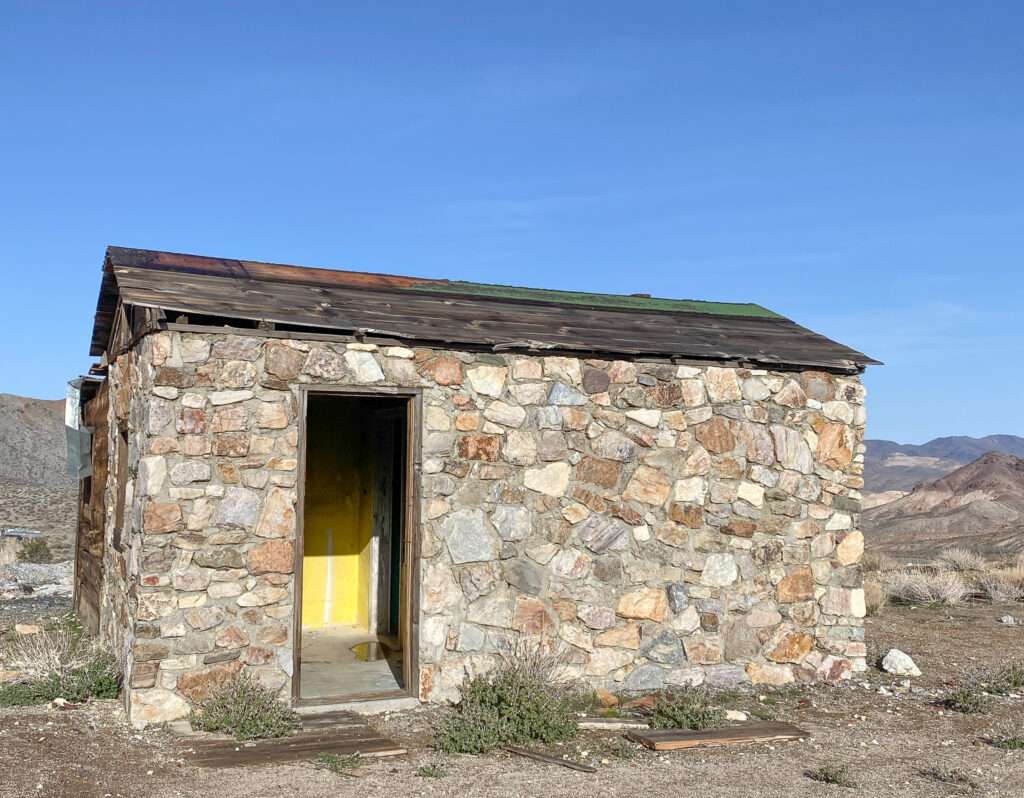

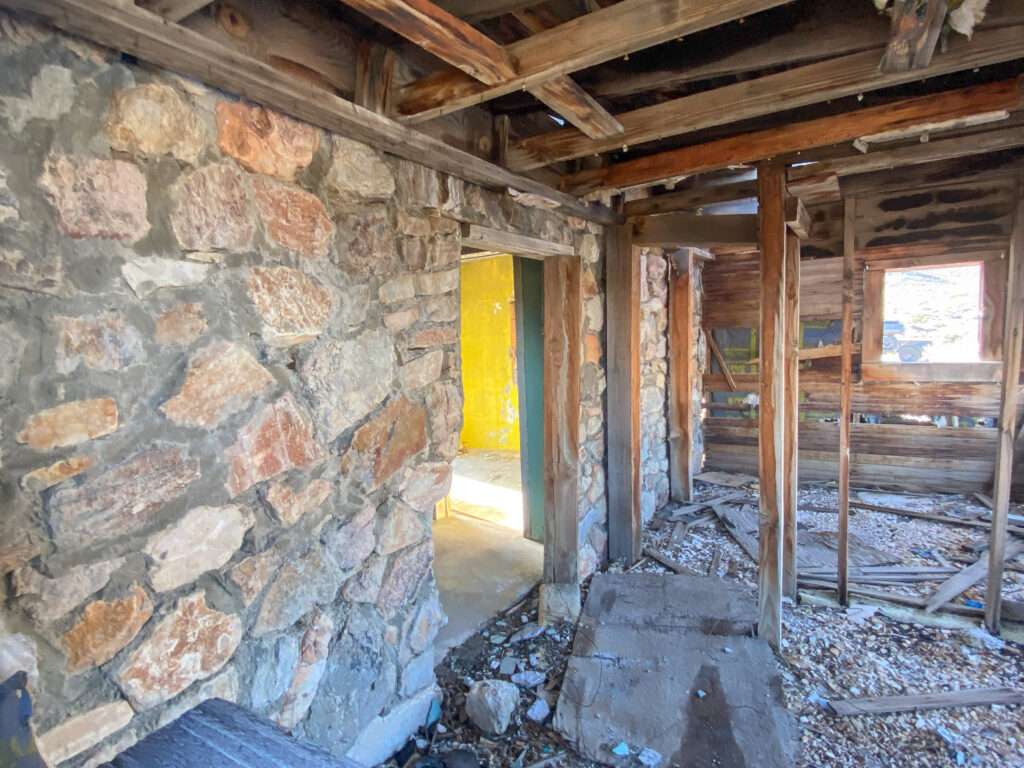
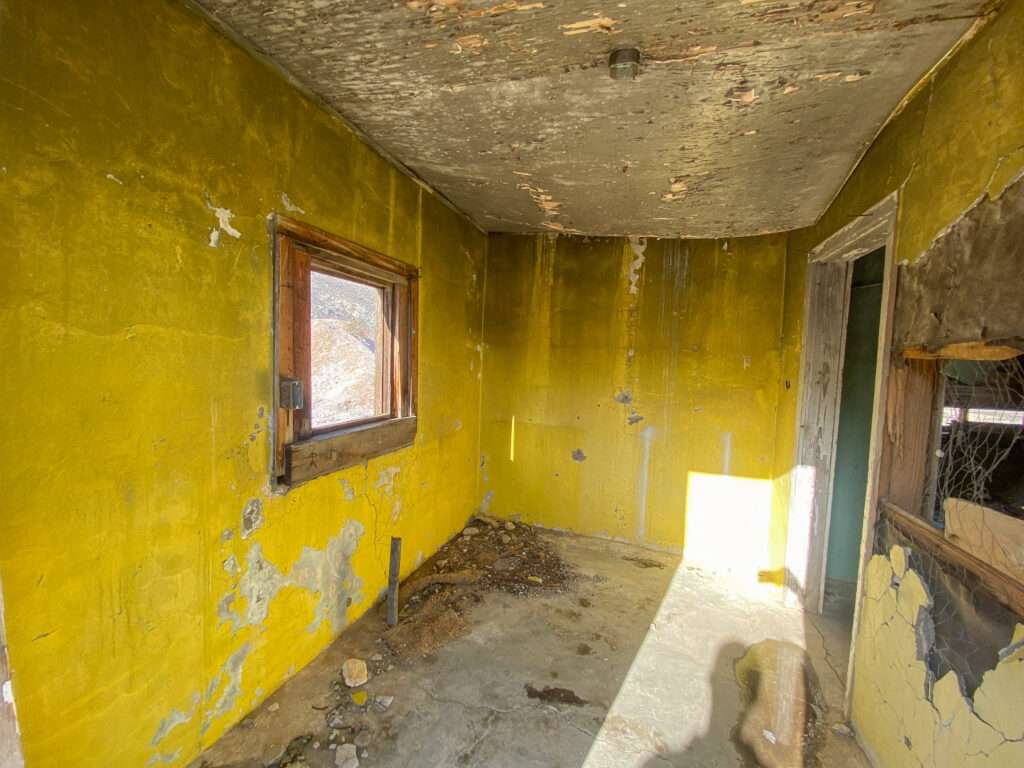
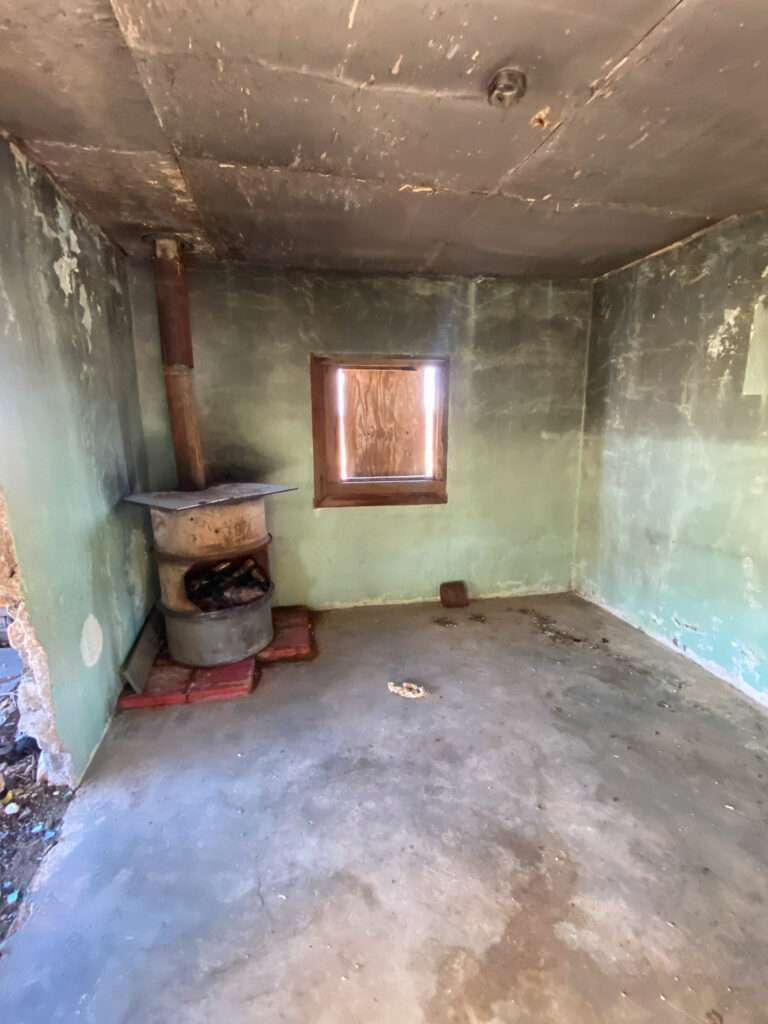
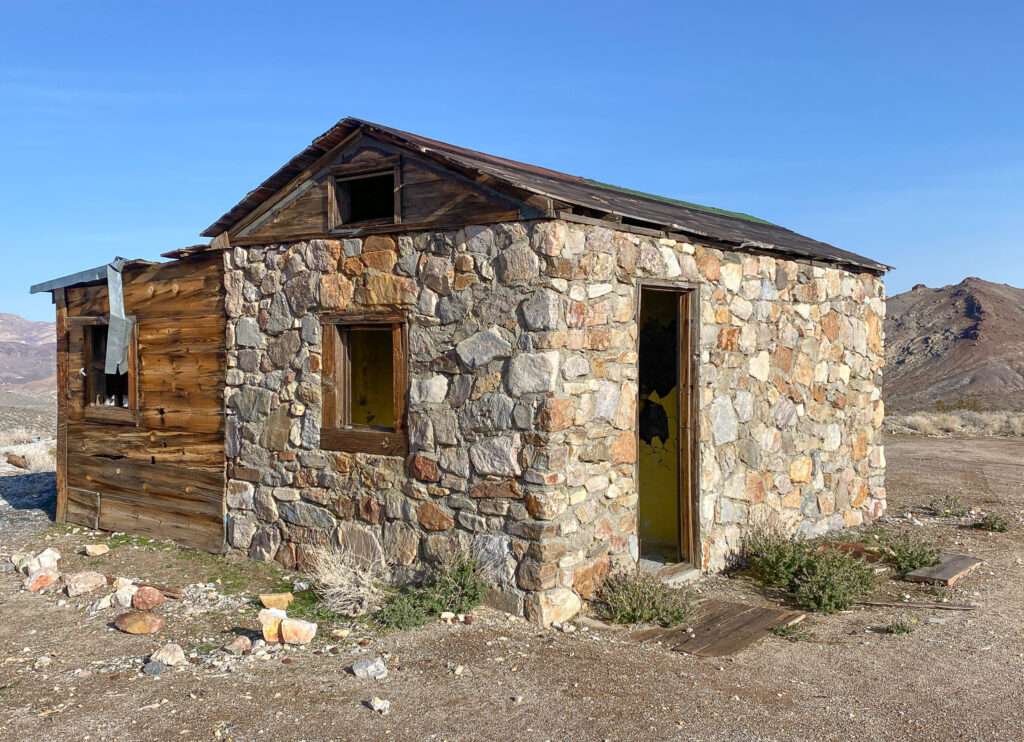
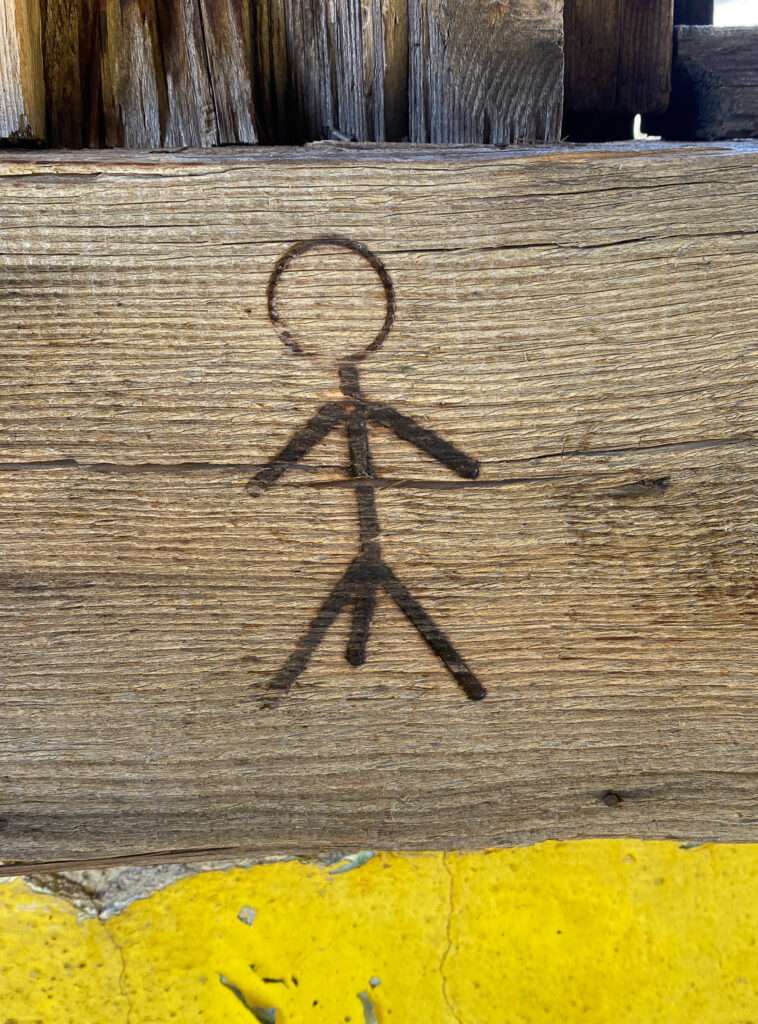
Telluride
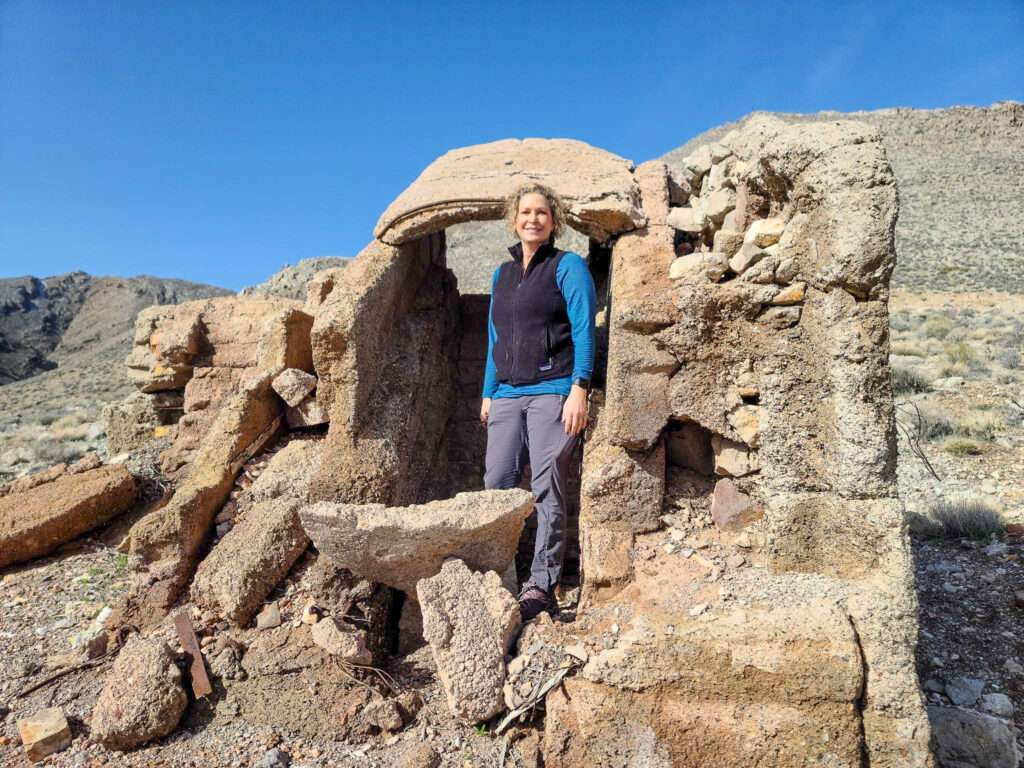
Telluride was established in 1908 following the discovery of gold. A townsite was laid out but never grew large enough for a post office, and the population peaked at twenty-five.
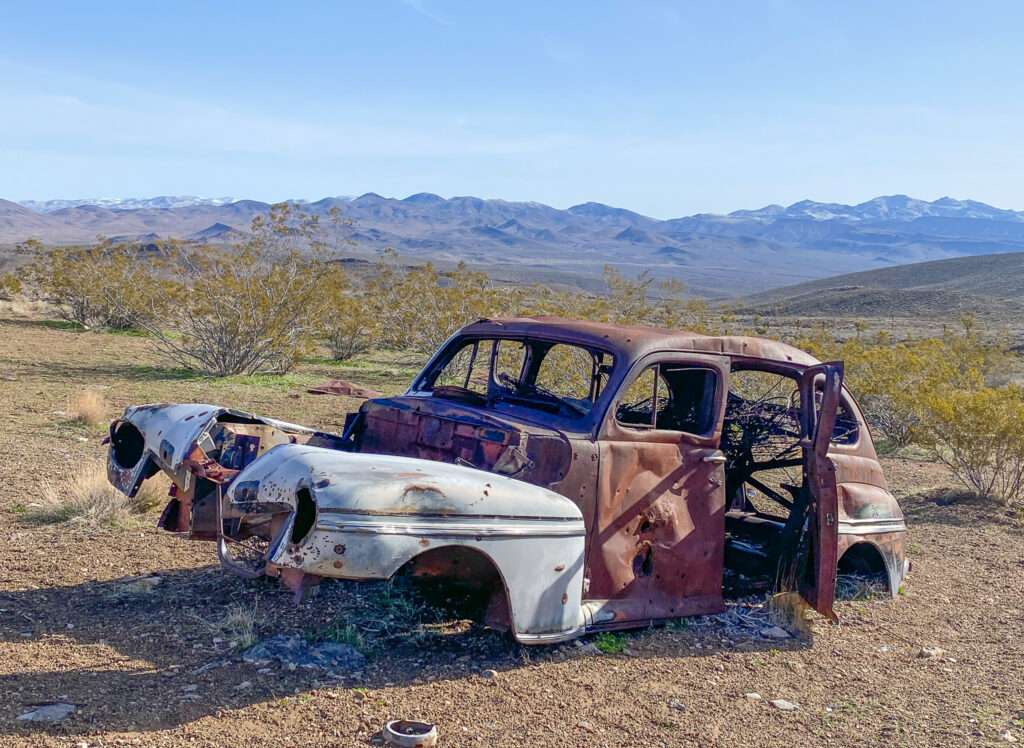
Mercury was discovered, and in 1912 the Telluride Consolidated Quicksilver Mines Company built a furnace and tramway. The facility remained active for four years. In 1931, when George Wingfield purchased the mining claims, but they were not profitable and production was discontinued in 1932.

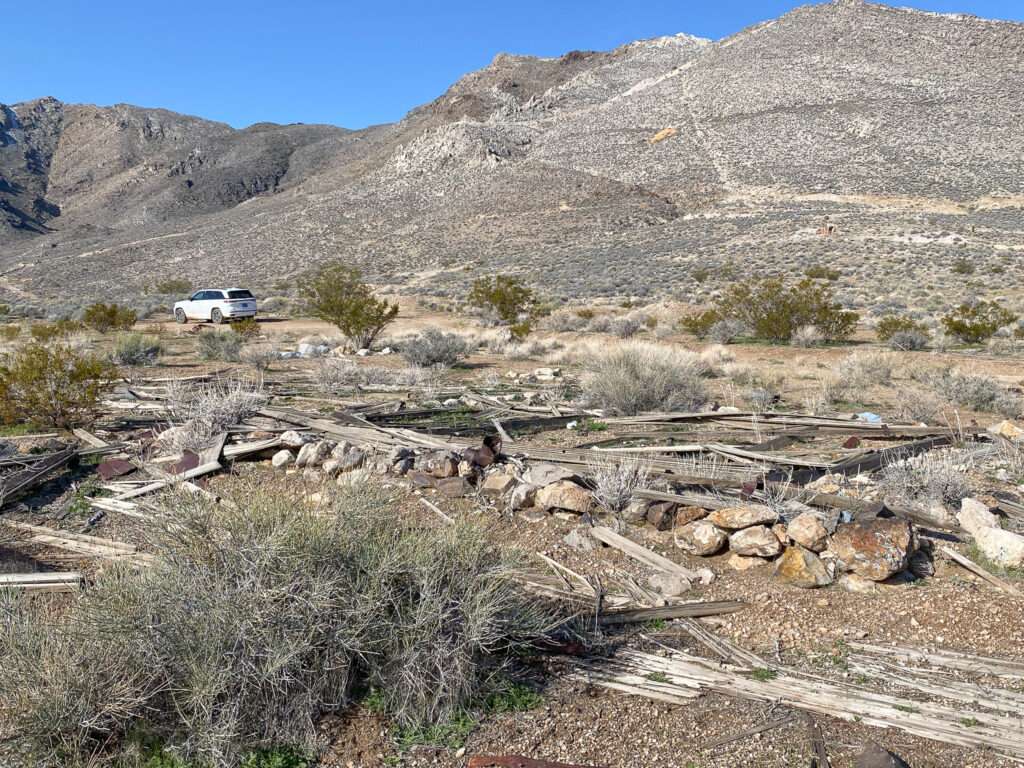
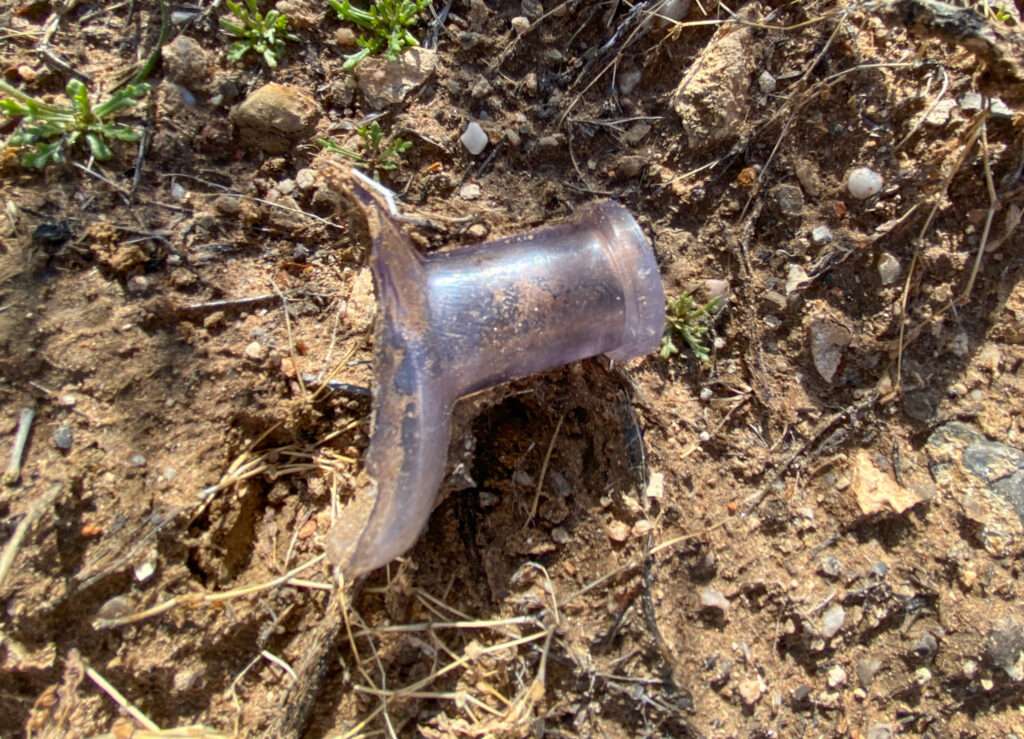
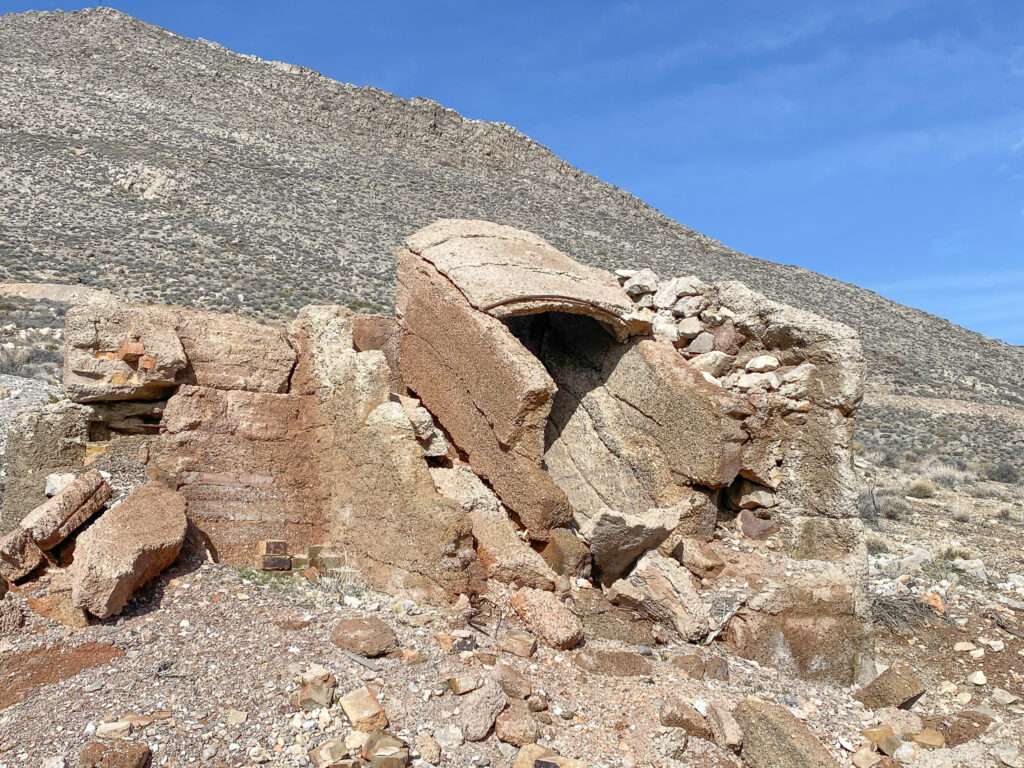

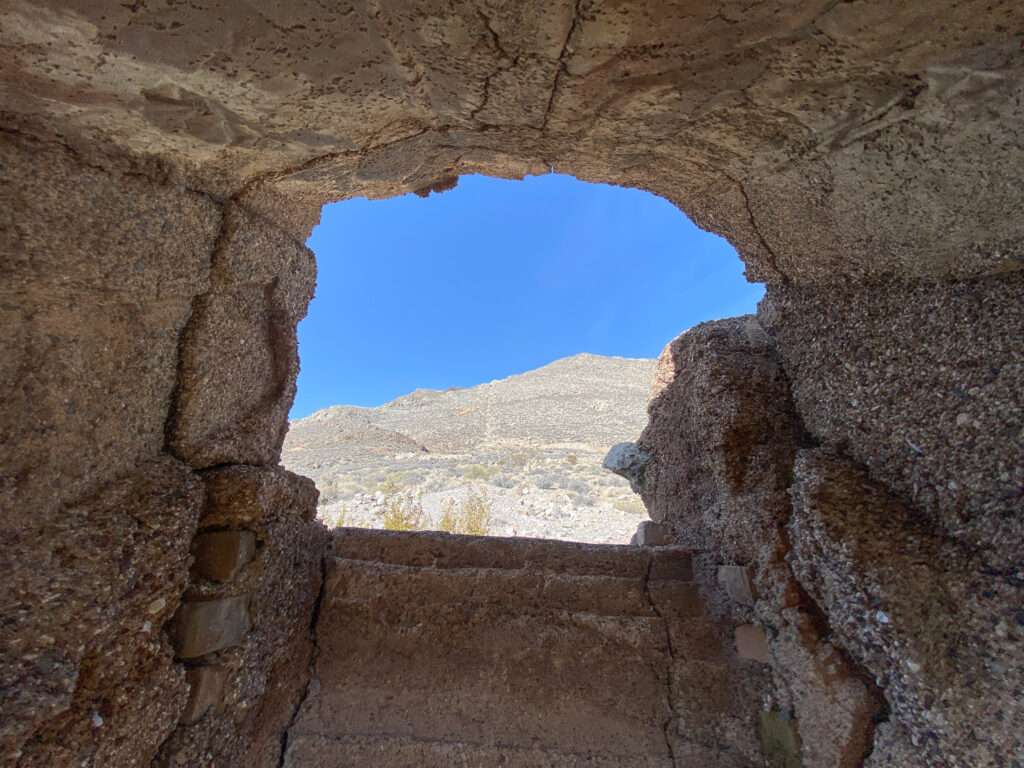
Beatty
Having a centralized home base means you can make shorter trips. This allows you to secure supplies in town and use the, ahem, facilities. Each trip through town, we visited another historic site and picked up food and supplies.
Happy Burro Hostel
The building was moved from Rhyolite around 1907 as a “hotel brothel.”
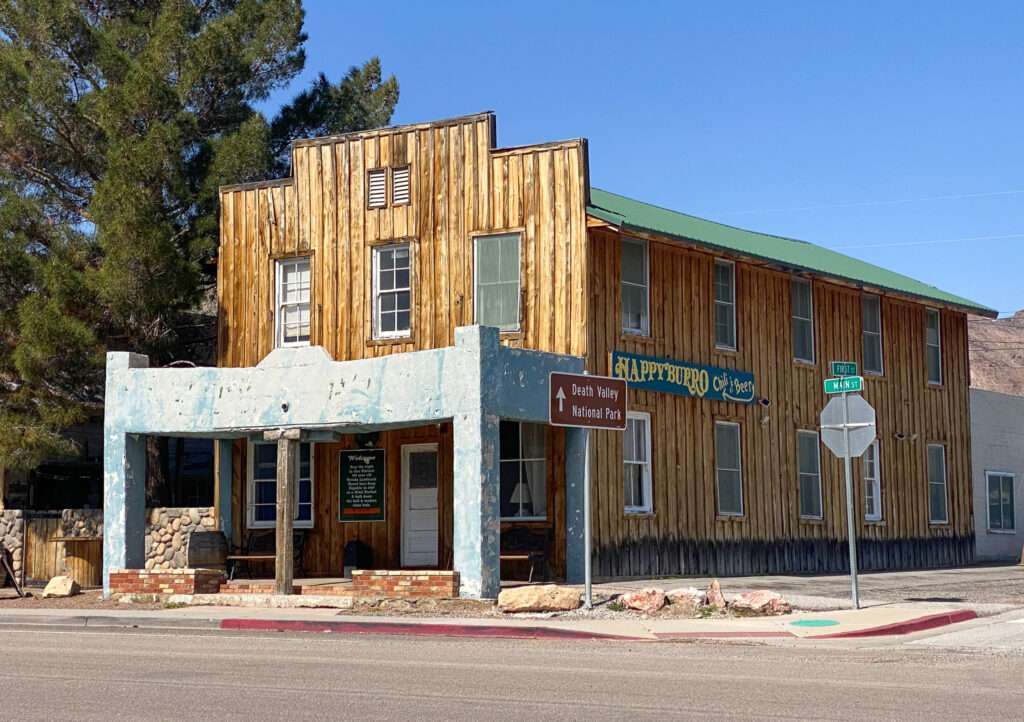

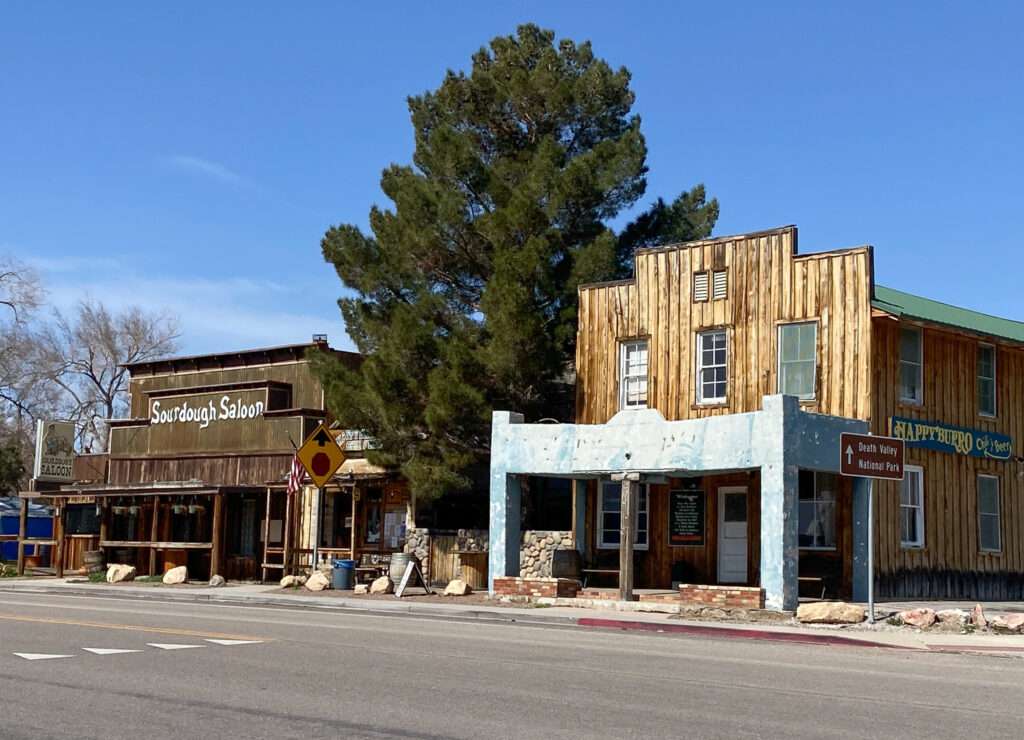
Beatty Schoolhouse
The Beatty School was built in 1928. The unique roof was relocated from the Rhyolite school.
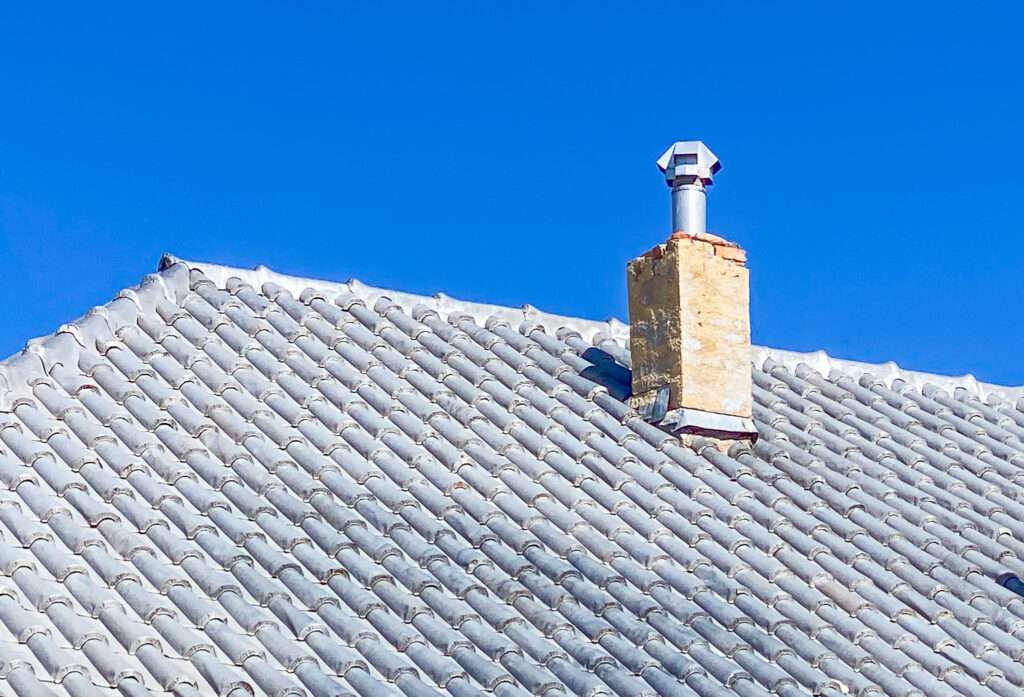
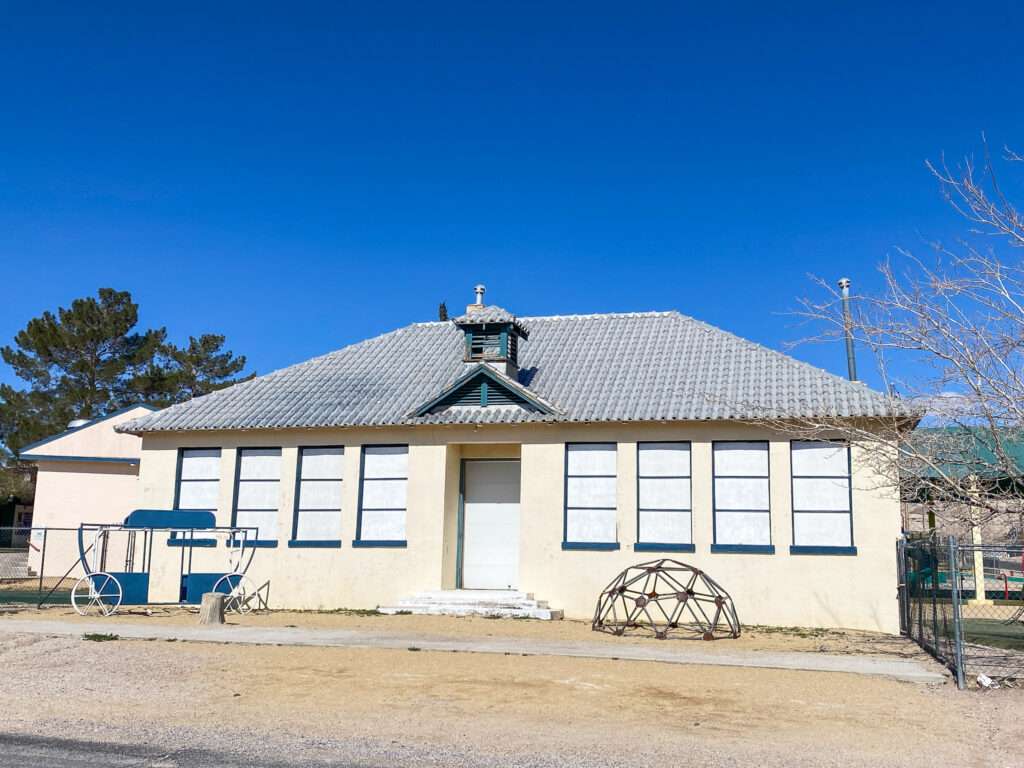
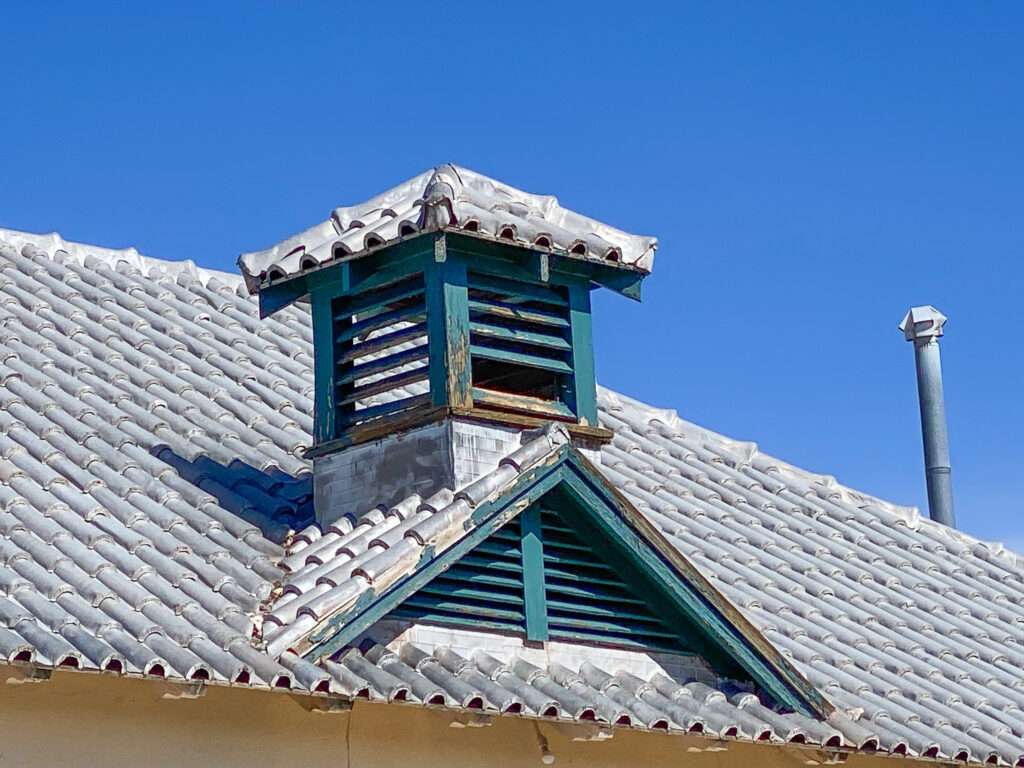
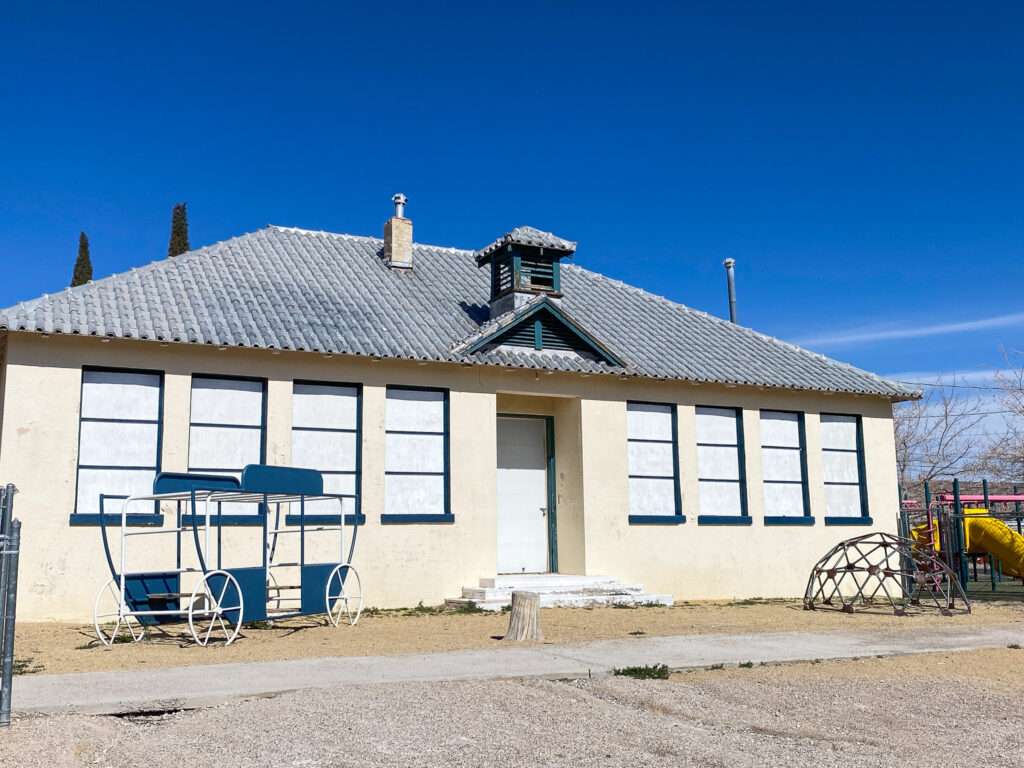
Beatty Ice House
The Levy Ice & Bottling Plant was built in 1905. It was used for ice, bottling and cold storage.

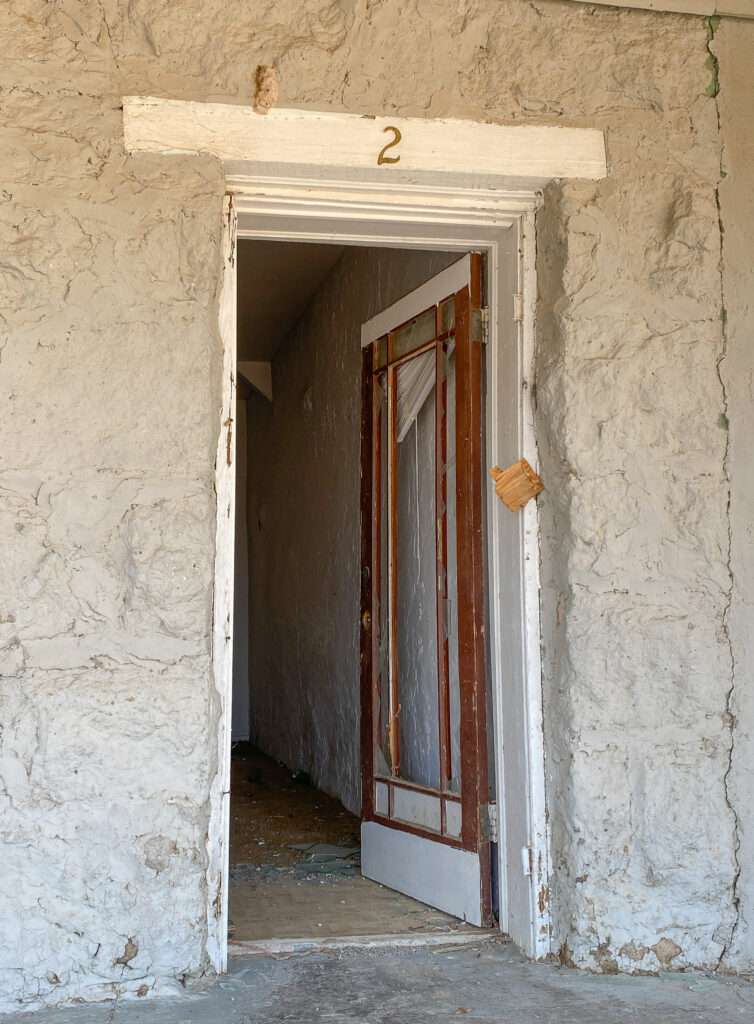
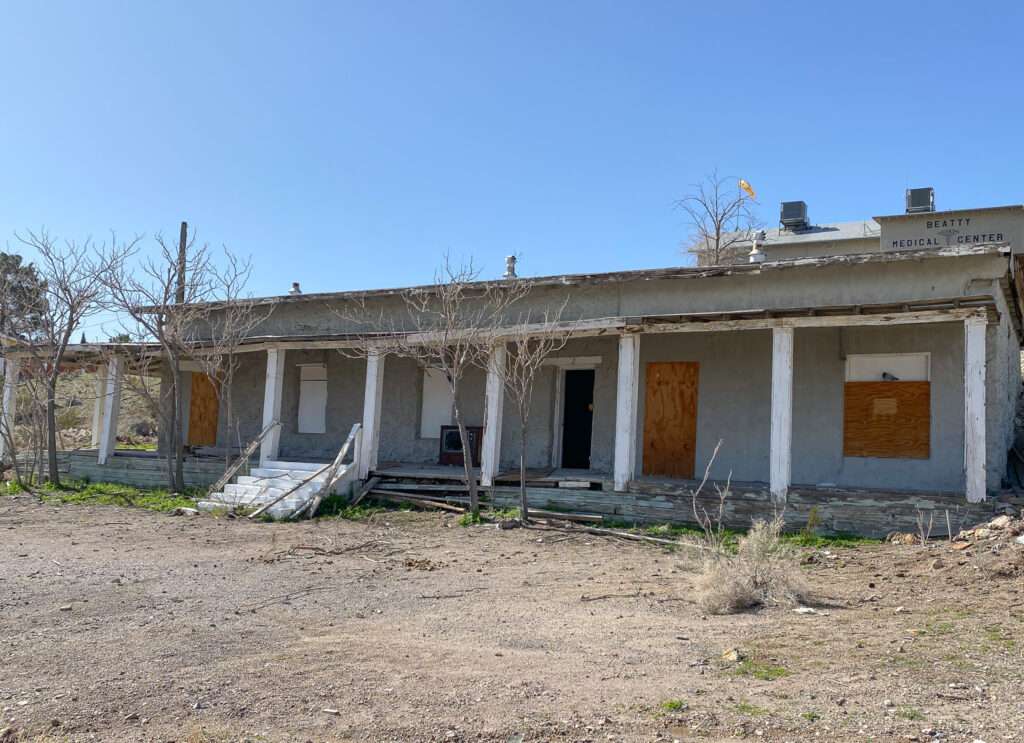
Hess Laundromat

Sourdough Saloon

Hope and Beyond Hope Streets
Do you have Hope or are you Beyond Hope?
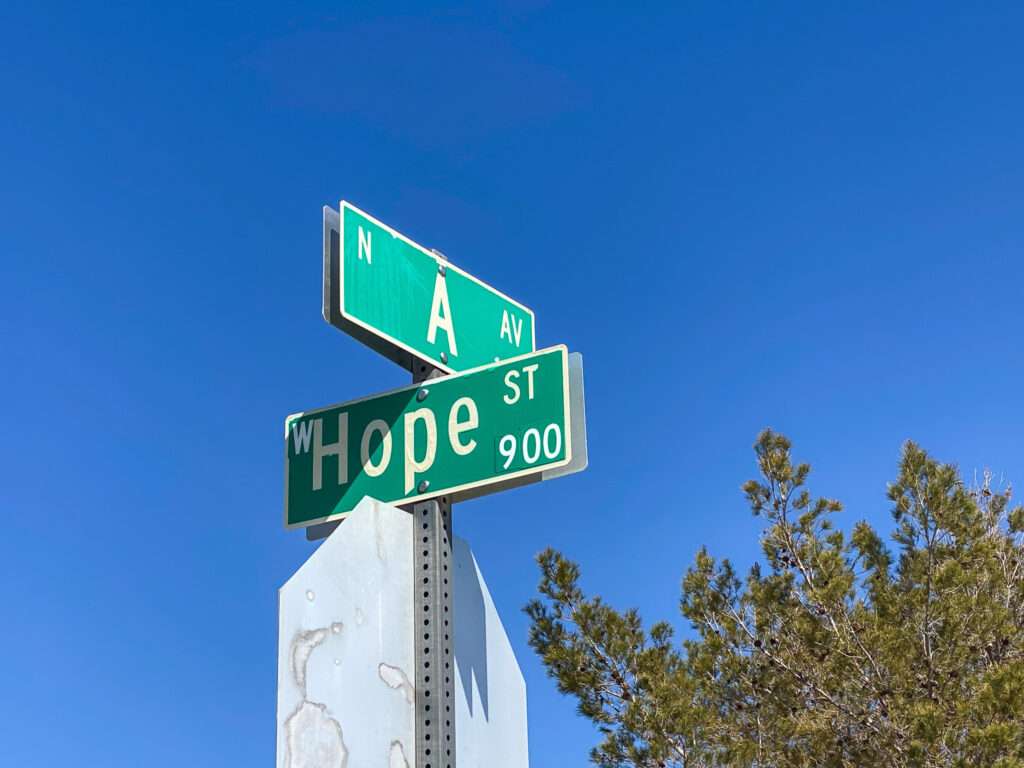
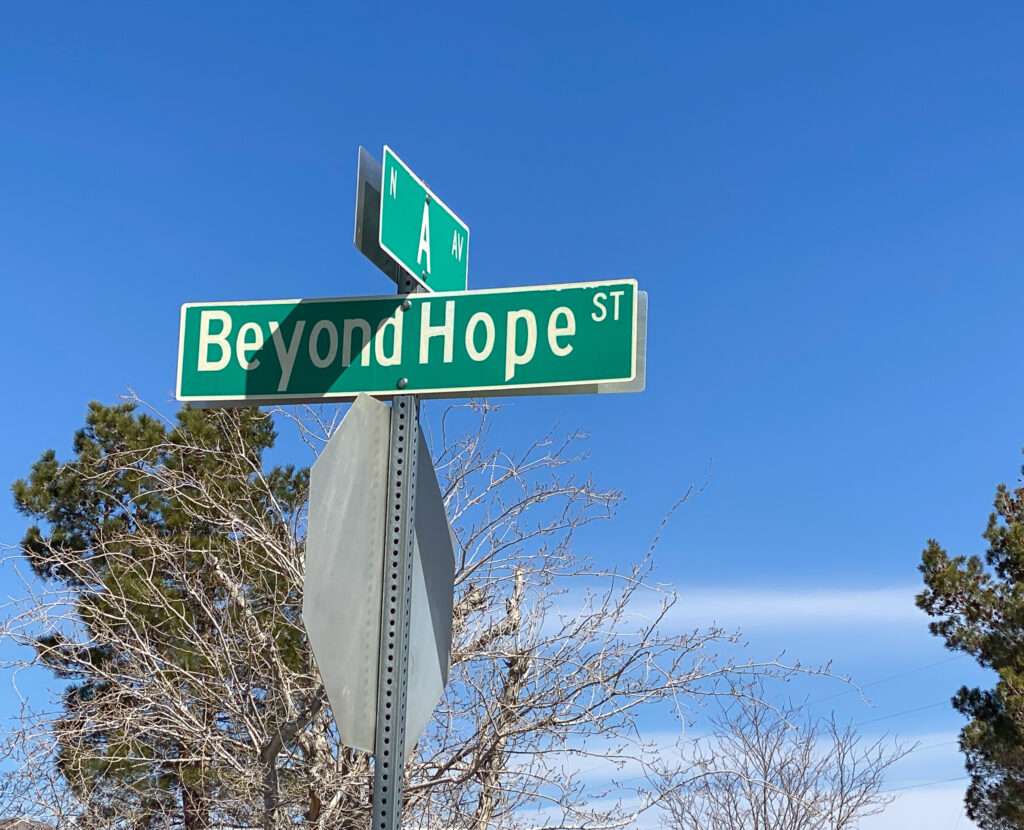
Beatty House
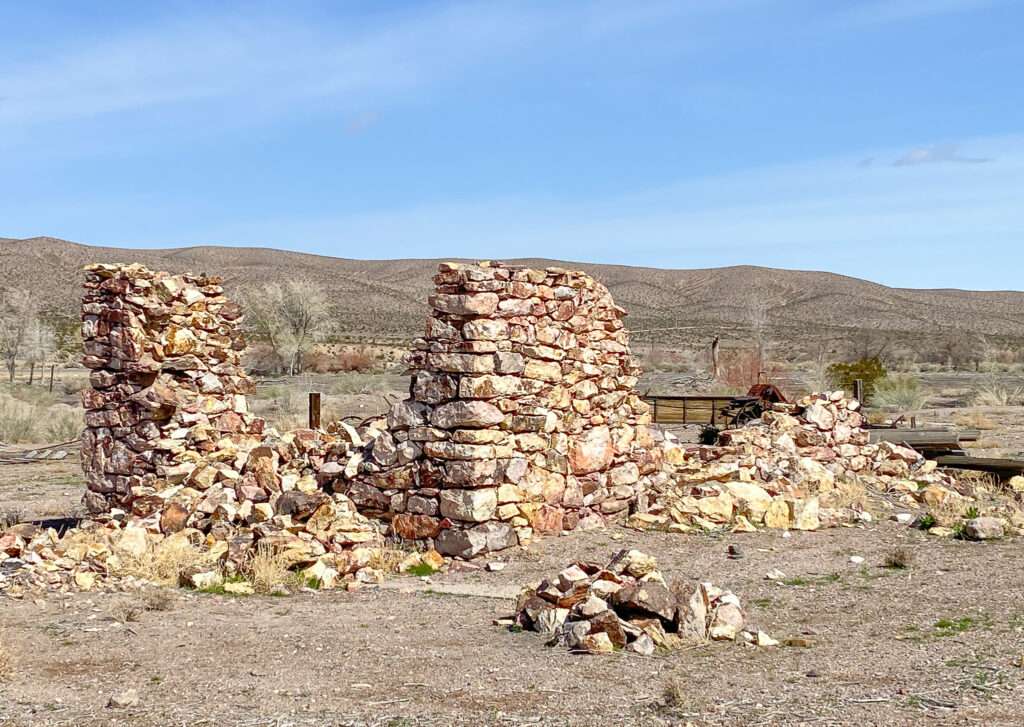
At the north end of Beatty across from the Death Valley Nut and Candy Company is an old Ranch house.
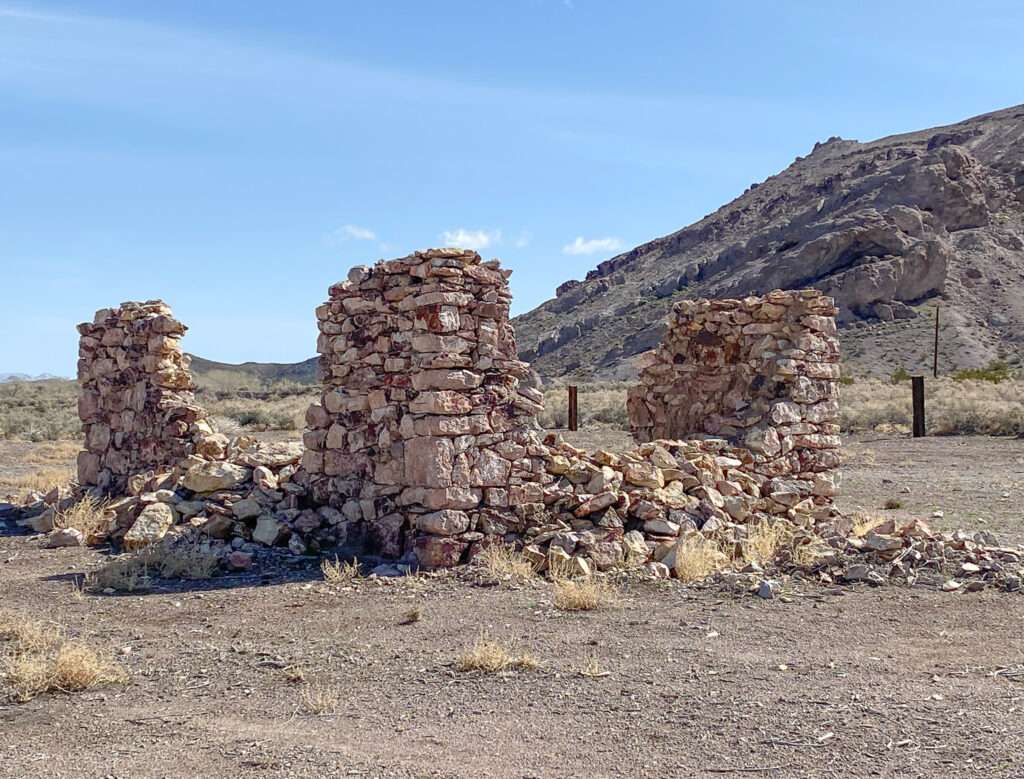
I am surprised not to find information on this cool site. My guess is it was an old ranch judging by the manure spreader.
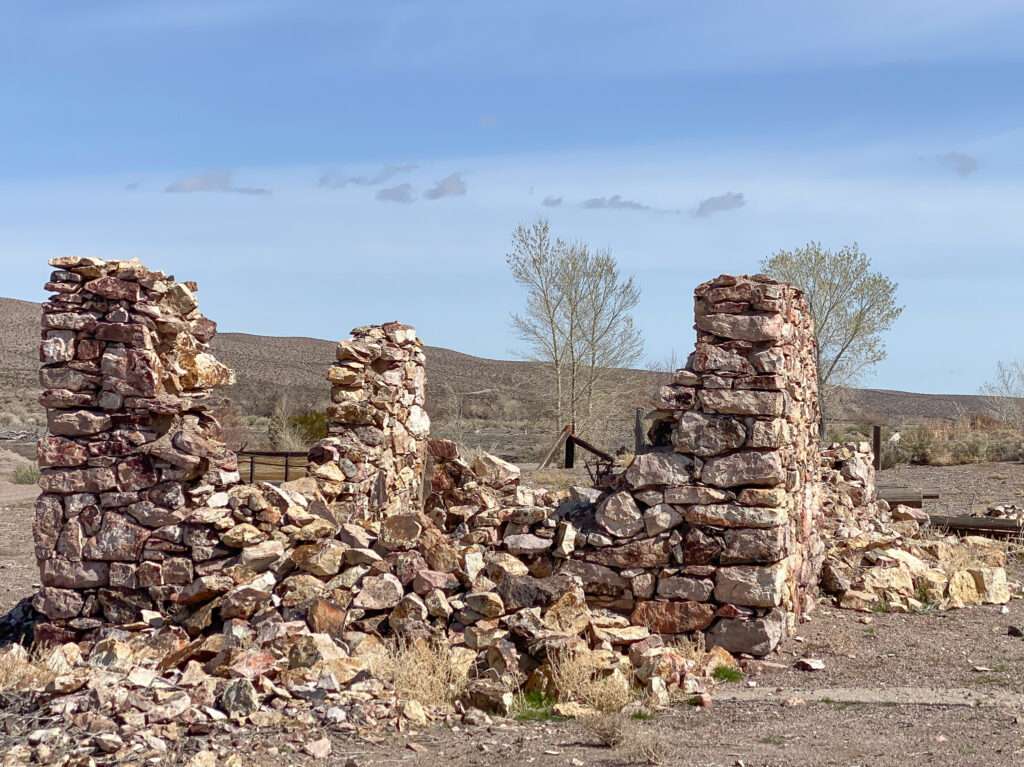
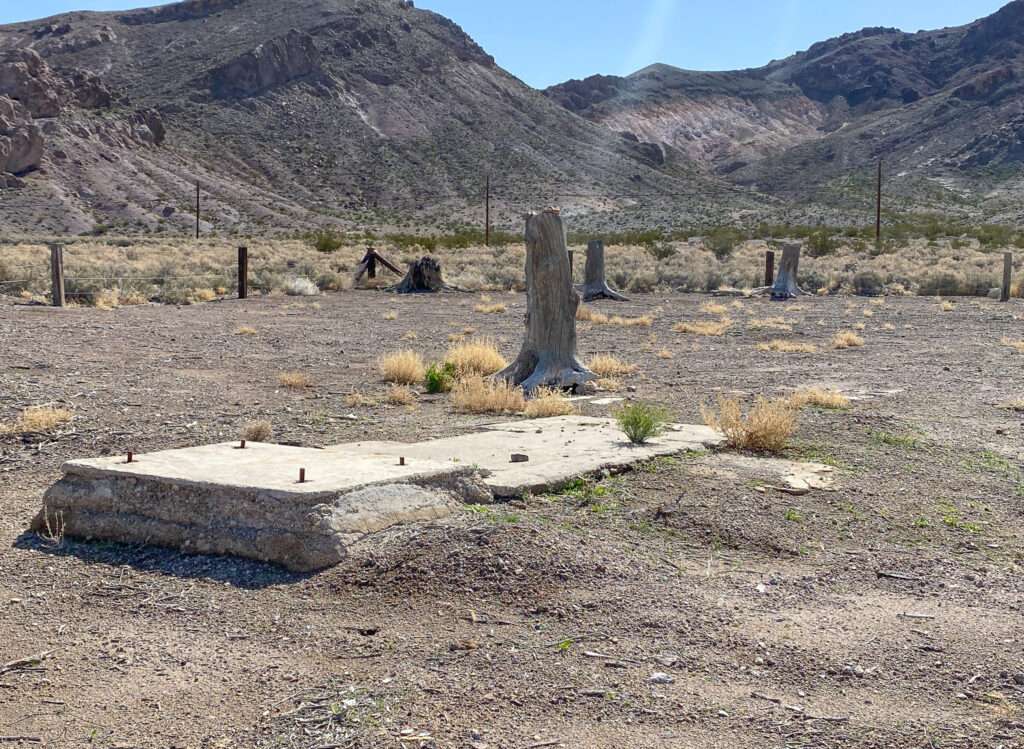
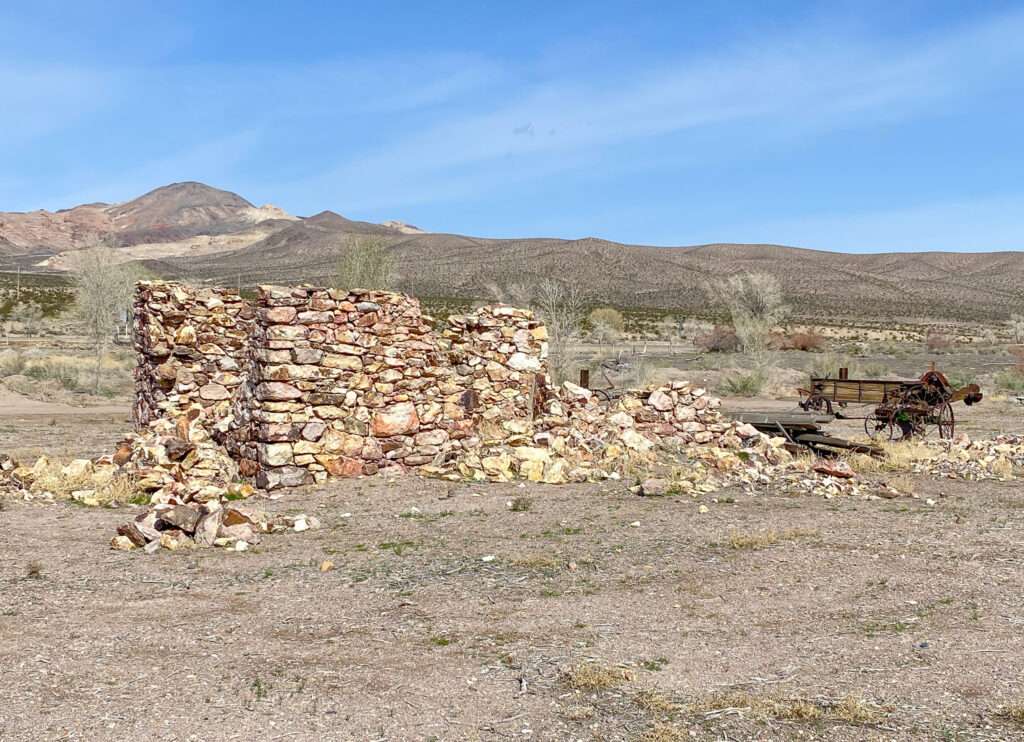
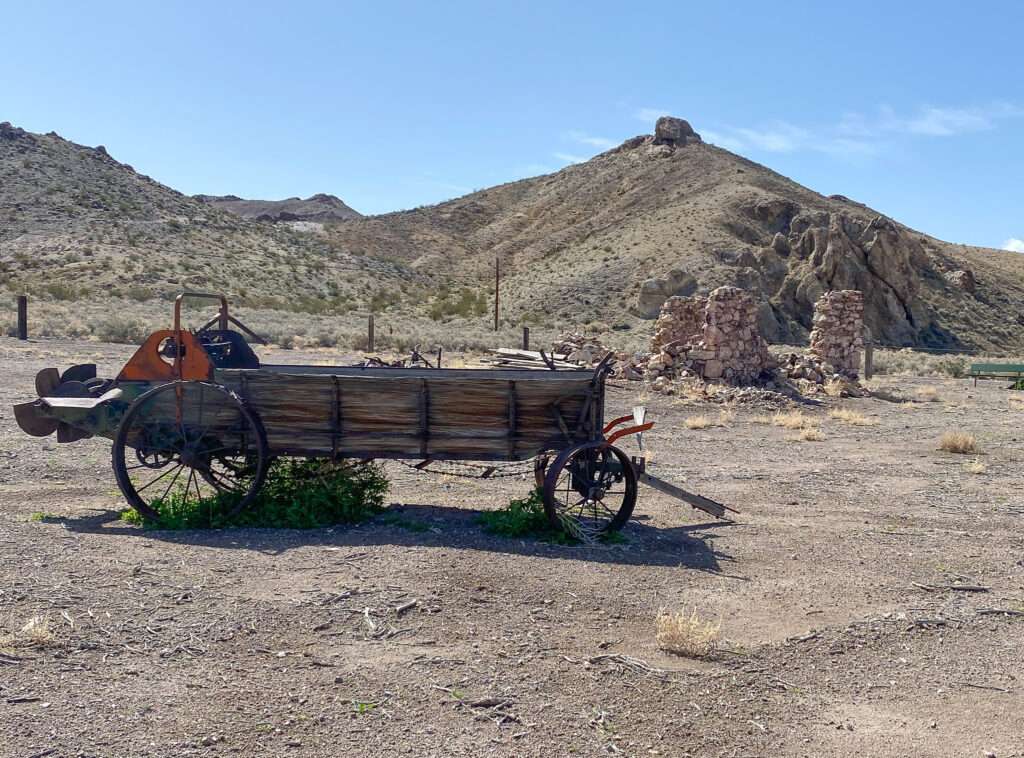
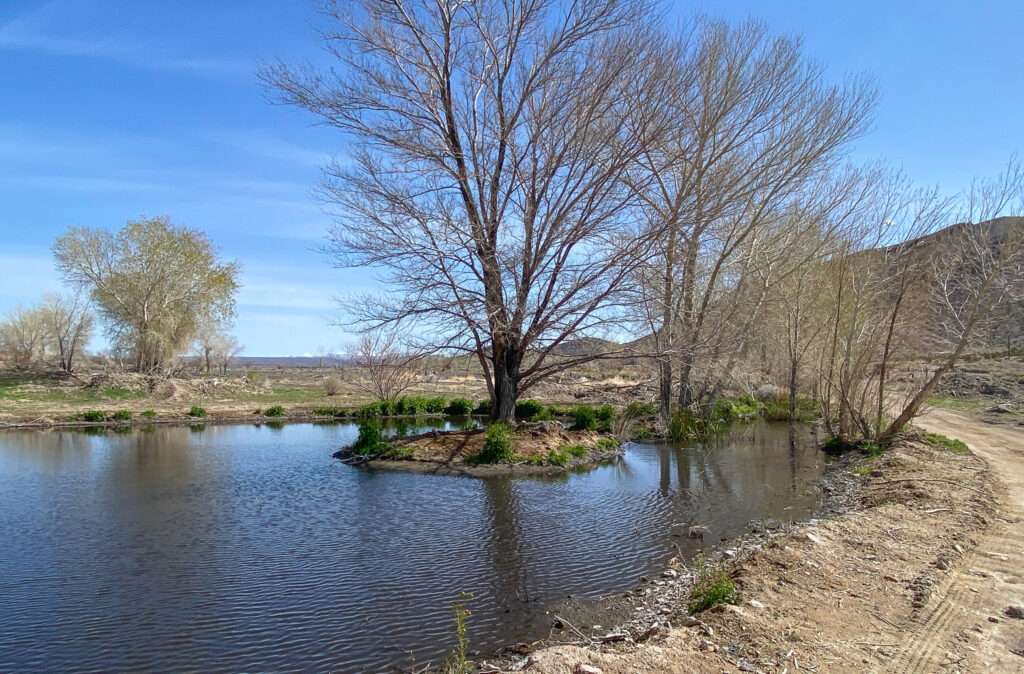
Pioneer & Mayflower
Grabbing Jed’s Jerky brisket sweet and spicy jerky for lunch (inside the Death Valley Nut & Candy Company), we headed north of Beatty to the ghost town of Pioneer.
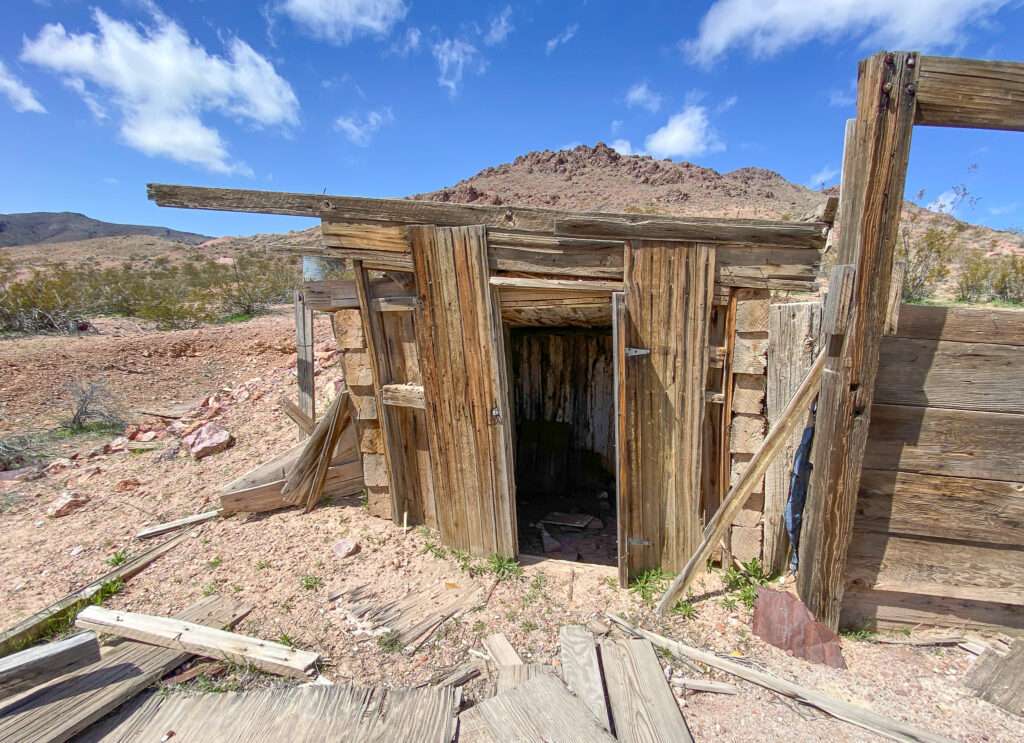
In 1906, the Bullfrog Mining & Water Company operated the Mayflower Mine. The facilities included an assay office and boarding house for workers. The prospectors discovered the Pioneer Mine just north of the Mayflower the following year.
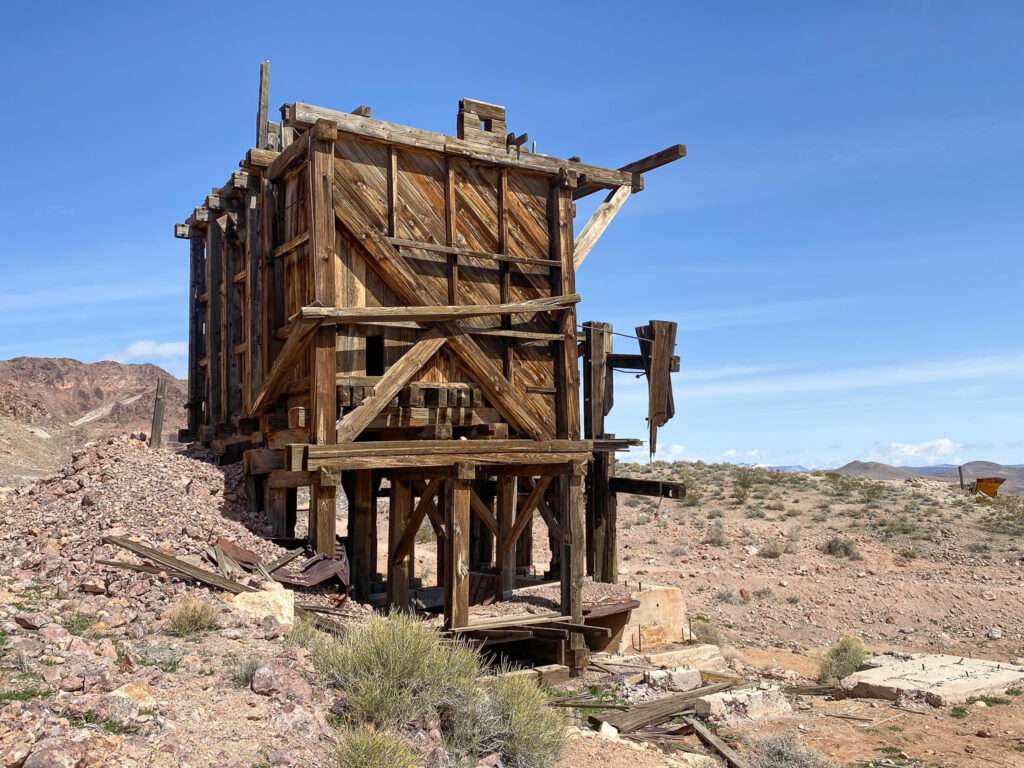
In 1908, The town of Pioneer grew between the two mines. The settlement contained two districts, upper and lower town. Pioneer was a thriving town with a population of around one thousand. The town had a large business district, including stores, hotels, restaurants, two newspapers, and a theater.
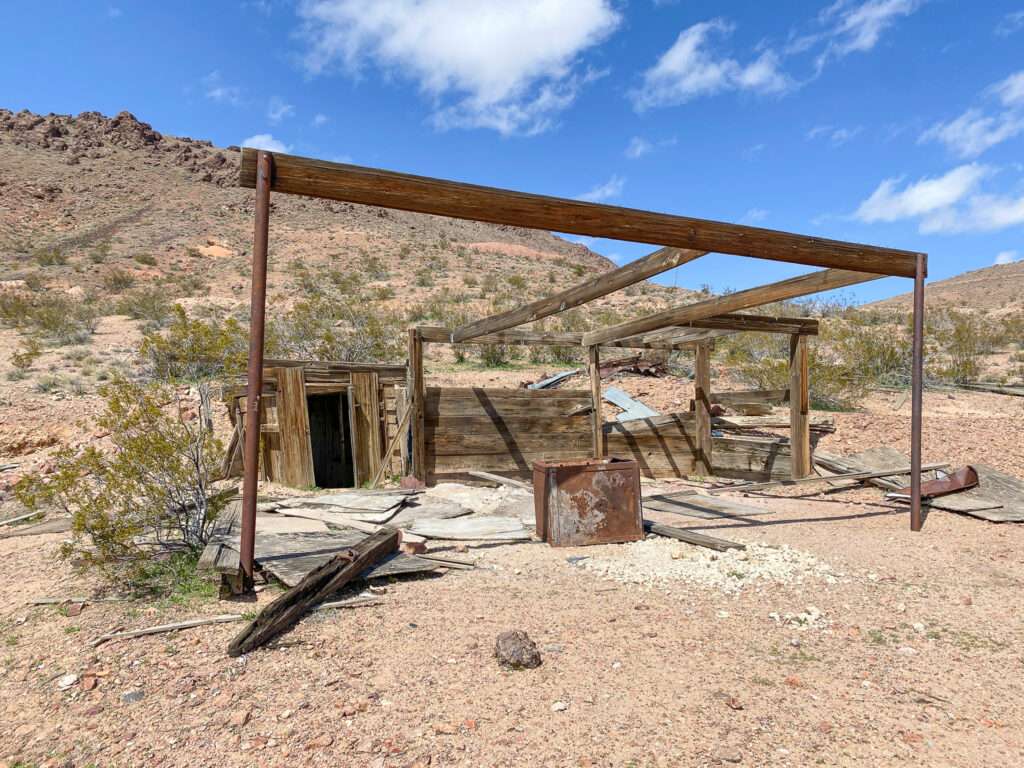
An auto line connected Pioneer to Rhyolite and Springdale. The Pioneer Mining & Townsite Company planned a rail spur to Springdale but never followed through. The town had a school and electricity.
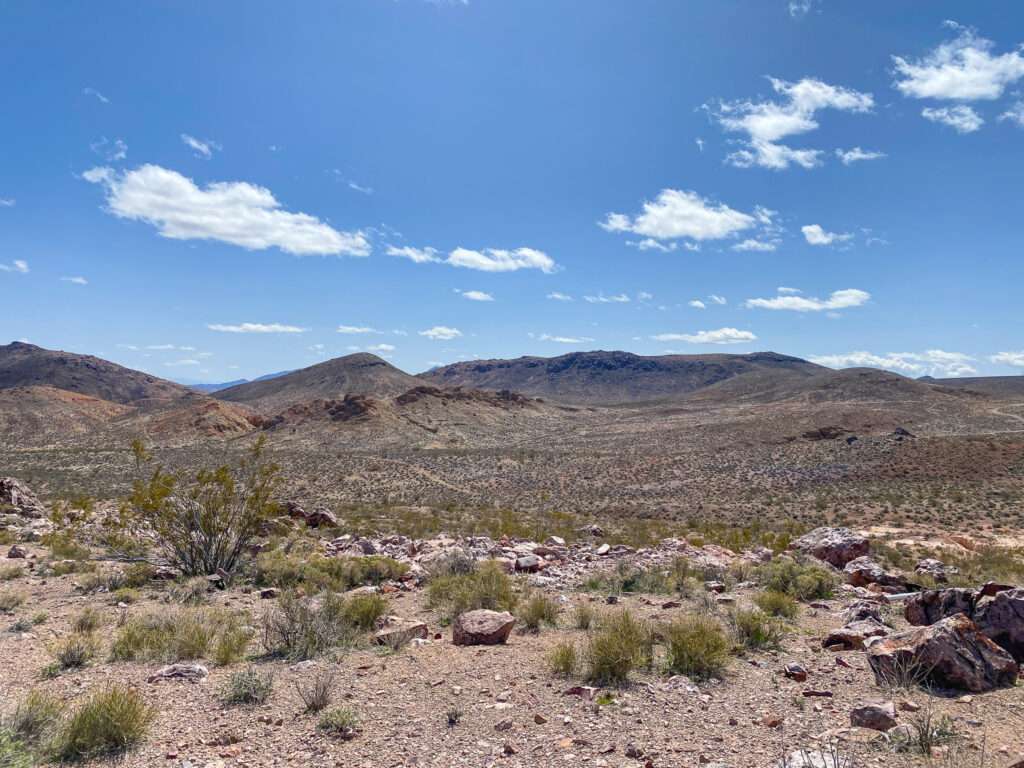
In May of 1909, a fire in Pioneer was spread by high winds, destroying the town’s wood buildings. Pioneer rebuilt but on a smaller scale. The mines continued to operate, but by 1911, the population had decreased to three hundred residents.
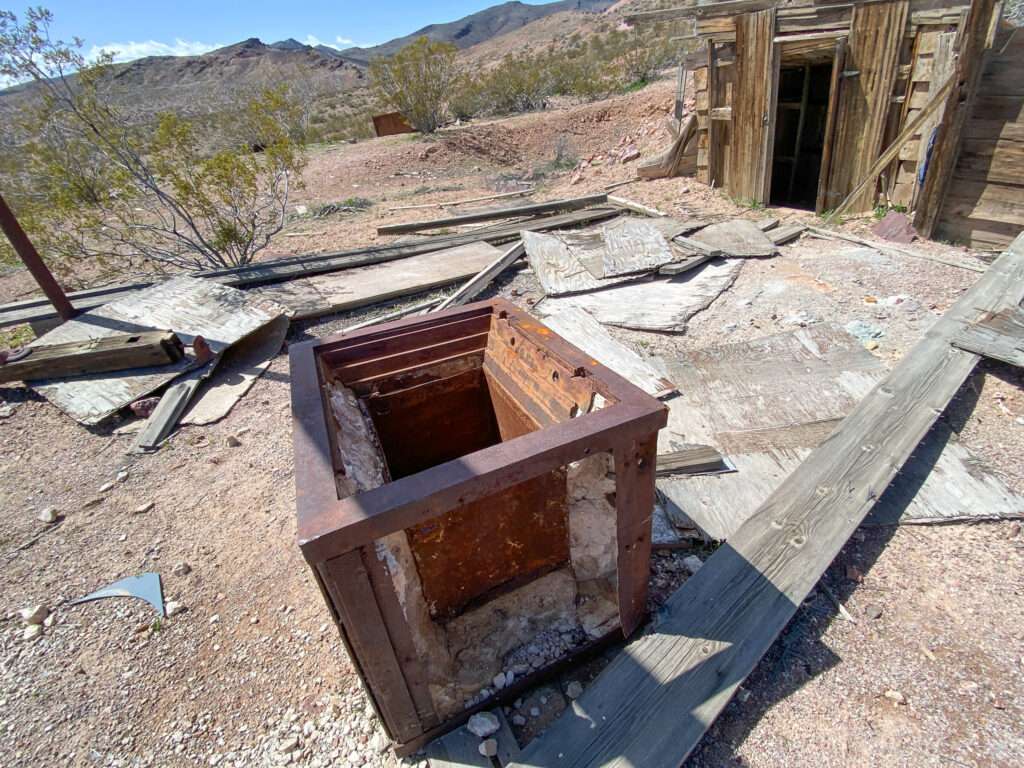
In 1913 Pioneer Consolidated Mines Company added a 10-stamp mill and 30-ton cyanide mill. The mines faced multiple management issues, collapse, and legal disputes.

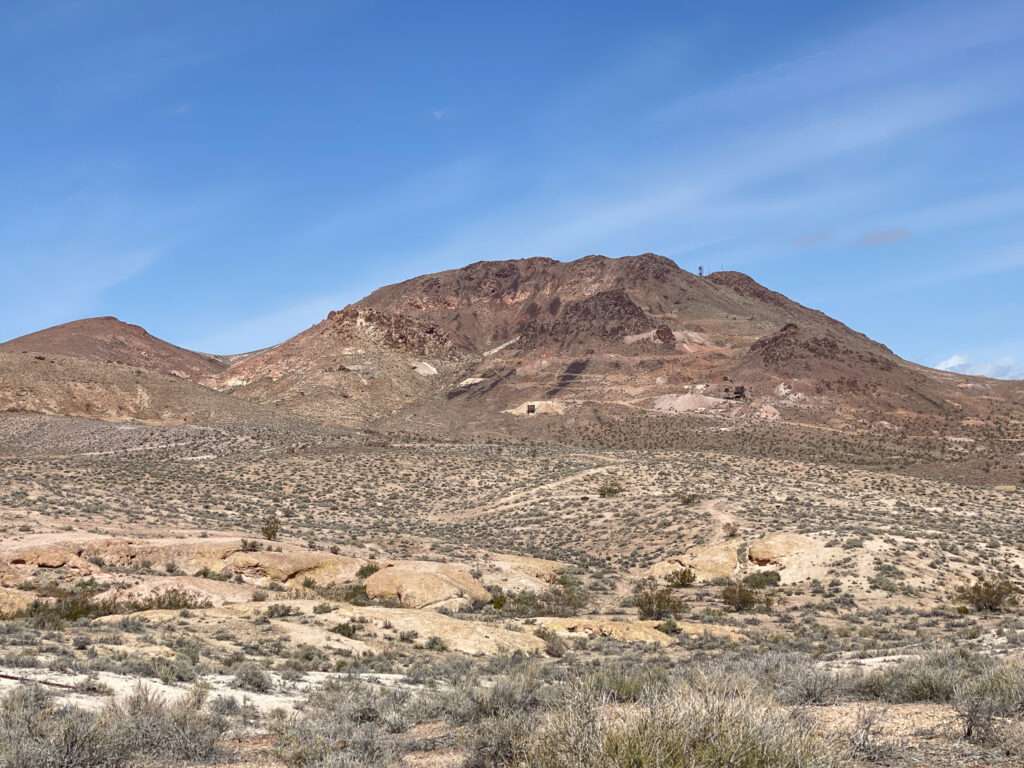
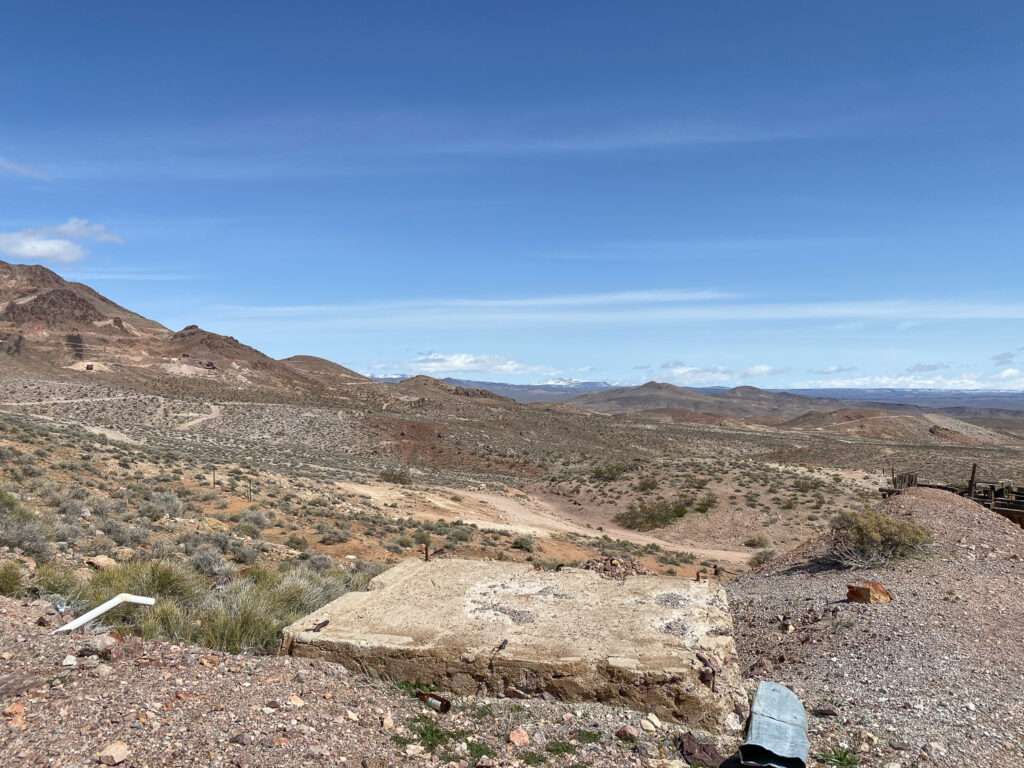
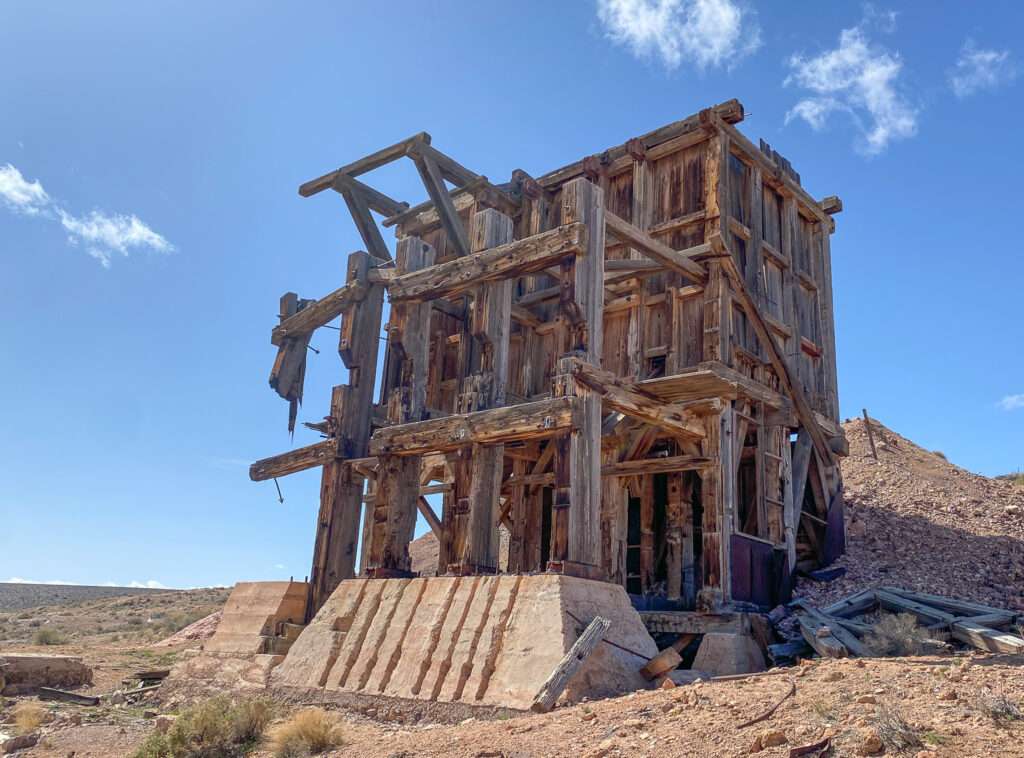
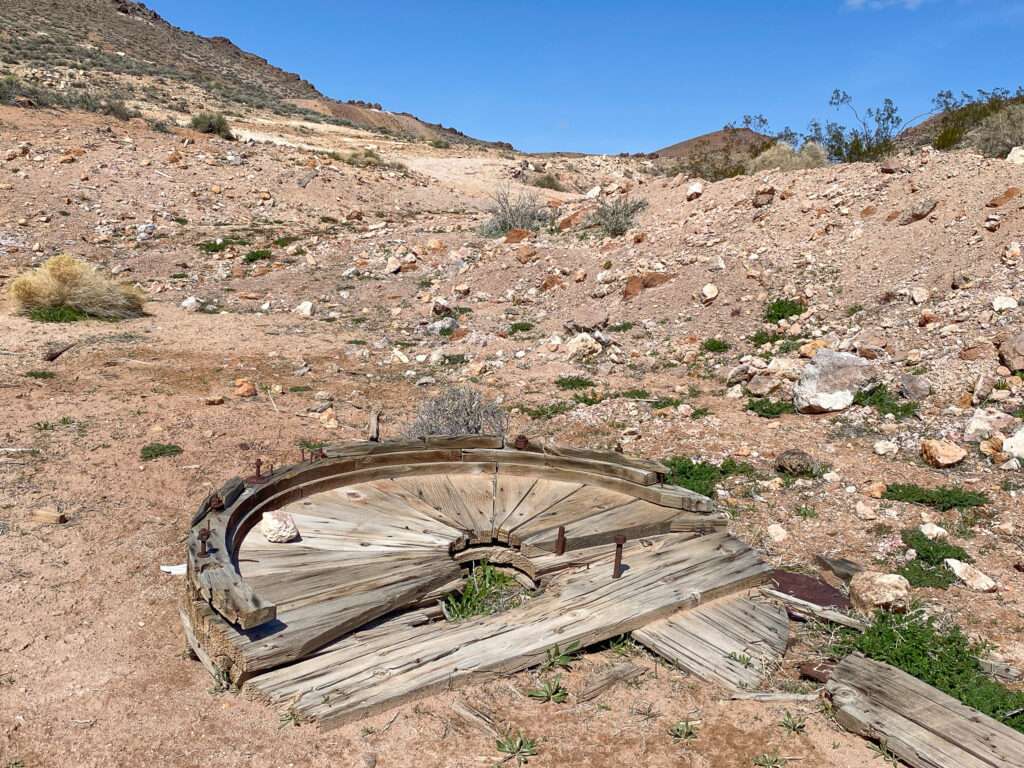
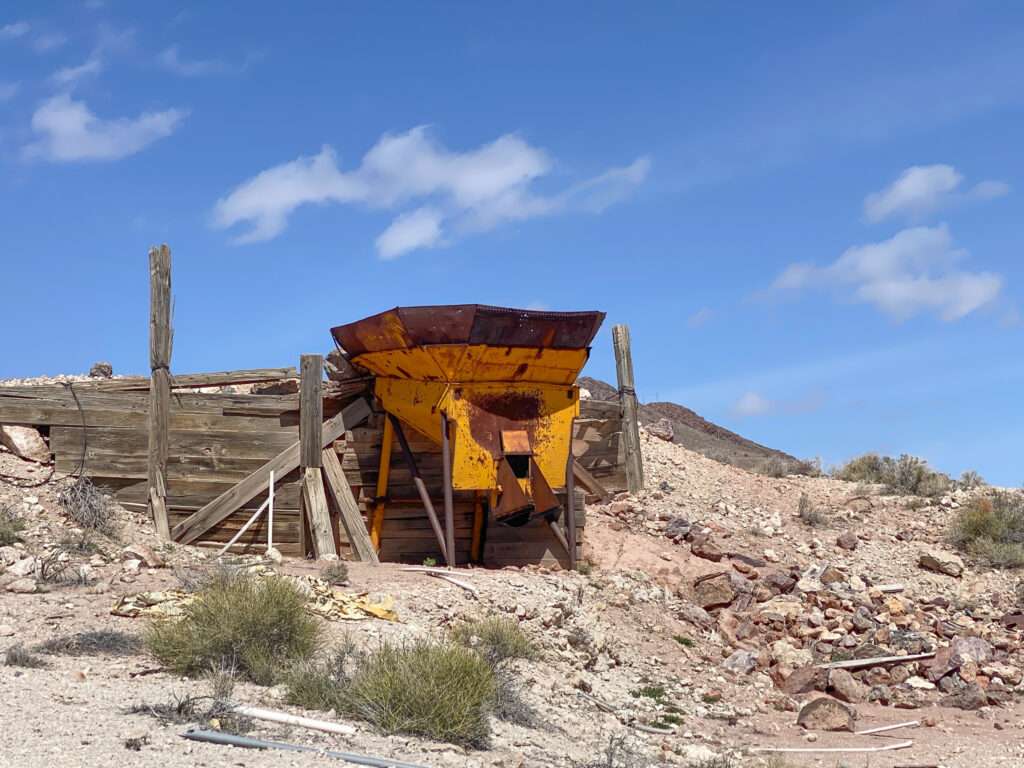

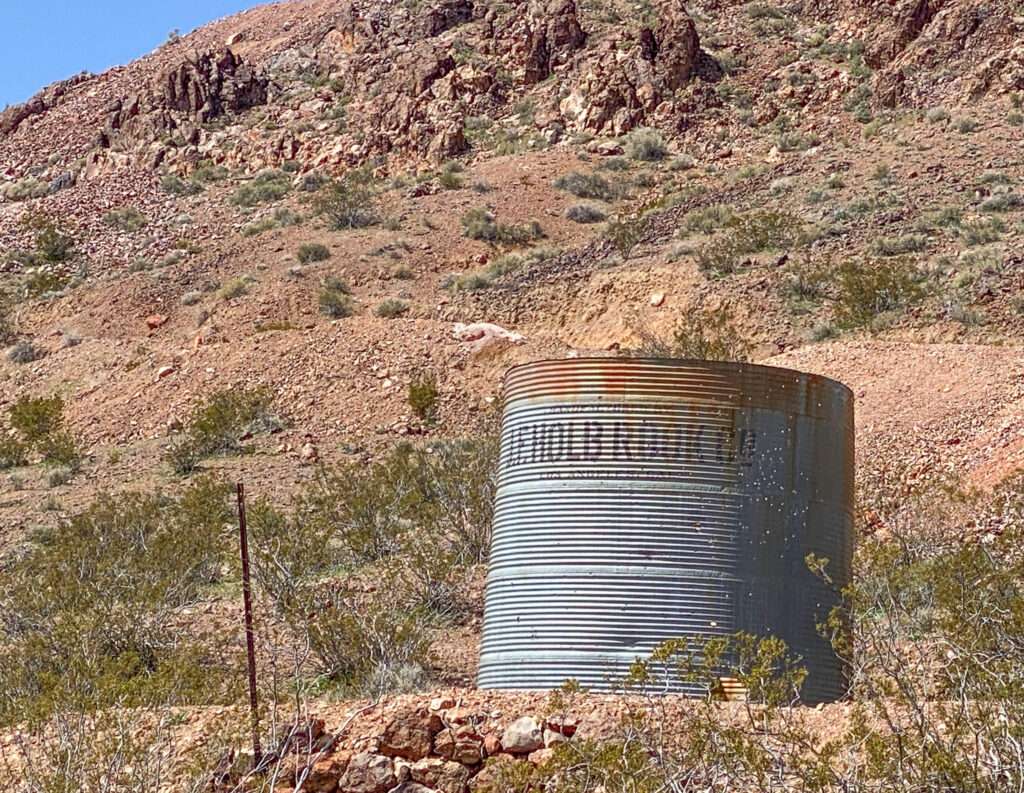
Pioneer’s mines and towns lasted until 1931, with sporadic mining until 1940. The Mayflower and Pioneer mines produced an astonishing $1.6 million.
Darn, it!
At the Pioneer Mine, the constant dinging of my phone told me we were back in service. I decided to post on my Facebook group, that I was excited to be on my first ghost town trip of the year.
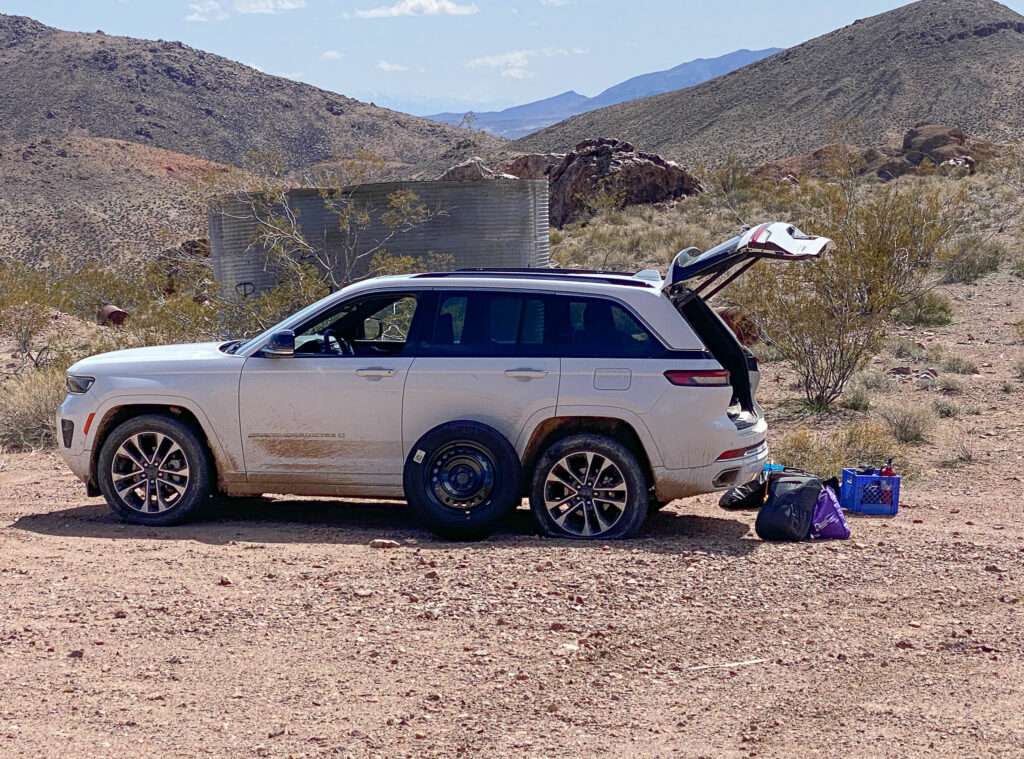
I couldn’t determine why the car honked and kept flashing the lights. Then I got out and heard the hiss. Darn it, a tire had a one-inch gash right through the sidewall. The rear tire was totally flat within a minute.
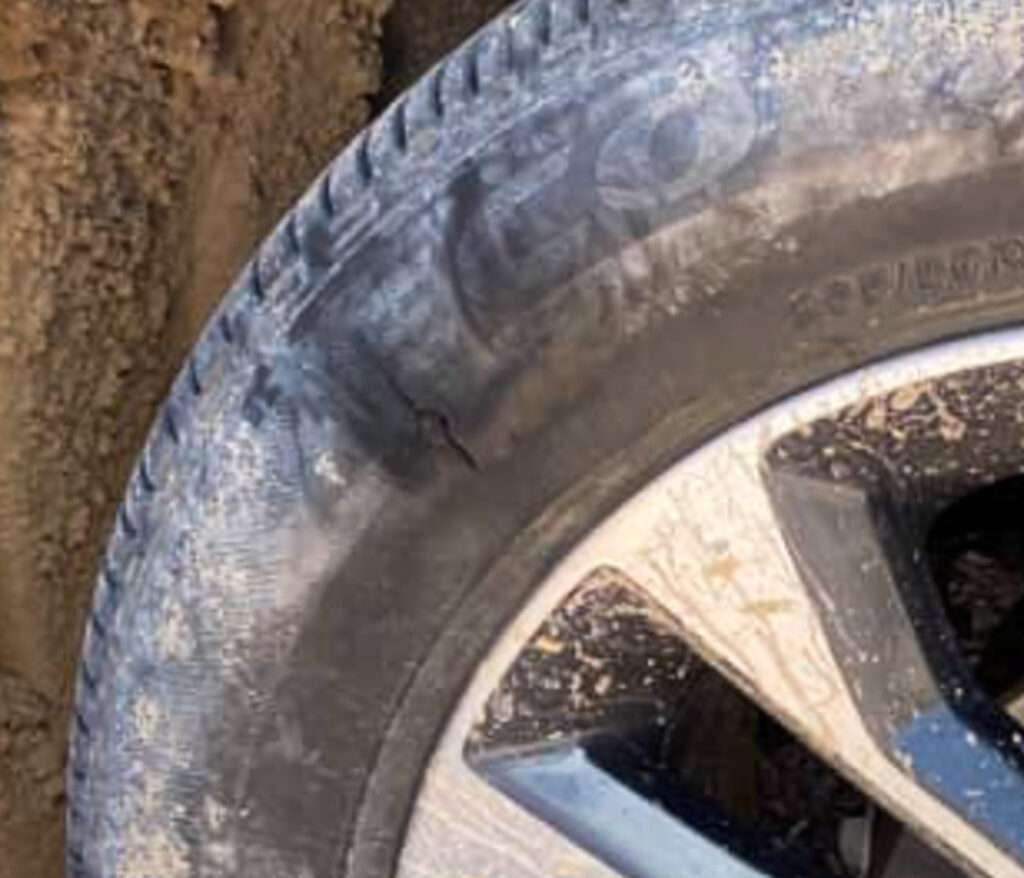

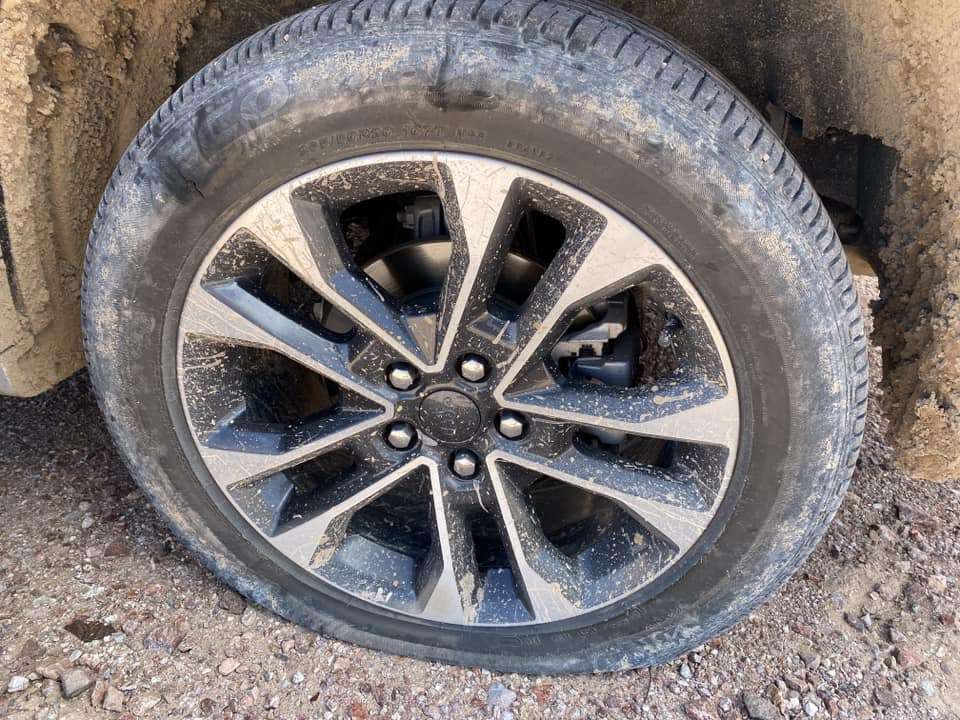
Austin did most of the tire change, with me assisting.
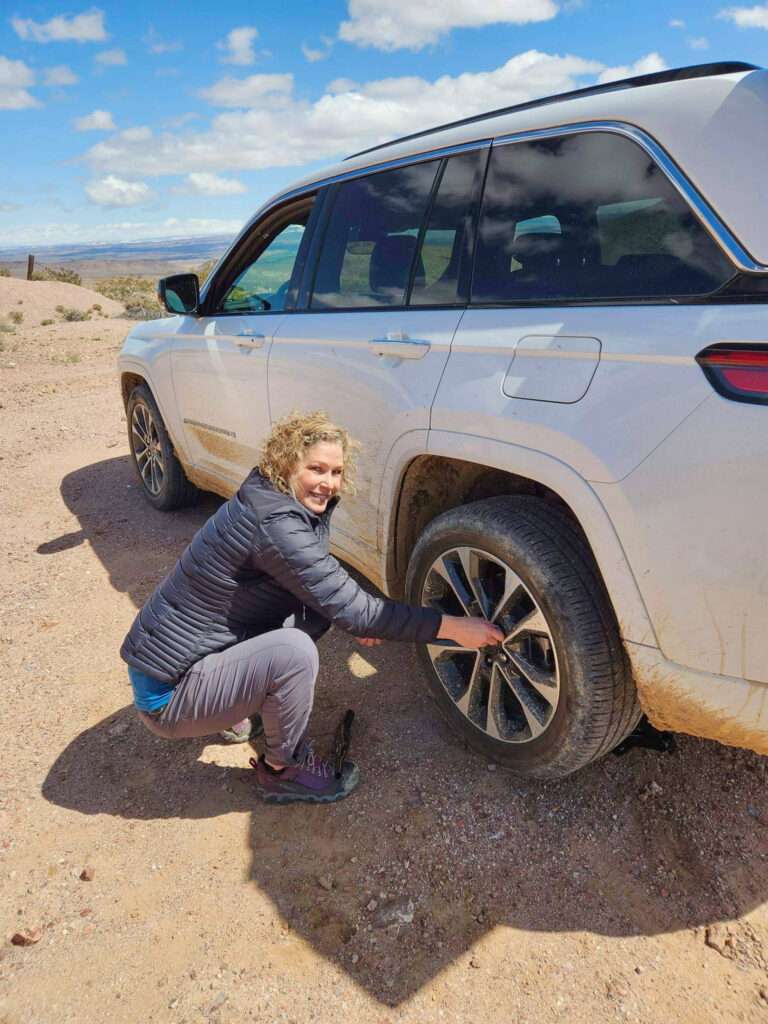
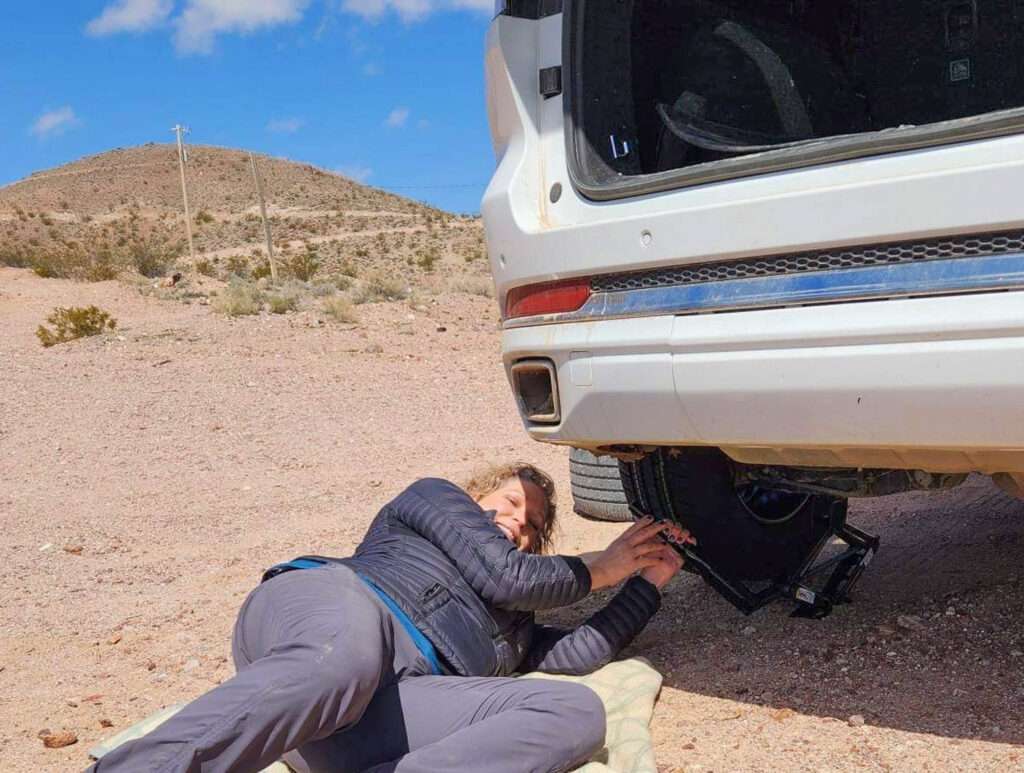
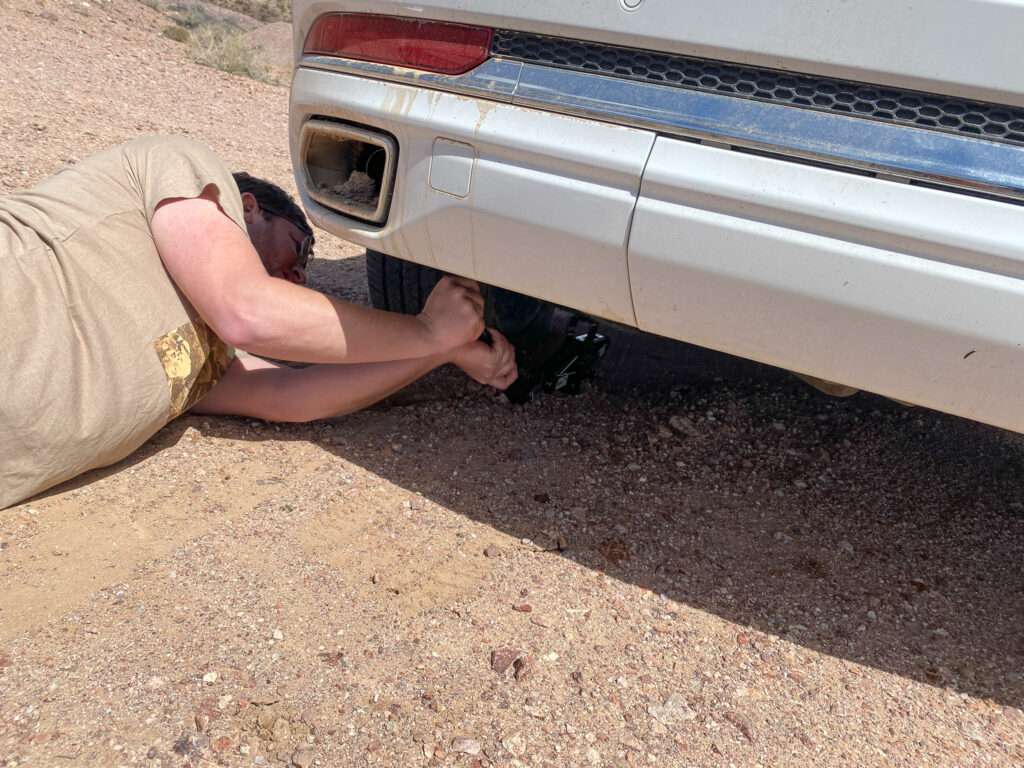
Thankfully I have a full-sized spare. Next stop was the tire store in Beatty. Revert’s Tires was amazing. They had us back on the road in no time, with a used spare on my rim to get me home.
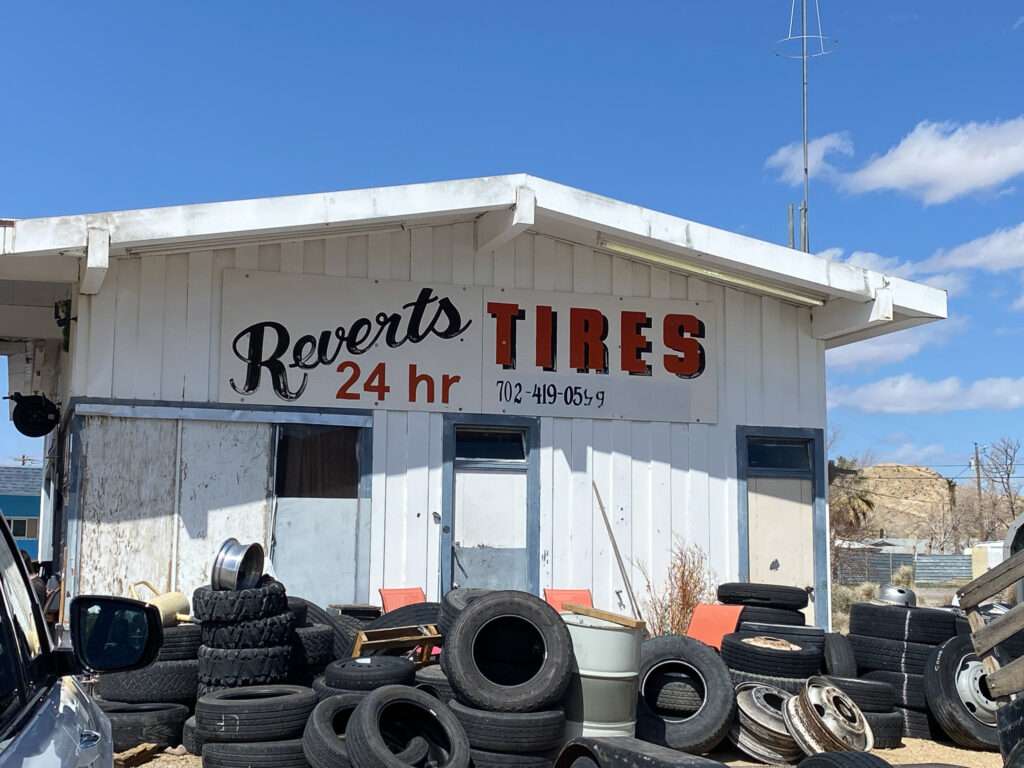
Angel’s Ladies
North of Beatty, a downed aircraft sits on the side of the highway at a 45-degree angle. The fuselage is intact but the electronics and engines were removed. Graffiti covered the hull, including “FL Girls 2022,” written in red spray paint. Stickers cover the area below the pilot’s side window and where the engines were once mounted.
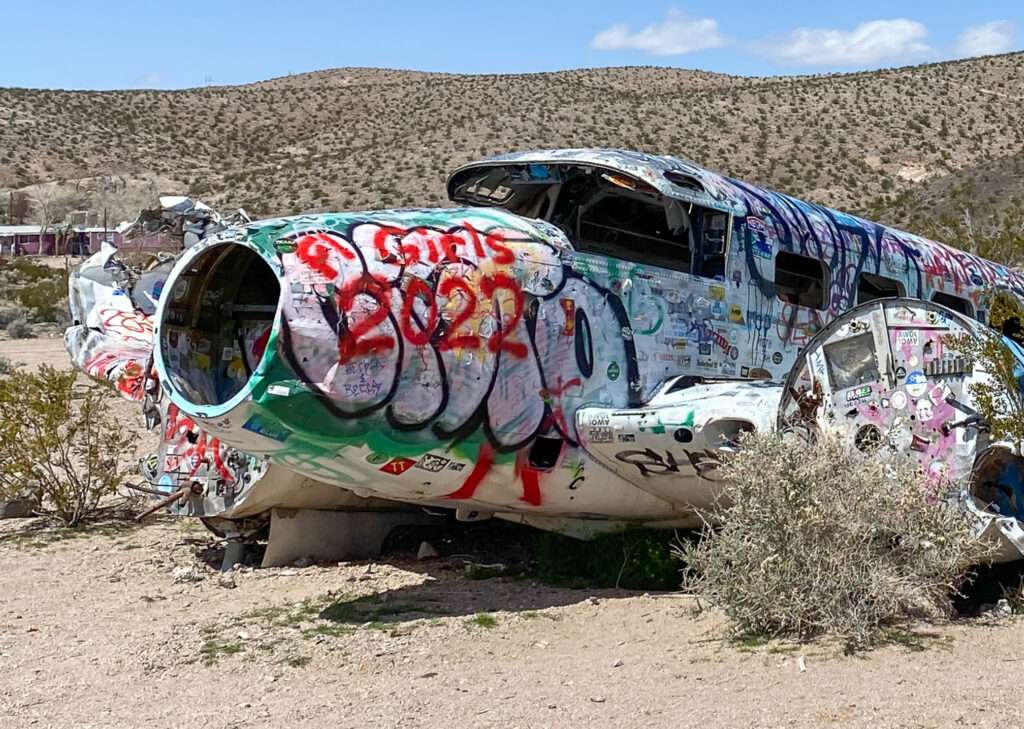
Before 1960, the brothel was known as the Circle C Ranch and later Vickie’s Star Ranch. In 1997, the seventy-acre “ranch” and 5,000-square-foot brothel were purchased by Mack and Angel Moore and renamed “Angel’s Ladies.” In the 1970s, owners developed an interesting, if not questionable, marketing strategy to increase business.
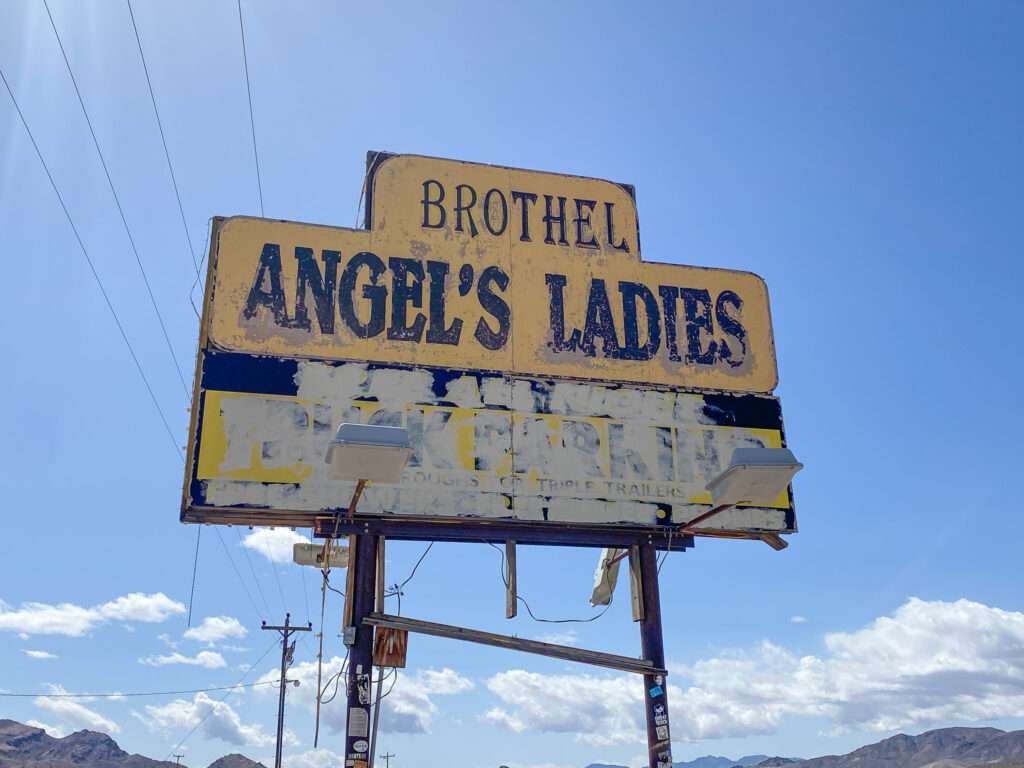
Sticking with Star Ranch name, they drew a large star on the earth, placing a mattress in the center. The brothel provided a plane and parachute to adventurous clients. If a client jumped out of the plane and landed on the mattress, he would win a night with the lady of his choice. What could go ever go wrong with that plan?
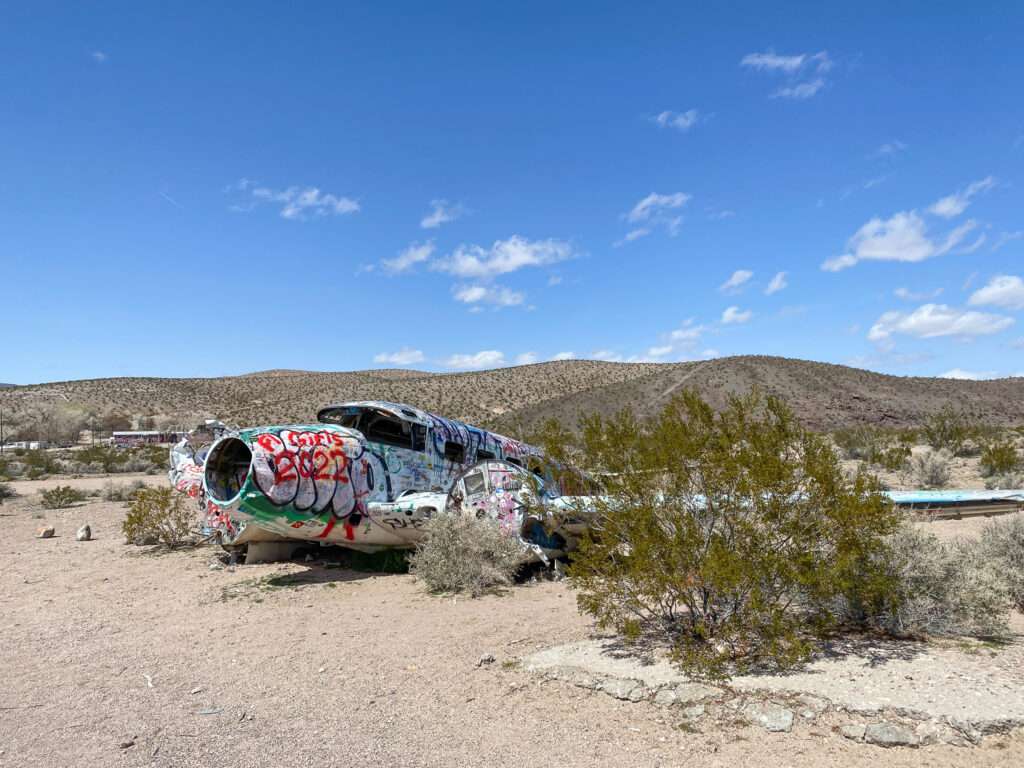
On May 28, 1977, the brothel’s Beechcraft C-45 departed from Davis, California, bound for the Star Ranch. Not surprisingly, the stunt did not go as expected. The twin–engine aircraft struck wires or a pole and crash-landed on the property. The pilot and passengers must have had angels looking over them as they all survived.
It turns out an inexperienced pilot, strong Nevada winds, and scantily-clad ladies of the evening don’t mix very well, only in Nevada.
Gold Center Mill and Townsite
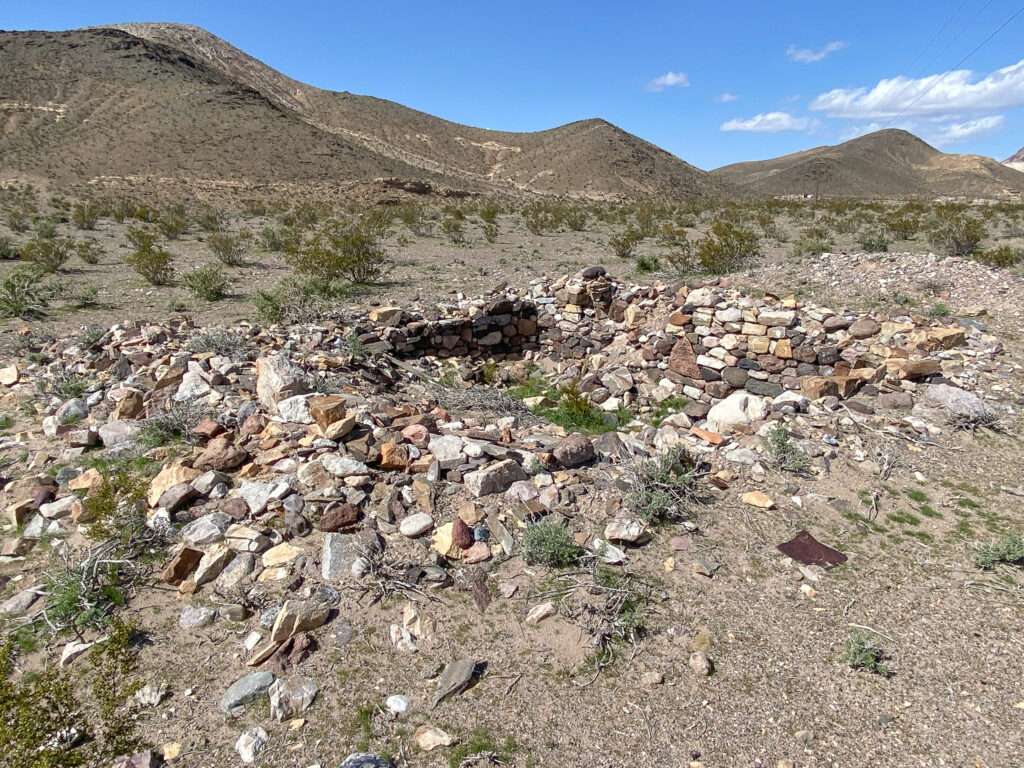
Developers created Gold Center to provide water for the Bullfrog district. The name is a mystery as there was no gold, nor was the town the center of anything.
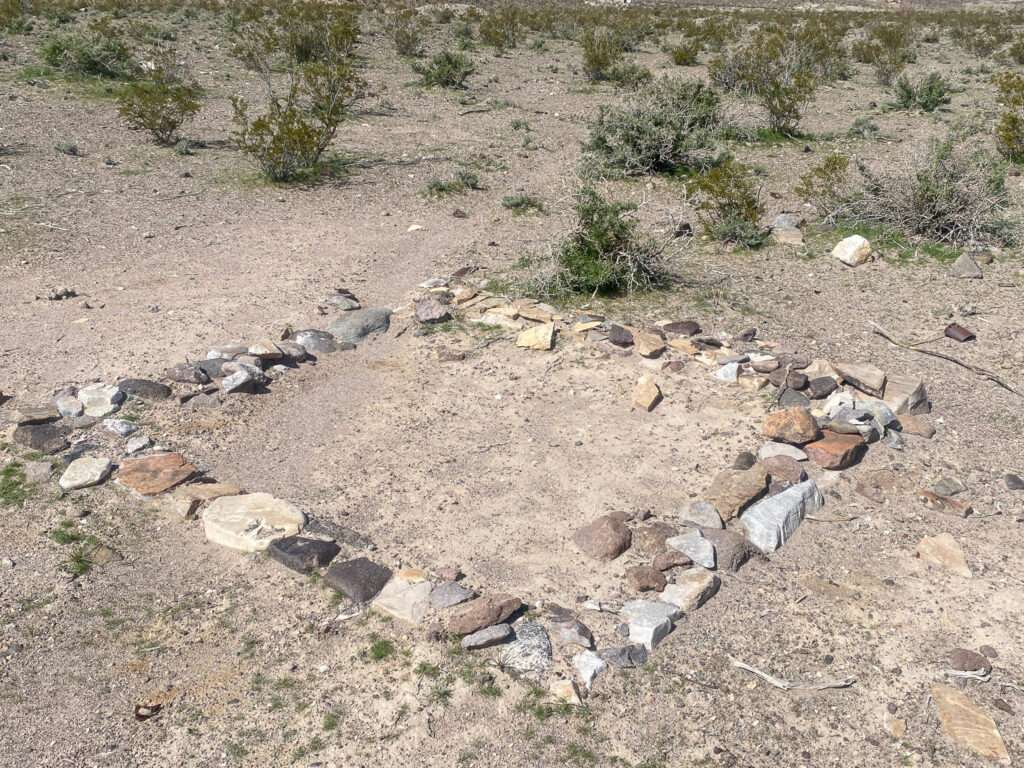
The town boomed with the arrival of the Las Vegas & Tonopah Railroad in May of 1906. It became the terminus for the Las Vegas & Tonopah Railroad and the shipping center for Rhyolite.
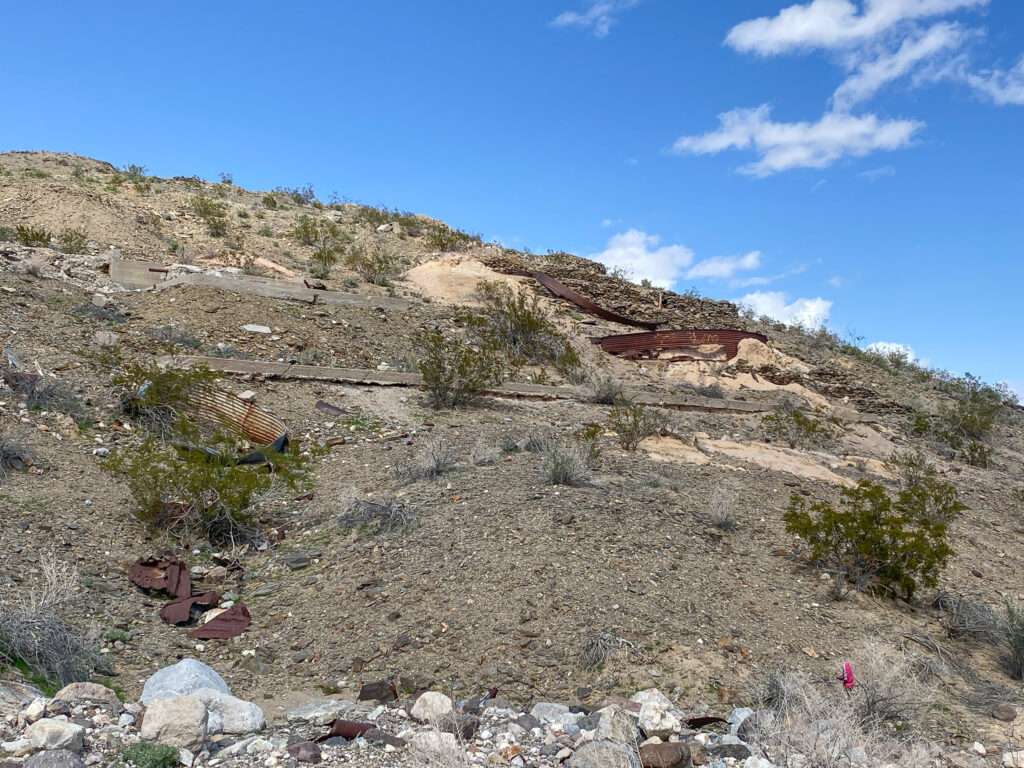
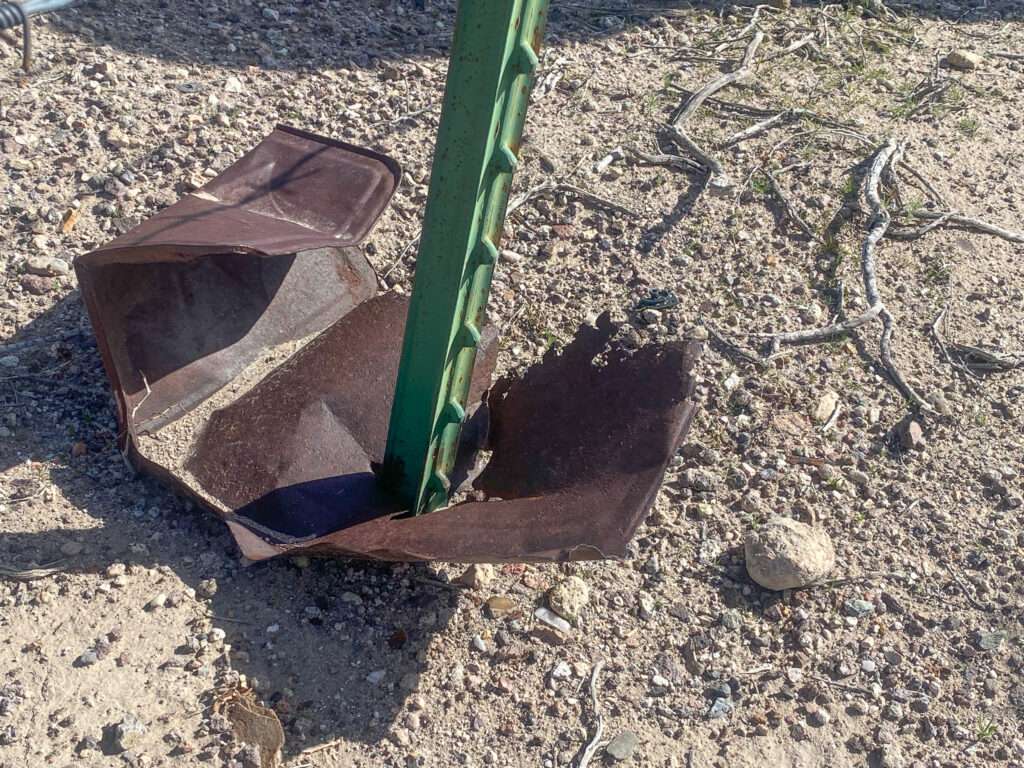
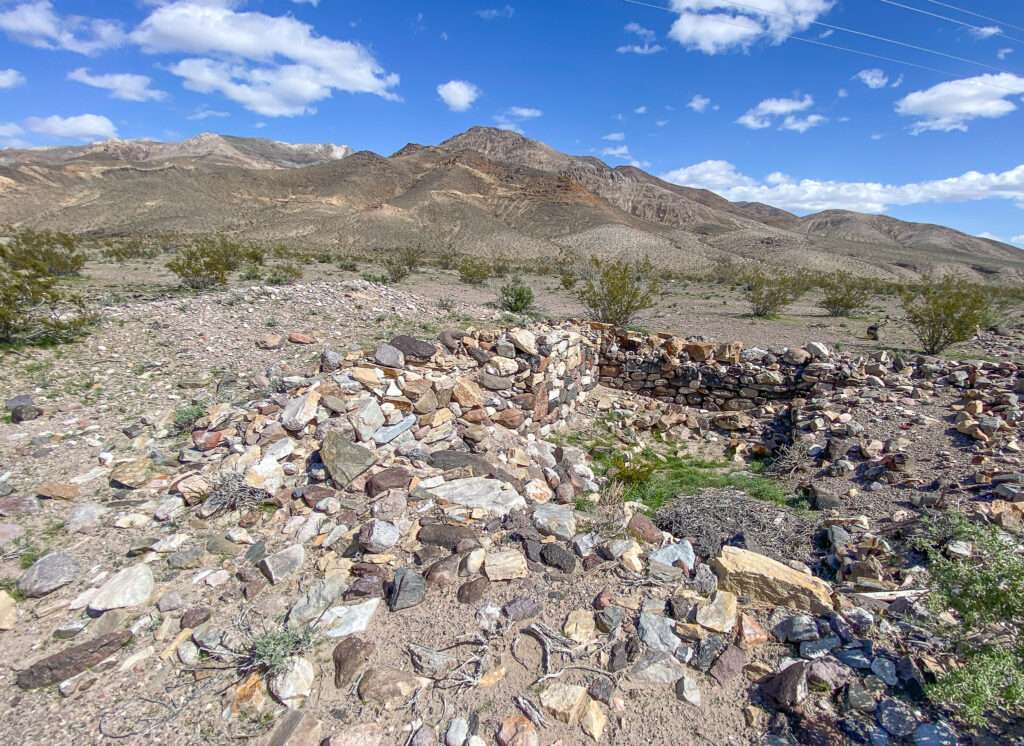
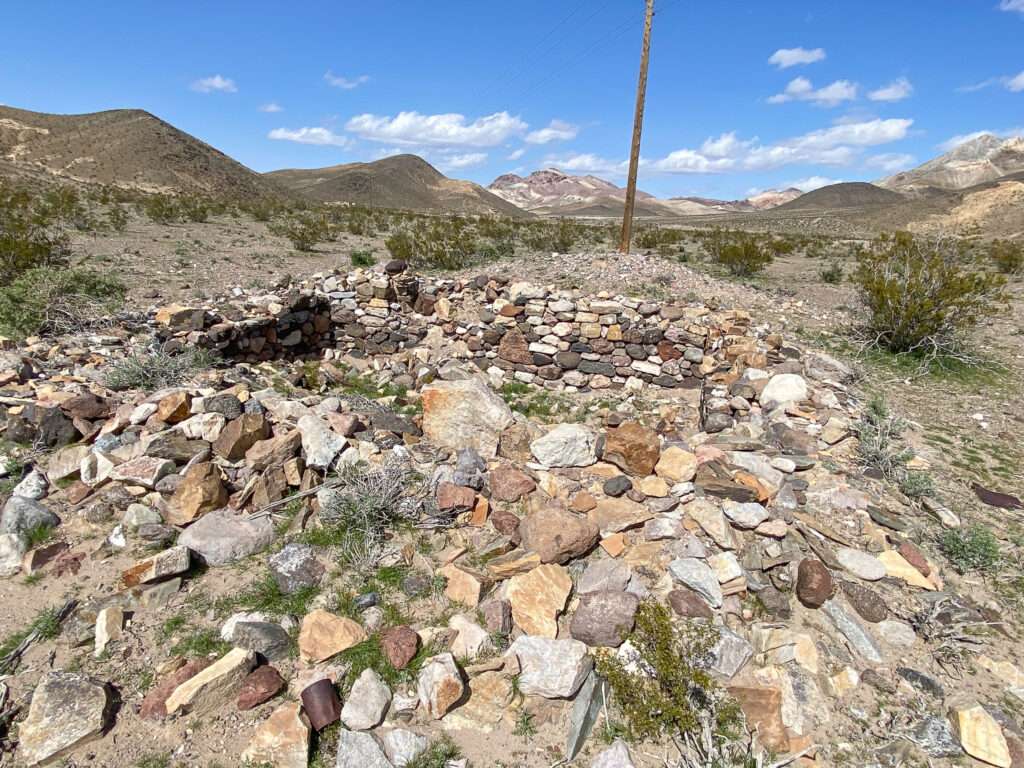

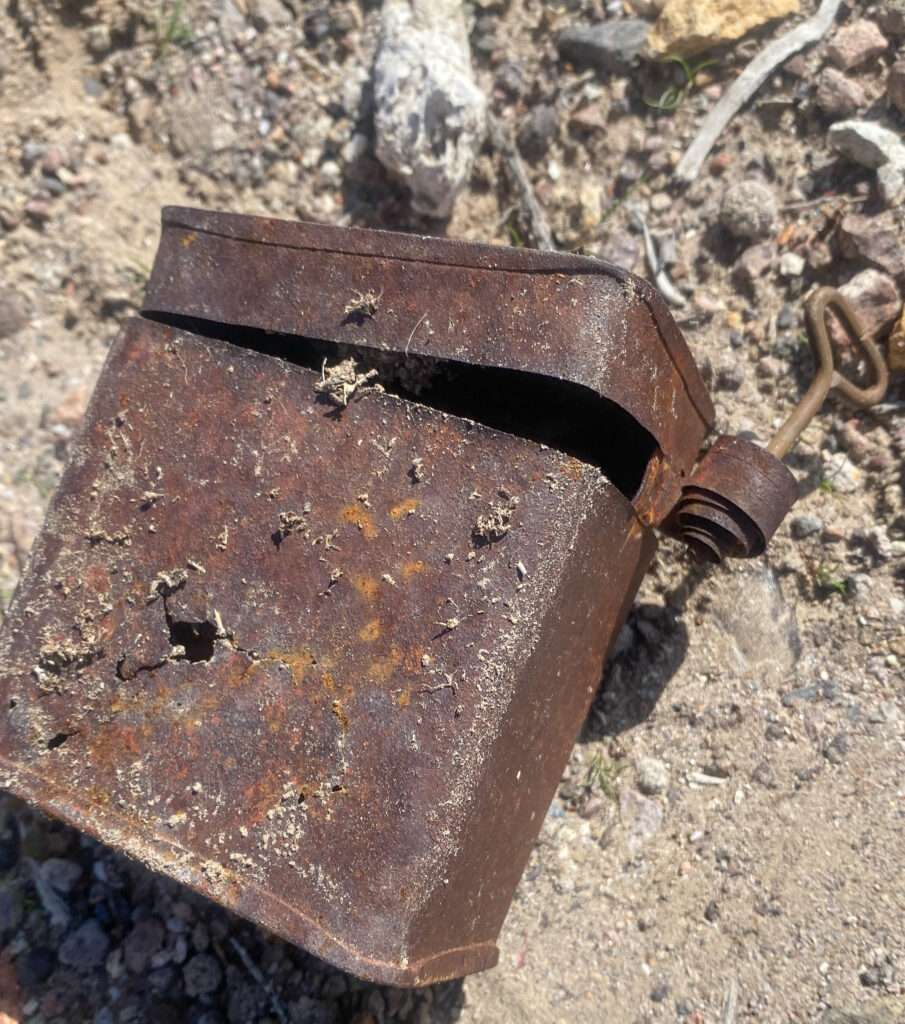
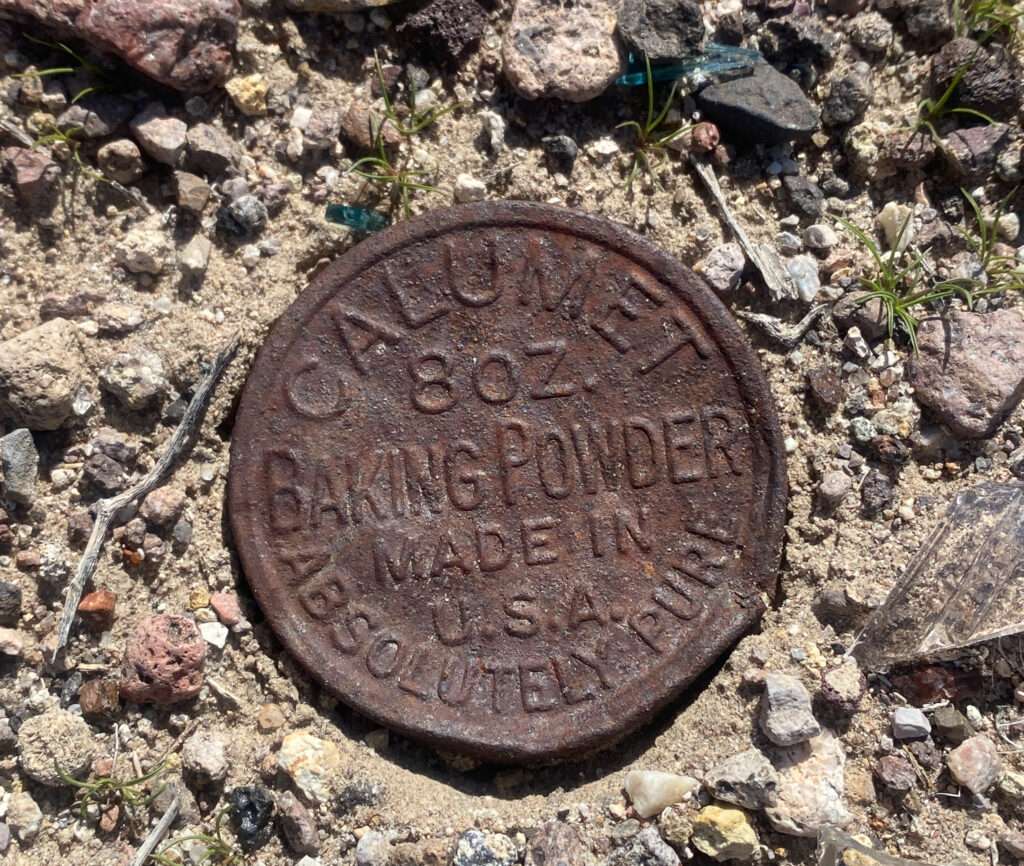

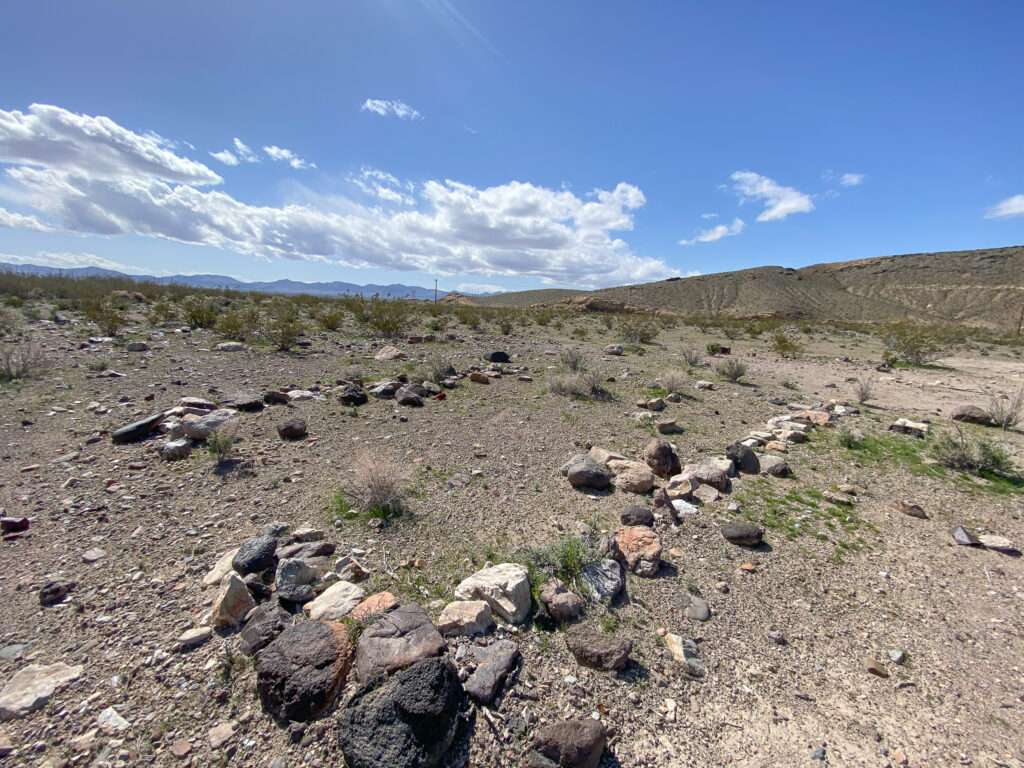

1907 was the height of Gold Center. The town had a post office, bank, and newspaper. It boasted an ice house and local draft beer from the Gold Center Ice and Brewing Company.
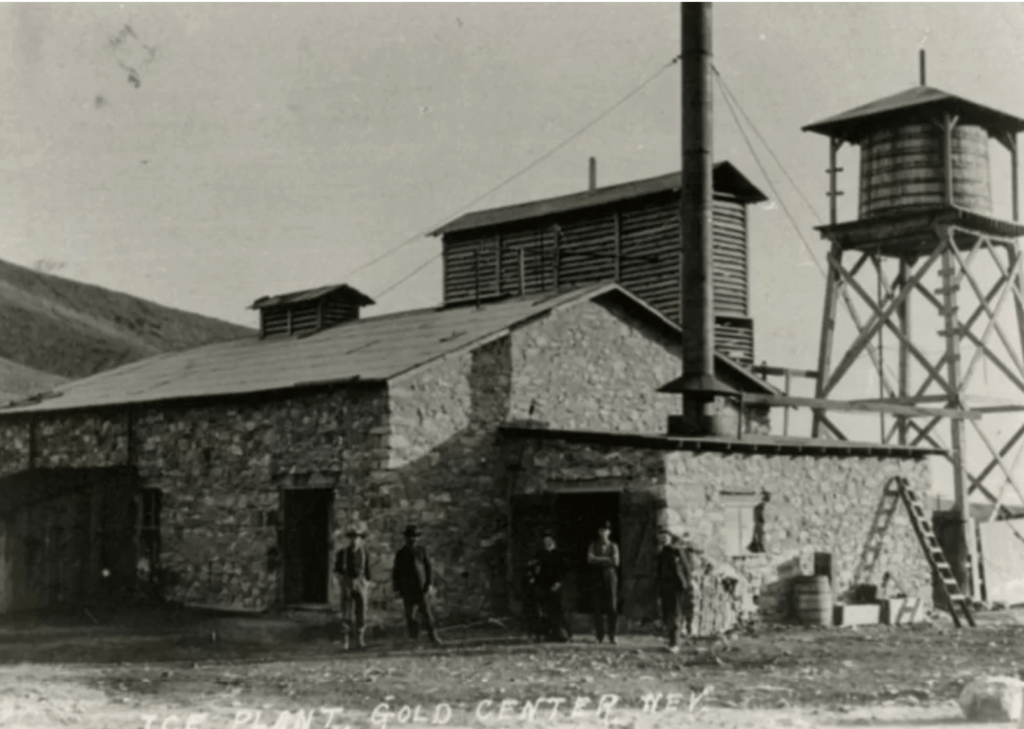
(photo credit: UNLV)
Mining exploration wasn’t productive but the town had a 30-ton mill which operated briefly. As the Bullfrog District faded, Gold Center became a ghost town.

(Photo credit: UNLV)
Cararra
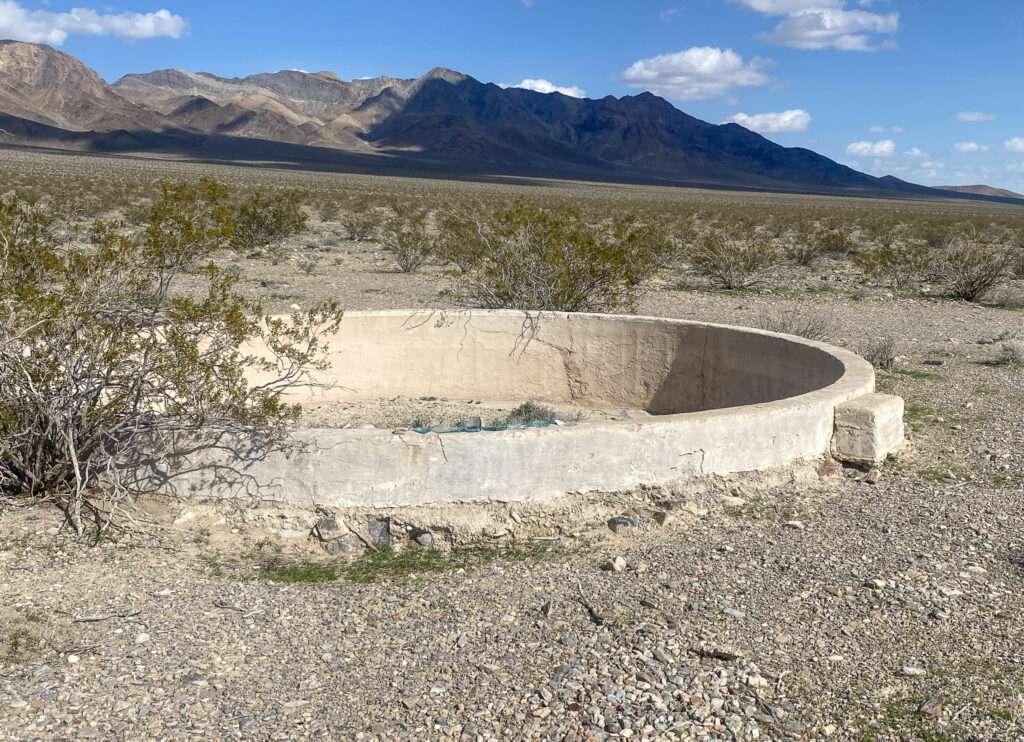
Marble was quarried south of Beatty beginning in 1904. Unfortunately, the marble was too fractured to cut large pieces. In 1911 additional marble was located.

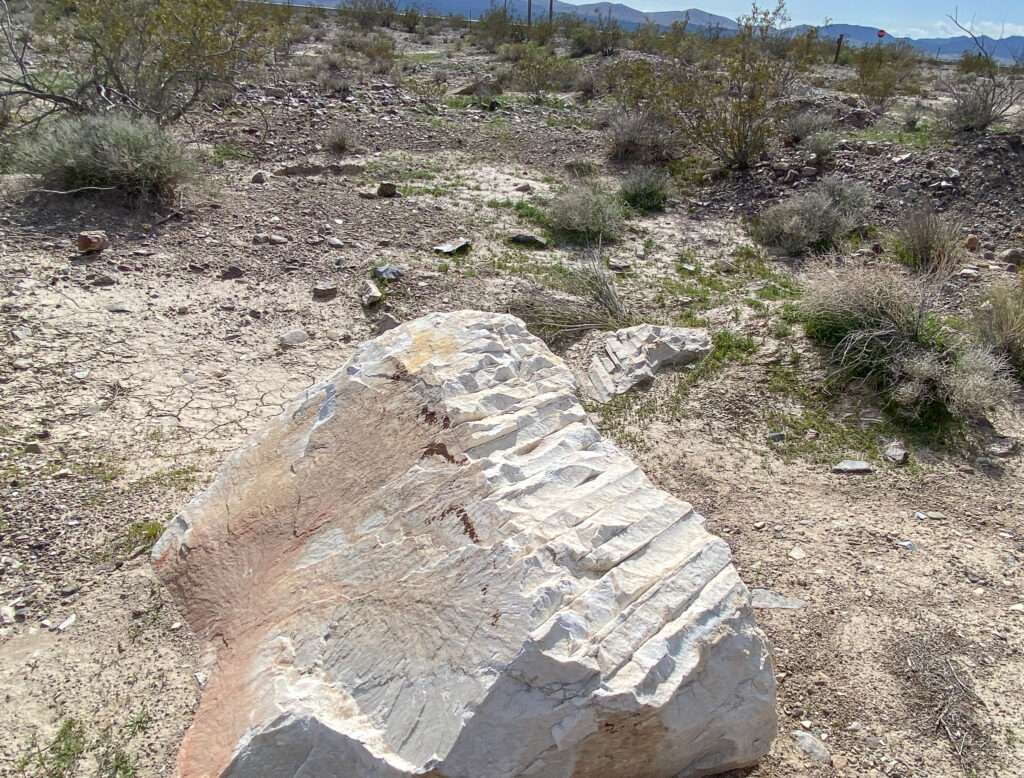
The Las Vegas & Tonopah Railroad was conveniently located at the bottom of the range from the quarry. The company laid tracks for a private cable tram, nicknamed “The Carrara Pacific,” to connect the quarry to the railroad. The marble was shipped to Los Angeles for processing.
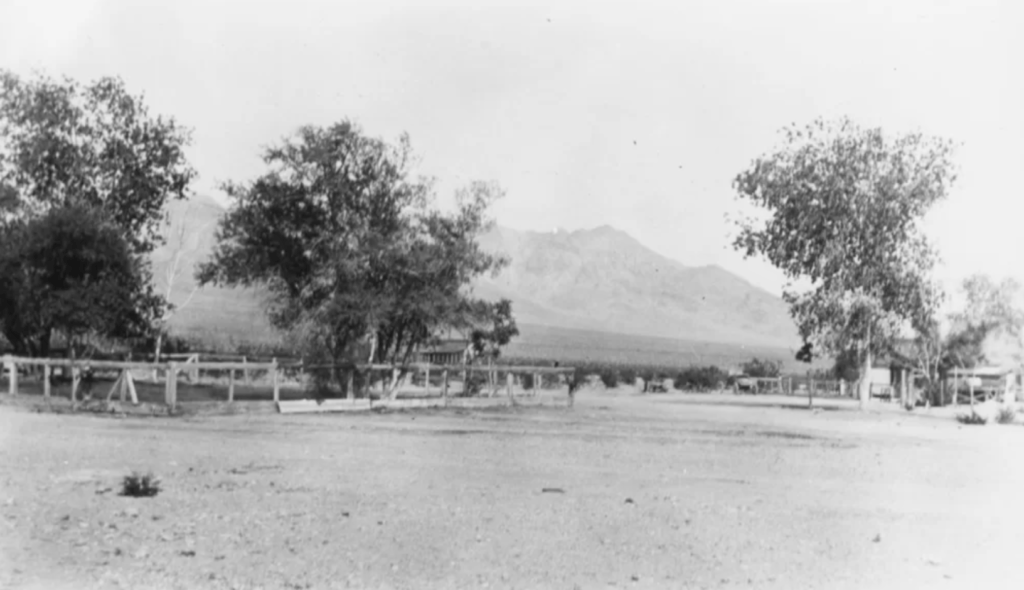
(Photo credit: UNLV)
The American Carrara Marble Company laid out a town for workers. They named the new city in honor of the famous Italian marble, Carrara. The town was dedicated on May 8, 1913, with a band from Goldfield, dances, baseball games, and swimming in the town pool. They moved buildings from Beatty and Rhyolite to make Cararra appear further developed than it was.
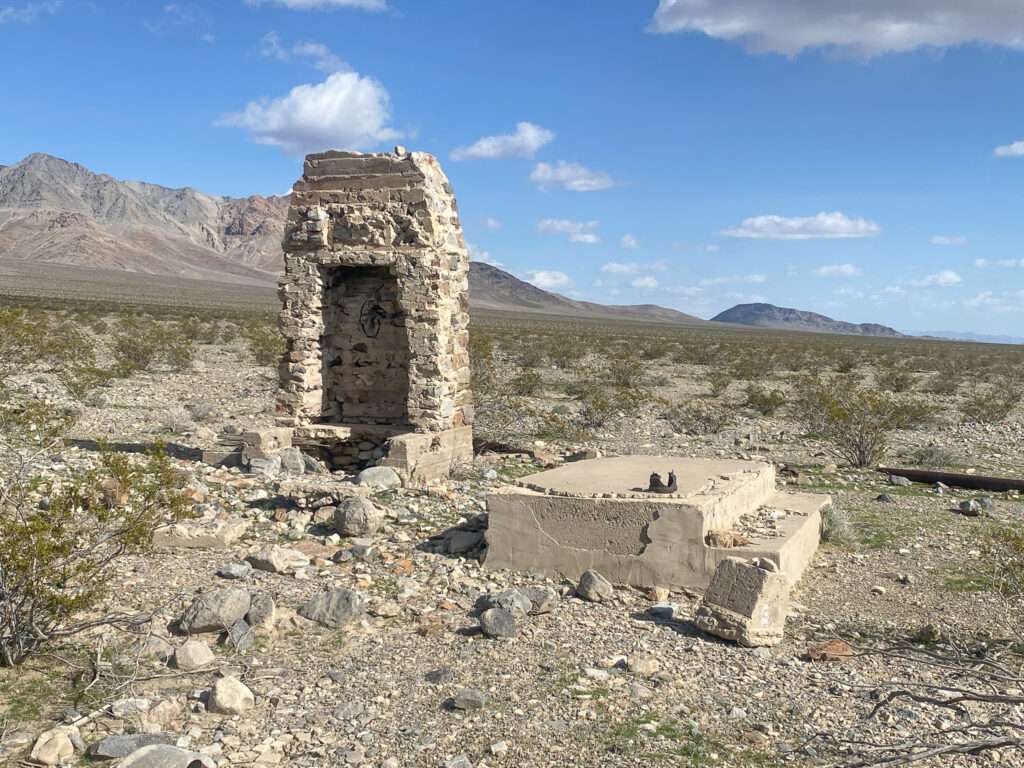
Cararra grew to include a post office, newspaper, restaurant, and stores. One hundred people resided in the new town. The town peaked between 1915-1916, with 150 residents.
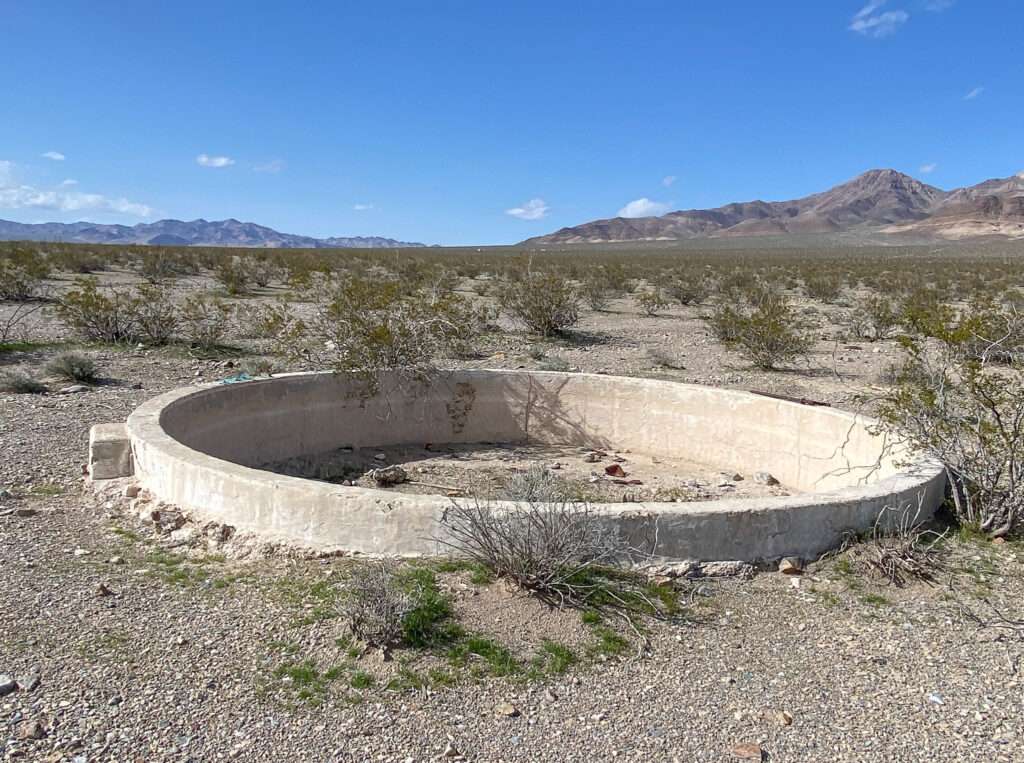
The town was most known for its fountain. The local newspaper, the Carrara Obelisk, boasted, “It was the only public fountain in Nevada!” It sat in a small park filled with poplar trees in the town center. A stream of 30 feet of water would shoot into the air; at night, colored lights adorned the fountain. Cararra became known for the catchphrase “Meet Me at the Fountain.”
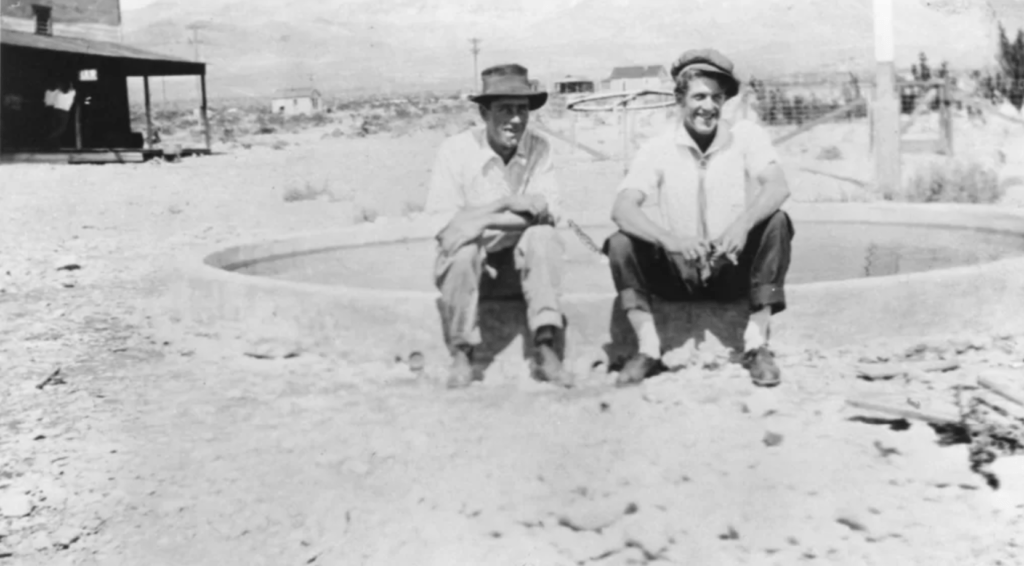
(Photo credit: UNLV)
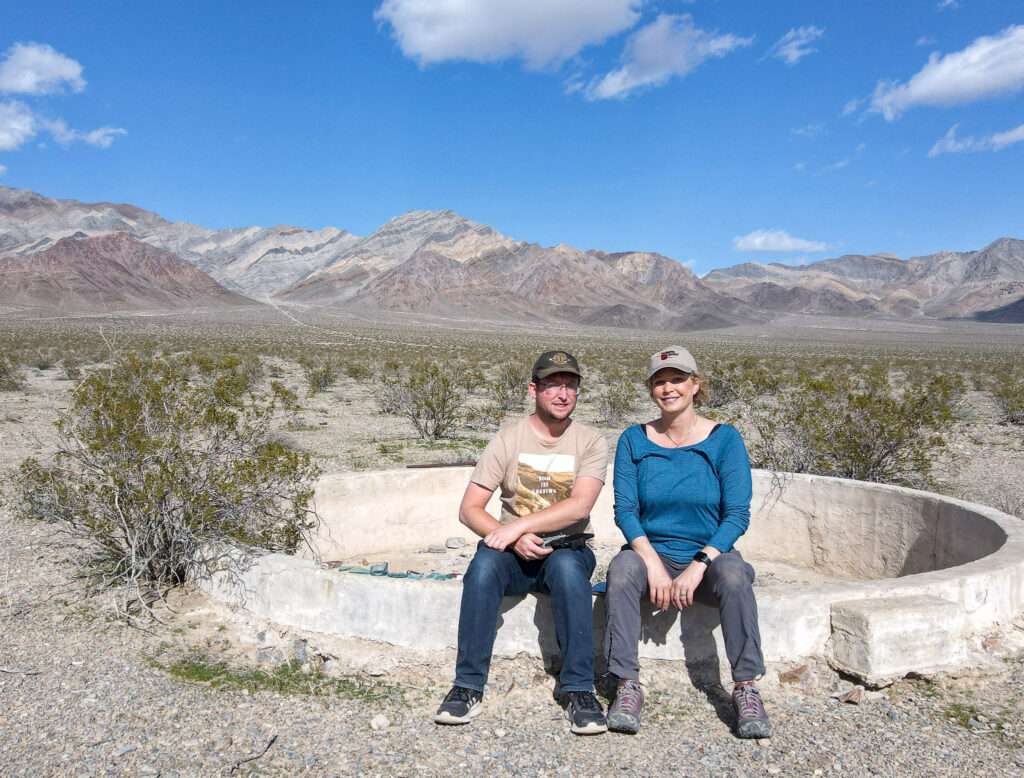
(Photo credit: UNLV)
Unfortunately, the marble was lower quality than could be shipped from Vermont. Nevada-California Power Company cut off service to Cararra, and Production decreased in 1917, and the town declined. Cararra had a brief revival with the discovery of gold at the Gold Ace Mine. The post office remained open until 1924.
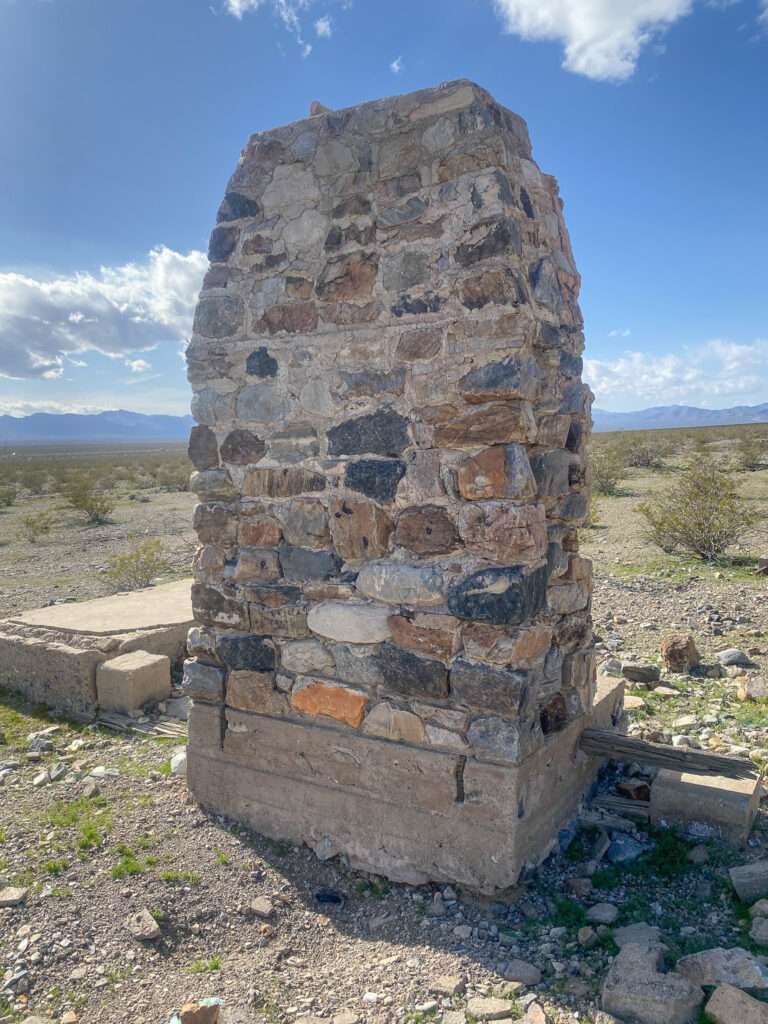

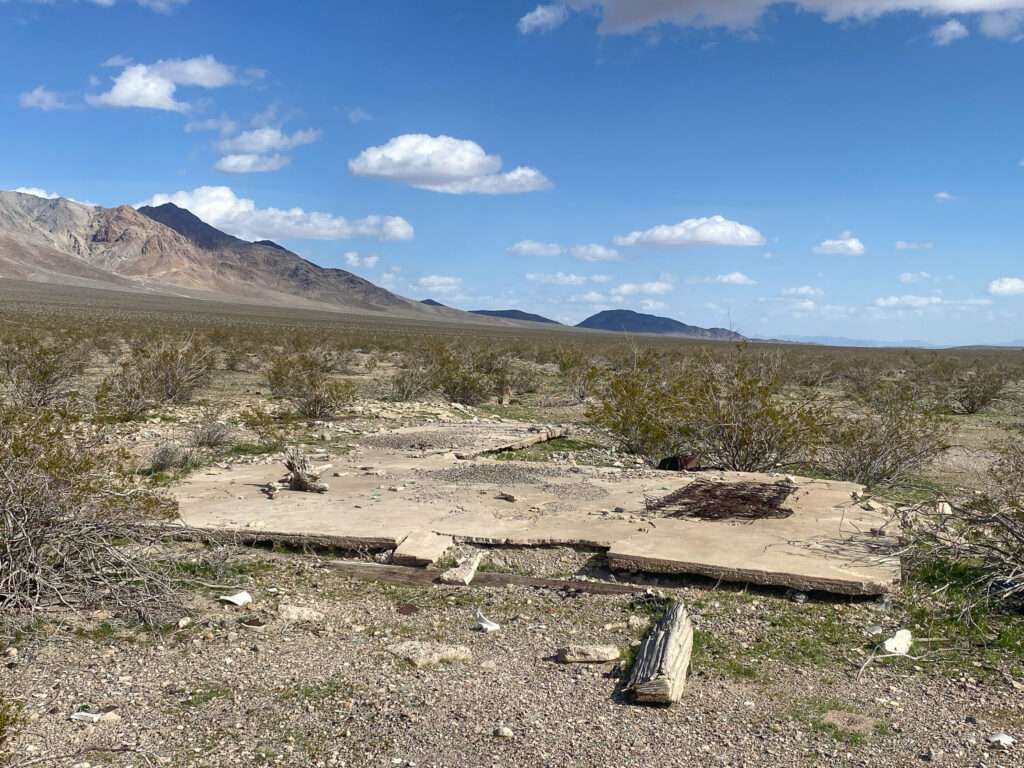
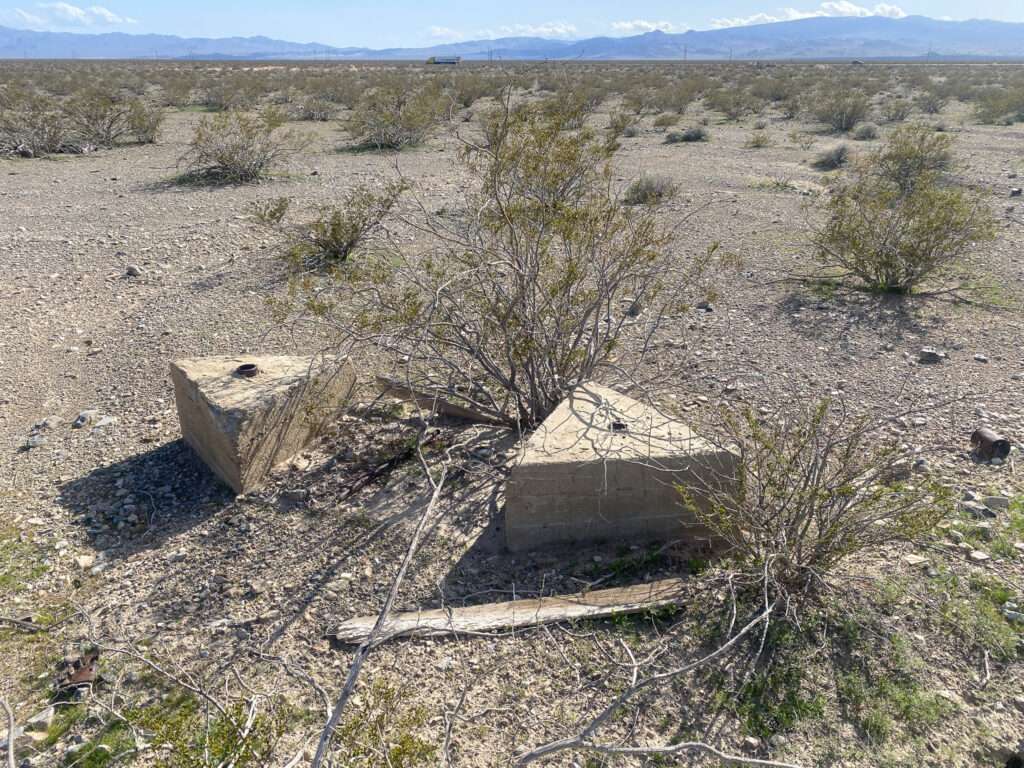

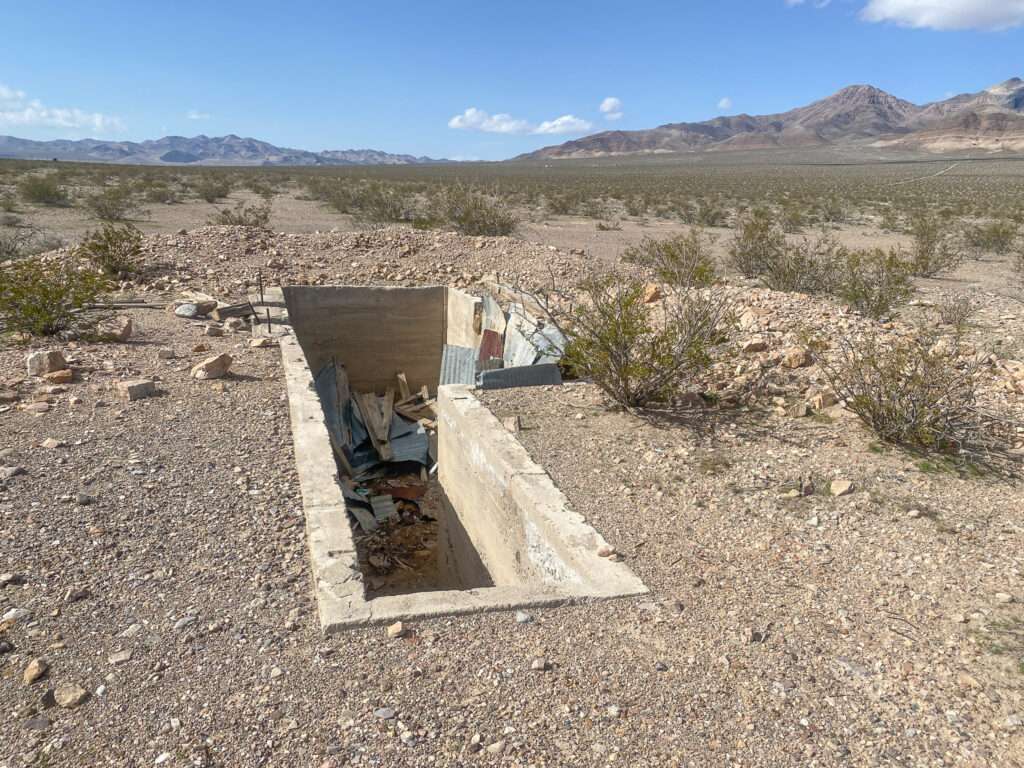
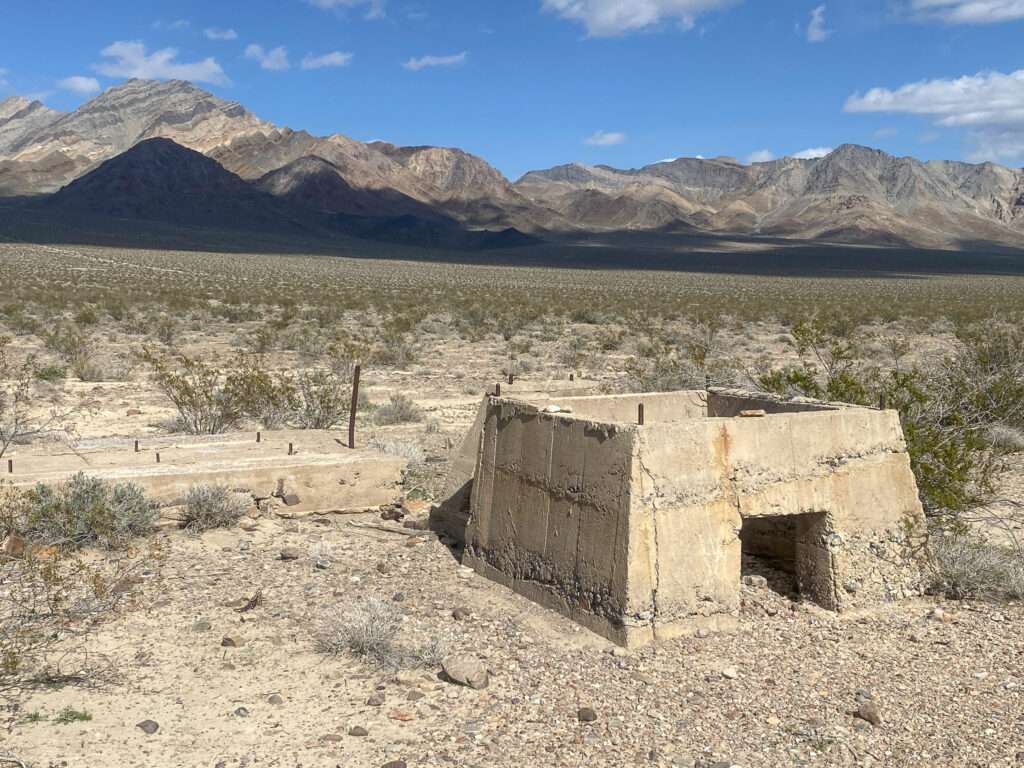
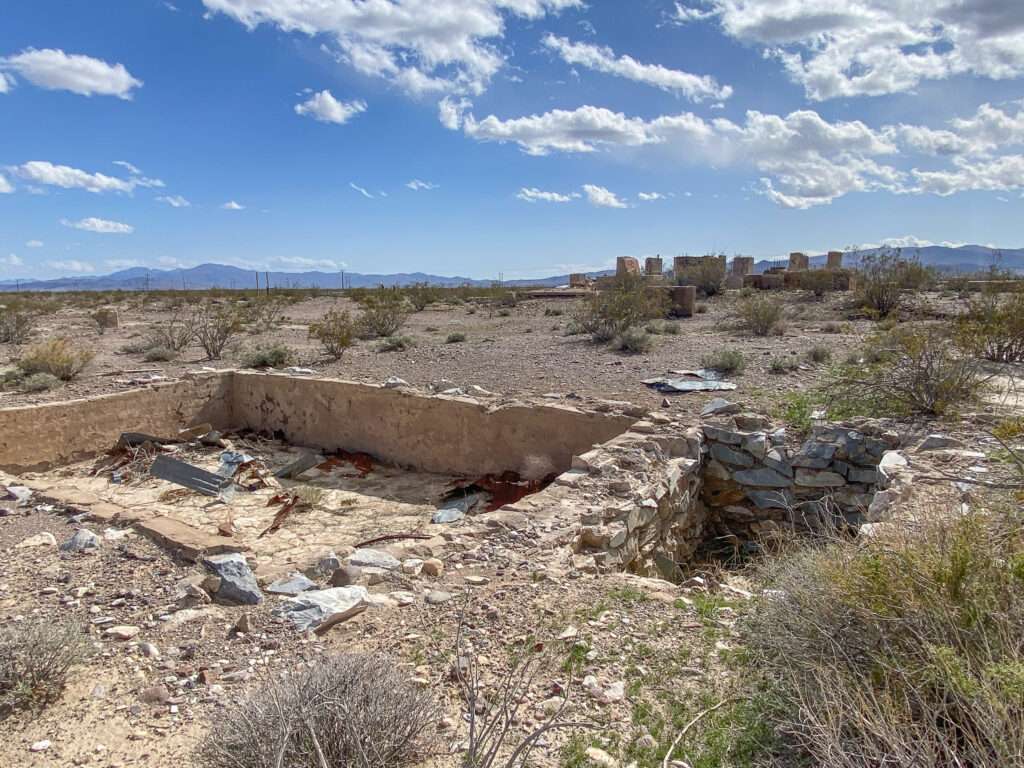
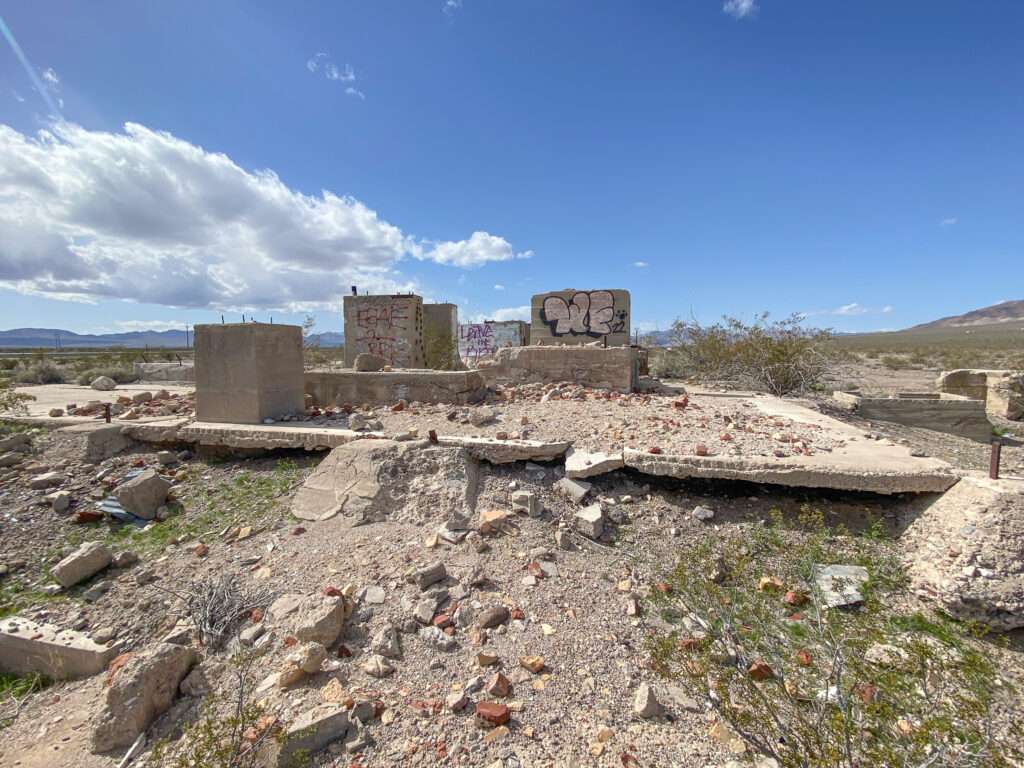
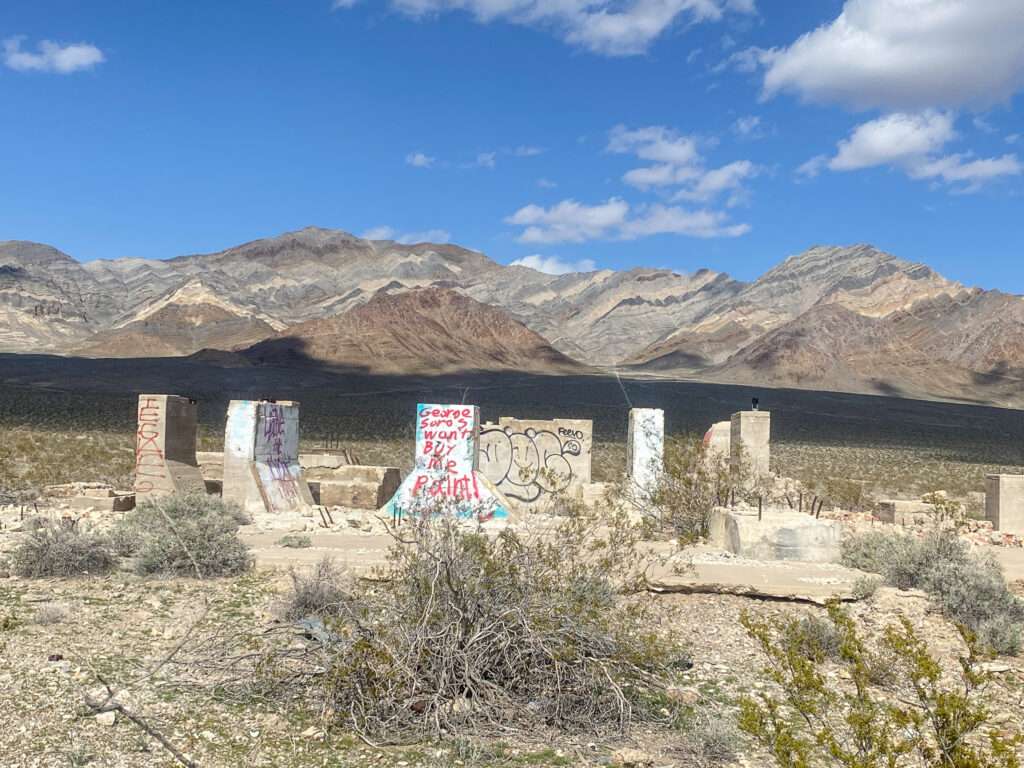
Elizalde Cement Plant
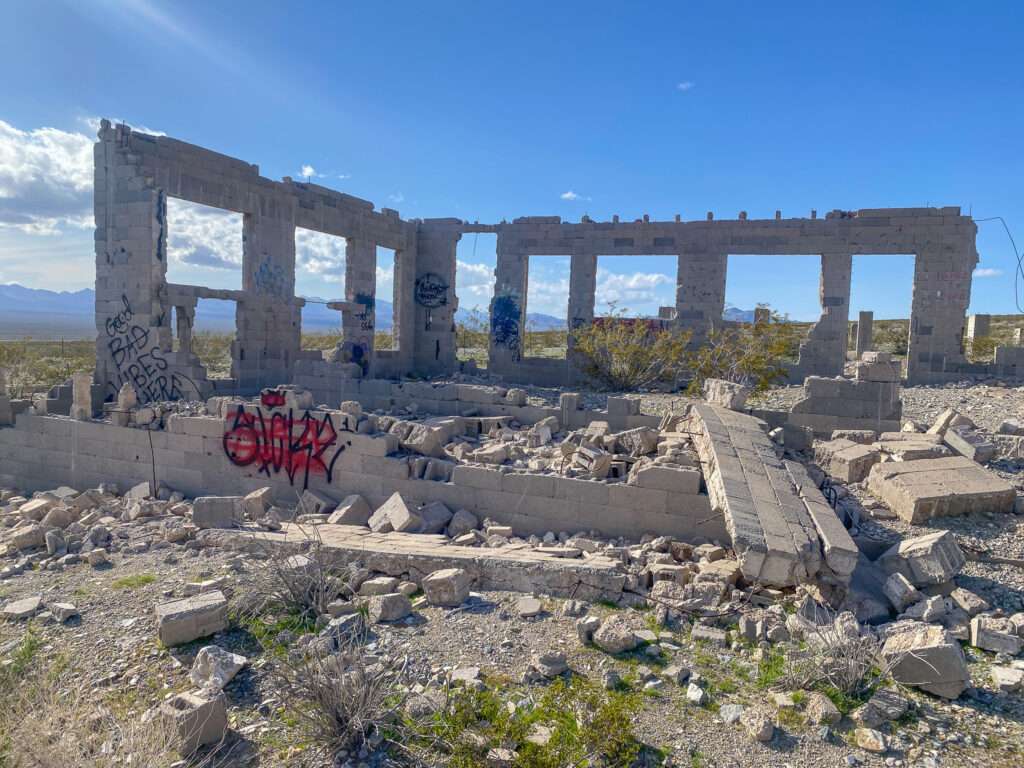
Construction of the plant started in 1941. It was scheduled to begin production in August of that year. Unfortunately, a fire swept through the plant in July, destroying many structures. The plant never operated between the fire and fuel rationing during WWII.
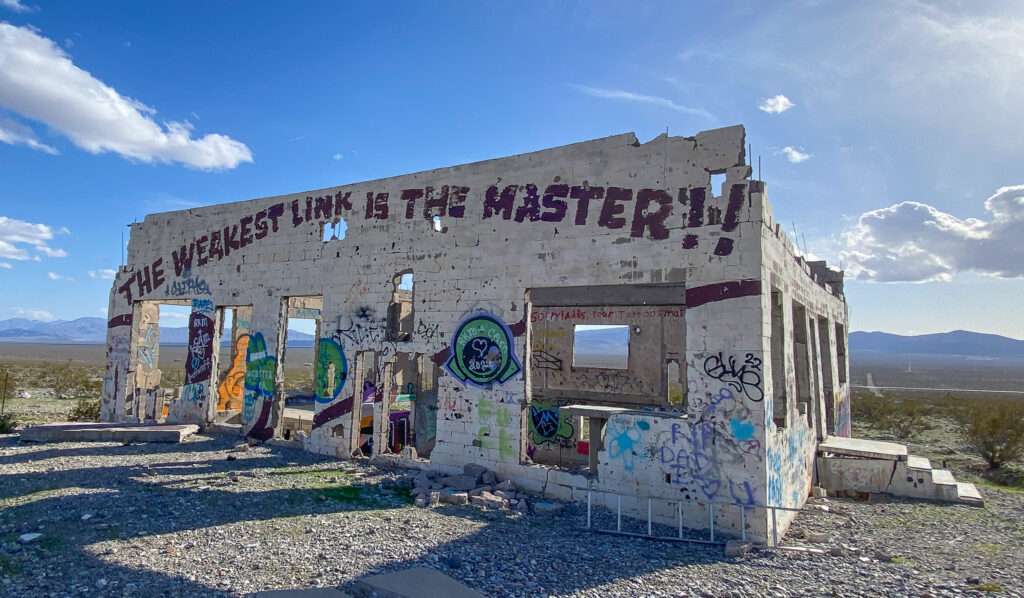
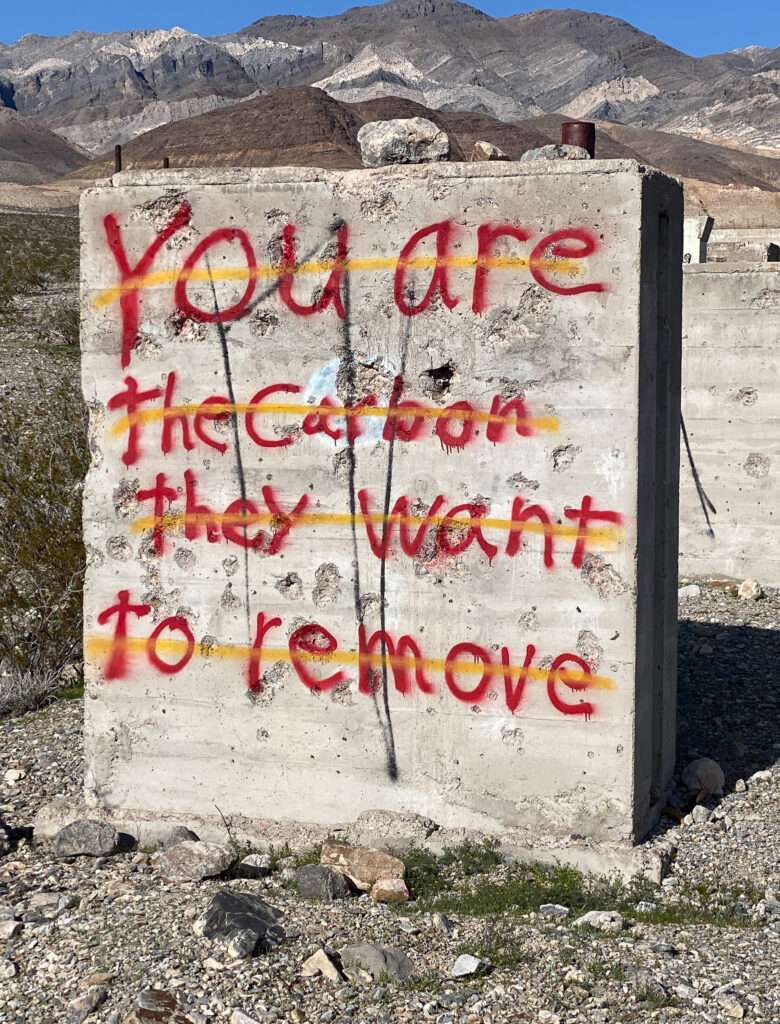
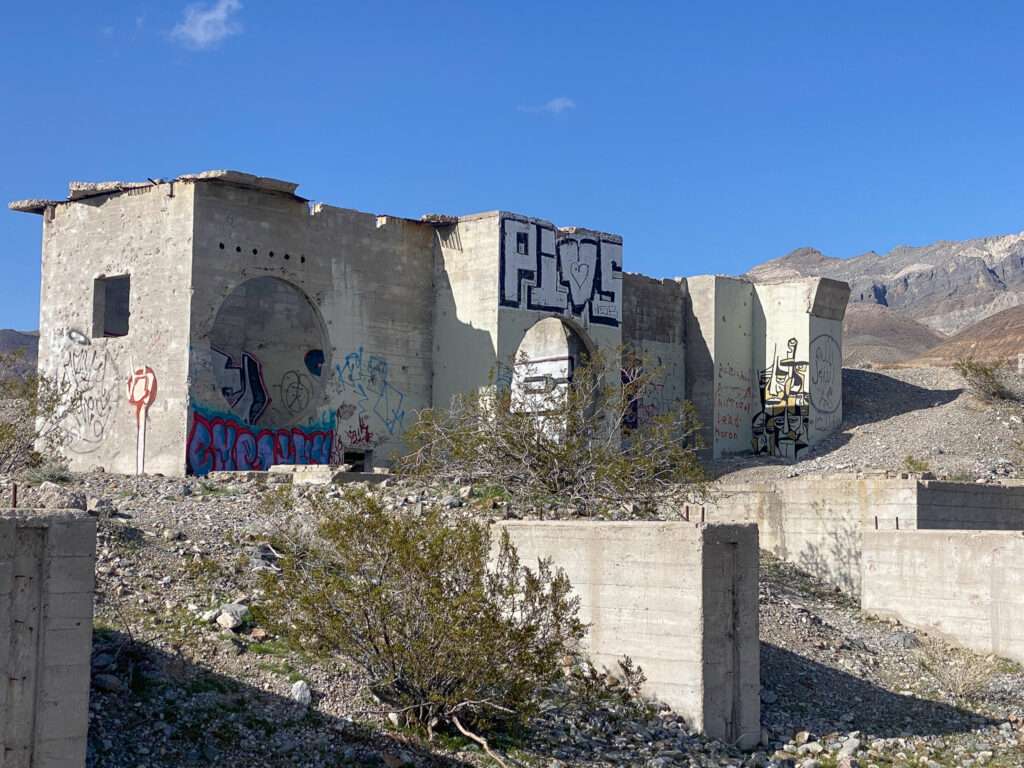
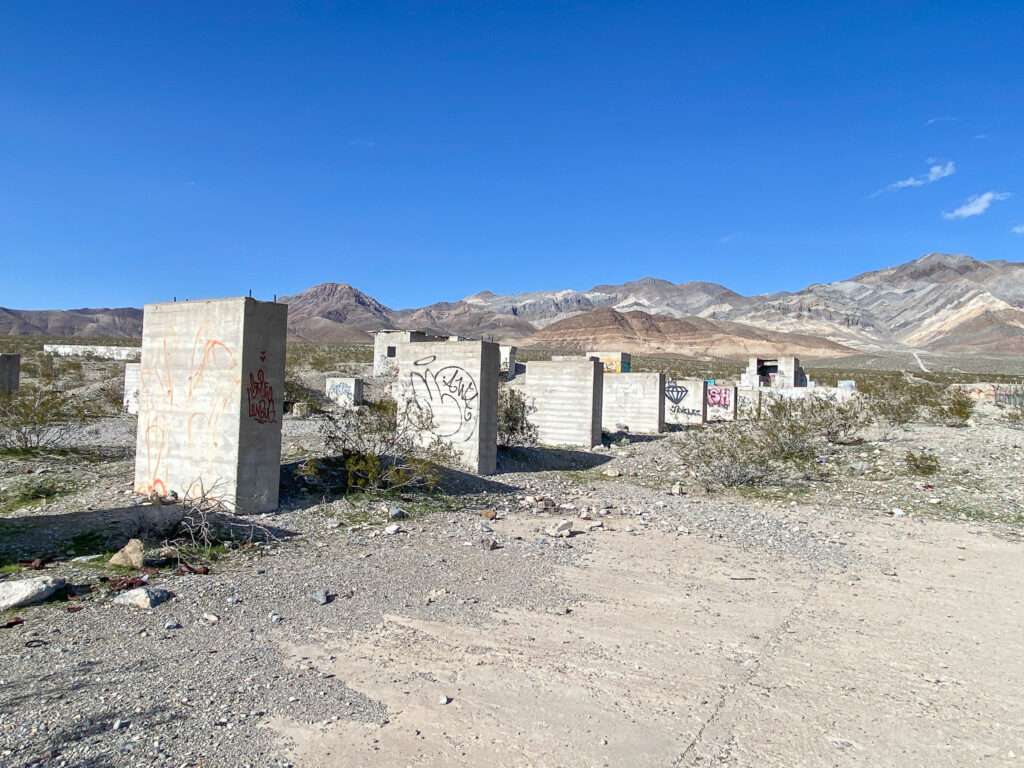
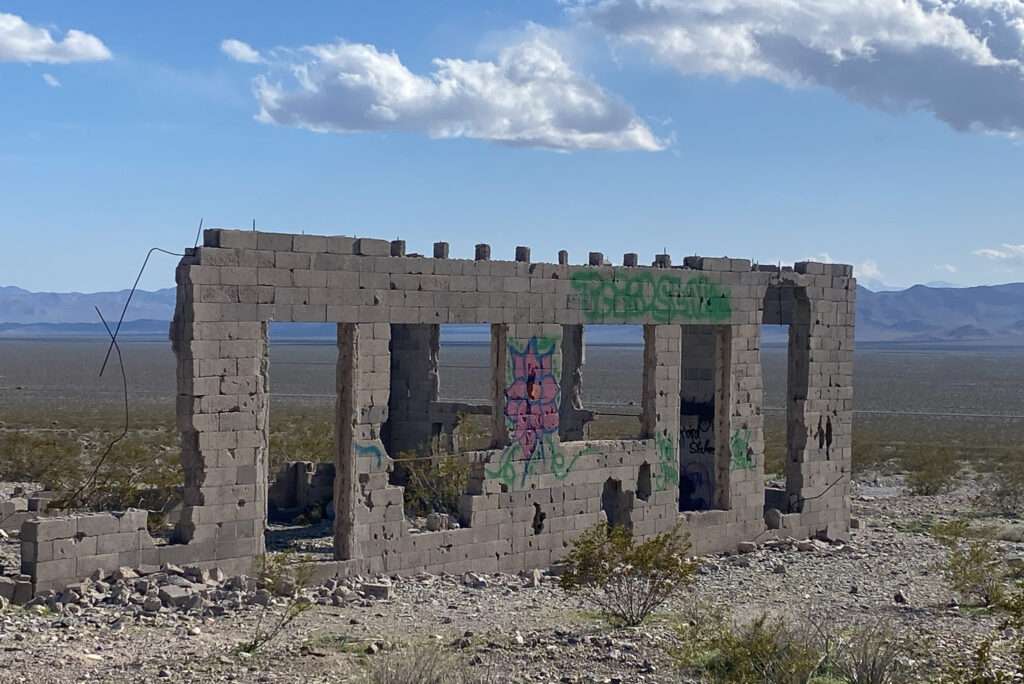
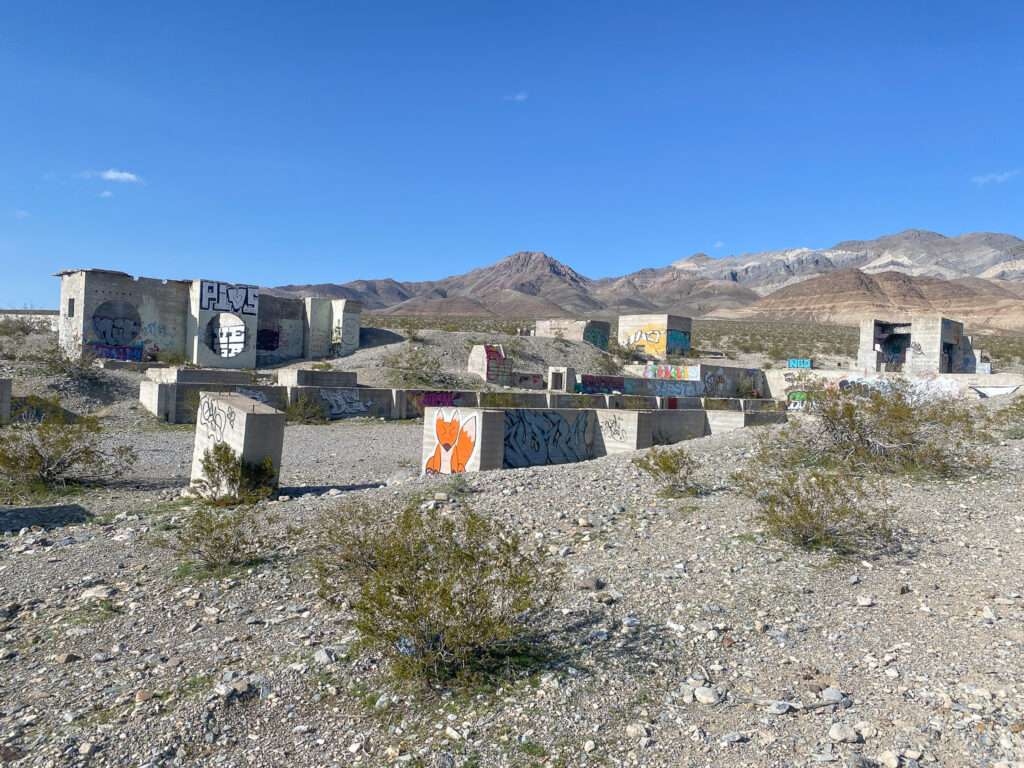
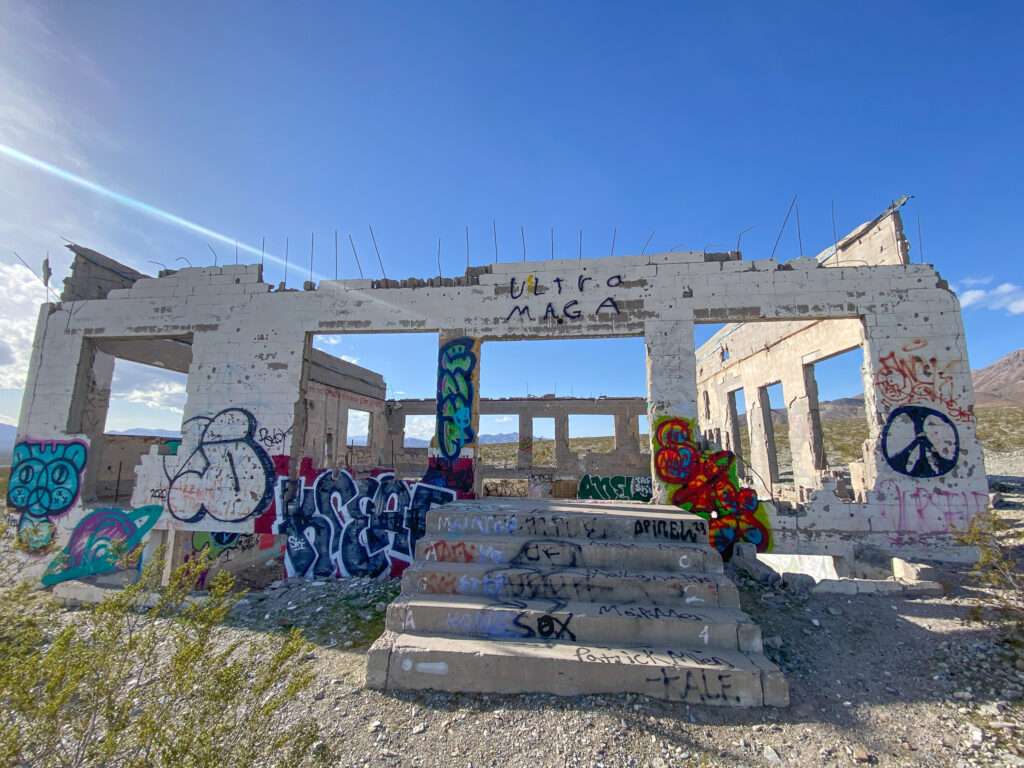
Original/Orion/Aurum/Armagosa/Armagosa City

(Photo credit: Legends of America)
Original was not the original name of Original. Following the discovery of gold in 1904 by Frank “Shorty” Harris and Ernest Cross, a small mining camp named Orion or Aurum started at the mine site. Soon after, two more camps were established below the mine, Armagosa (Armagosa City) and Bullrog, a separate town from the Bullfrog later located below Rhyolite.
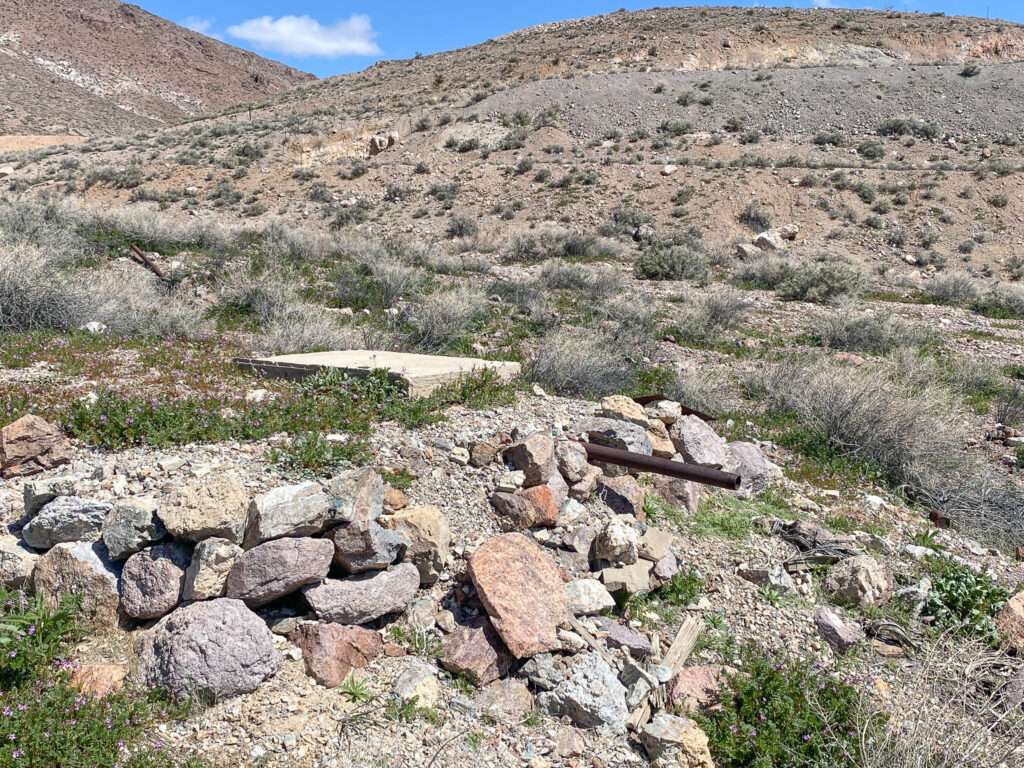

Armagosa was the largest of the towns, although it consisted solely of tents. It had stores, restaurants, a post office, a hotel, and seven essential saloons. By 1905, Armagosa had a phone line connecting to Goldfield and a stage line to Las Vegas. However, water was an issue with the Amargosa Townsite Company, and the town was soon moved to the nearby townsite of Bonanza. Within a month, the town had moved and been renamed Bullfrog.
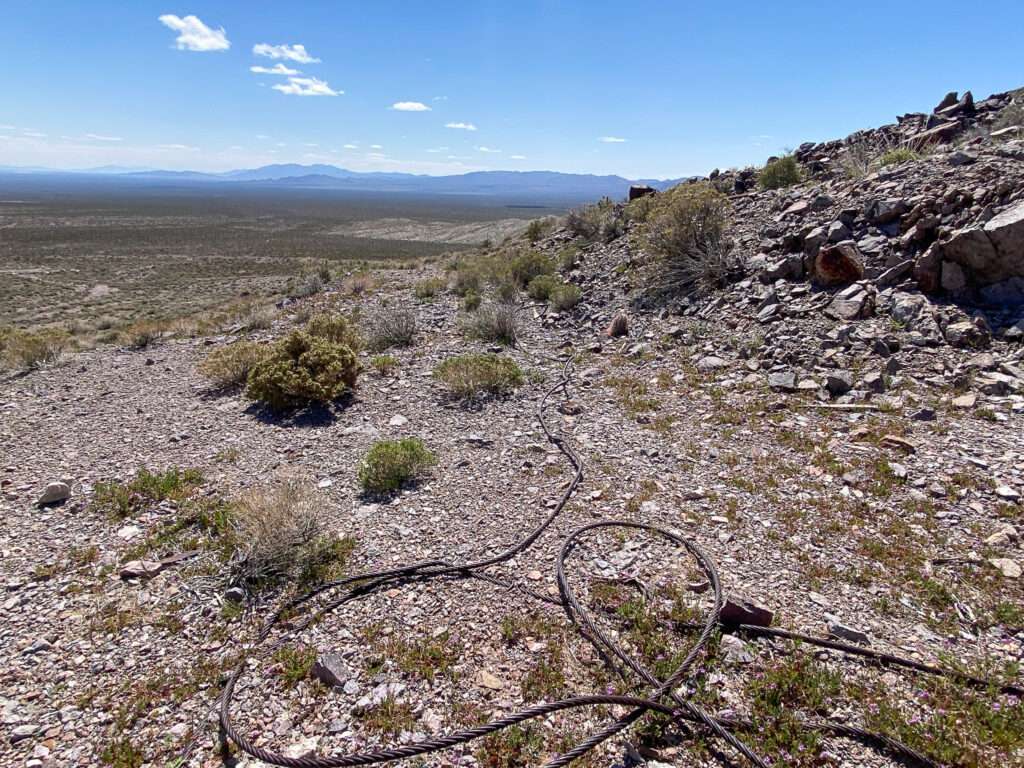
Shorty Haris and Cross sold the Original Bullfrog Mine in 1907 to the Original Bullfrog Mines Syndicate. The Las Vegas & Tonopah Railroad arrived below the mine. They built a station named Original. The stop operated until 1914. A revival of the mine in 1917 failed. In 1924 the mine was worked by multiple leasers with little success.
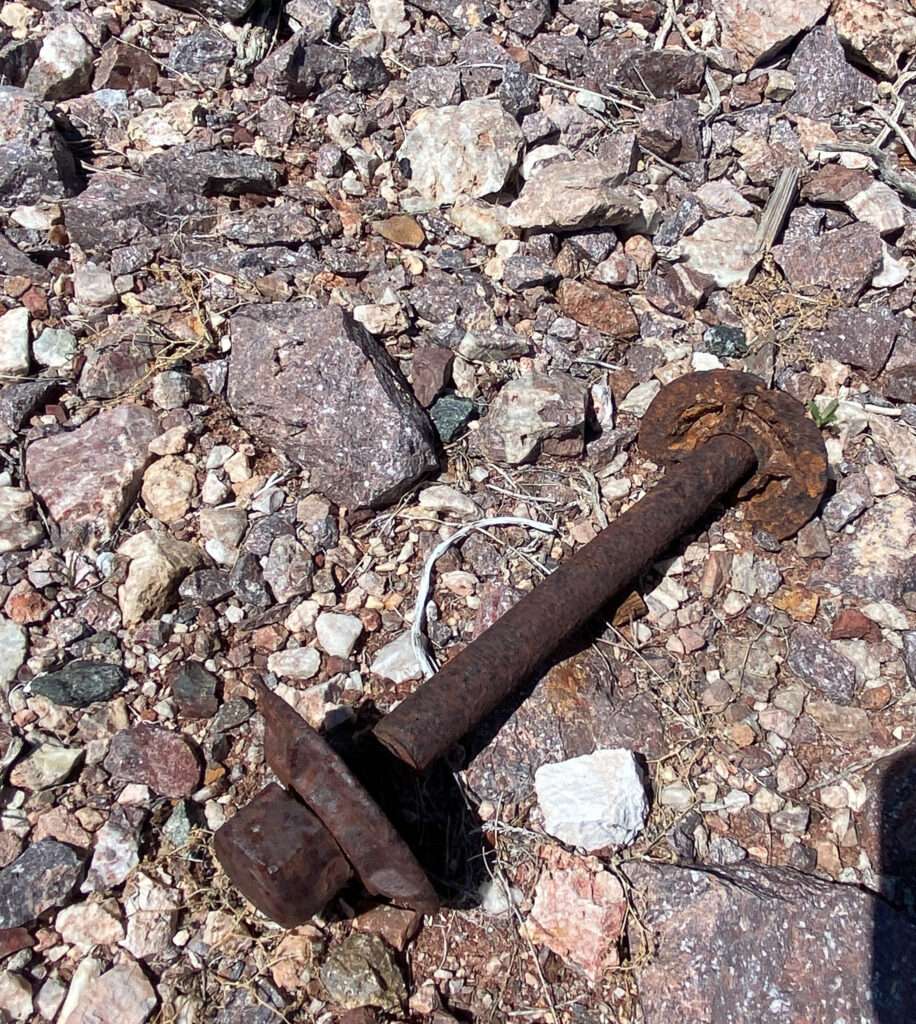
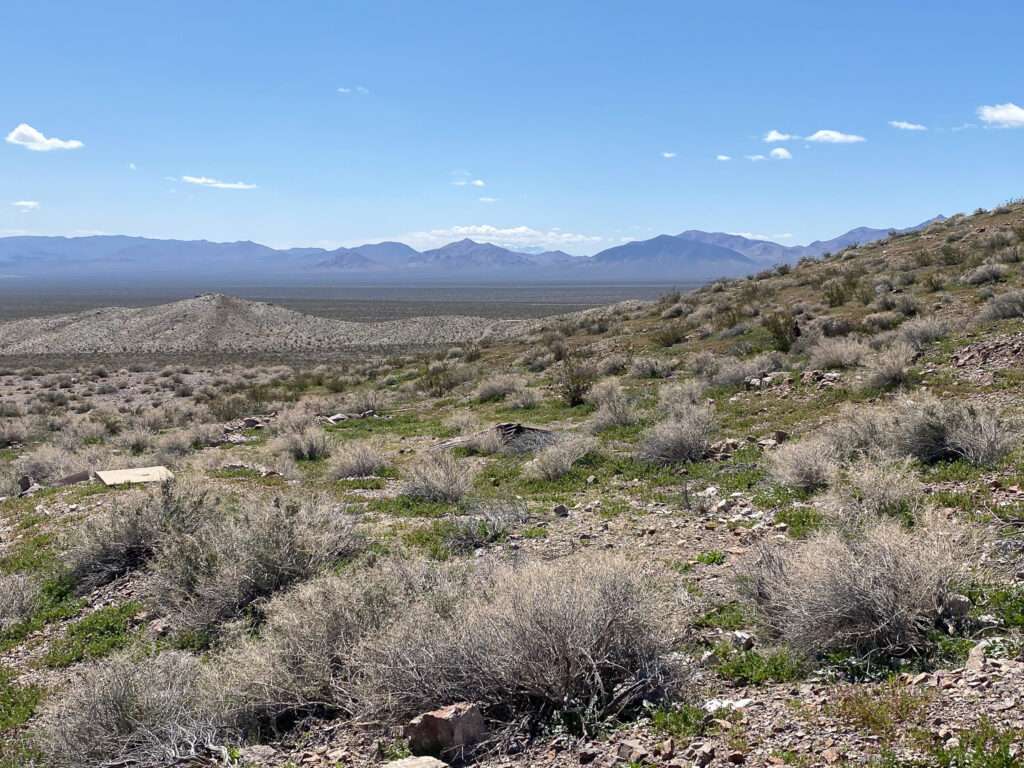

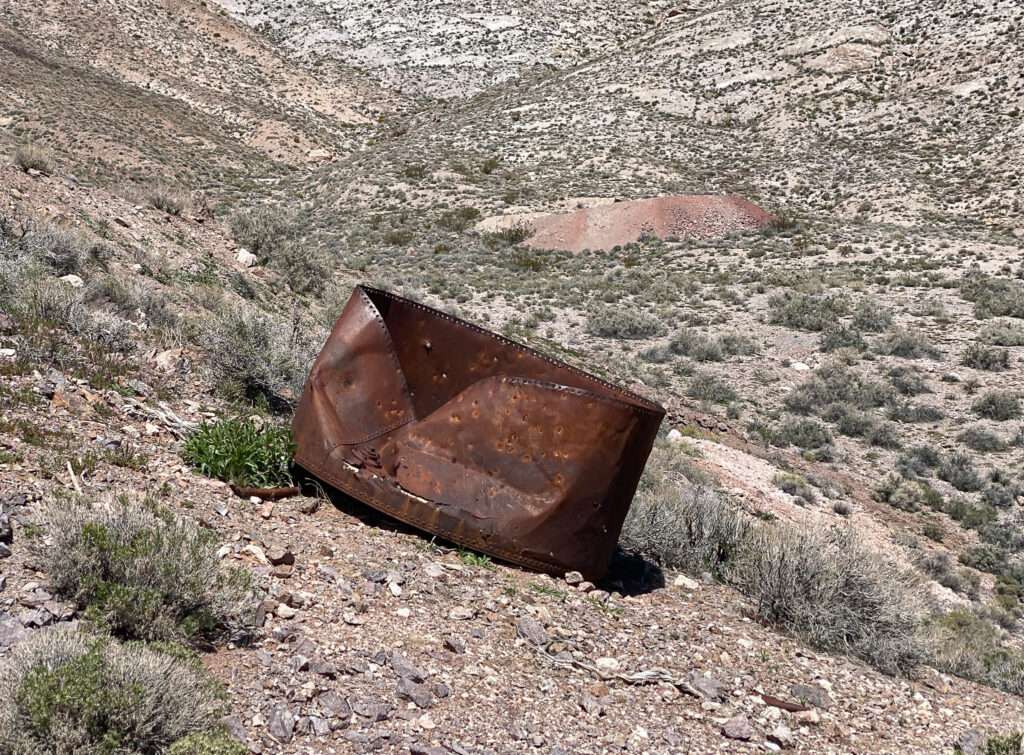
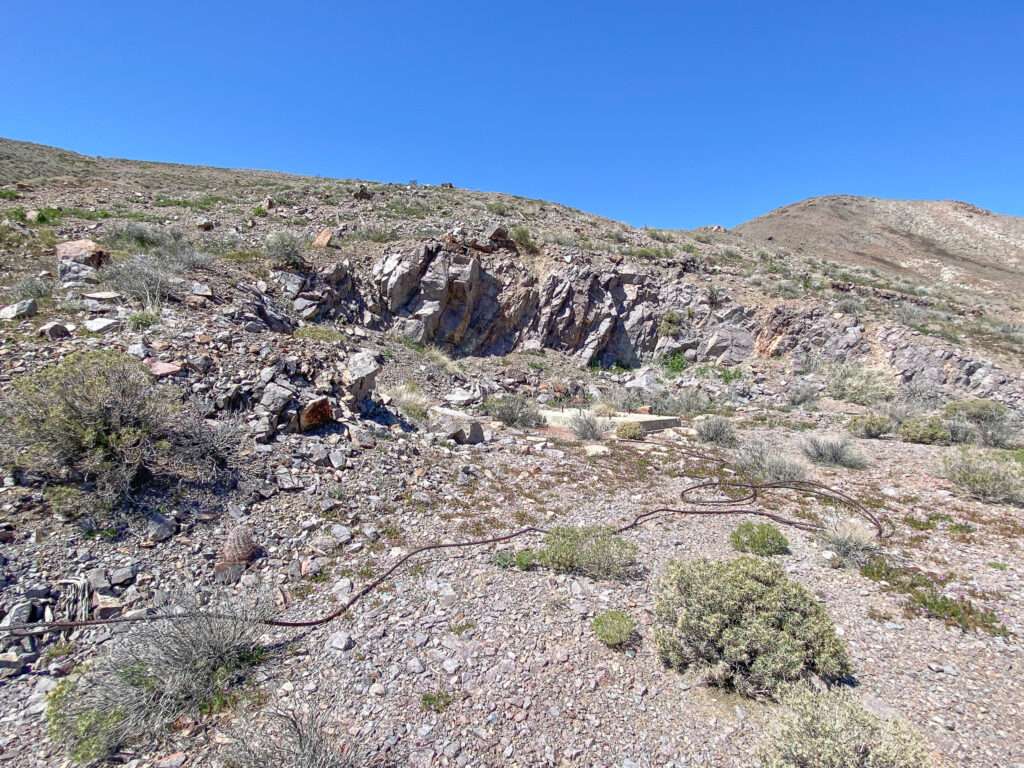
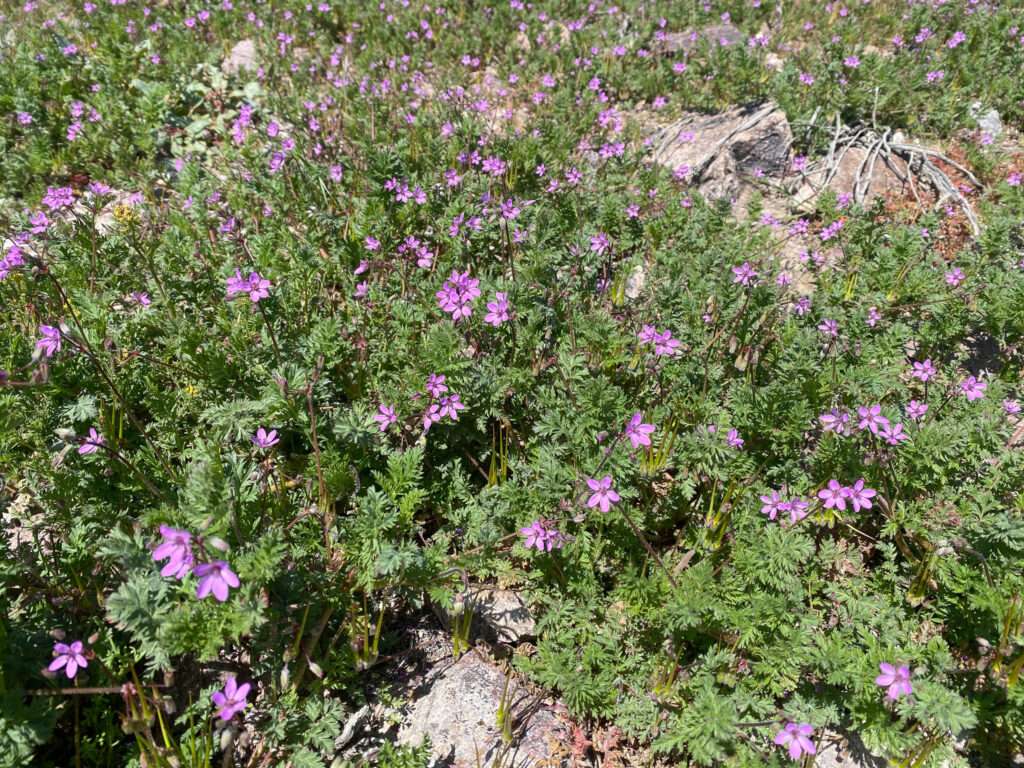
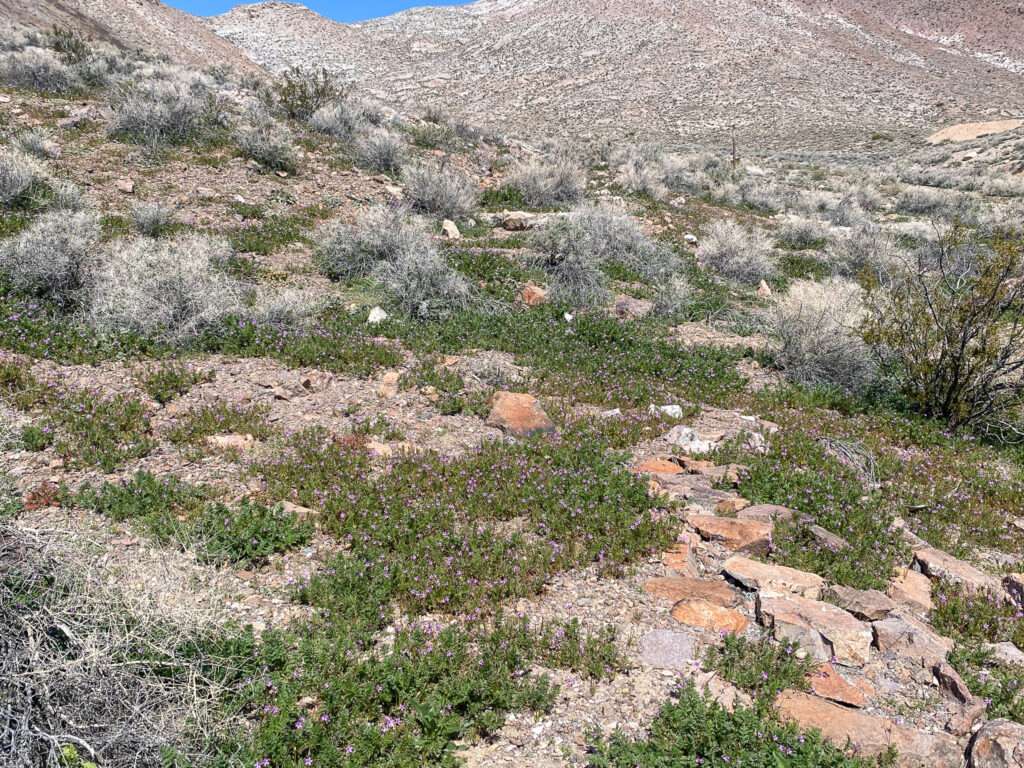

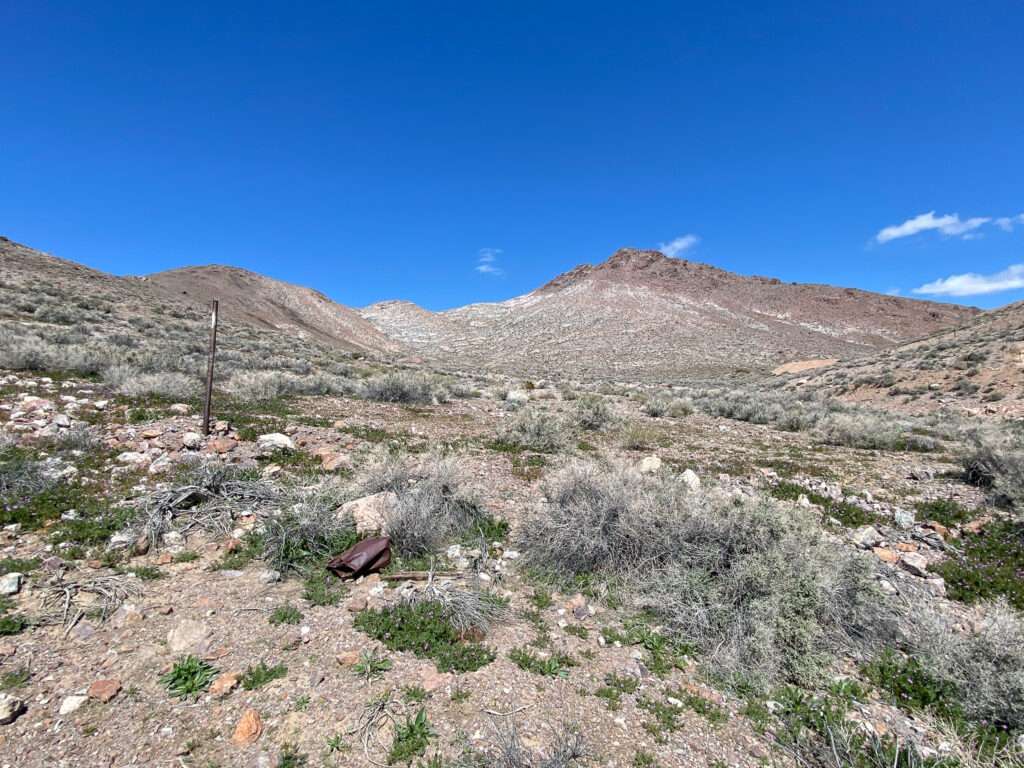

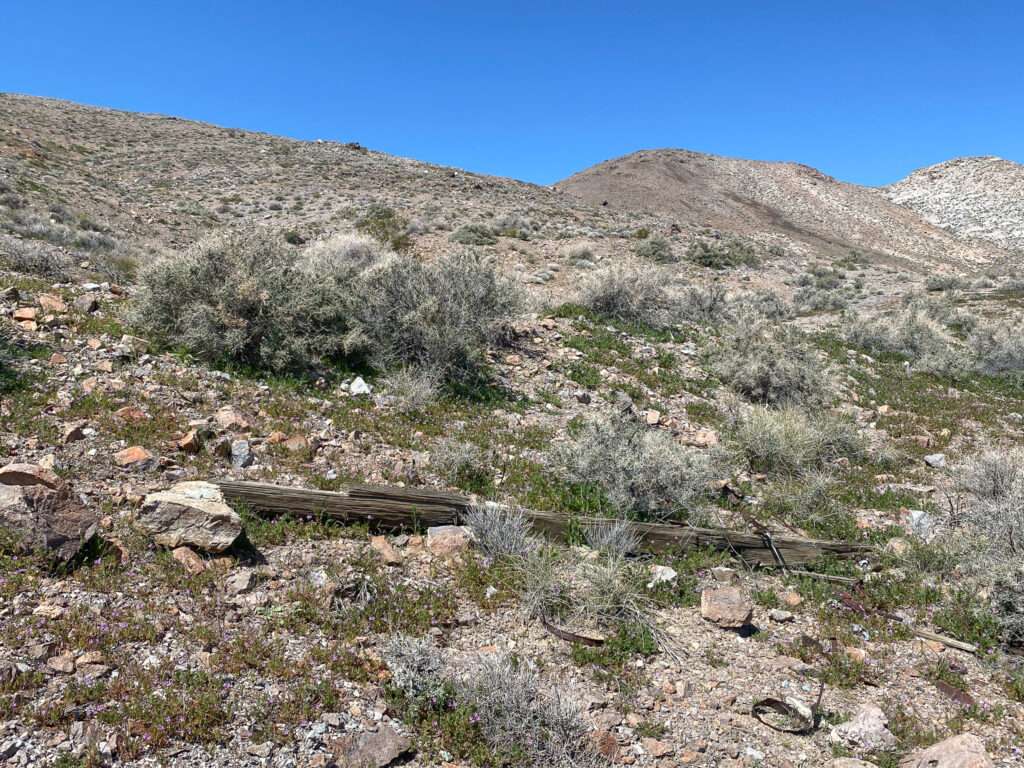
Bullfrog
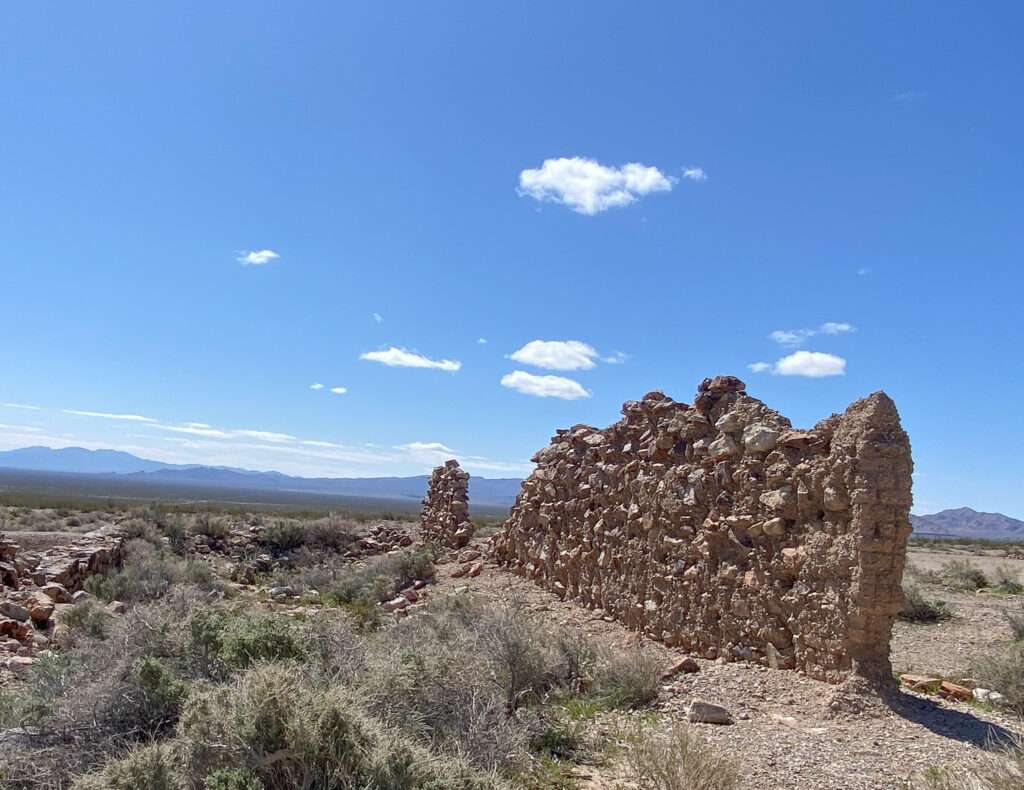
In 1905, the town of Bullfrog was platted below Rhyolite. Armagosa City relocated to the site, starting the town of Bullfrog.
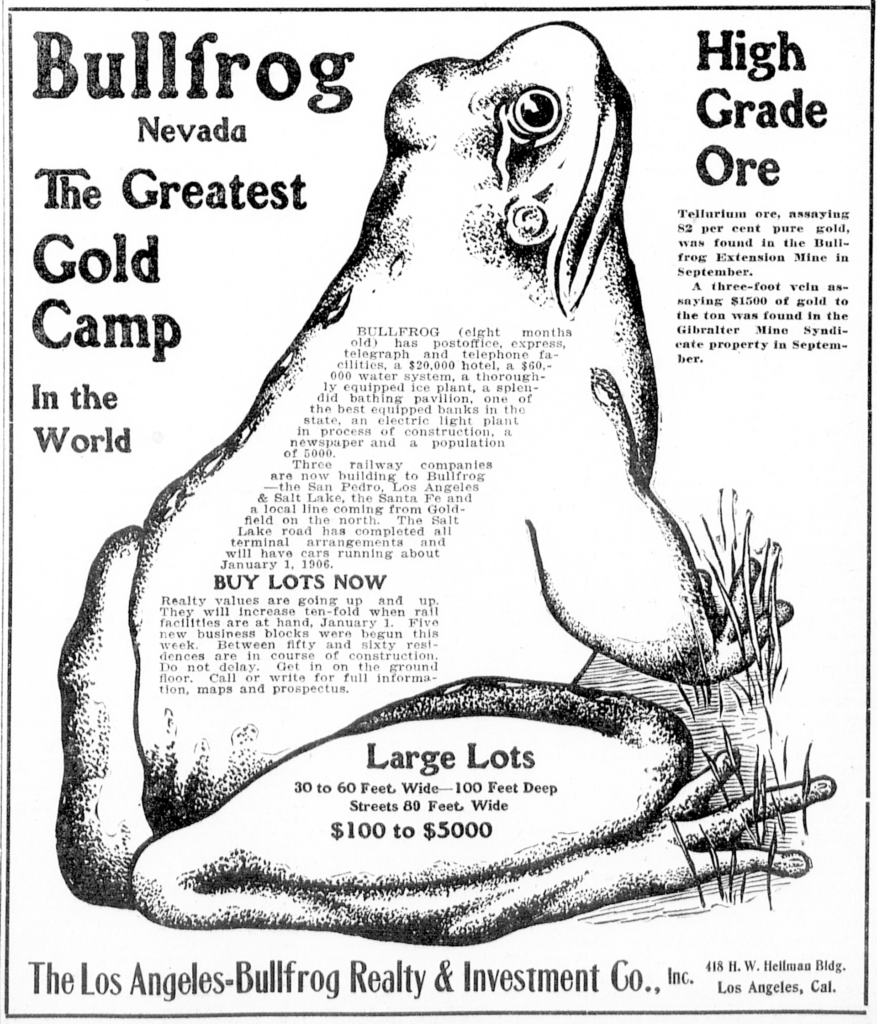
The fight between the two towns centered on water. Within a year, Bullfrog had a population of over 1000, a water system, a bank, a hotel, a business district, telephone service and a fast auto stage. In 1906, Ryolite won the battle and businesses and buildings moved to Rhyolite. Some fine homes remained in Bullfrog, and post office lasted until 1909.
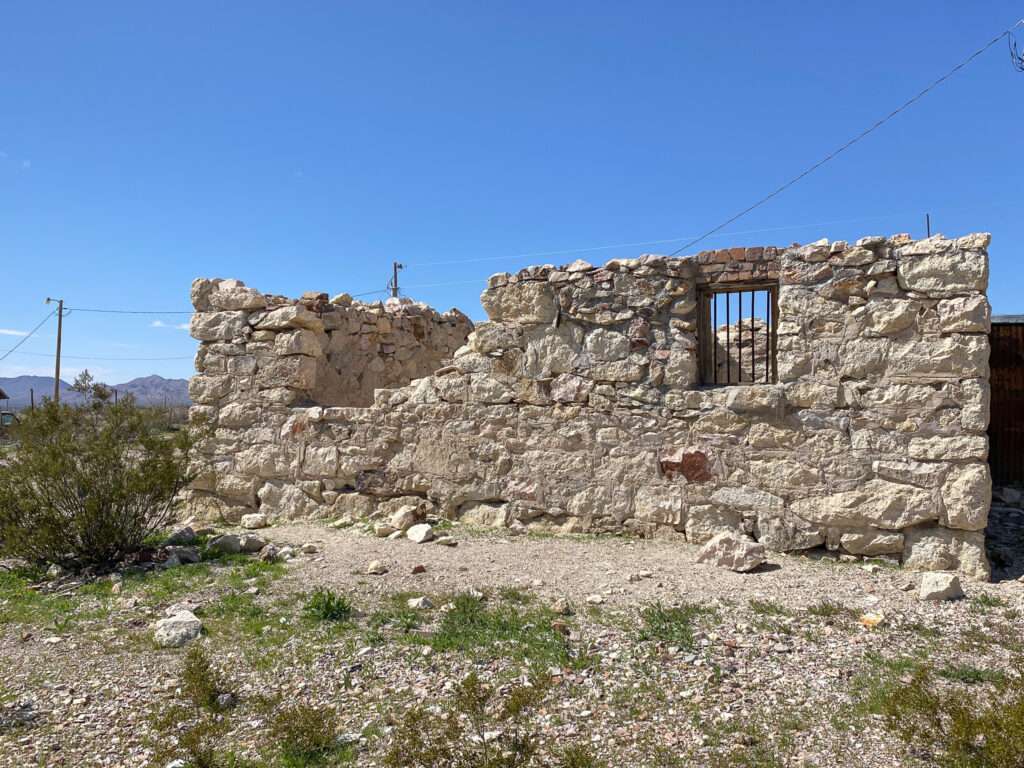
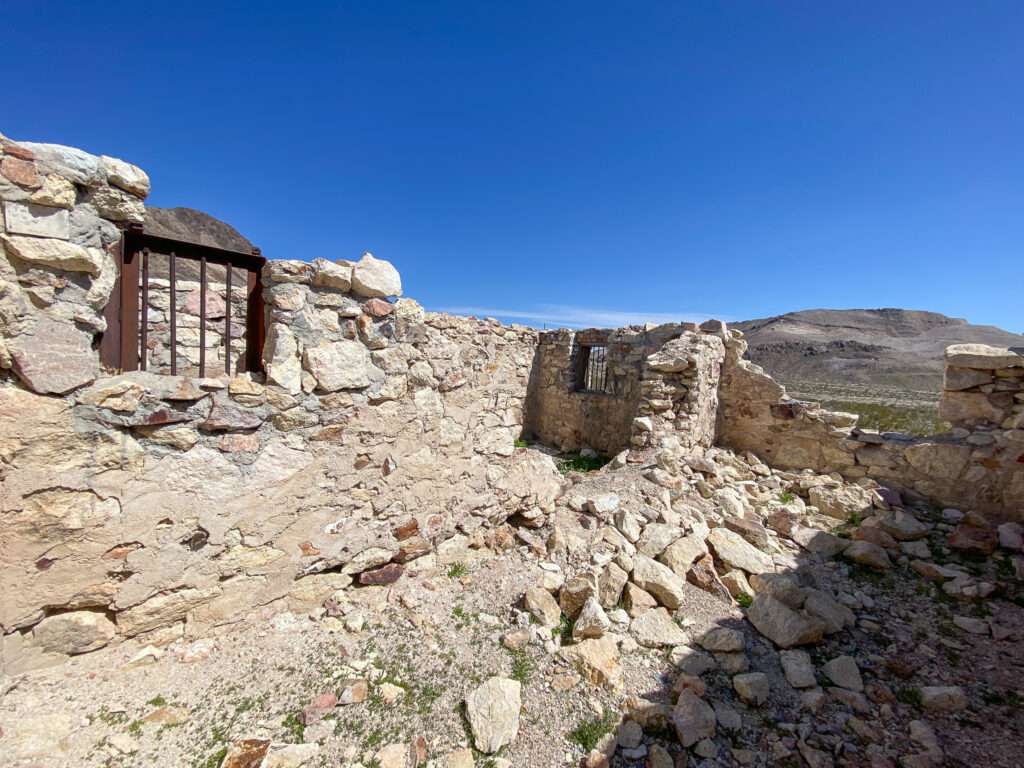
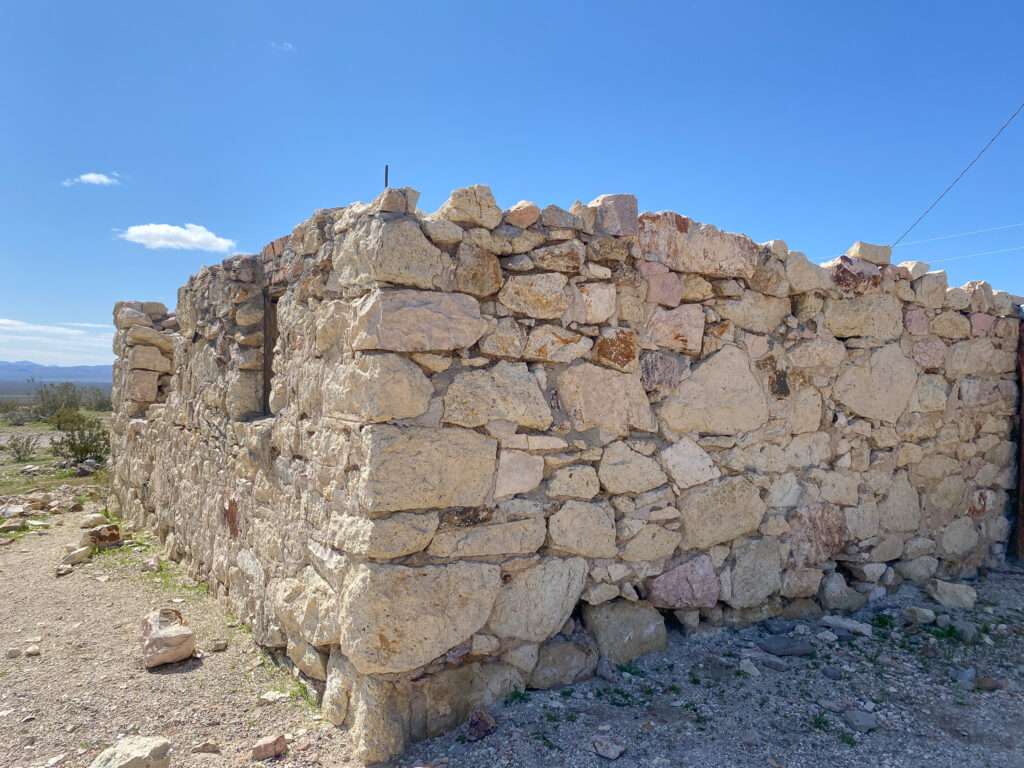
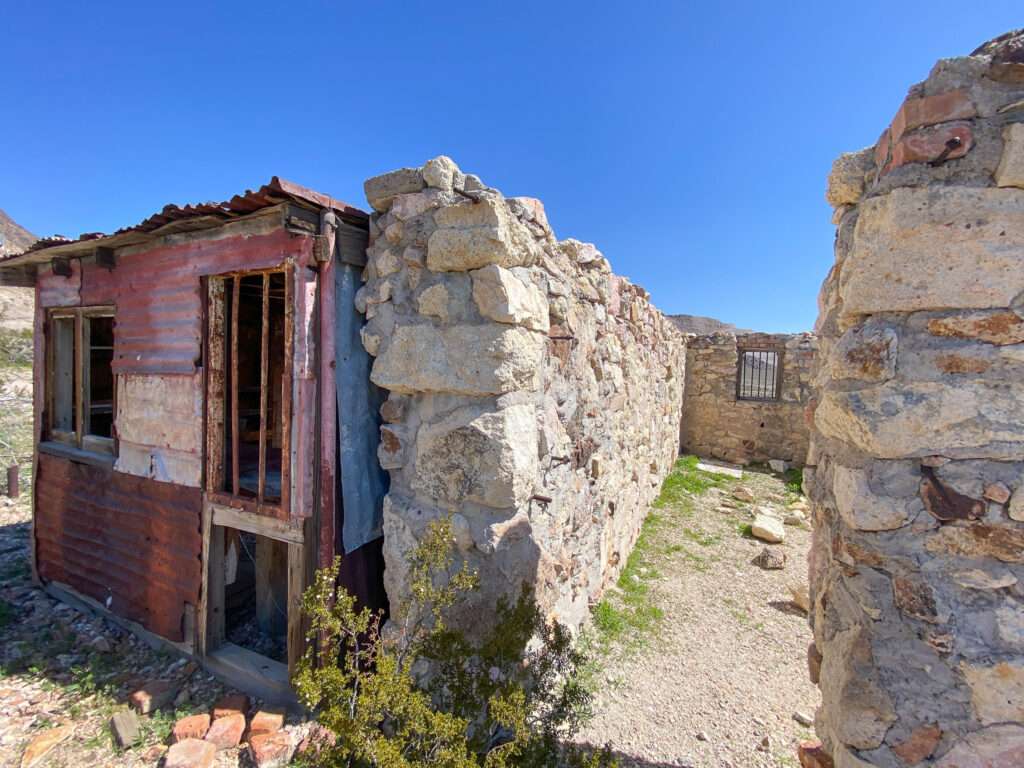
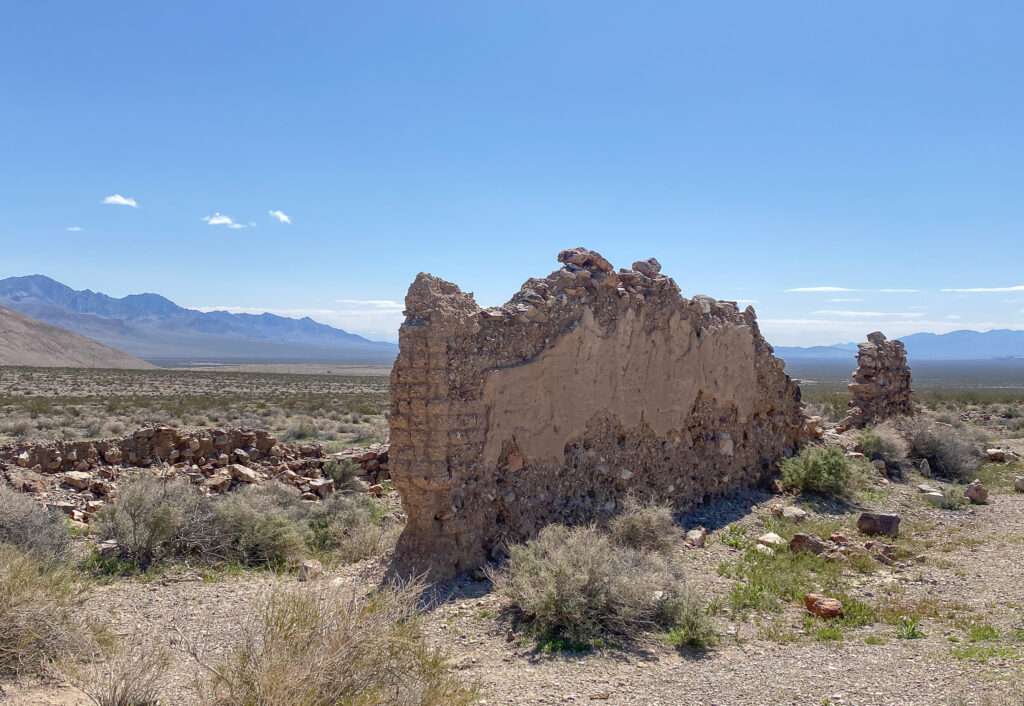
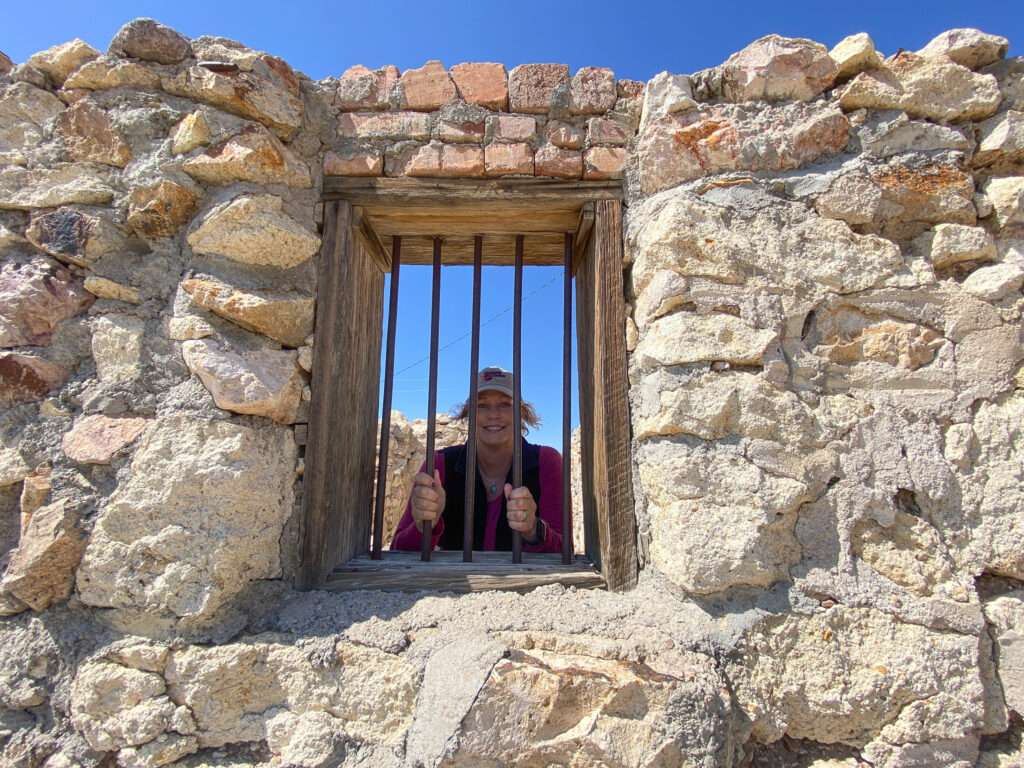
Death Valley National Park, Nevada
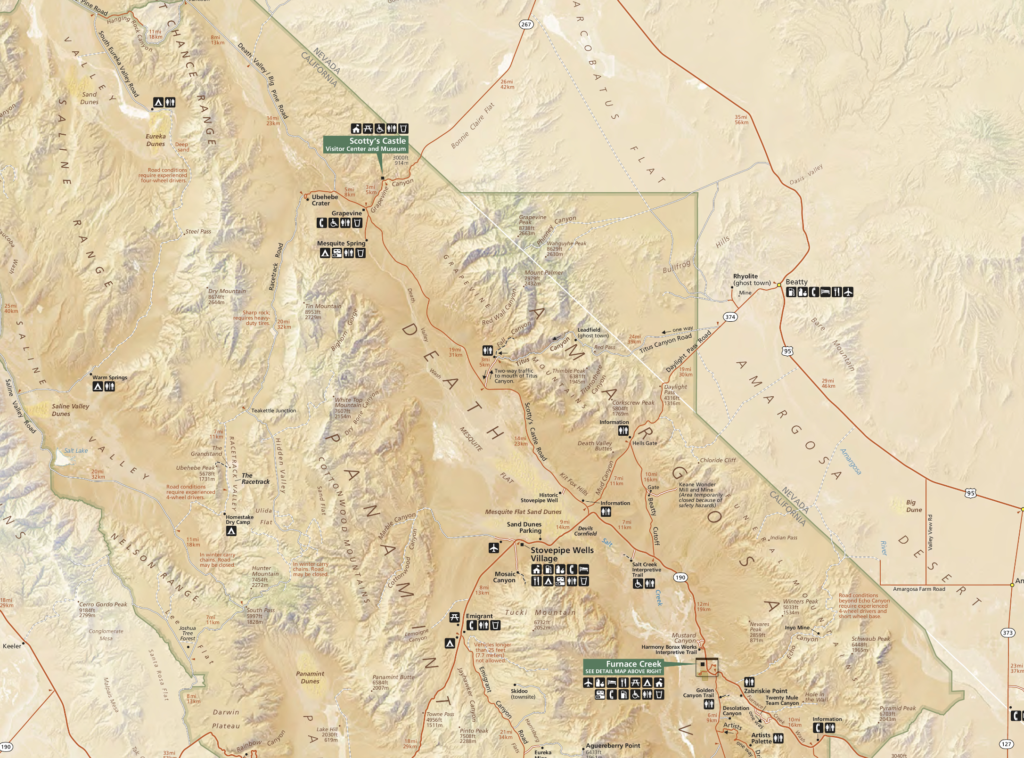
Did you know a portion of Death Valley is in Nevada? Yes, Nevada. This section of the park even includes several ghost towns!
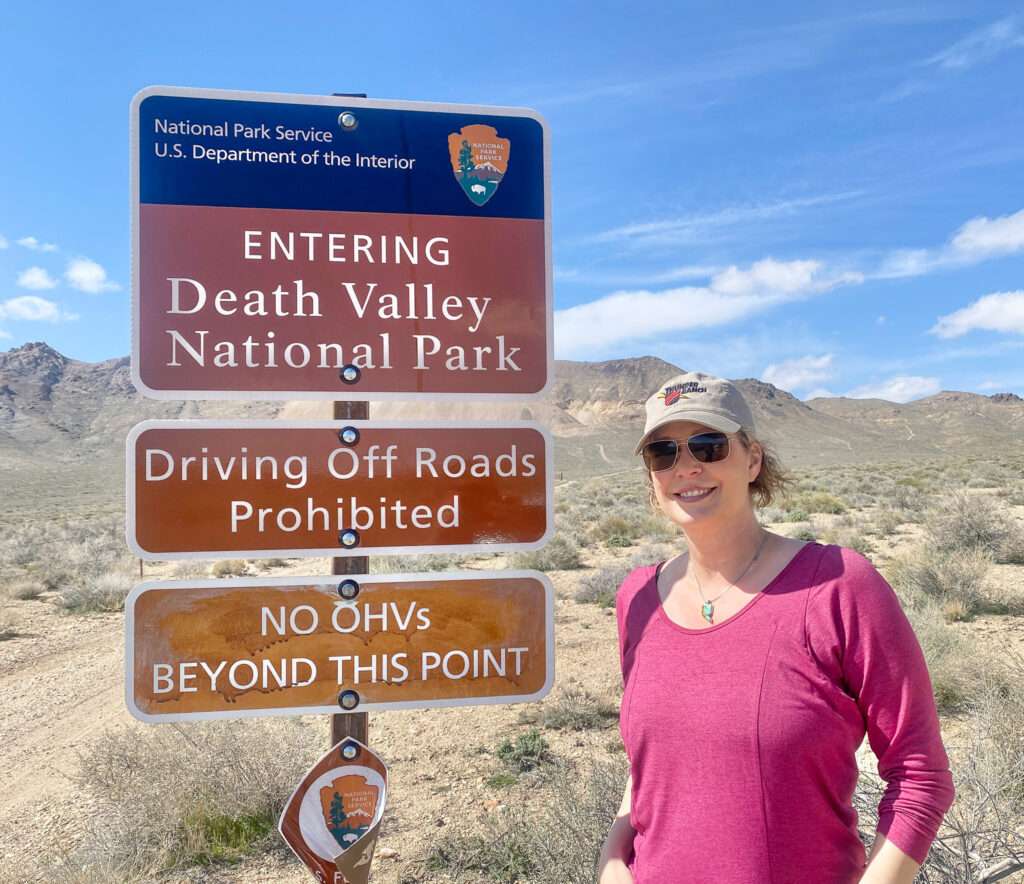
Gold Bar
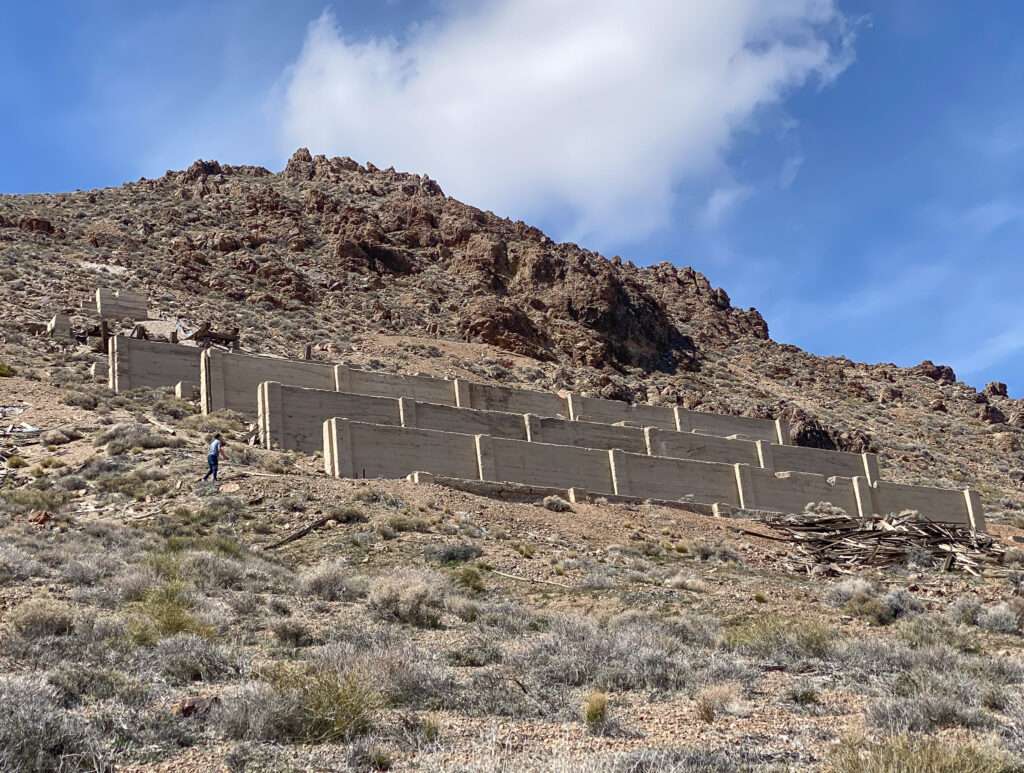
Gold Bar was one of the largest camps in the Bullfrog Mining District. Developers drew out the town layout in 1905. Charles Schwab invested in the mine in 1906, causing a growth spurt. Gold Bar had a population of fifty.

(Photo credit: Legends of America)
The Homestake mine had rich ore and a 10-stamp mill was erected in early 1908. The crushed ore was shipped on the Las Vegas & Tonopah Railroad, several miles from Gold Bar. Ore rapidly ran out, and the mill stopped production in May 1908. Gold Bar was fraught with fraud and changed legal ownership several times. In 1911, the mill was relocated to Round Mountian and buildings to Rhyolite.
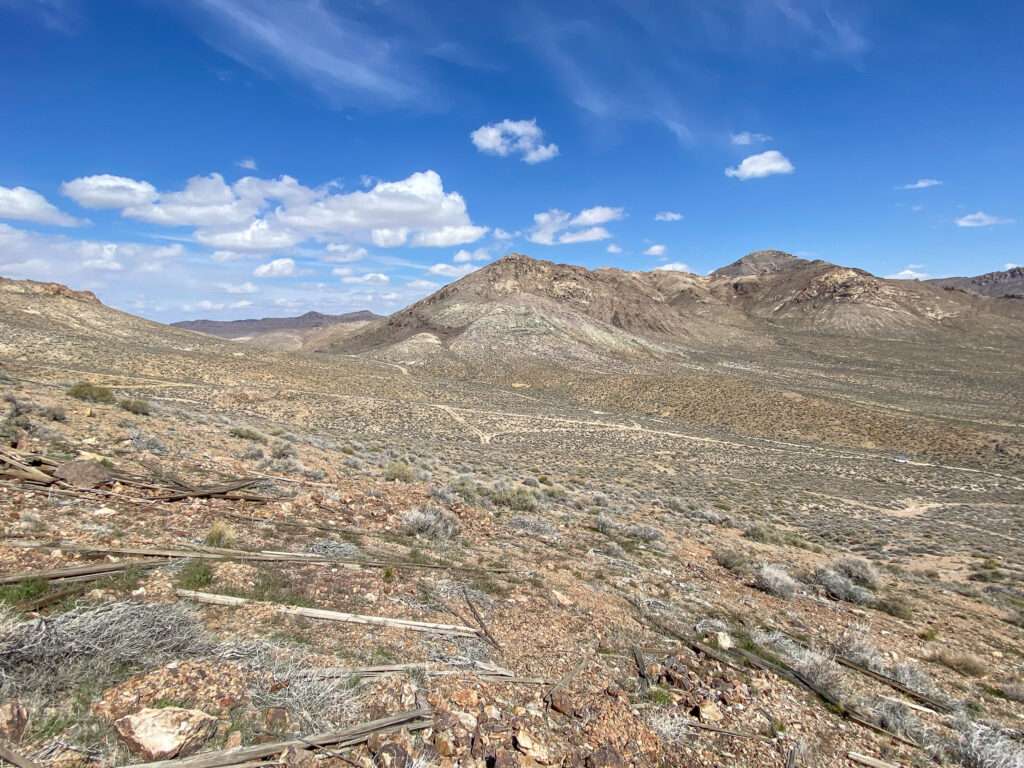

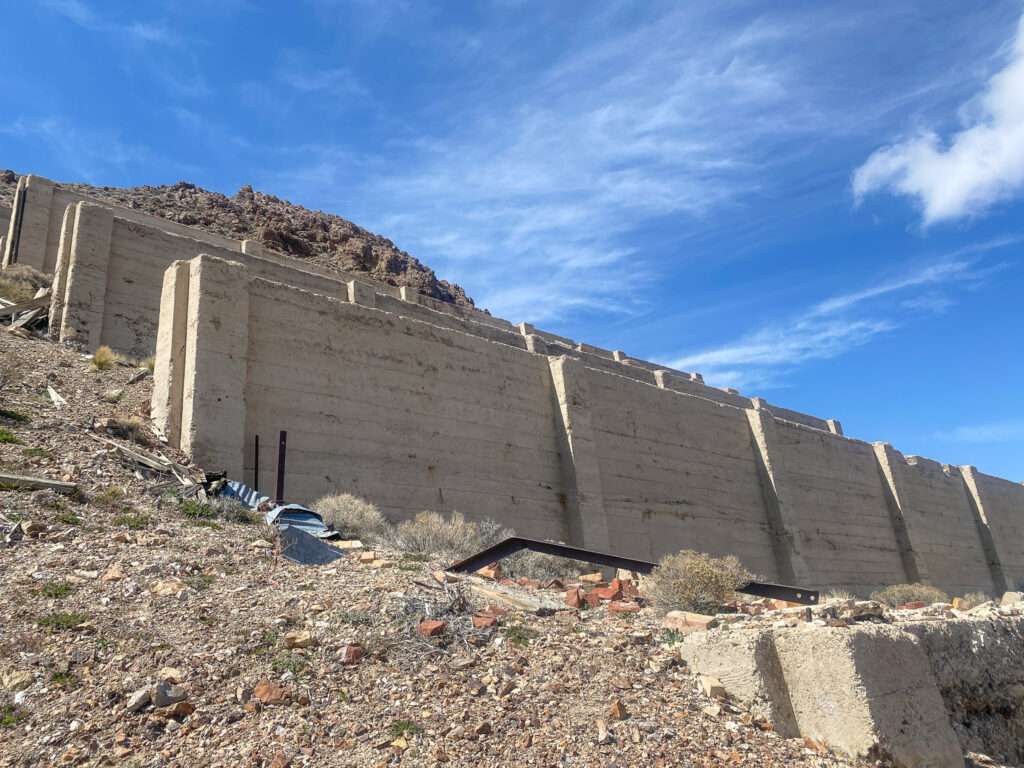
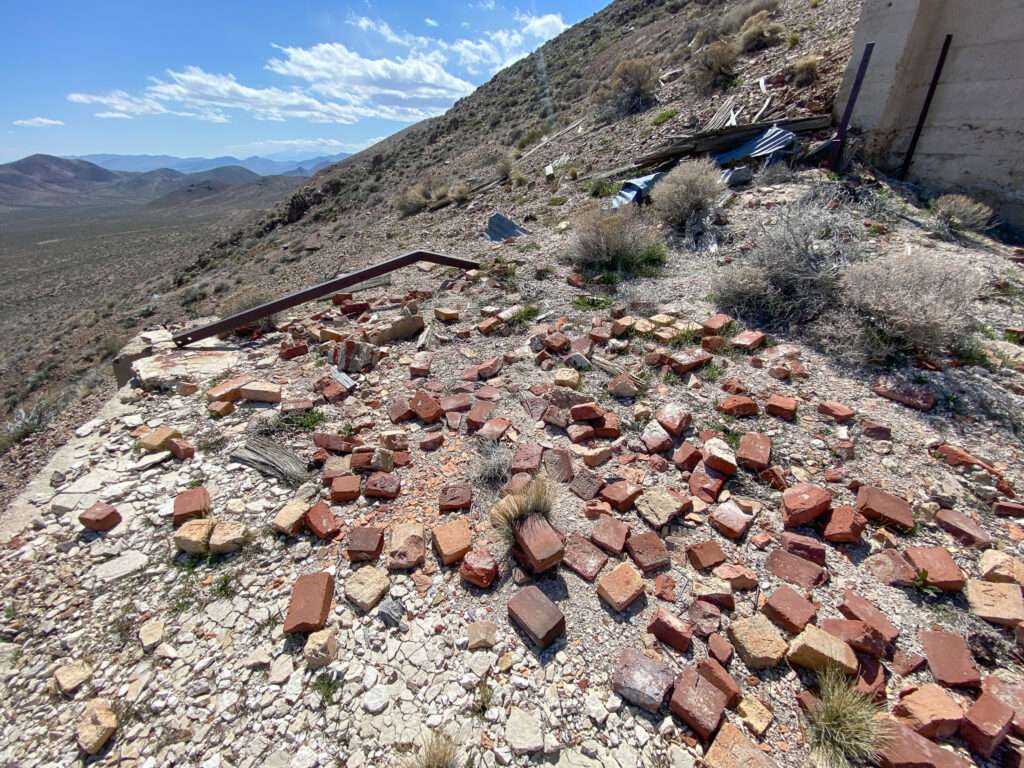
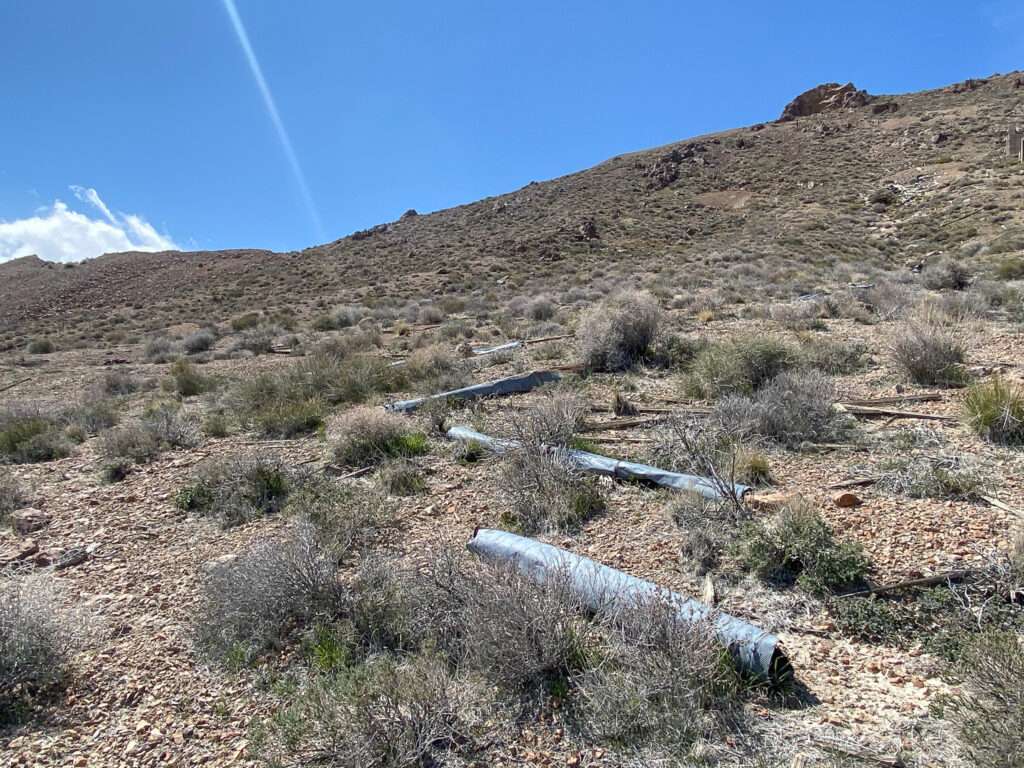
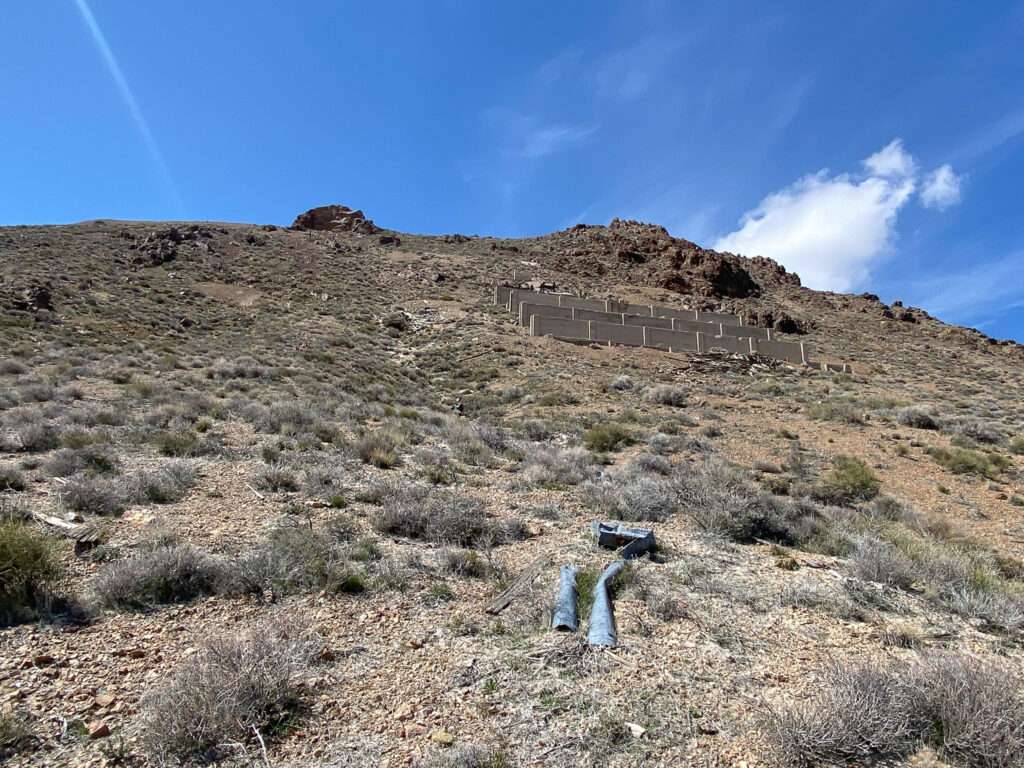
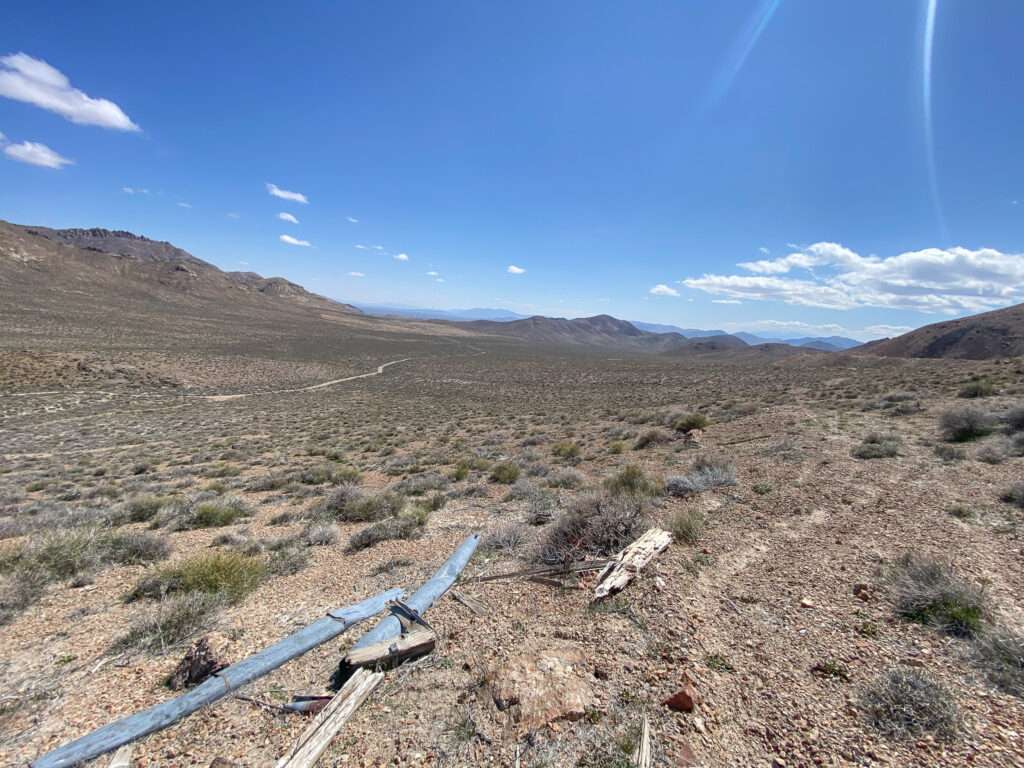
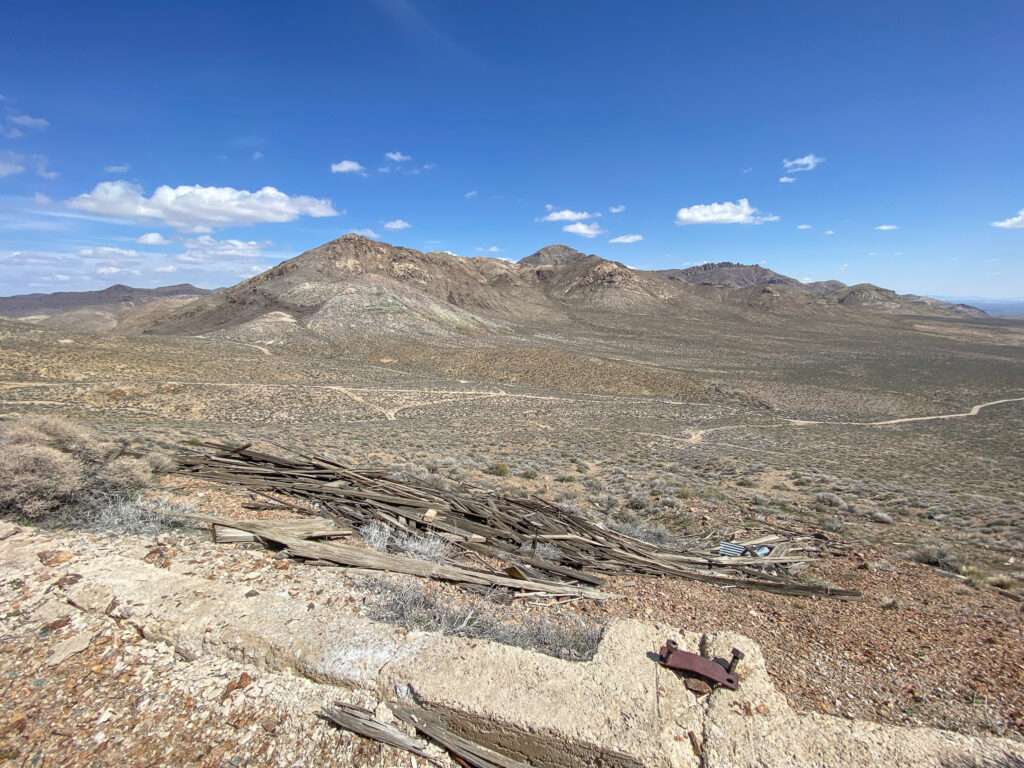
We didn’t plan to hike to the top of the mill, only a flat area. But the farther we hiked, the farther we wanted to go.
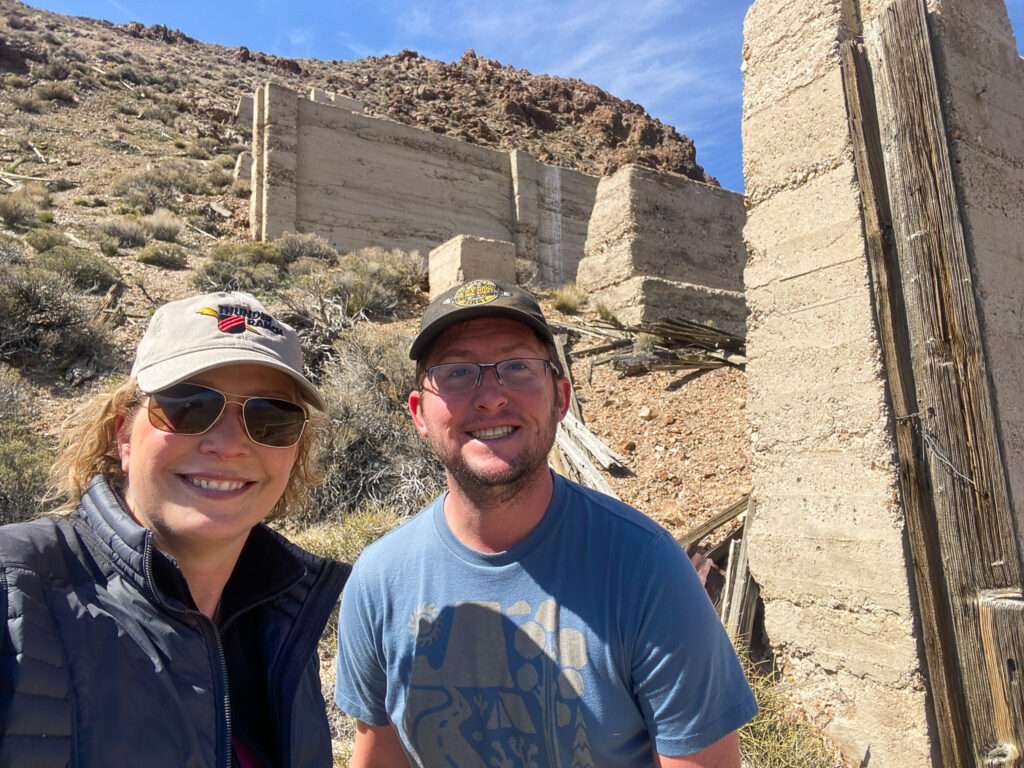
Las Vegas & Tonopah Rail Road
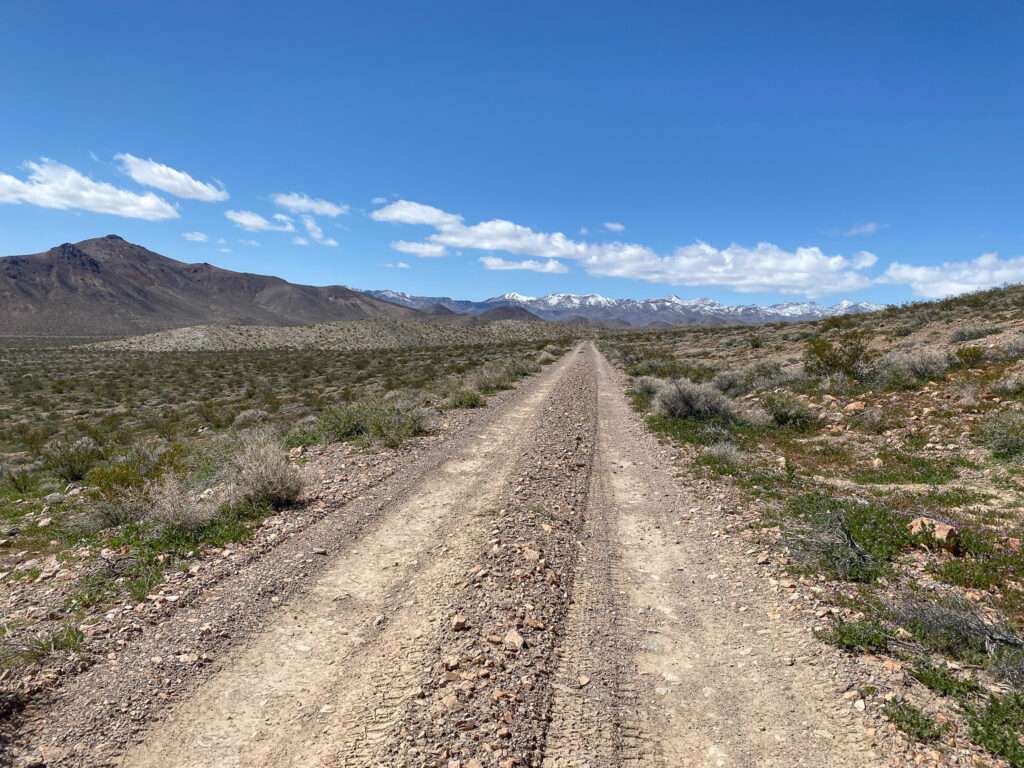
The road connecting much of the Bullfrog district is the old bed of the LV&T railroad. It is narrow in some places, only a train width wide. Culverts undercut the grade and a few have collapsed. We intended to go farther, but without Honey Badger and a spare tire on the Grand Cherokee, we decided it was best not to push our luck.

(Photo credit: Legends of America)

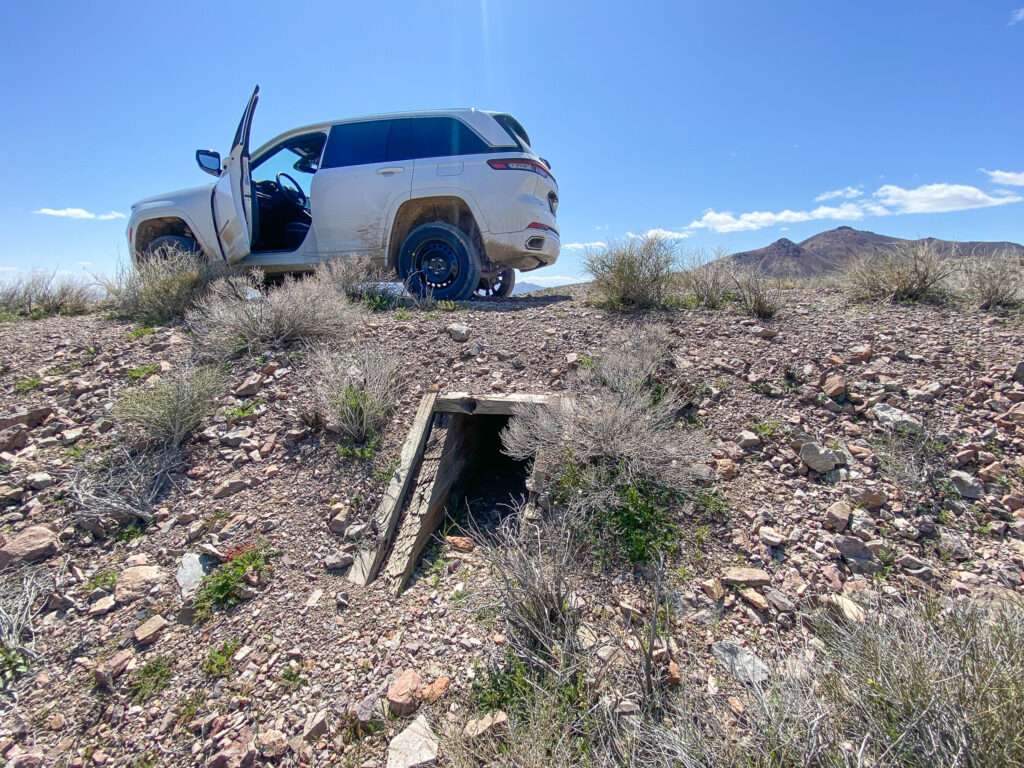
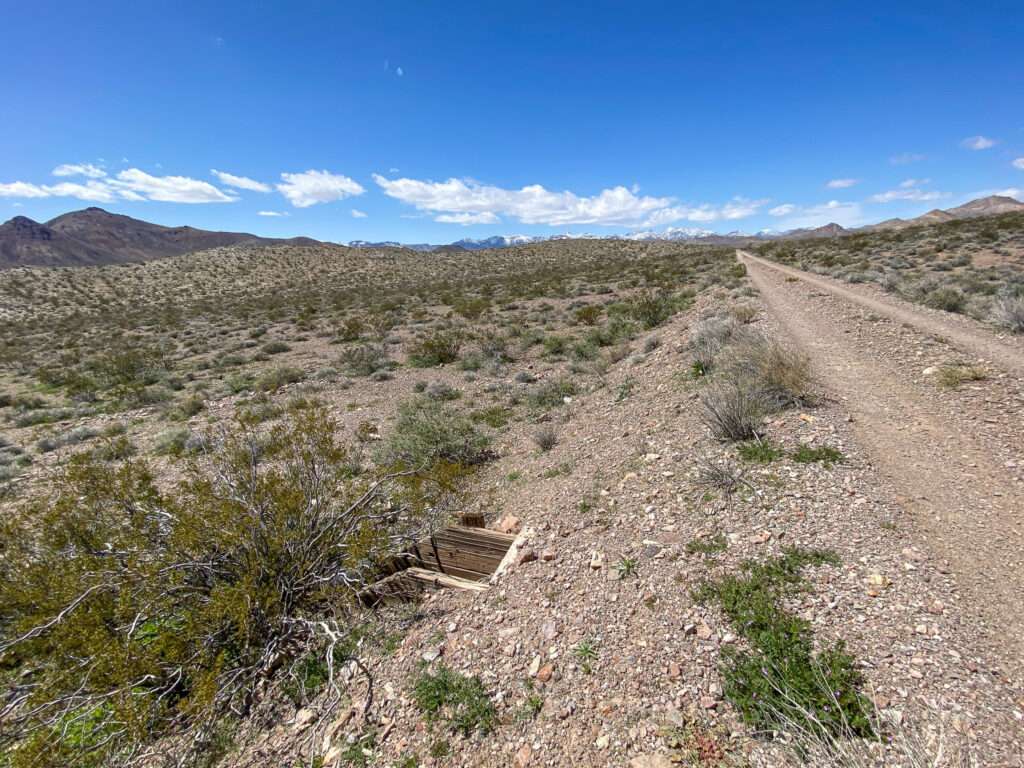
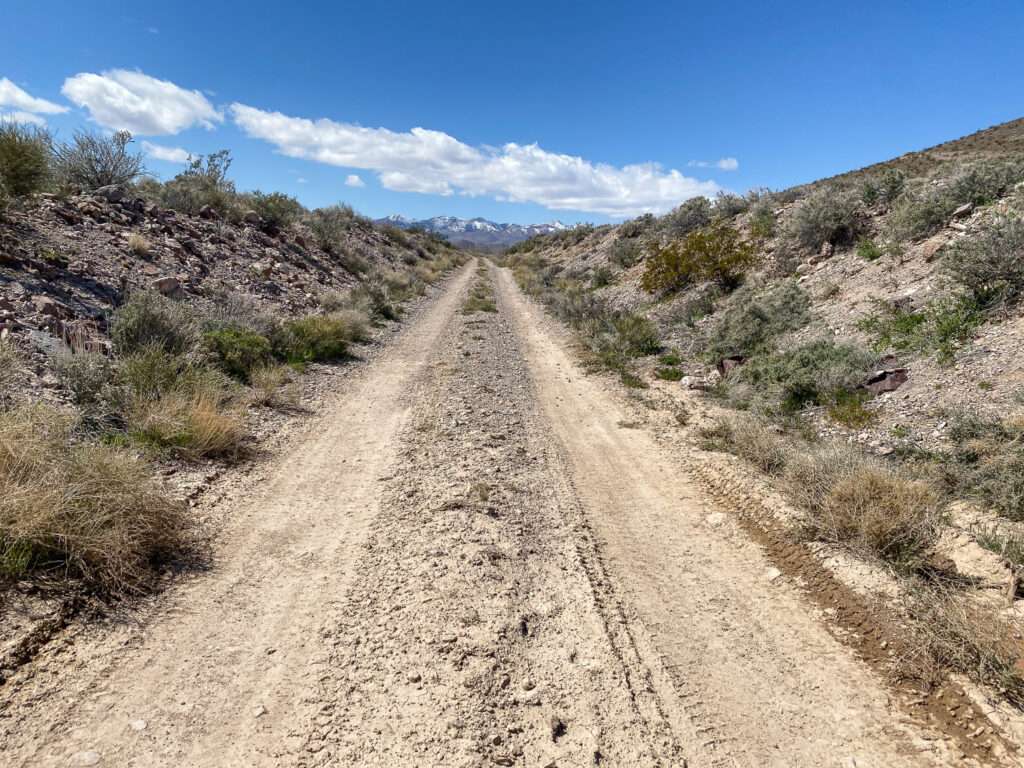
The LV&T covered 198 miles. The ride from Las Vegas to Beatty was 118 miles and six hours. The Beatty to Goldfield section ran between 1908 and 1914, but the line through the Bullfrog district until 1917-1918.


(Credit: Wikipedia)
Bullfrog/Rhyolite Cemetery
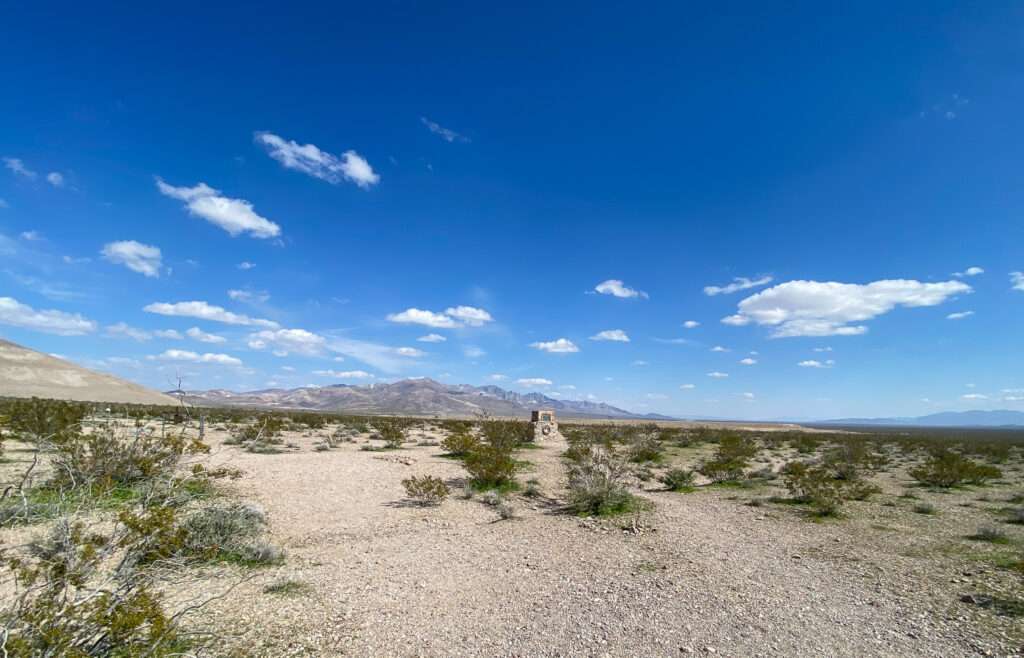
The Bullfrog/Rhyolite cemetery was in use between 1904 and 1912. Aside from a memorial, most graves and headstones have faded into the desert. While some are marked with names and dates, many only have a cross made of wood or rock, or are unmarked.
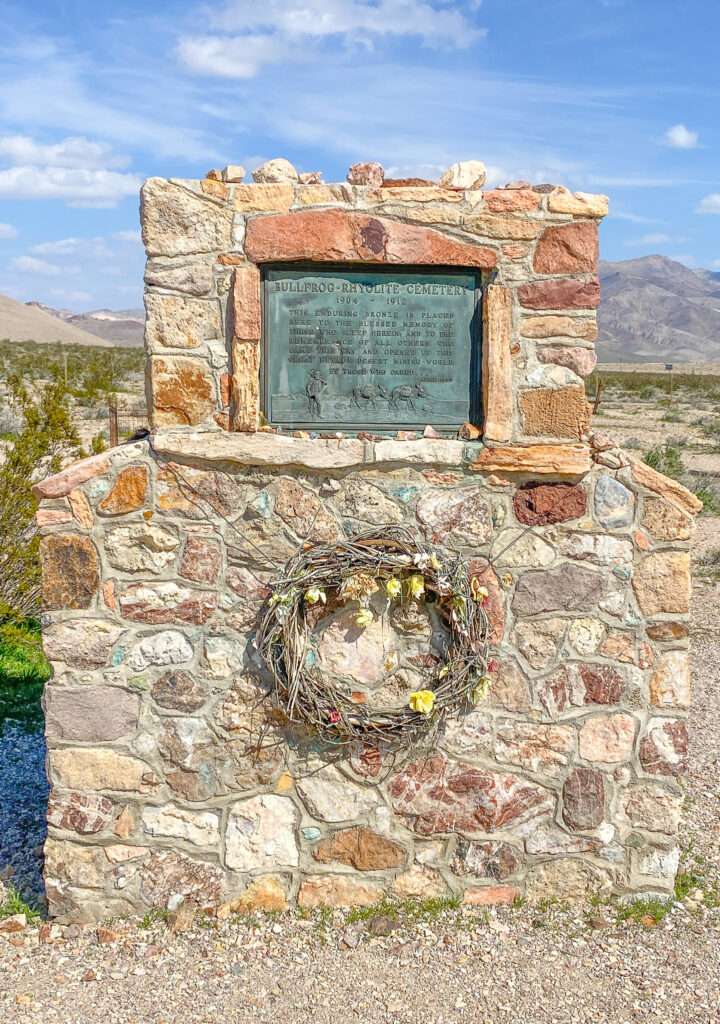
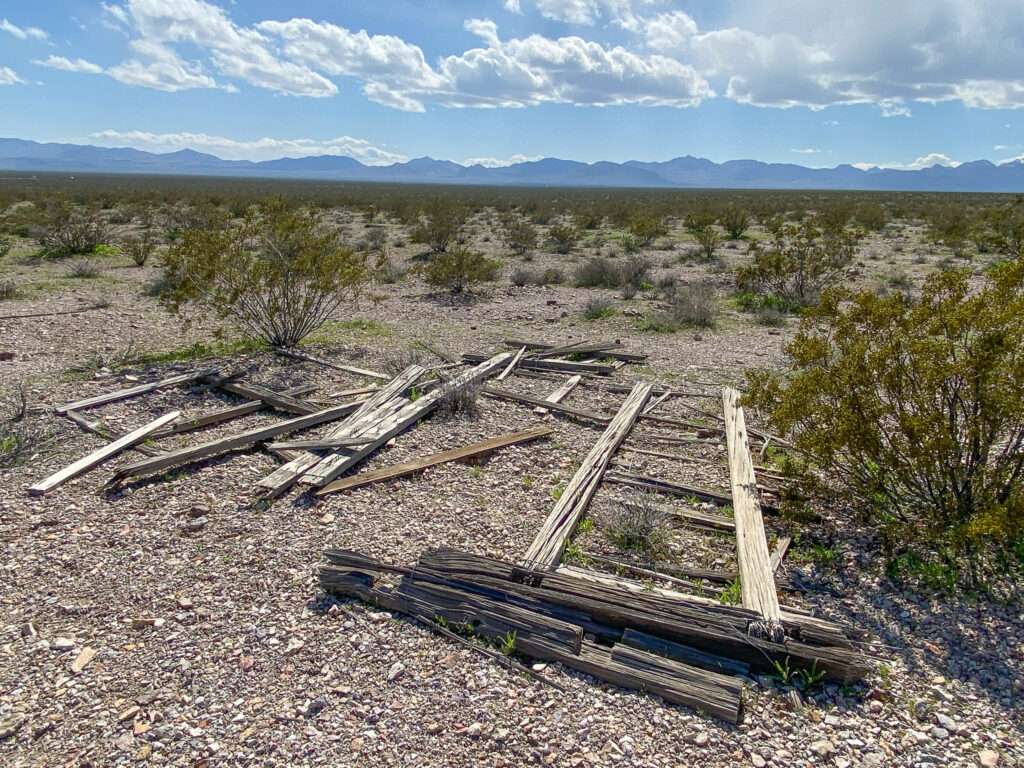
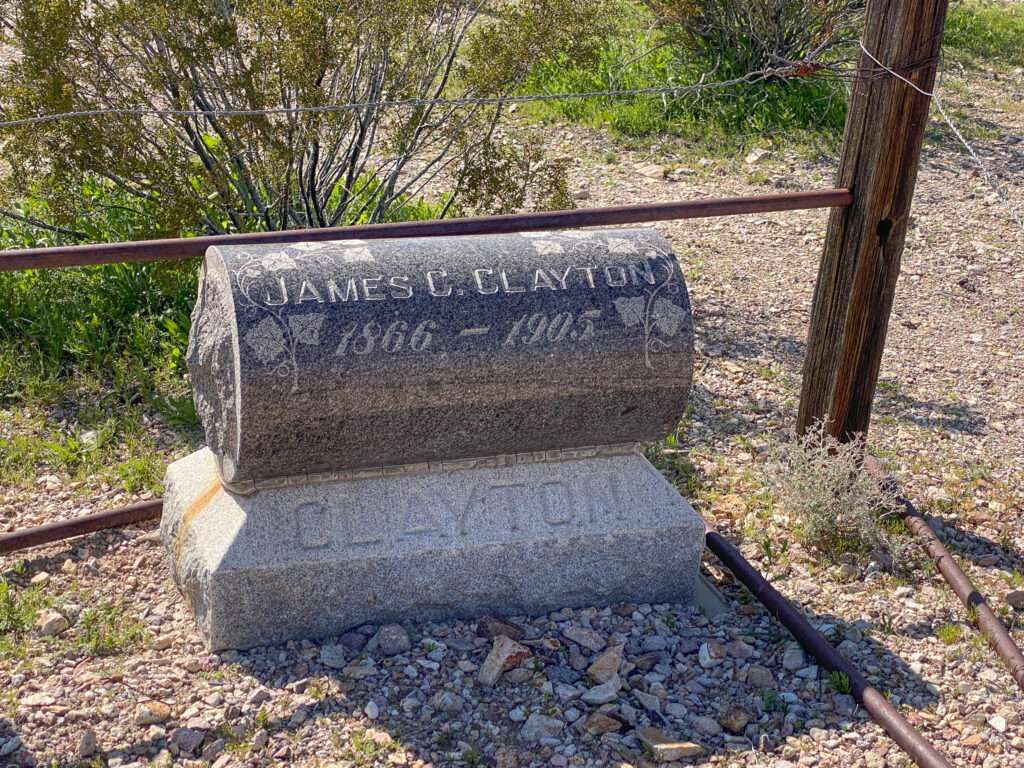
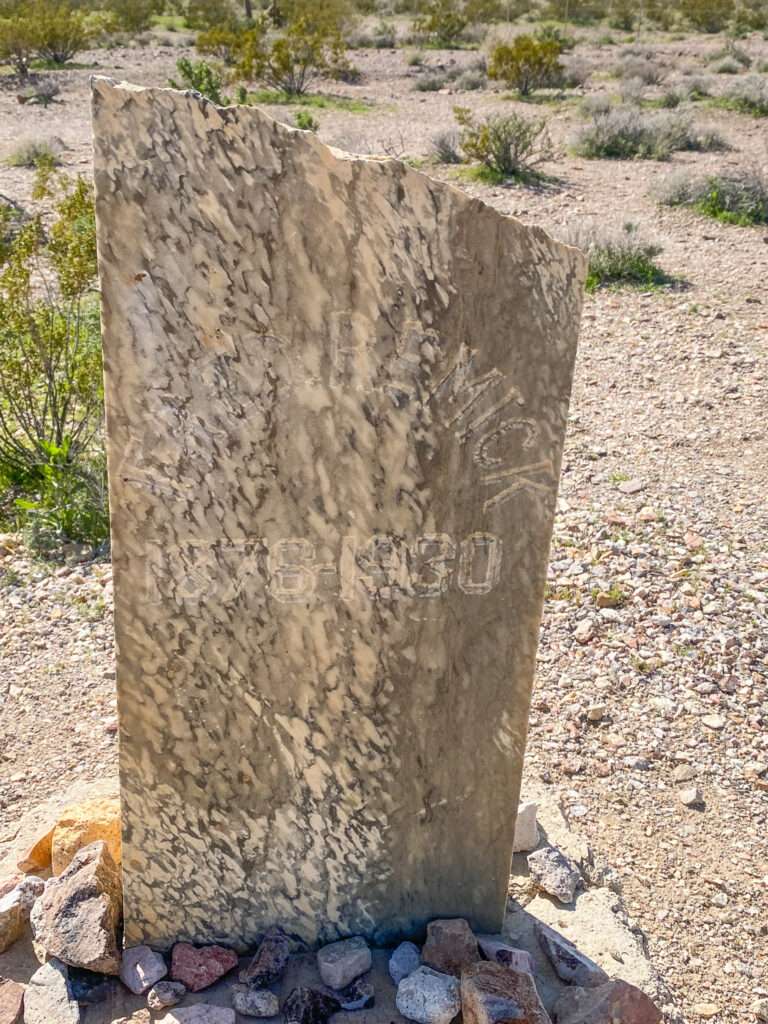
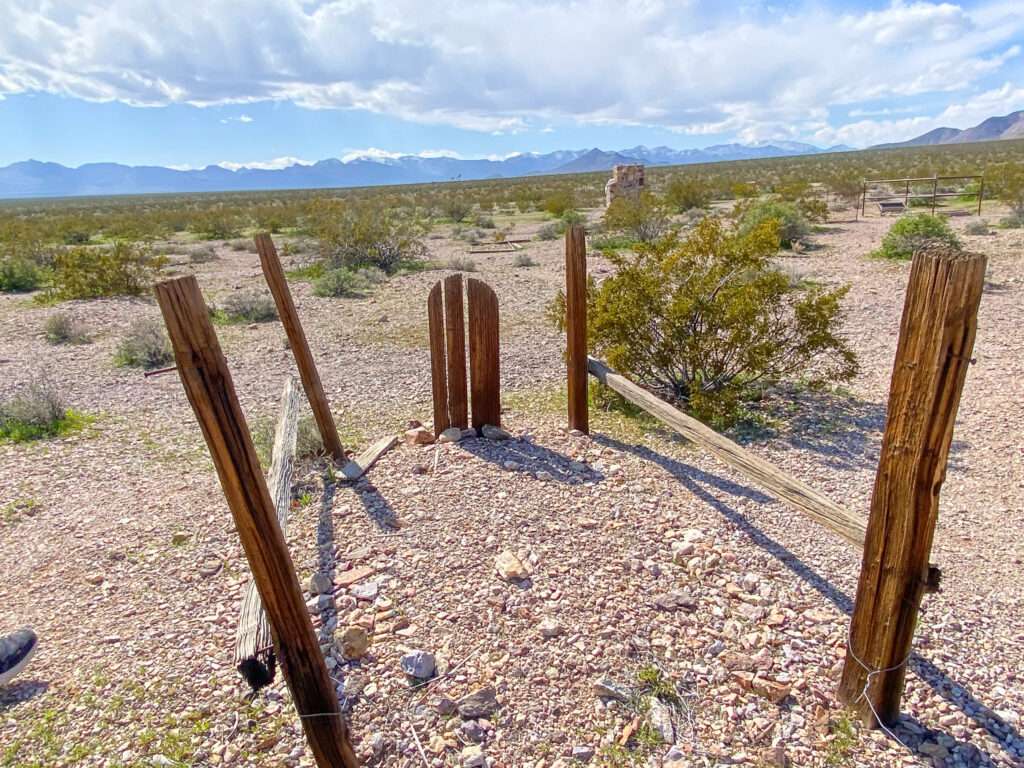
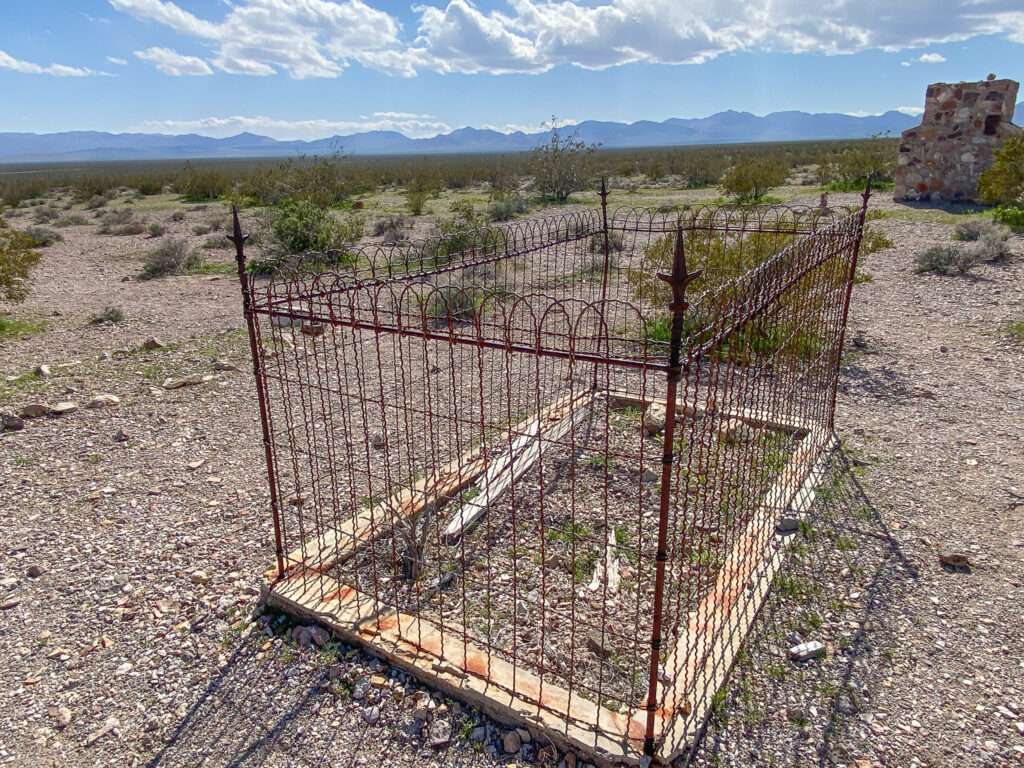
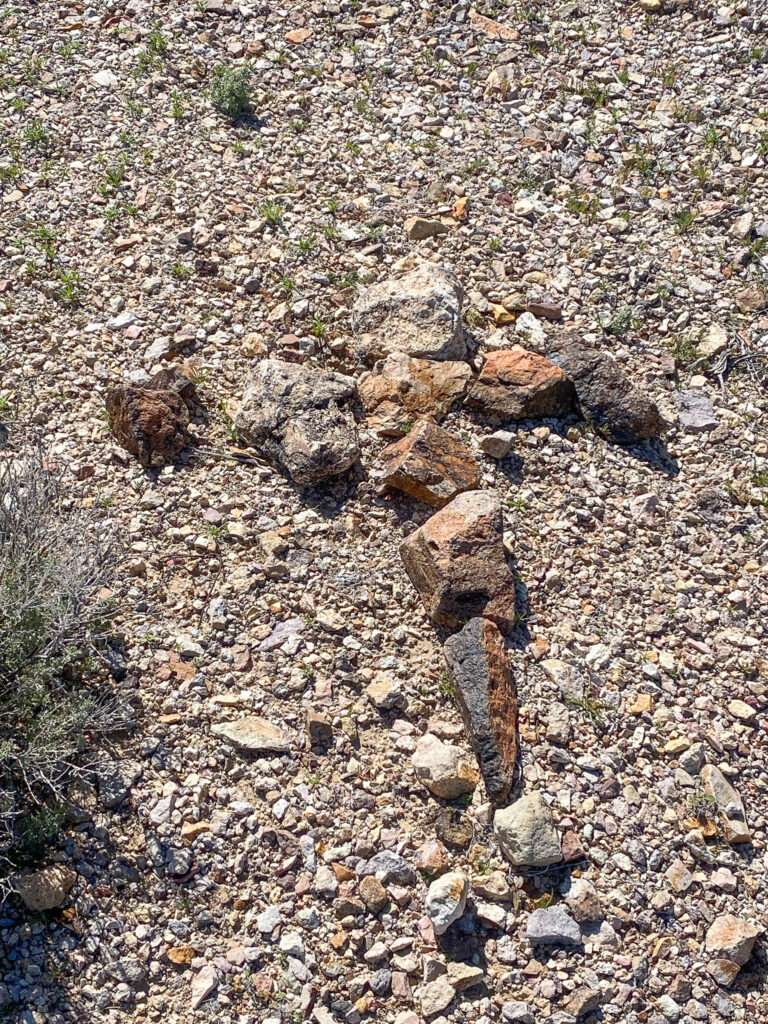
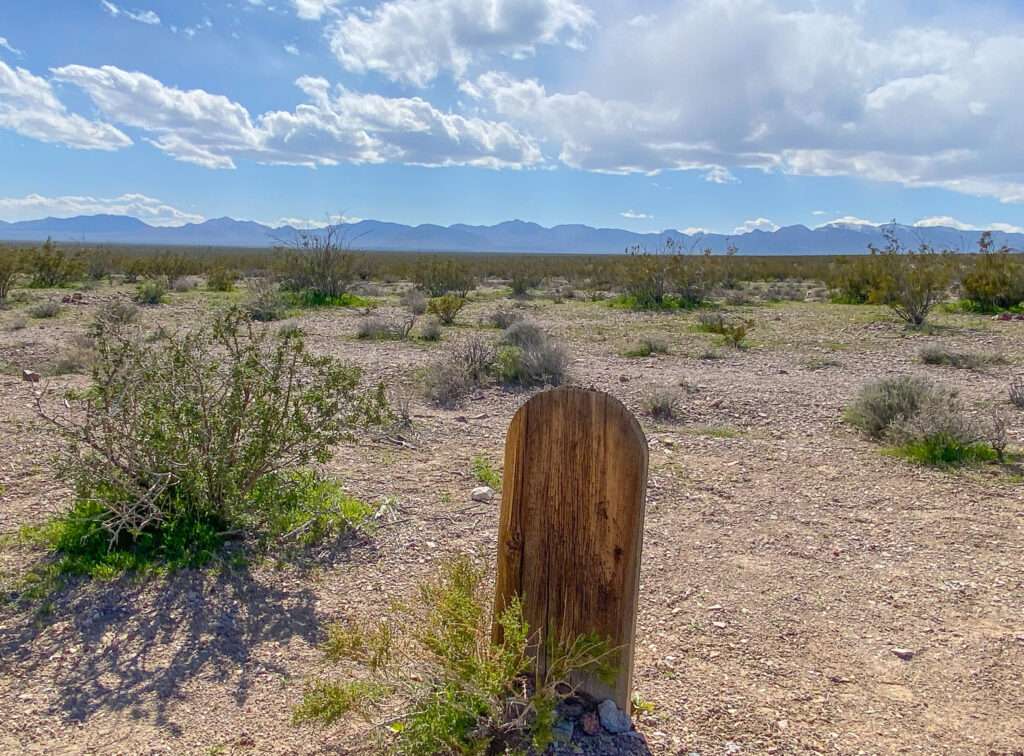
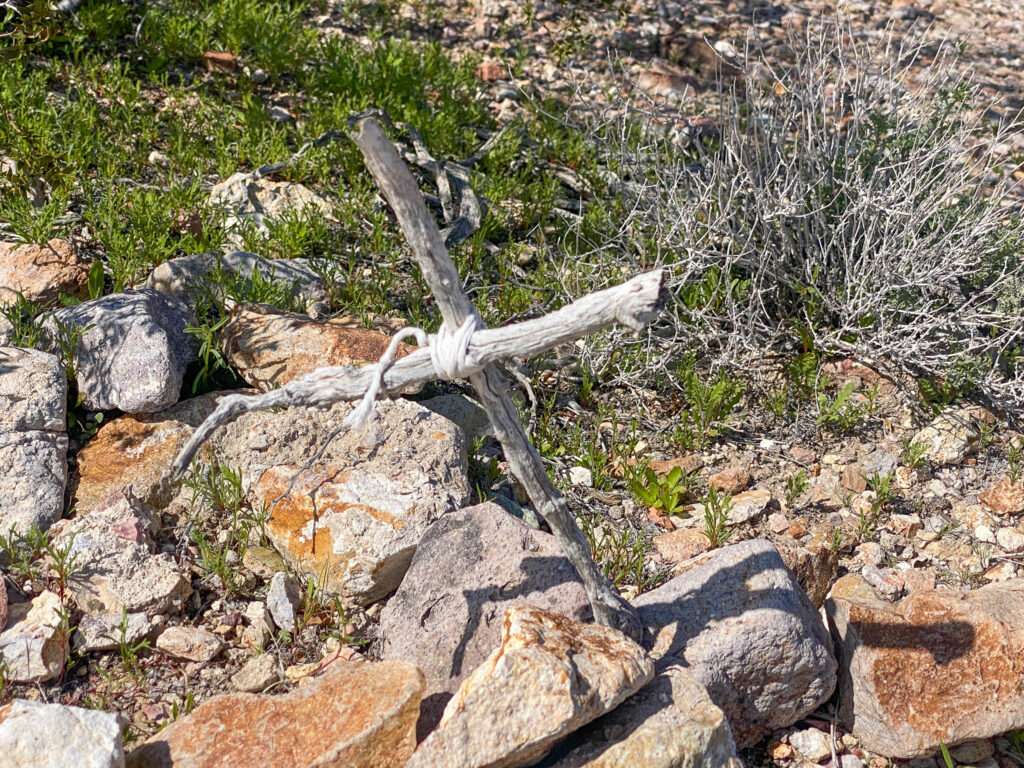
Pannamint Anne

At the northwest corner of the cemetery lays the grave I was trying to locate, the final resting palce of “Panniment Anne.”
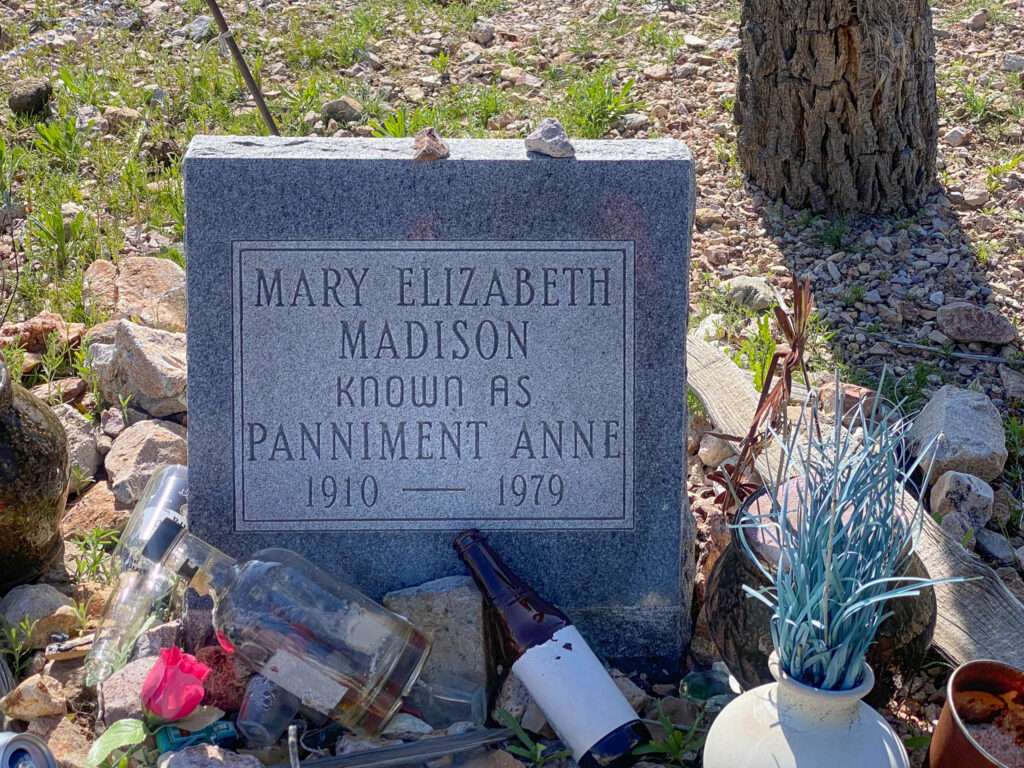
Visitors have left a variety of mementos, flowers, coins, candy and toy cars. And lots and lots of booze bottles. Panamint Anne would have approved of the latter.

Mary Elizabeth Madison, better known as Panamint Anne, is a legend in Death Valley. She was well respected as a prospector, mechanic and poker player. She could also spit farther than anyone, hold her own in a barroom brawl and had “language that would blister the ears of a drill sergeant.”

Living out of the back of her 1929 Model A, Panamint Anne traversed the range, working a variety of claims. She lived on snake meat and jackrabbit stew. Anne had eight children by various husbands and lovers; sadly, only four survived. When they were young, she would strap them to her back while working in the mines. When old enough, they would live with family to attend school.
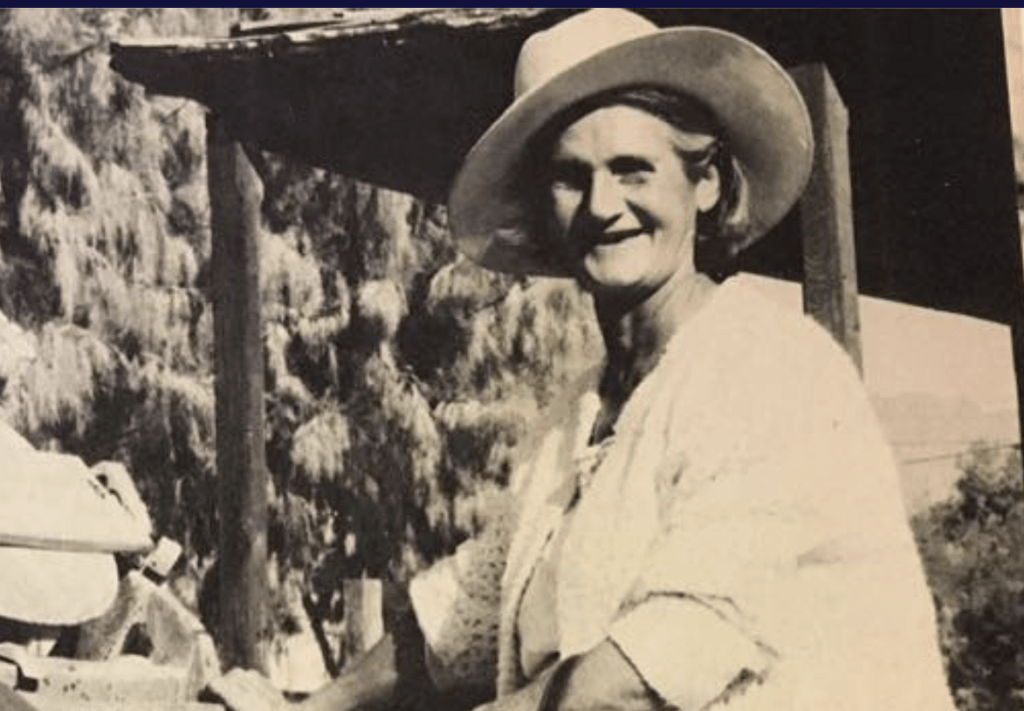
Panamint Anne was known for blowing her money or giving it away following strikes. With the birth of her last child and no family to send him to, she moved into Beatty. She sold jewelry and jellies and continued to prospect with a partner. She developed severe arthritis which eventually made prospecting impossible. Until her death at sixty-nine, she still talked about heading into the desert to prospect. I wish I had been able to meet this extraordinary woman.

Springdale
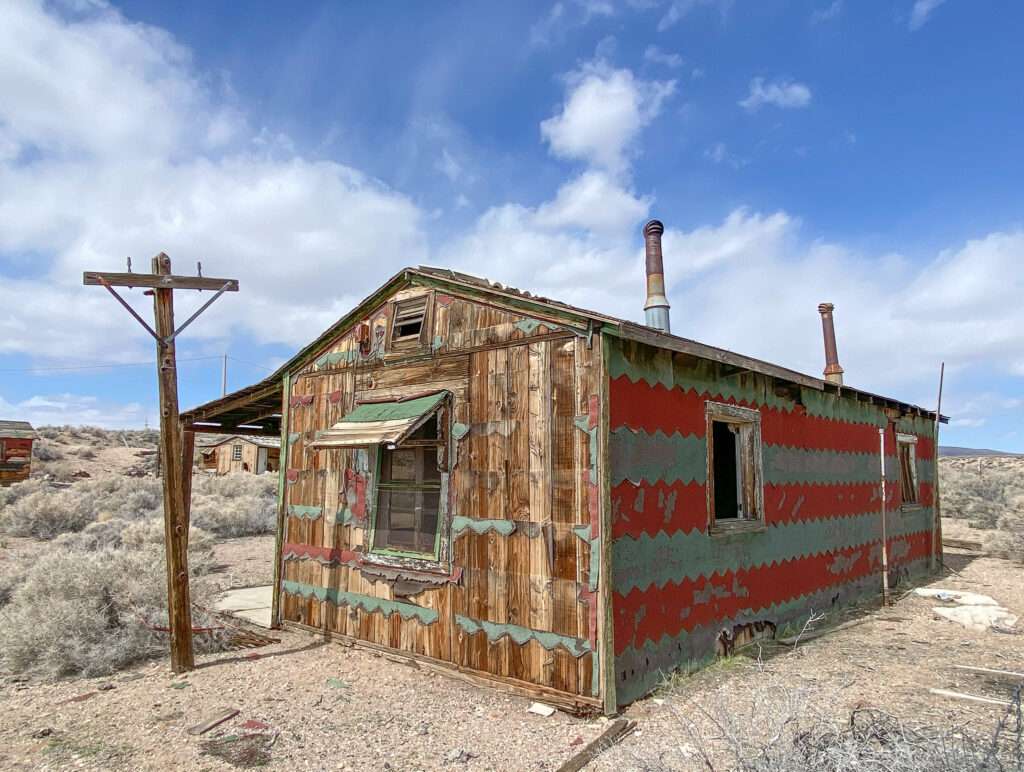
Native American campgrounds and ranches inhabited the meadows around Springdale in the 1800s.
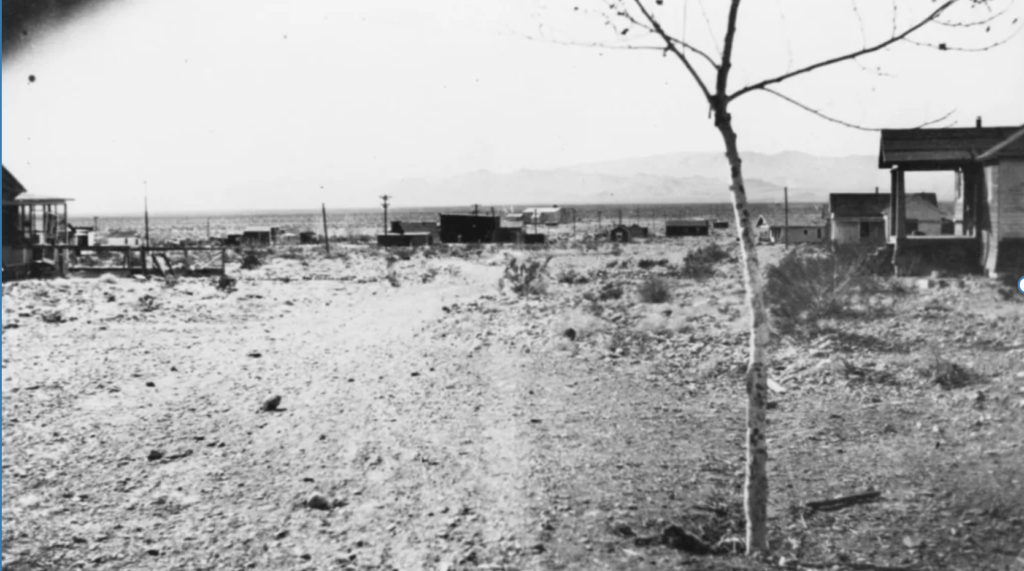
(Photo credit: UNLV)
With the arrival of the Bullfrog Goldfield Railroad in the winter of 1906-1907, the railroad built a section house to take advantage of the abundant water. Springdale became a supply center and transportation center for nearby Pioneer. The town grew to include restaurants, boarding houses, and a livery stable. Four saloons operated along with a brothel worked by a dozen prostitutes.
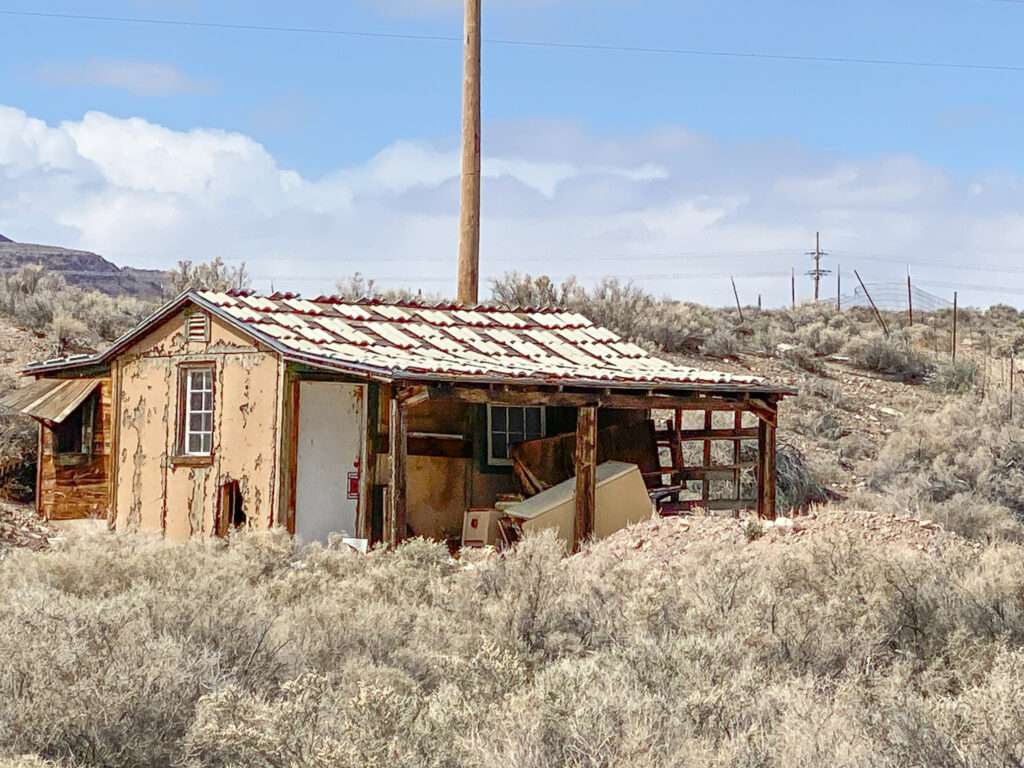
With the decline of Pioneer 1911, Springdale faced the same fate. The post office closed in 1912.
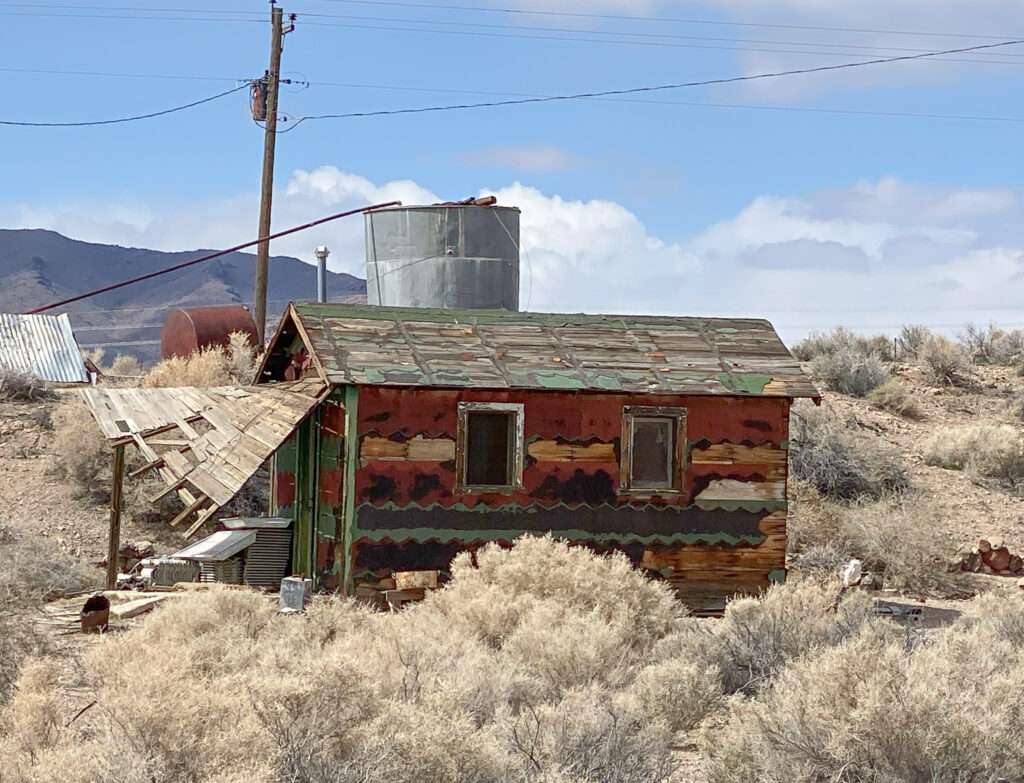
Springdale became known as a hangout for bootleggers. A service station operated until 1958, when Highway 95 moved west of town.

(photo credit: Wikipedia)
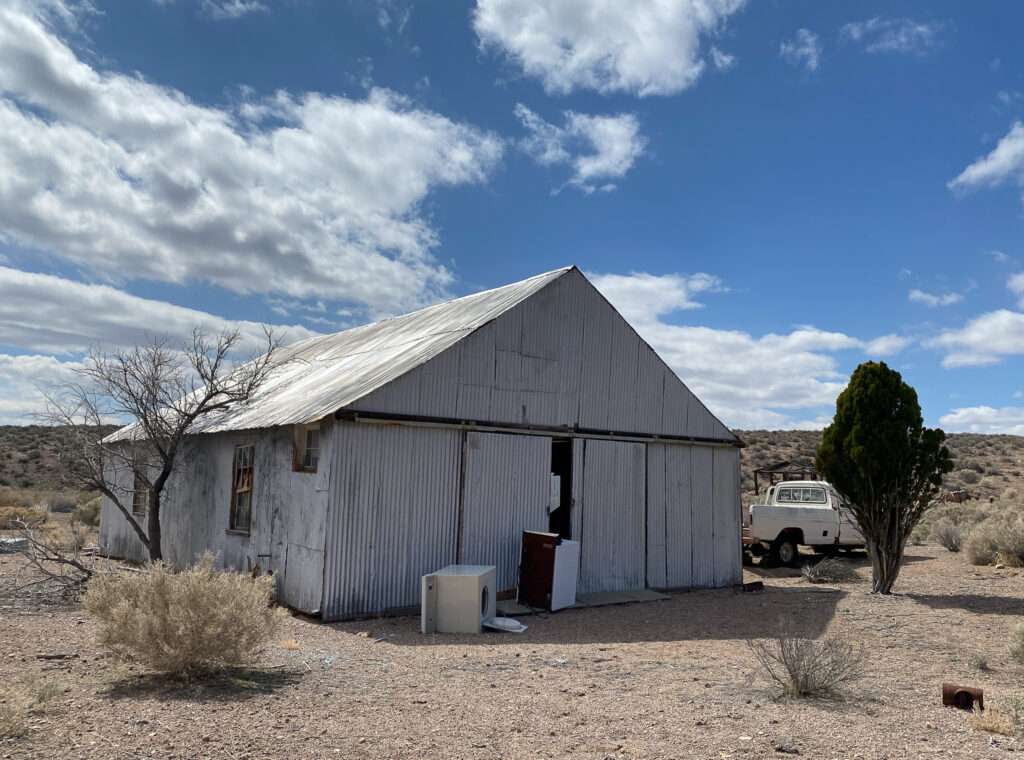
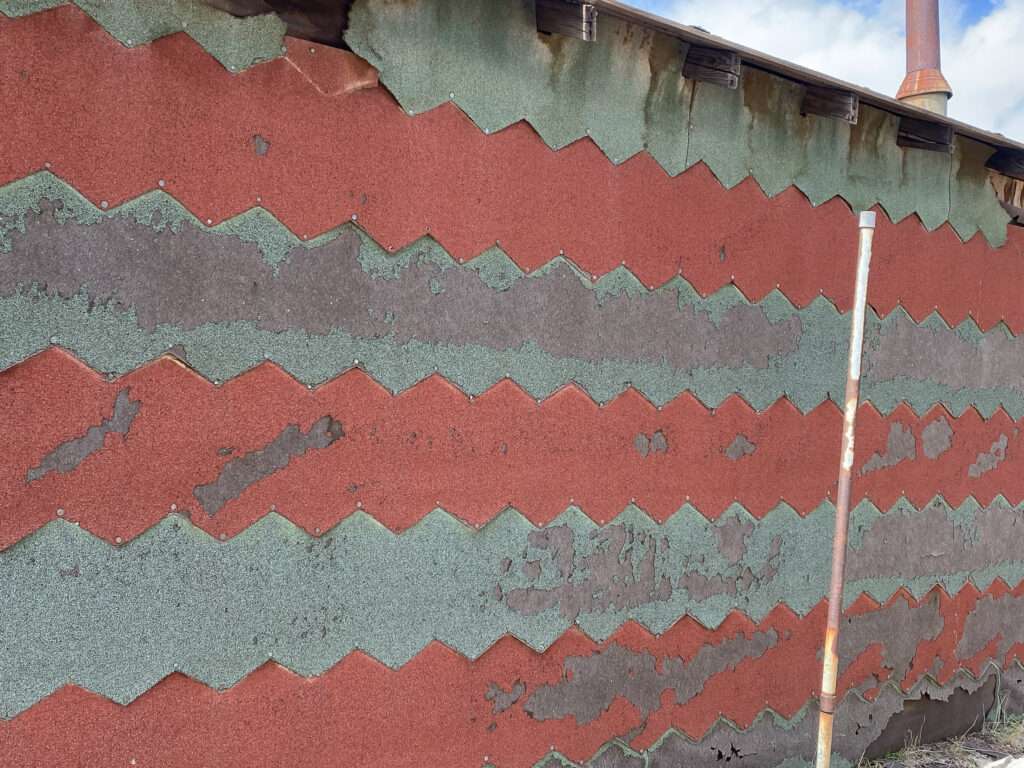
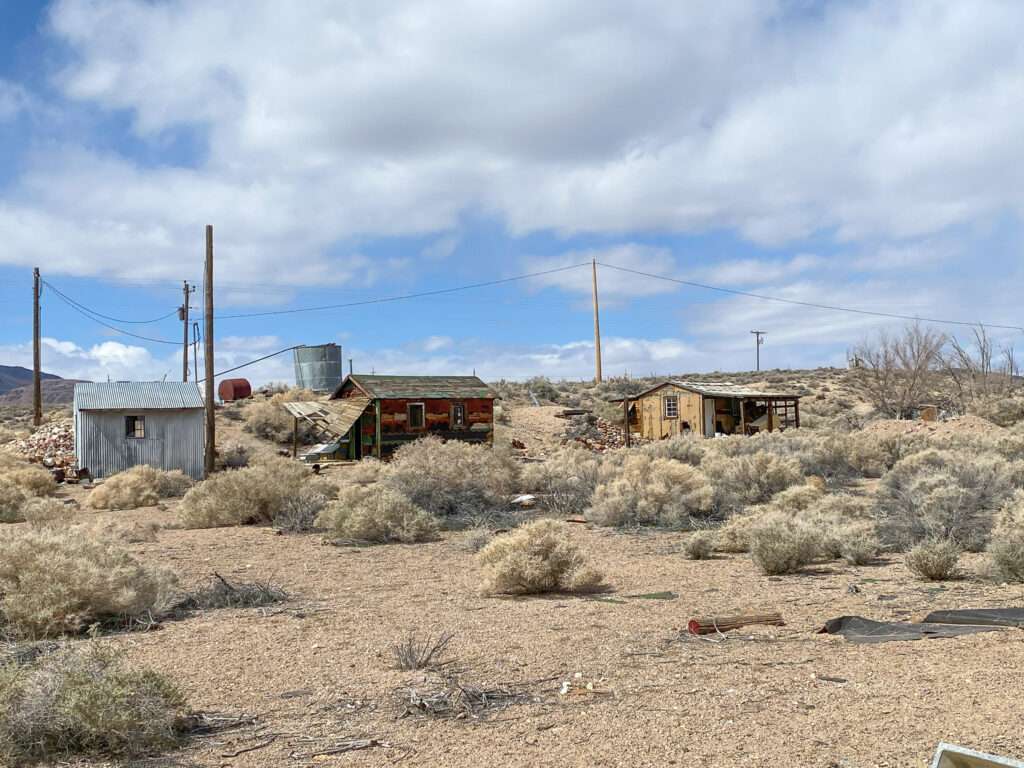
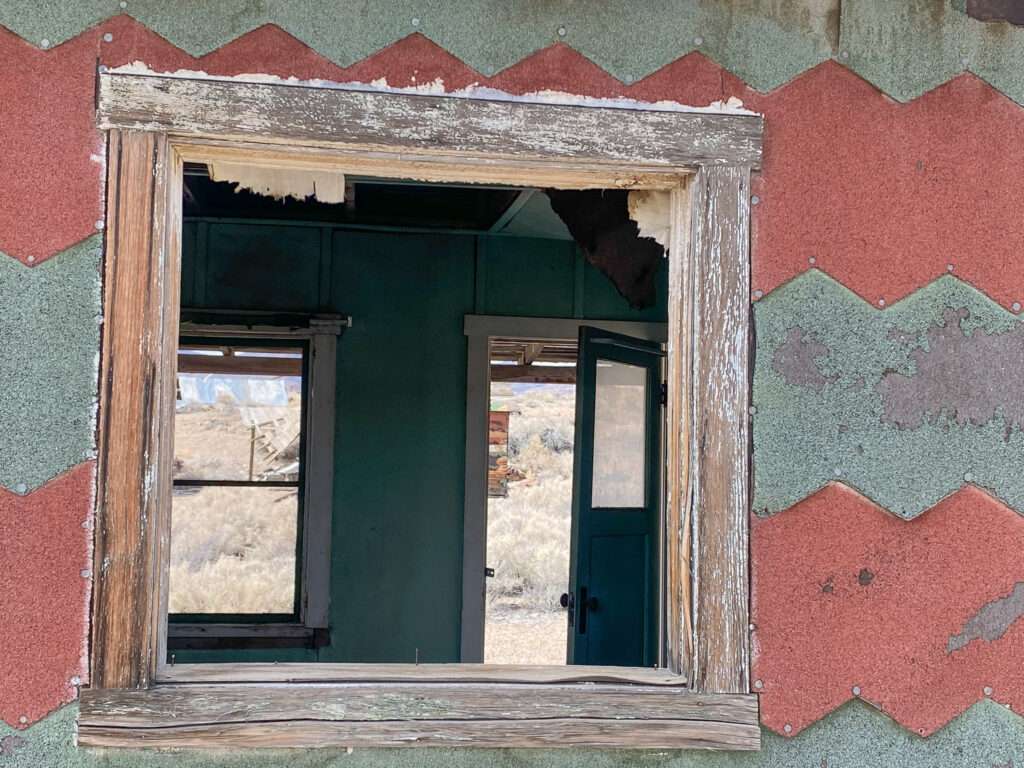
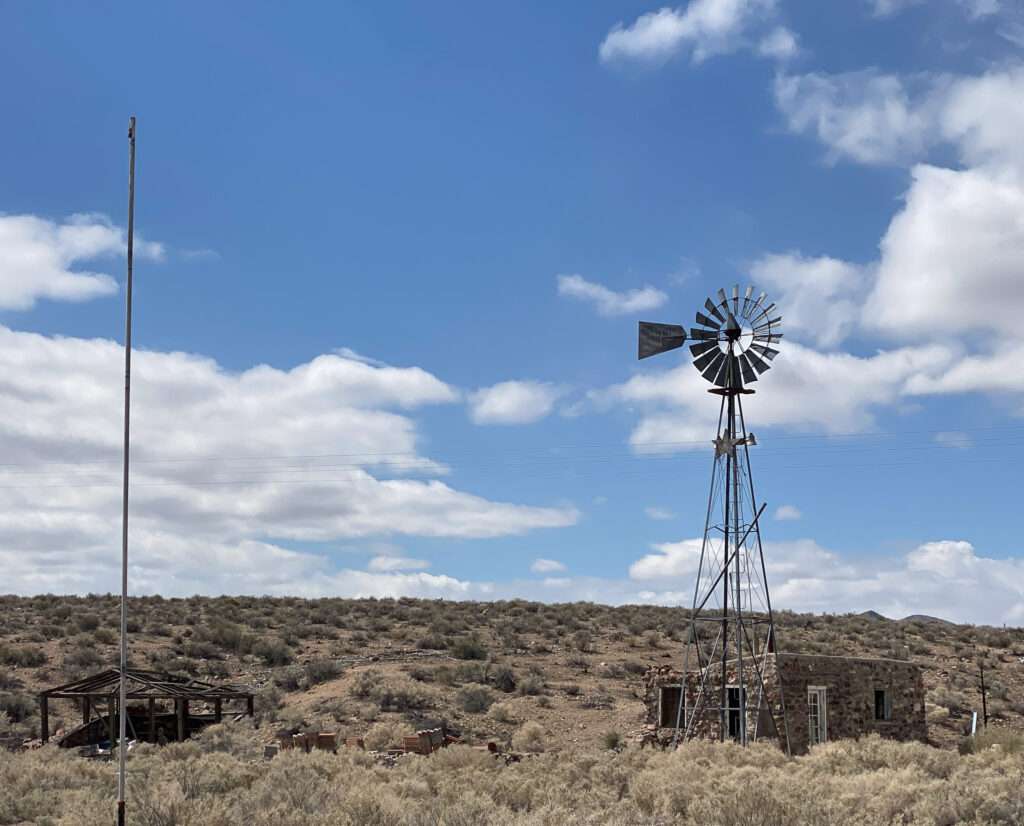
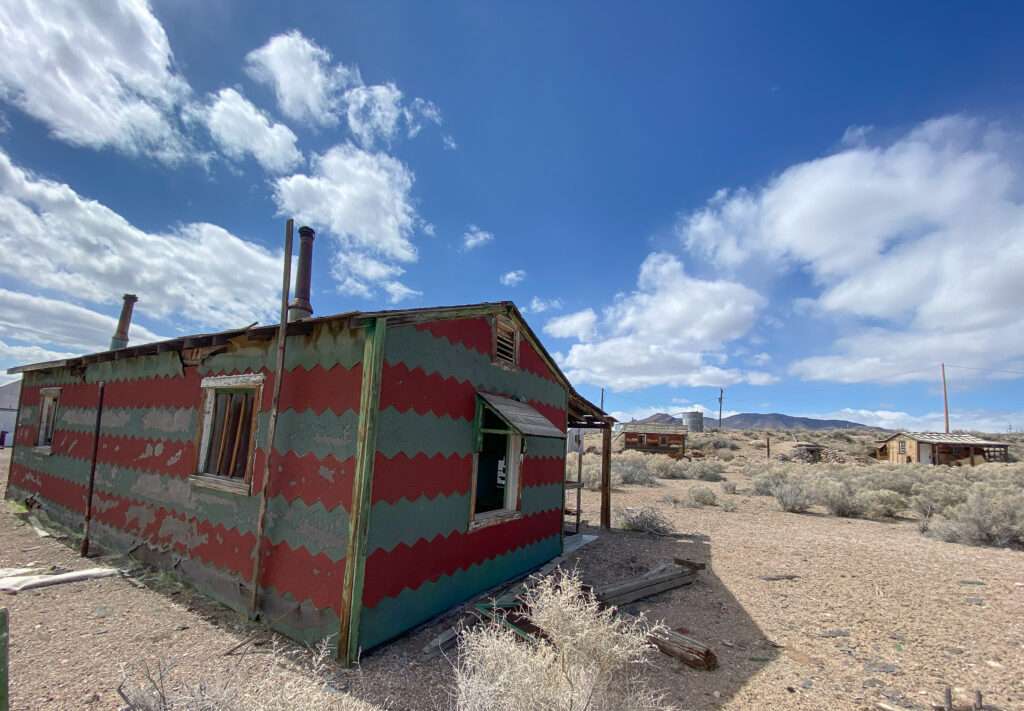

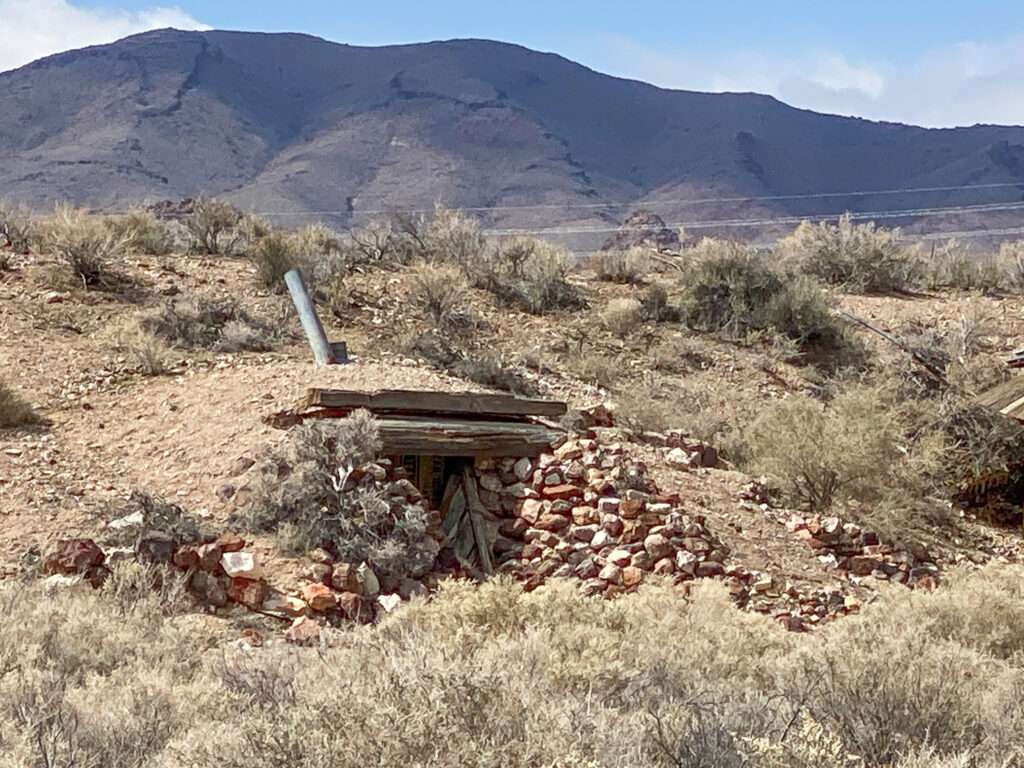
Springdale is on a private ranch. Across the street are several buildings which appear newer than the original town. They are on private property, so we photographed them from the highway.
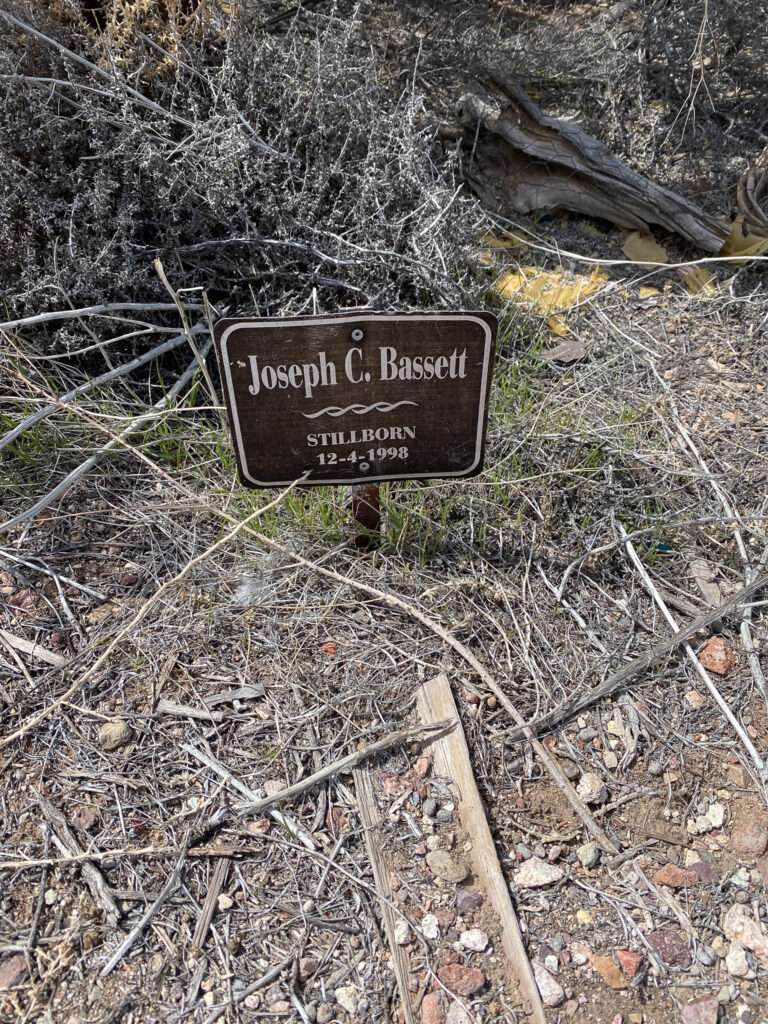
Thorp’s Well
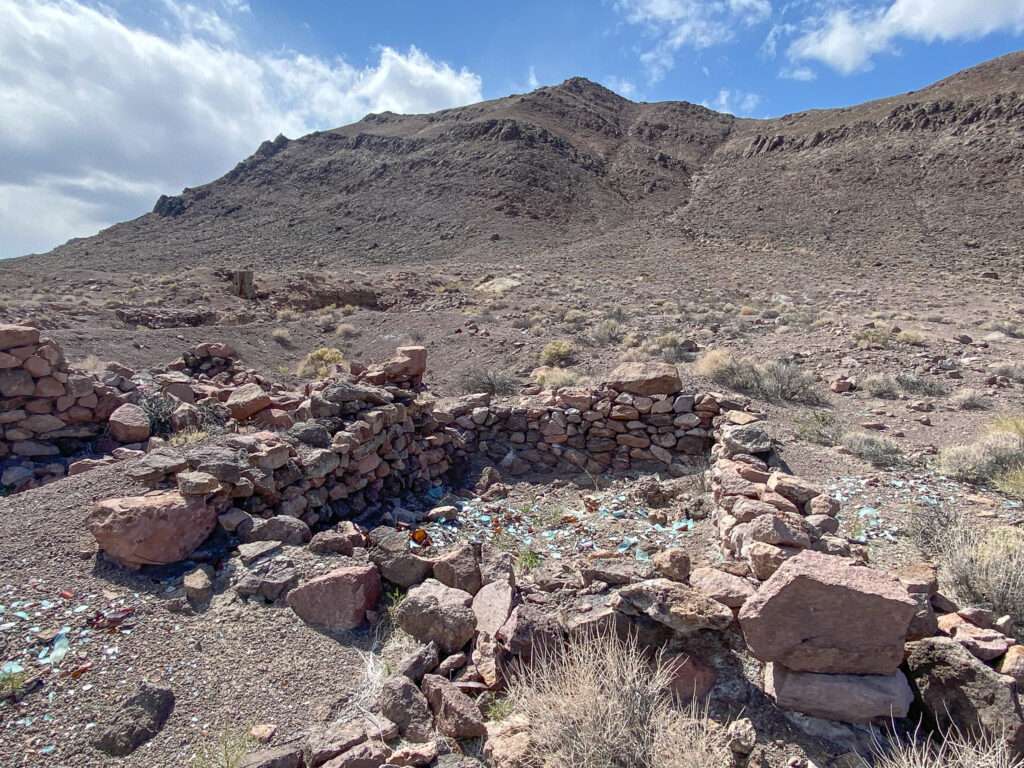
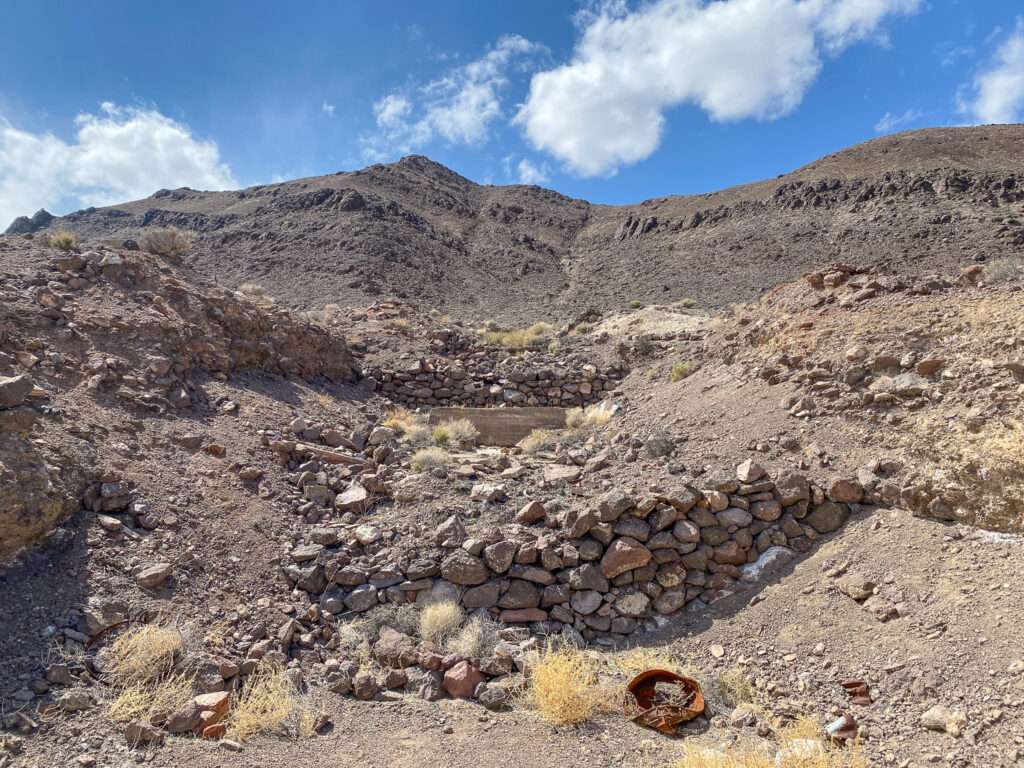
To process ore from his Rattlesnake Mine, Guy Thorpe built a well at the aptly named Stinky Springs. The 5-stamp mill was erected in the early 1880s and processed ore from three mines. Before this, he had processed ore with arrastras at Gold Mountain. The mill operated for years then Bonnie Claire Bullfrog Mining Company bought it to process ore from their Gold Mountain District mills.

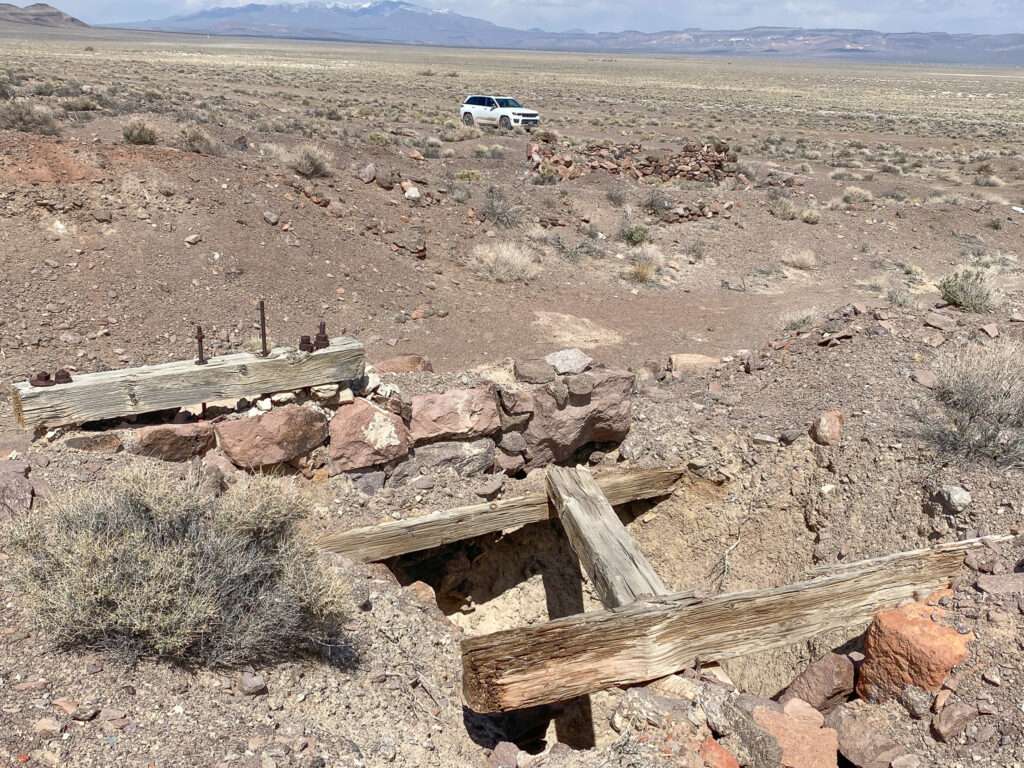
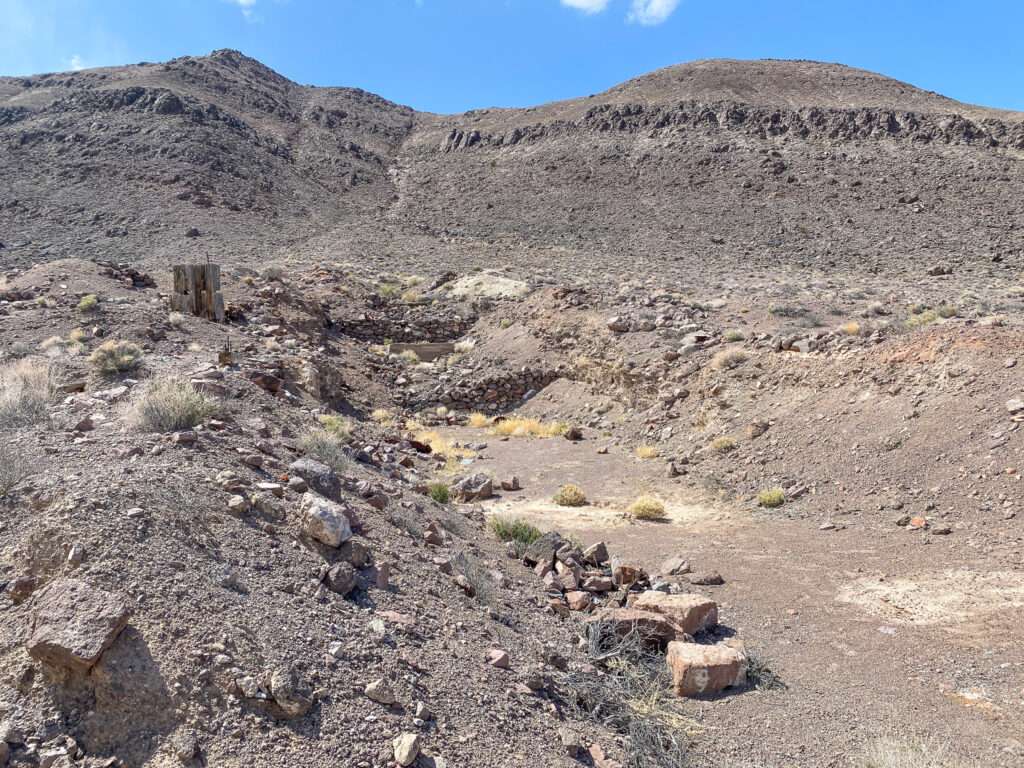
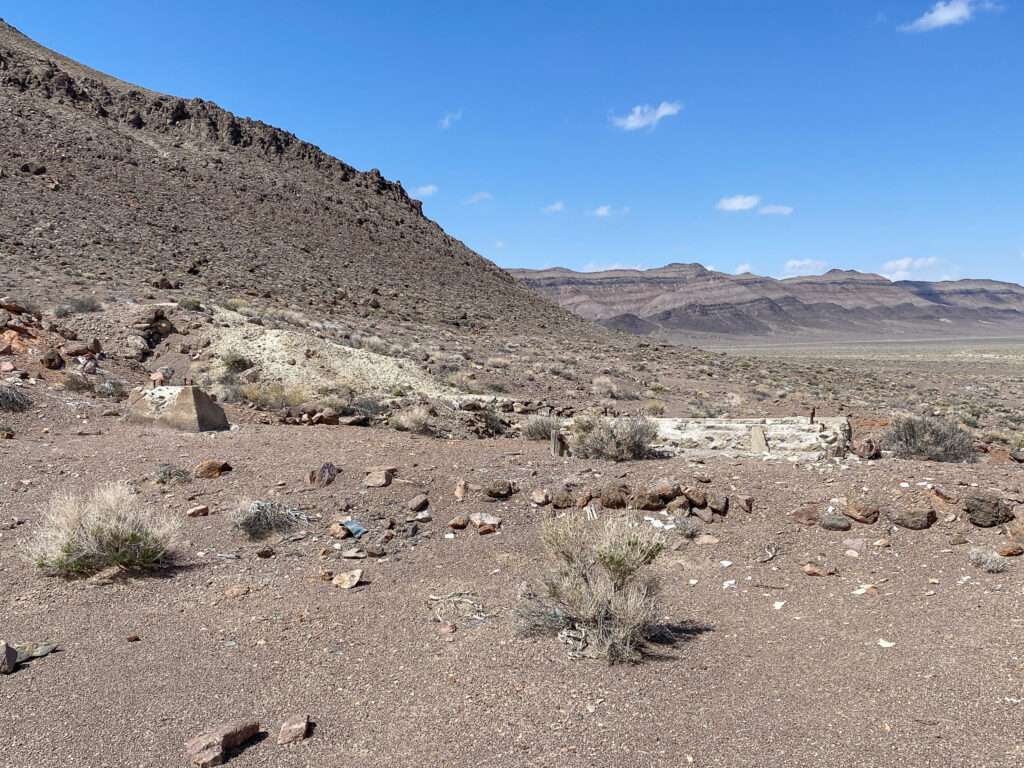
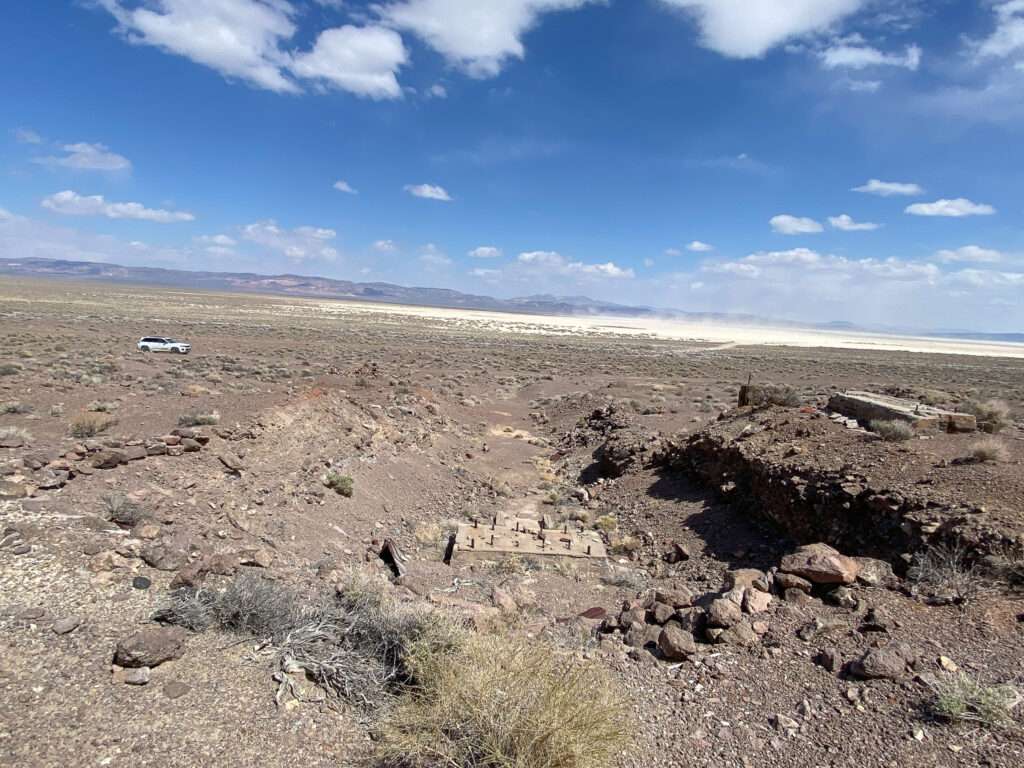
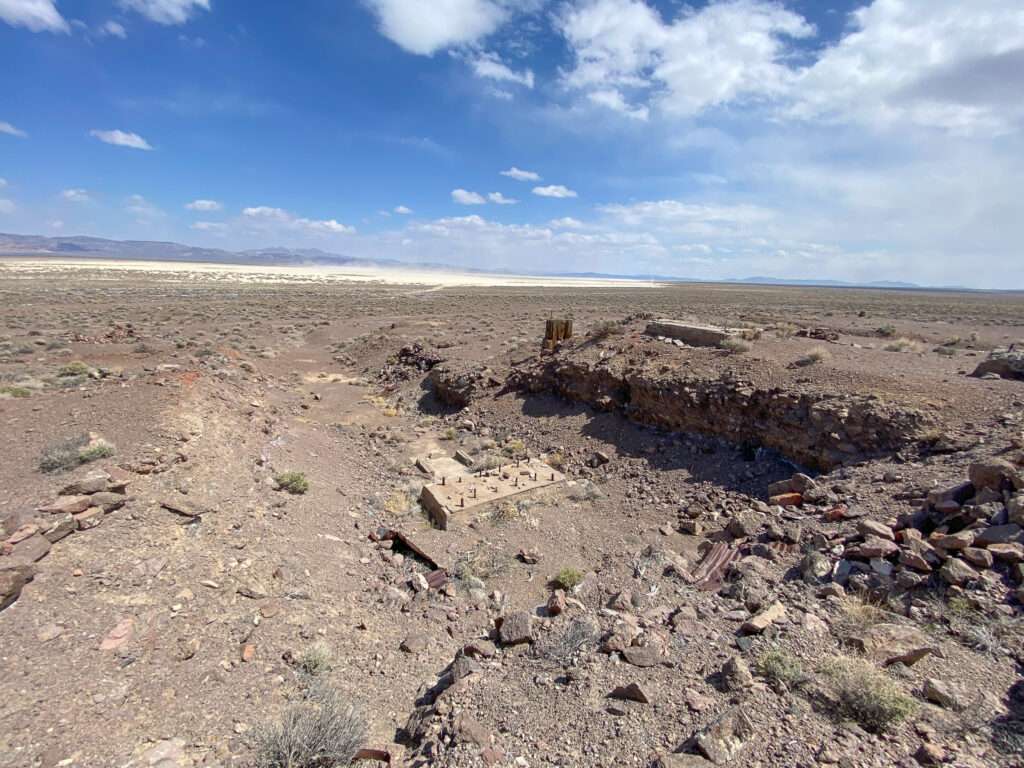
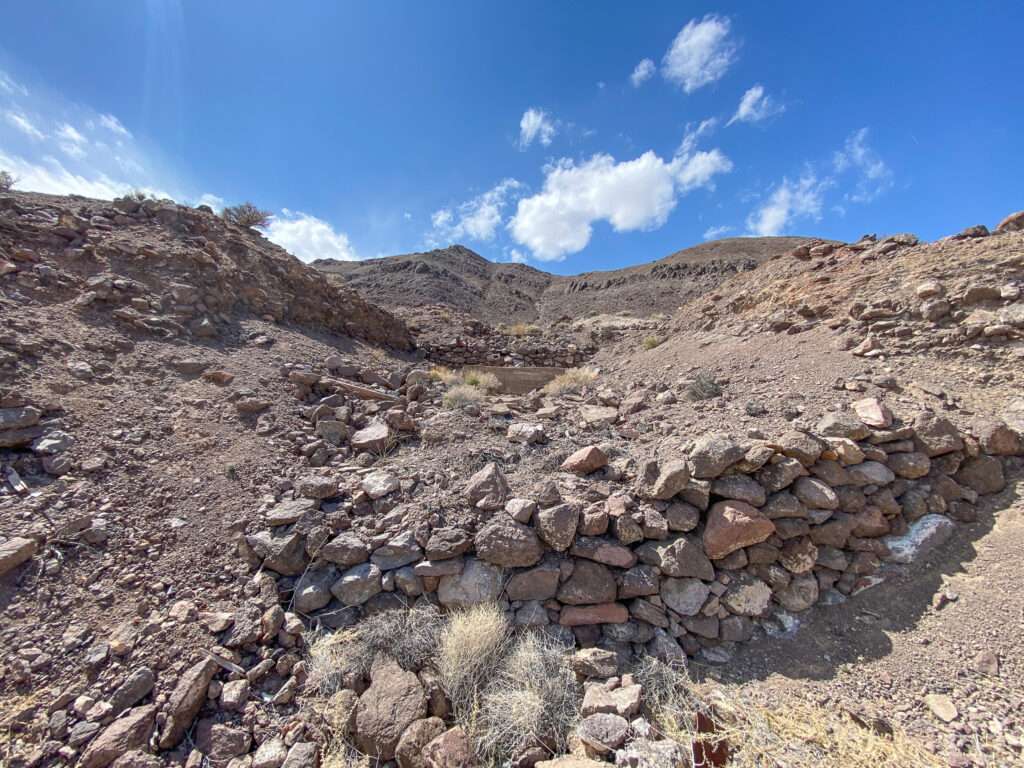
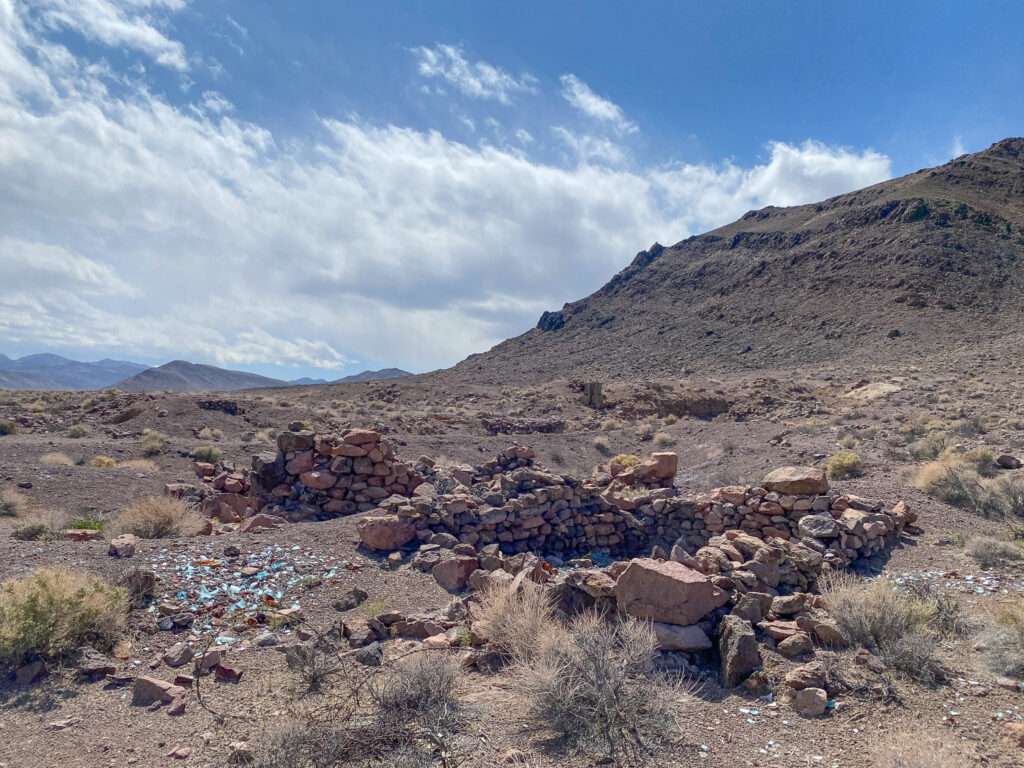
Bonnie Clare (Claire, Clair)/Thorp/Montana
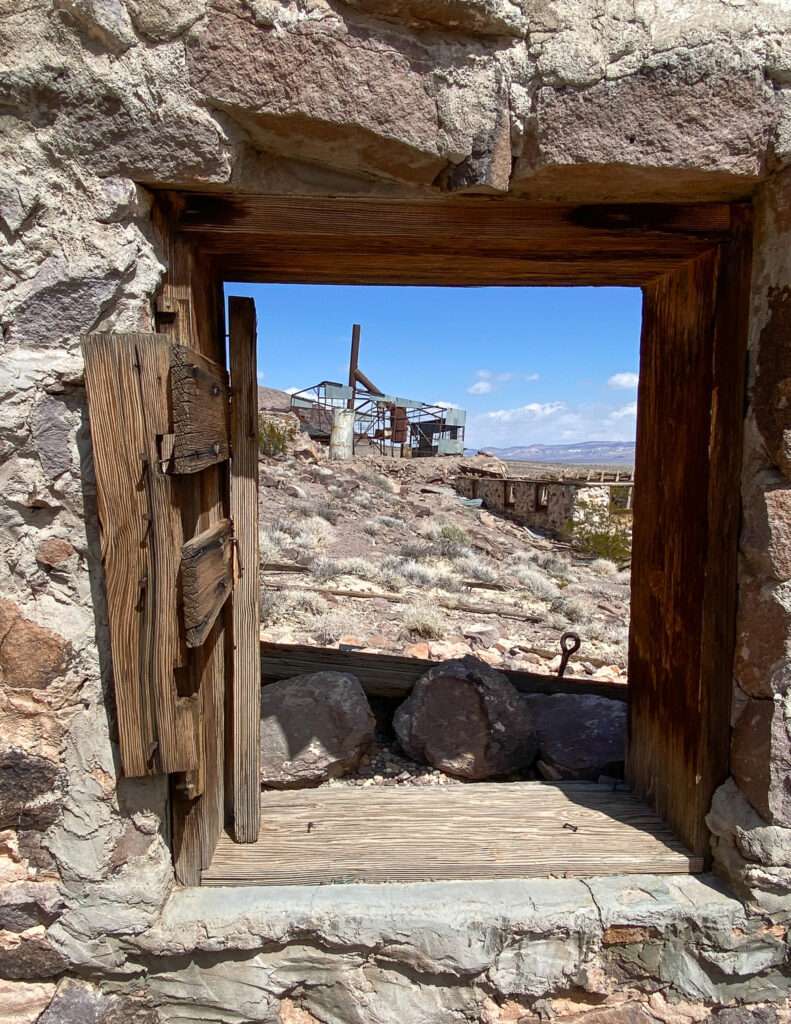
Several miles north of Thorp’s Well was Thorp, a stage station serving travelers between Goldfield and Bullfrog.
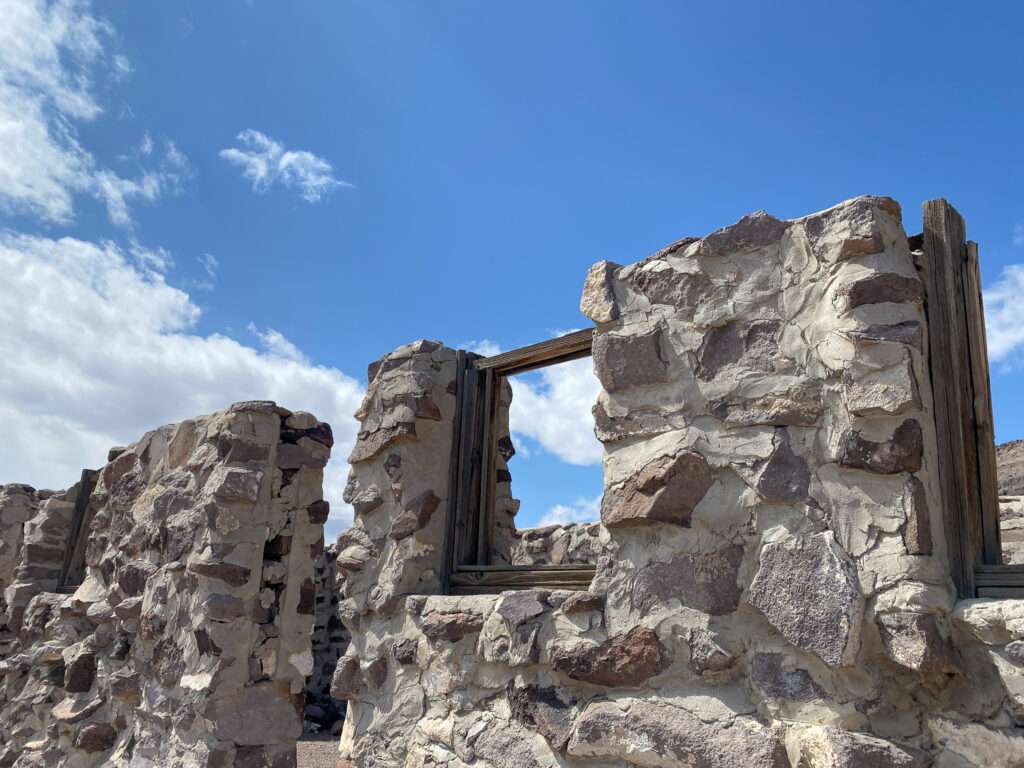
In 1904, the Bonnie Clare Bullfrog Mining & Milling Company erected a small mill on the hill north of town. A post office opened on June 15, 1905. The mill was renovated and expanded in 1910, but a lack of ore caused production to end.
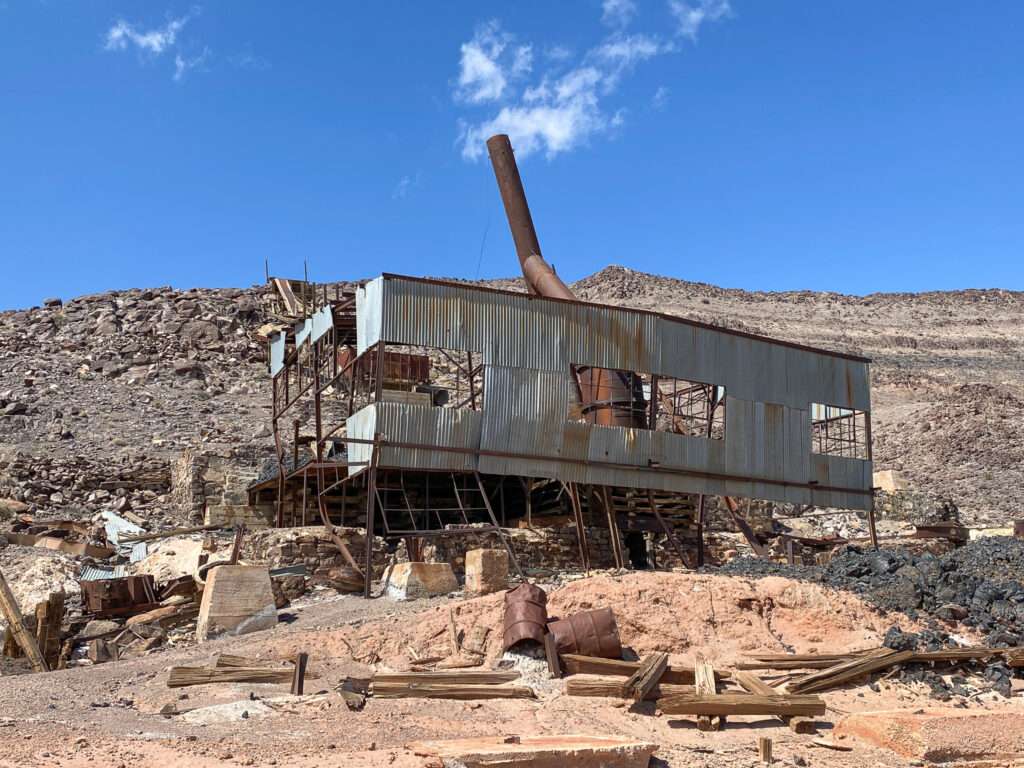

The Bullfrog & Goldfield Railroad reached the station in October 1906. The town was briefly called Montana or Montana Station, then changed to Bonnie Clare on July 19, 1909. Due to clerical errors, the town was spelled with multiple variations, including Clare, Claire, and Clair. The name was in honor of the daughter of an early settler.

(Photo credit: Nye County history)
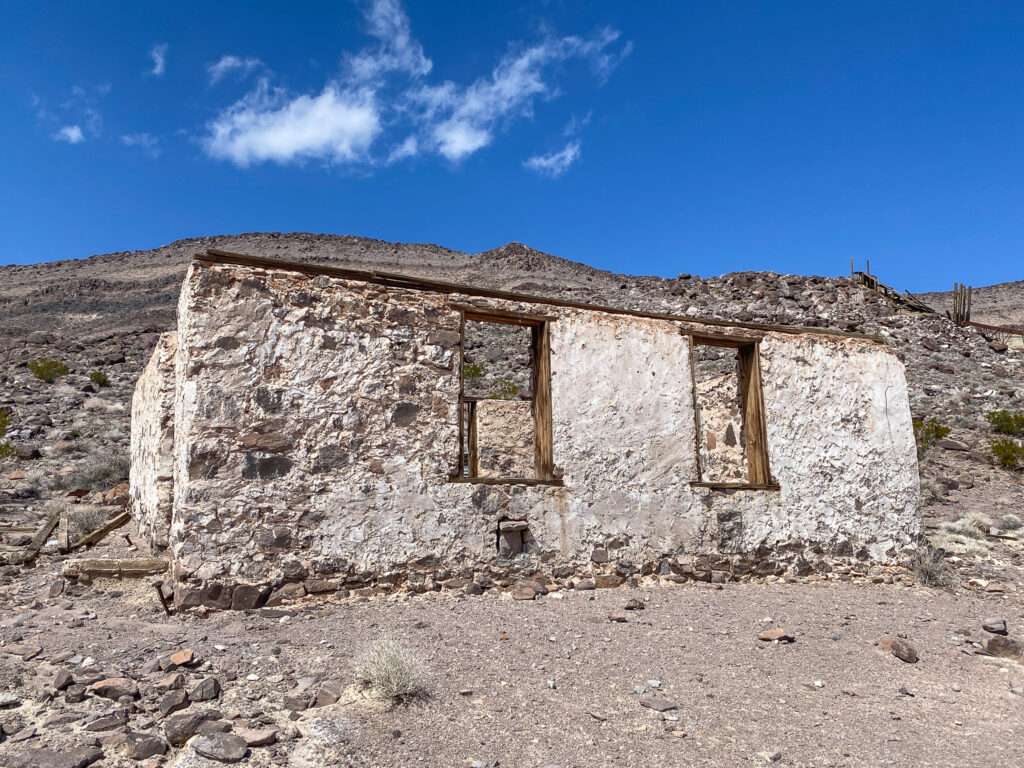
In the spring of 1907, the Last Vegas & Tonopah Railroad arrived, making Bonnie Claire a bustling town of one hundred with stores, train depots including a two-story LV&T station, and saloons.

As the Bullfrog district declined, so did Bonnie Claire. Railroad traffic declined in 1909. However, a new mill was opened in 1913, extending the town’s life. In the 1920s, Bonnie Clare served as a railroad stop for supplies for the construction of Scotty’s Castle.

The post office ceased operations on December 31, 1931. Nic-Silver Battery Companies began building a lead mill and smelter at the old Bonnie Clare Mill site in 1951 to process lead from Death Valley mines. The mill only lasted a few years before it was abandoned, making Bonnie Clare a ghost town.


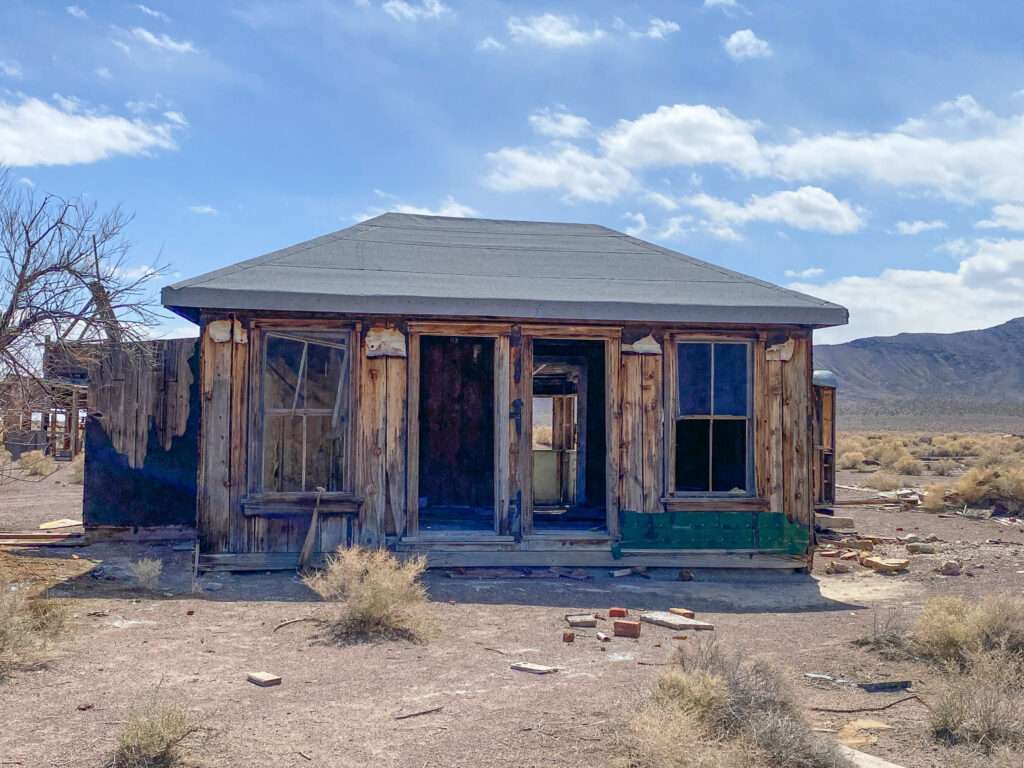
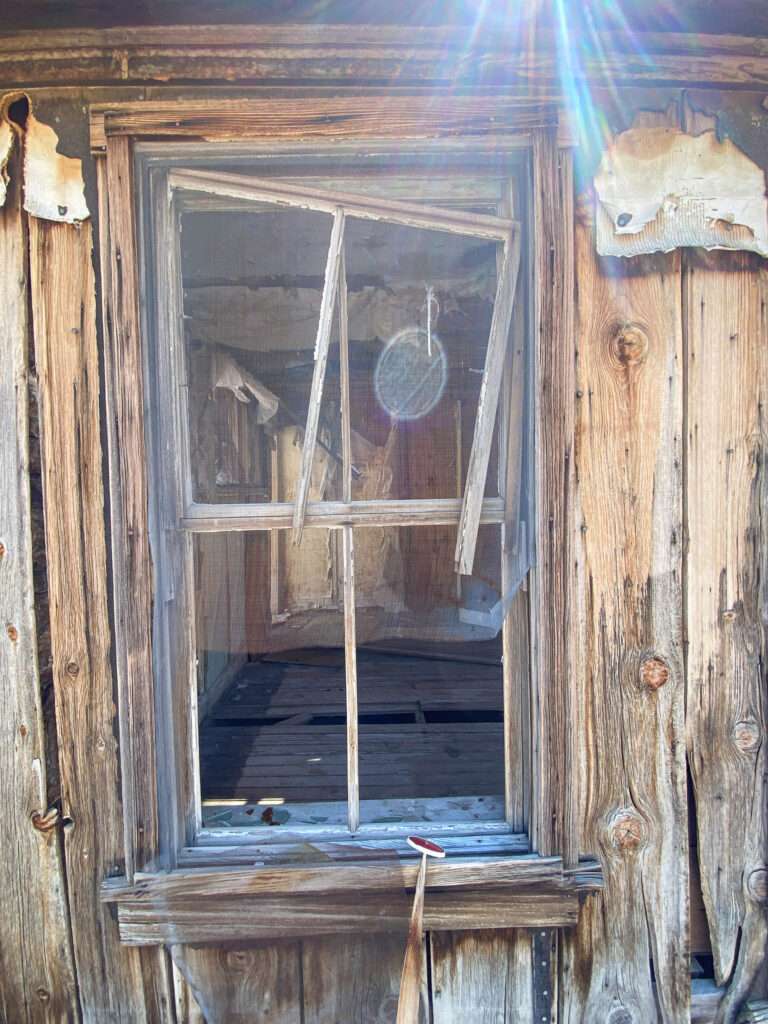
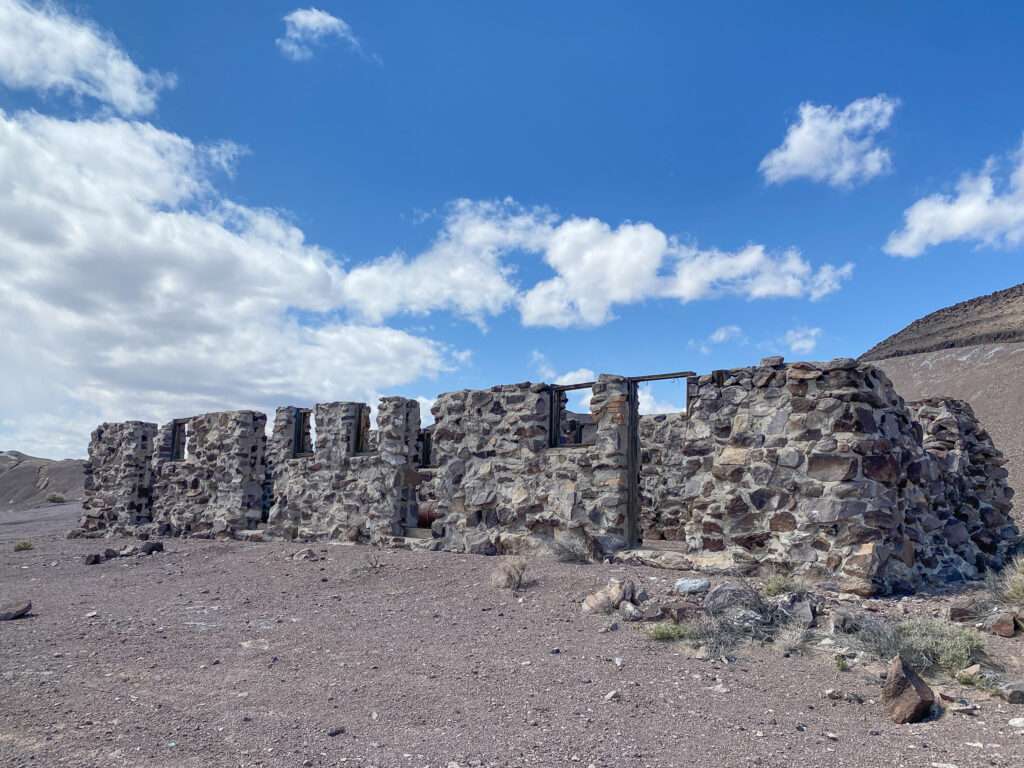
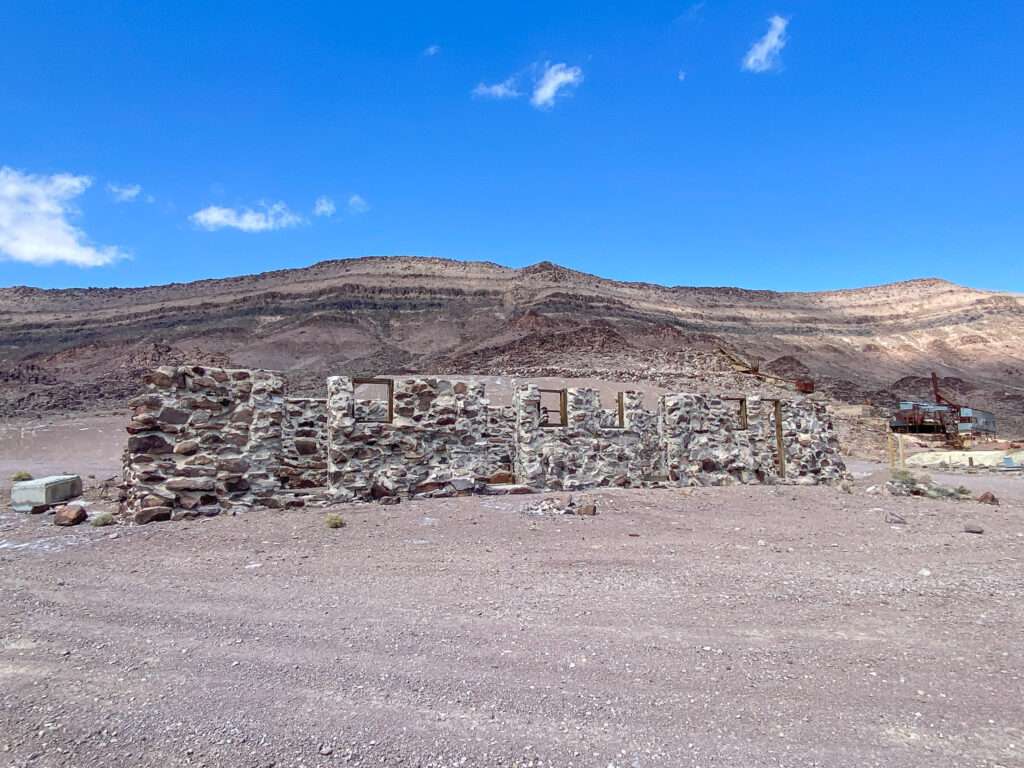
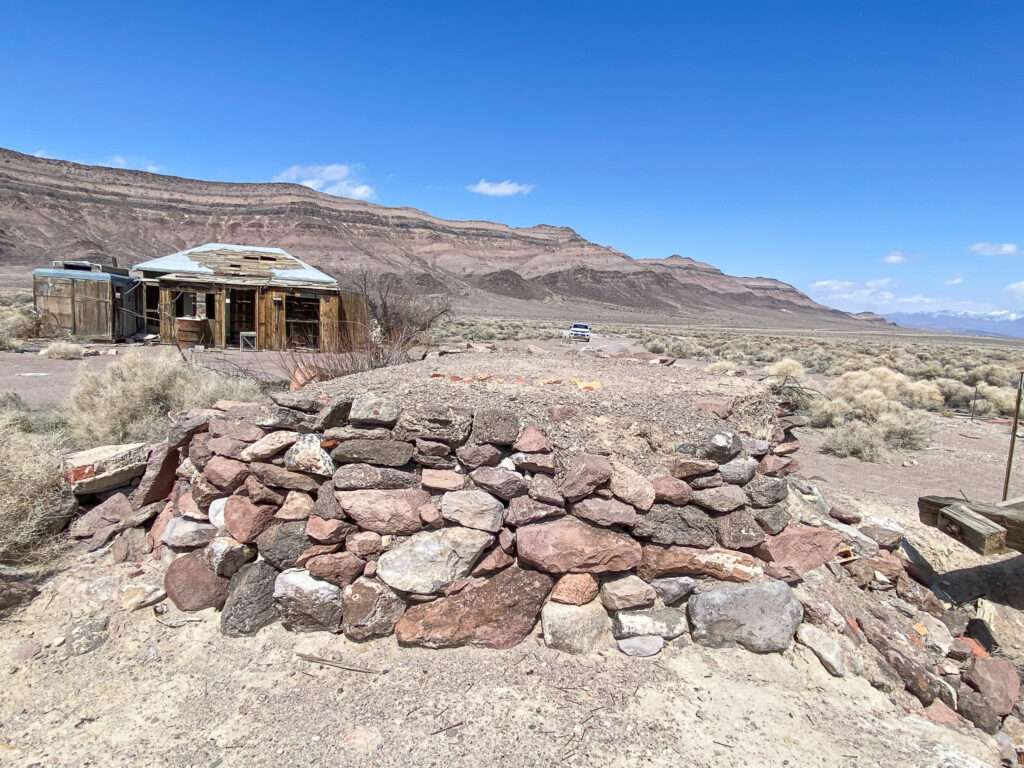

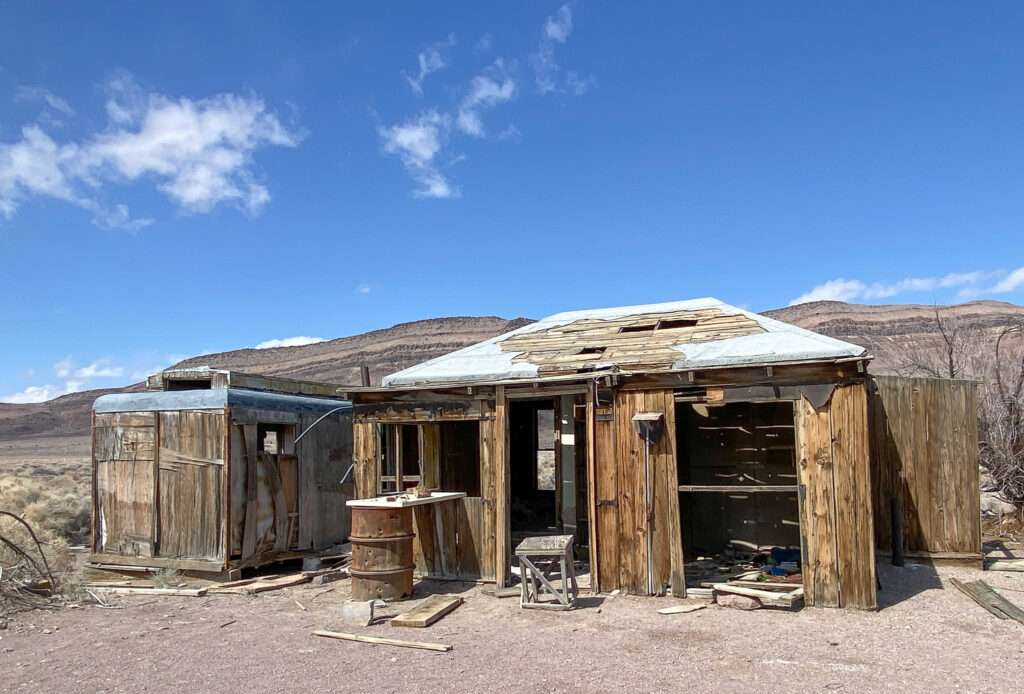
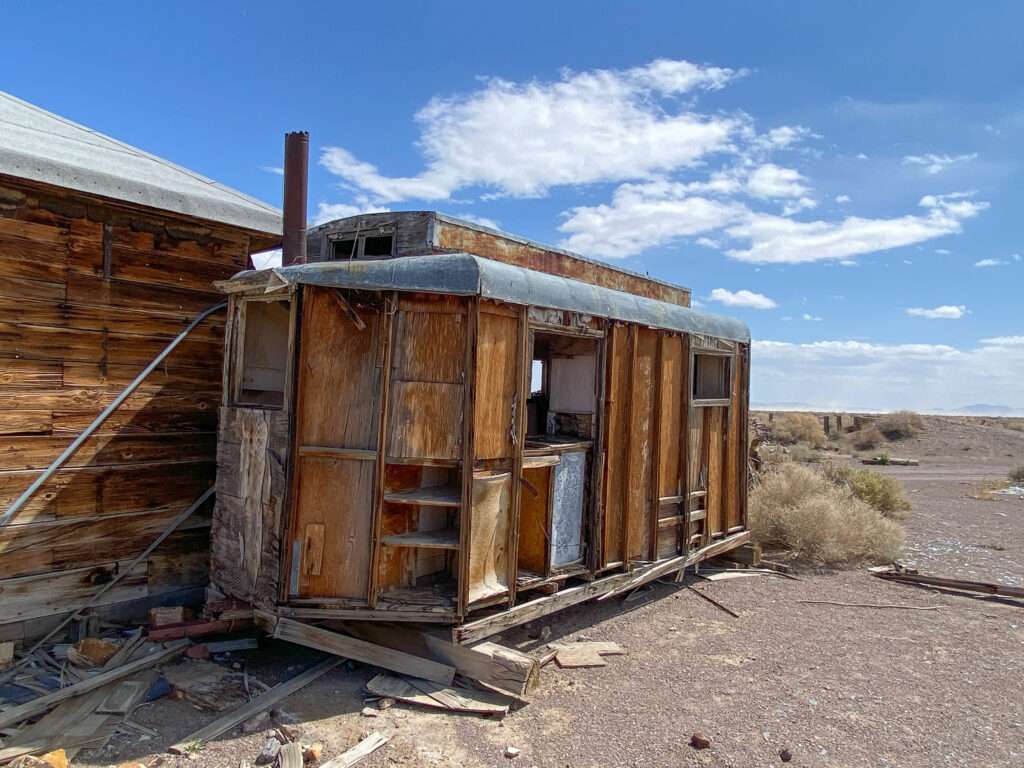


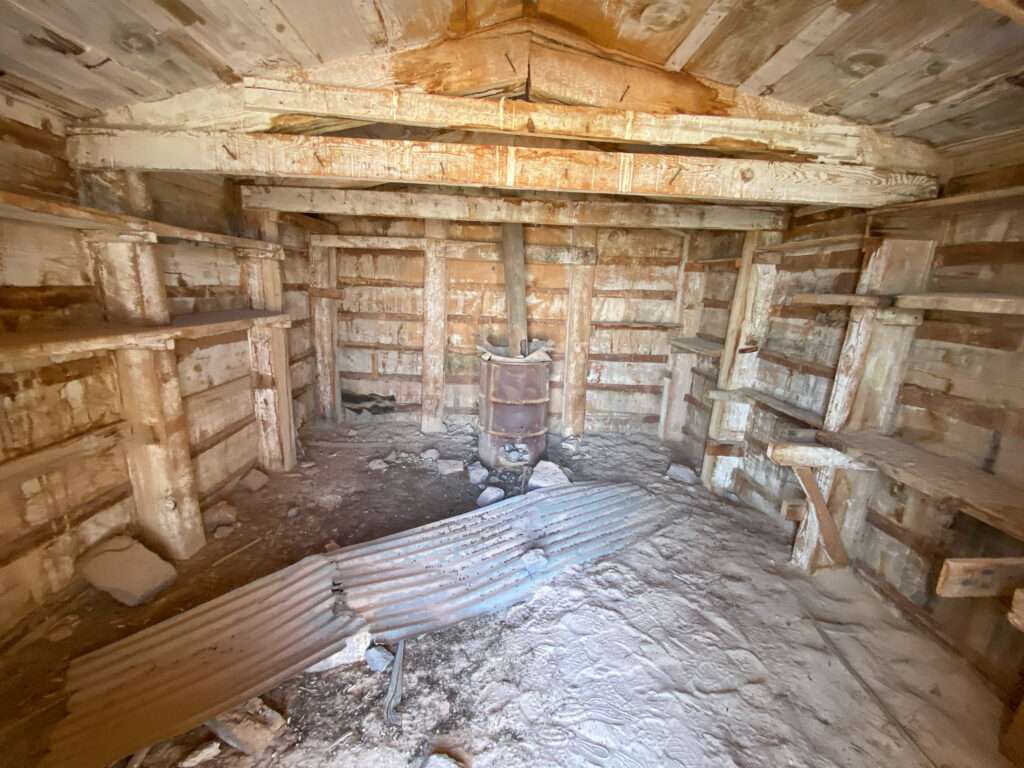
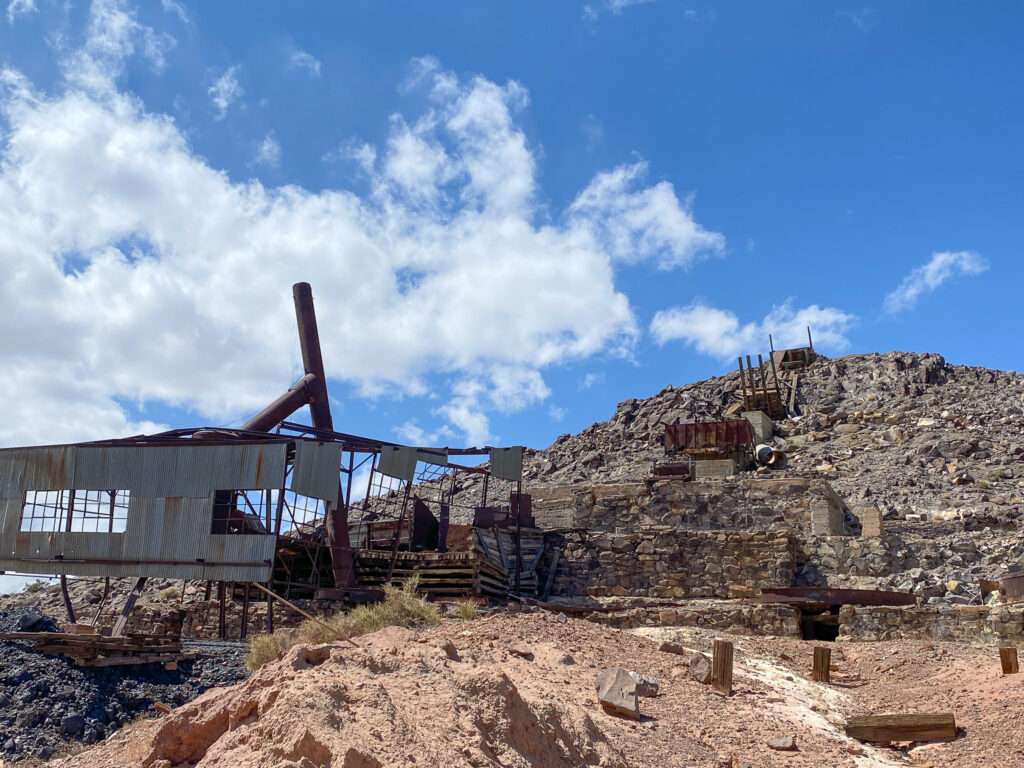
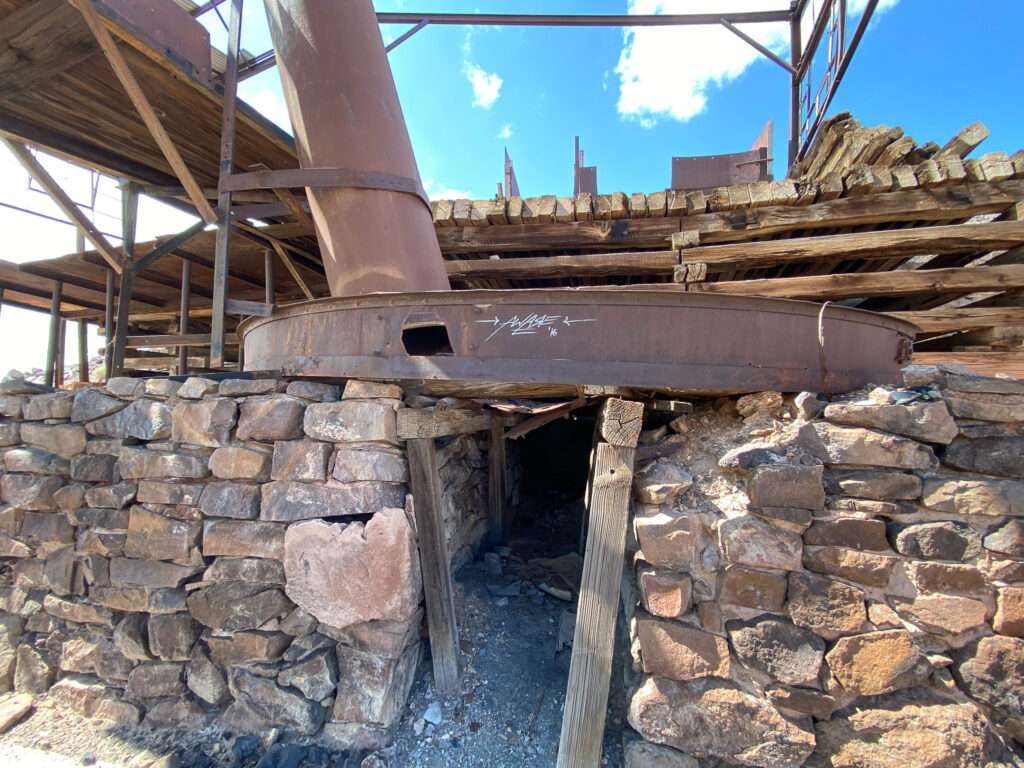
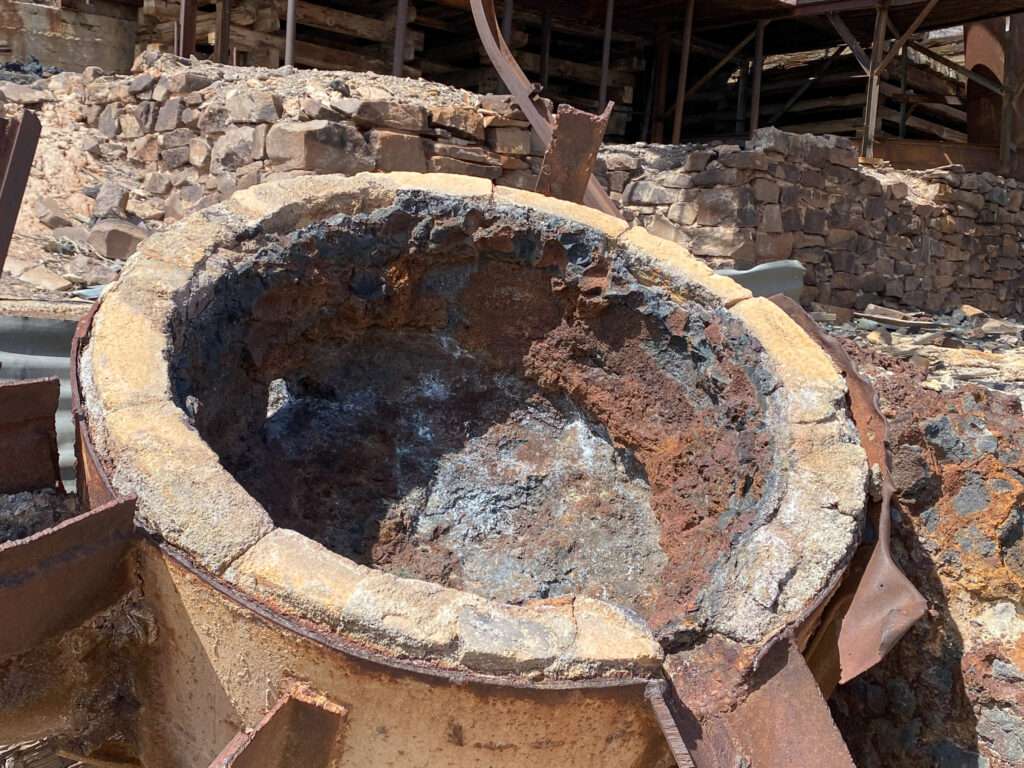
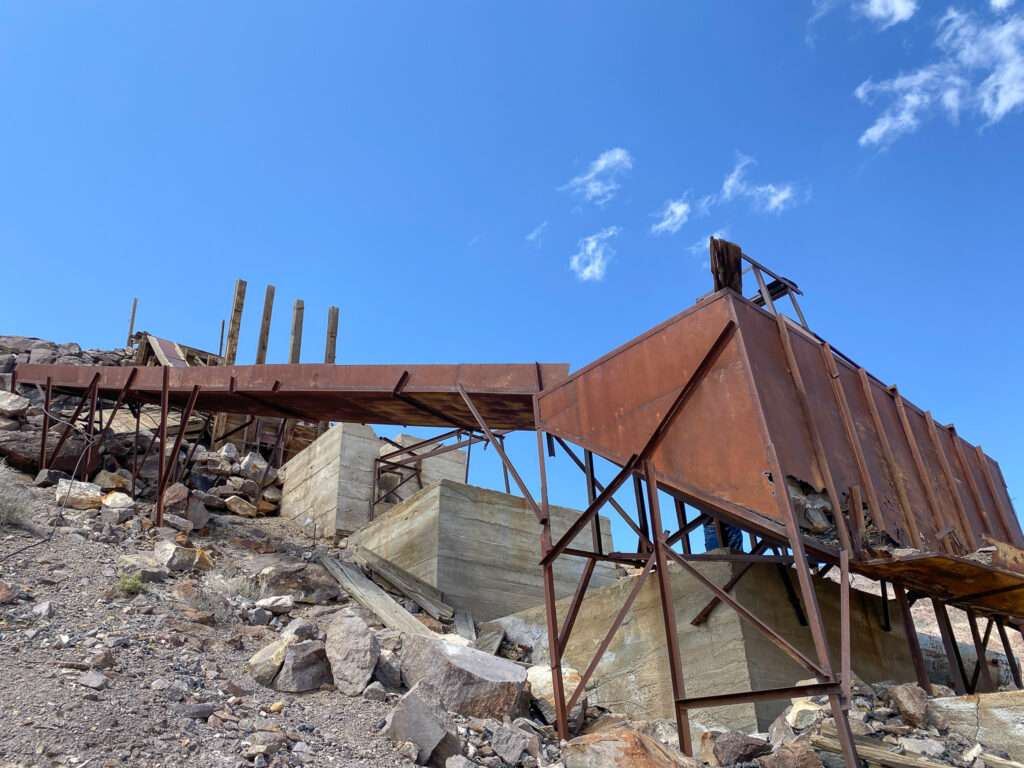
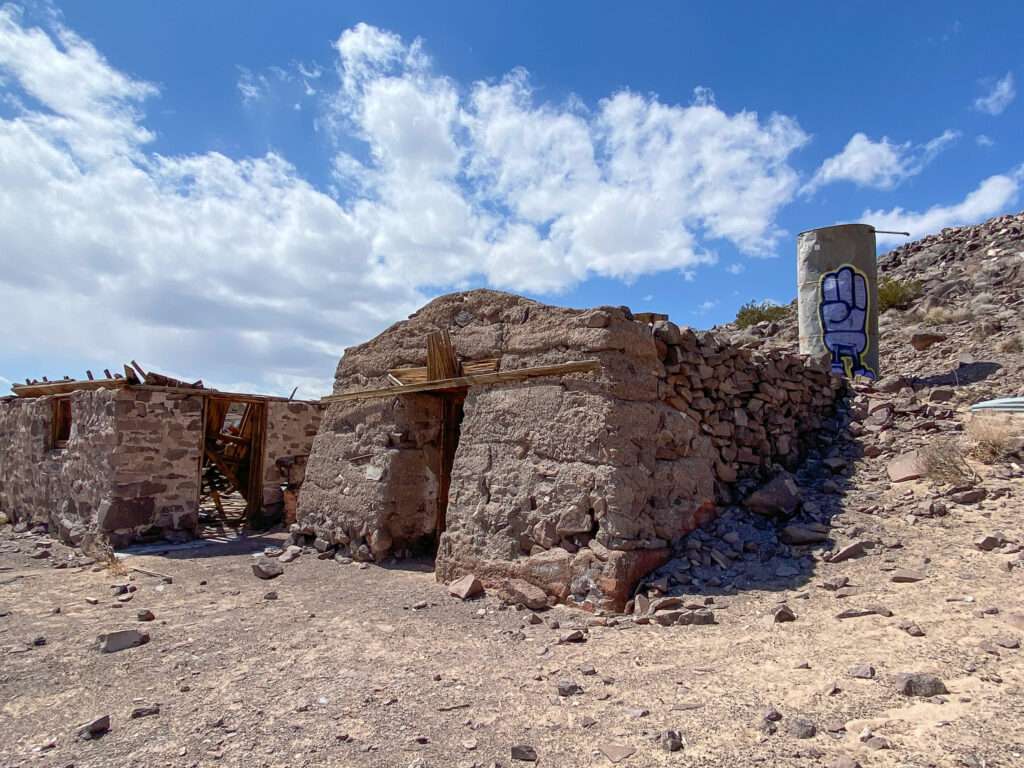

We weren’t going to hike to the top, but once again the higher we hiked, the farther we wanted to go.
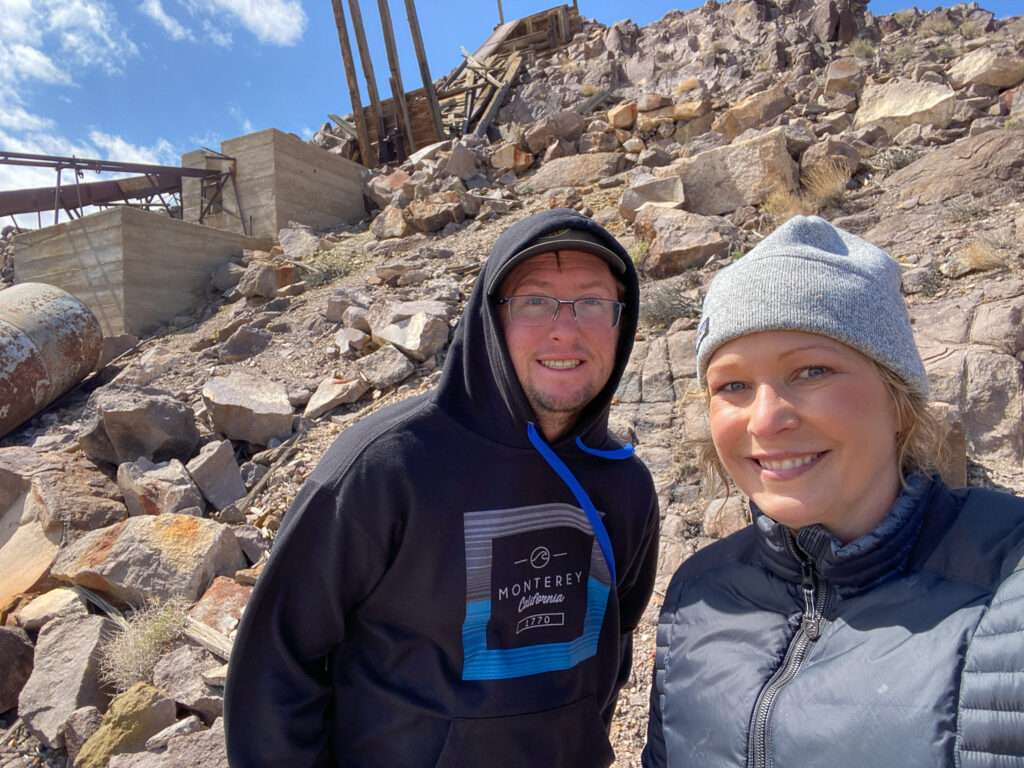
Bonnie Clare cemetery
Two sad little graves sit not far from Bonnie Clare.
Dorothy Ione Patnoe

(Poto credit: Find a grave)
Little Dorothy died of scarlet fever at age five. Her father was a station agent for the LV&T.
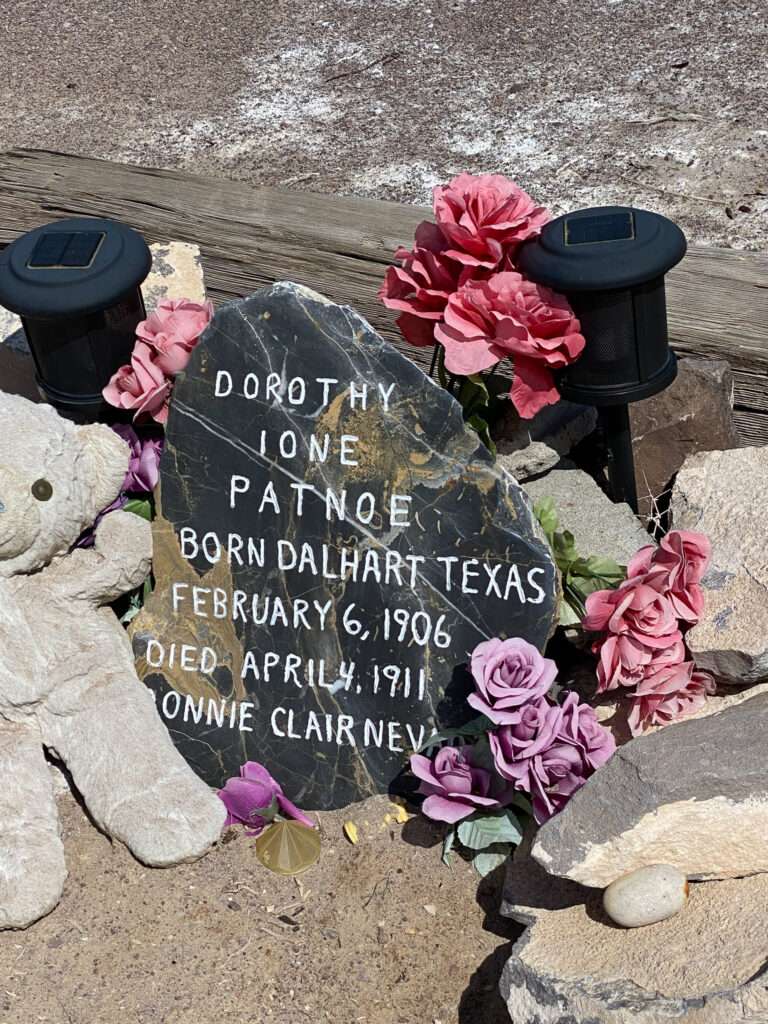
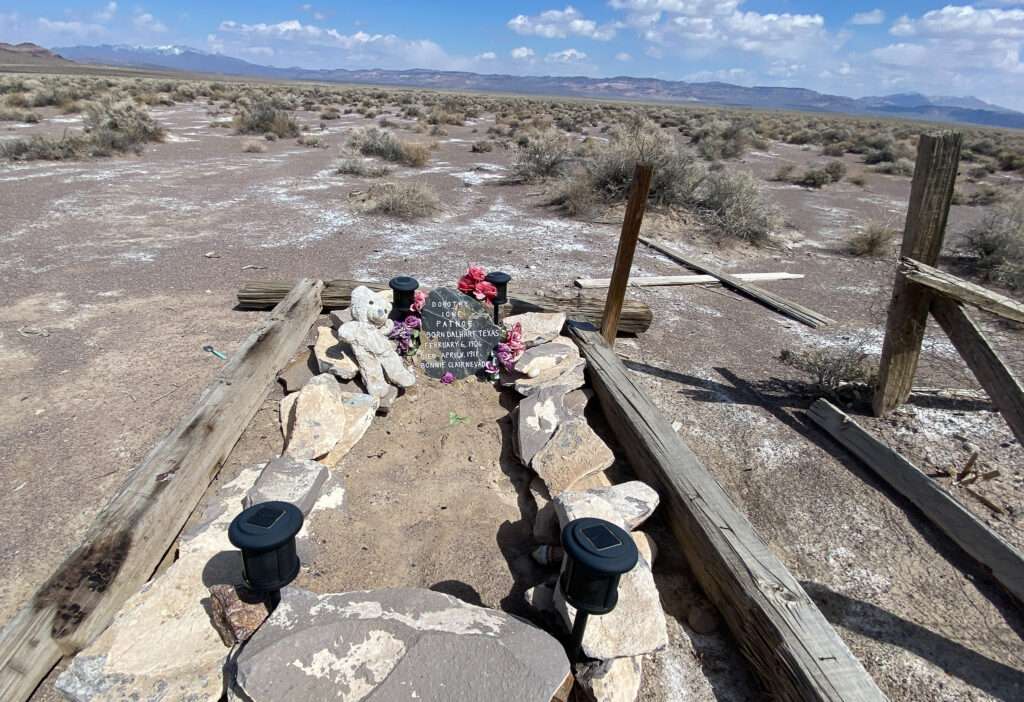
In 1916, the coffin was exhumed to move it to San Francisco. The LV&T refused to transport the coffin, possibly because she died of scarlet fever. Her brother returned in the 1950s and found her headstone had disappeared. New headstones were made and placed on Dorothy’s and Dora’s graves.
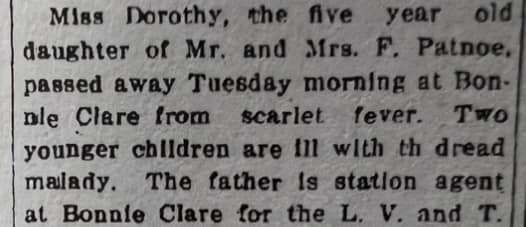
Dora Bell Campbell Black
Nineteen-year-old Dora died in 1916 after fighting an unknown illness for two years.
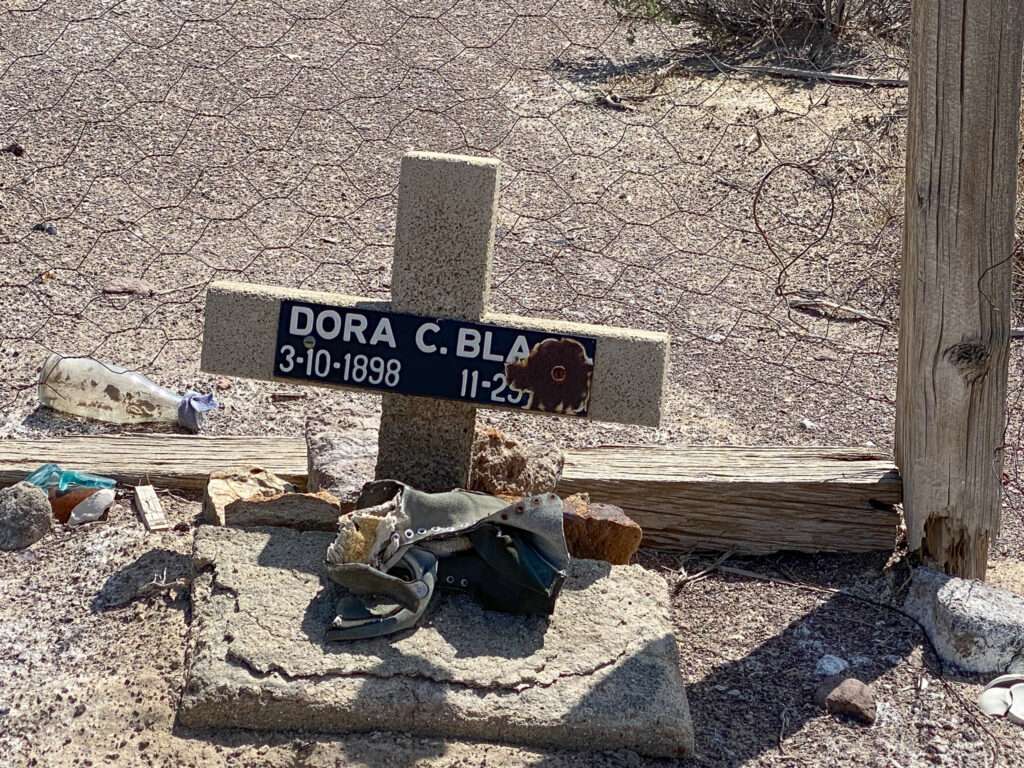
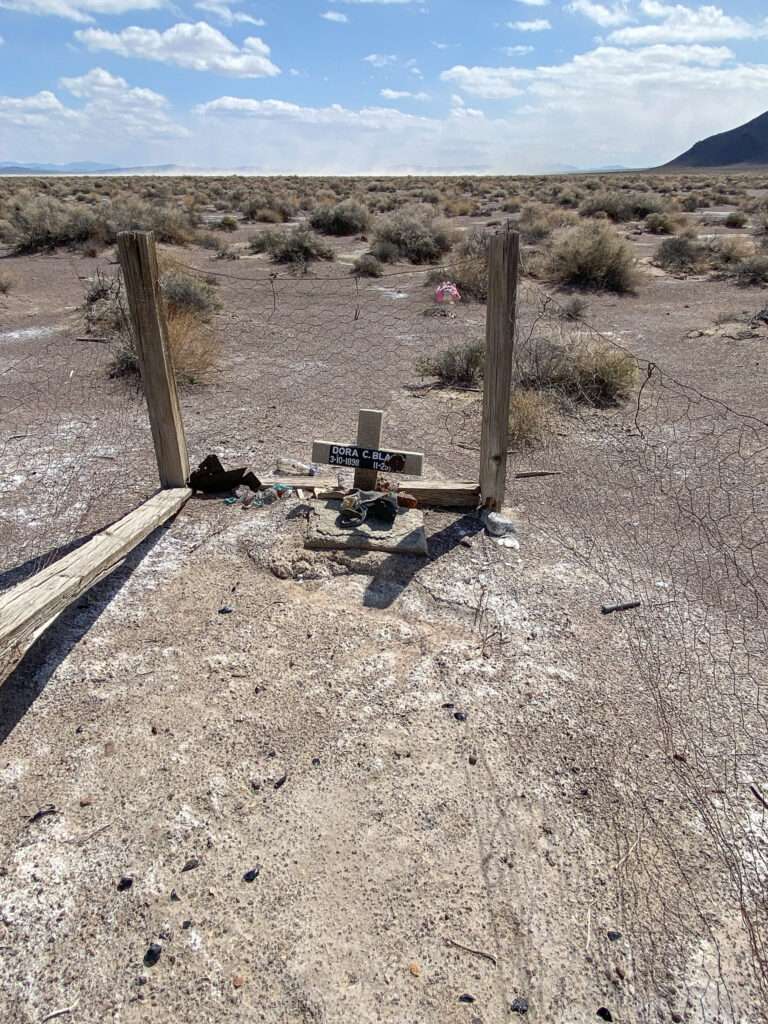
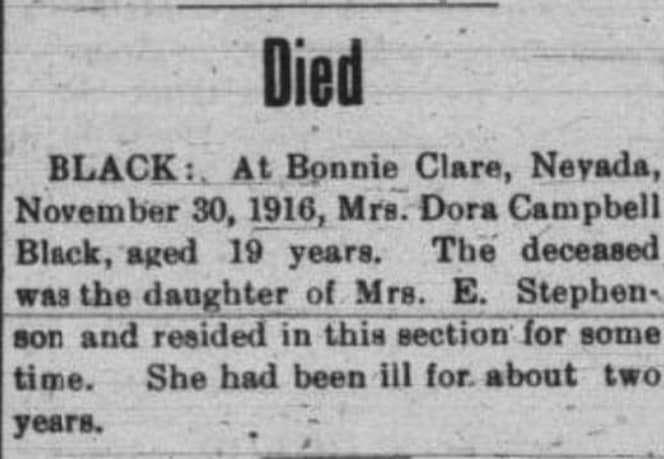
Goldwell Open Air Museum

While it isn’t a ghost town, you can’t visit the area and not stop at the Goldwell Open Air Museum. The museum is free but accepts donations. They have a small museum of historical photographs from Rhyolite. We visited Goldwell several times for different lighting.
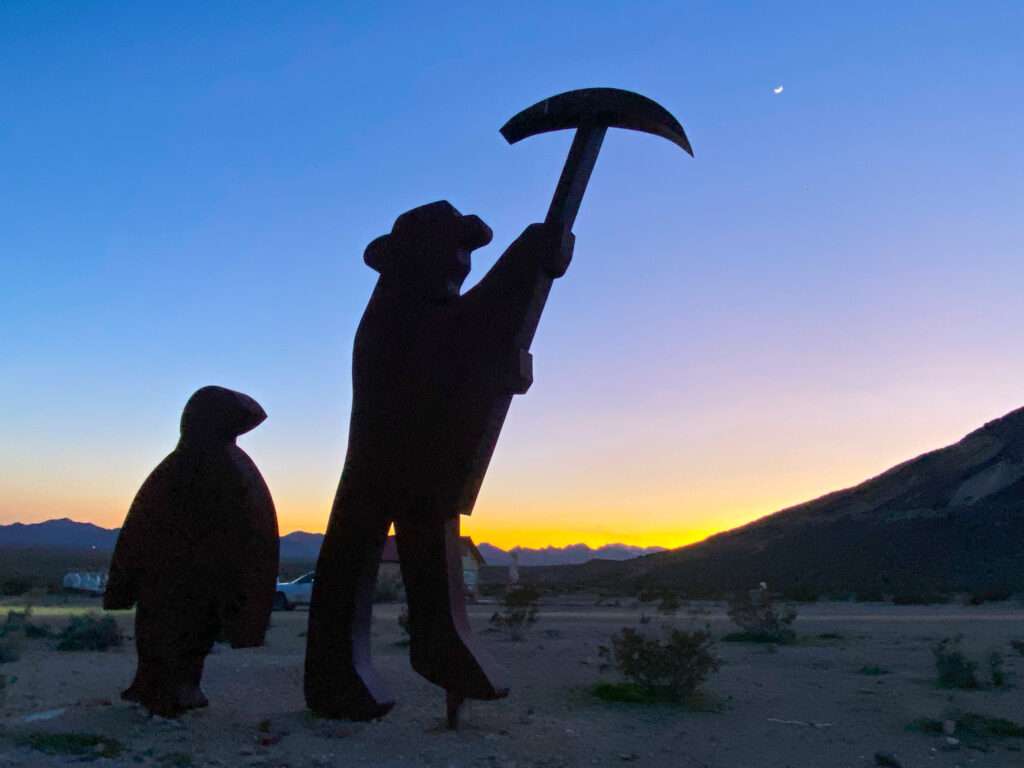
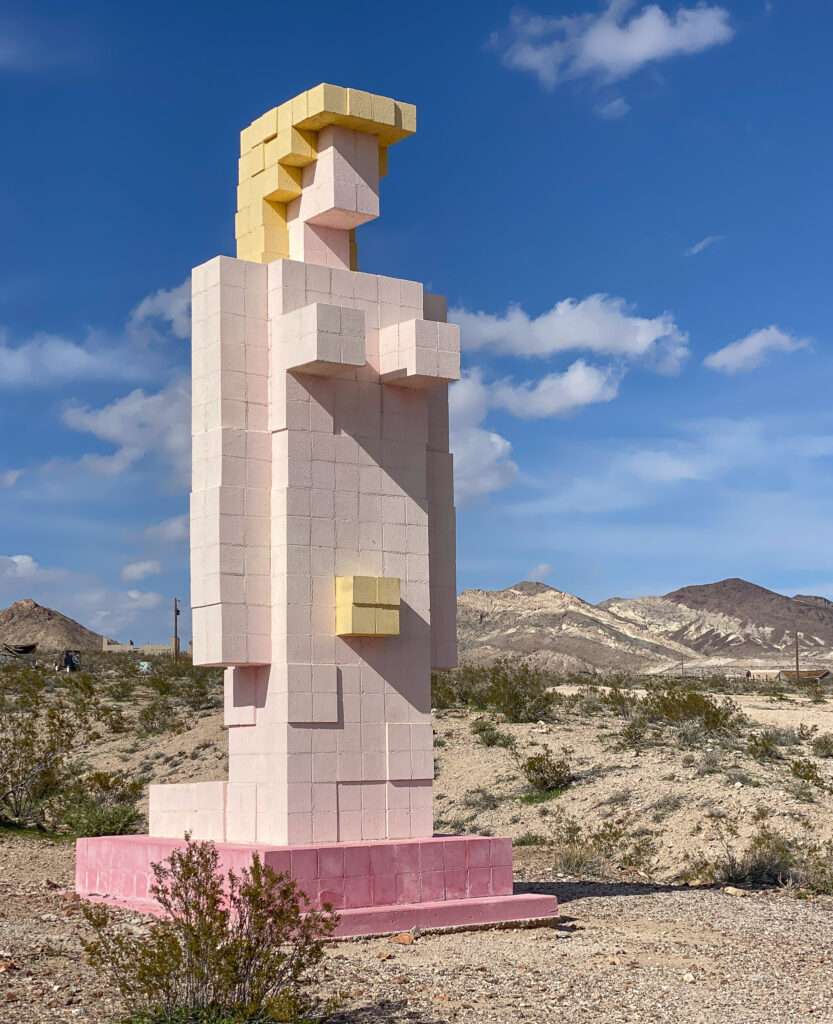

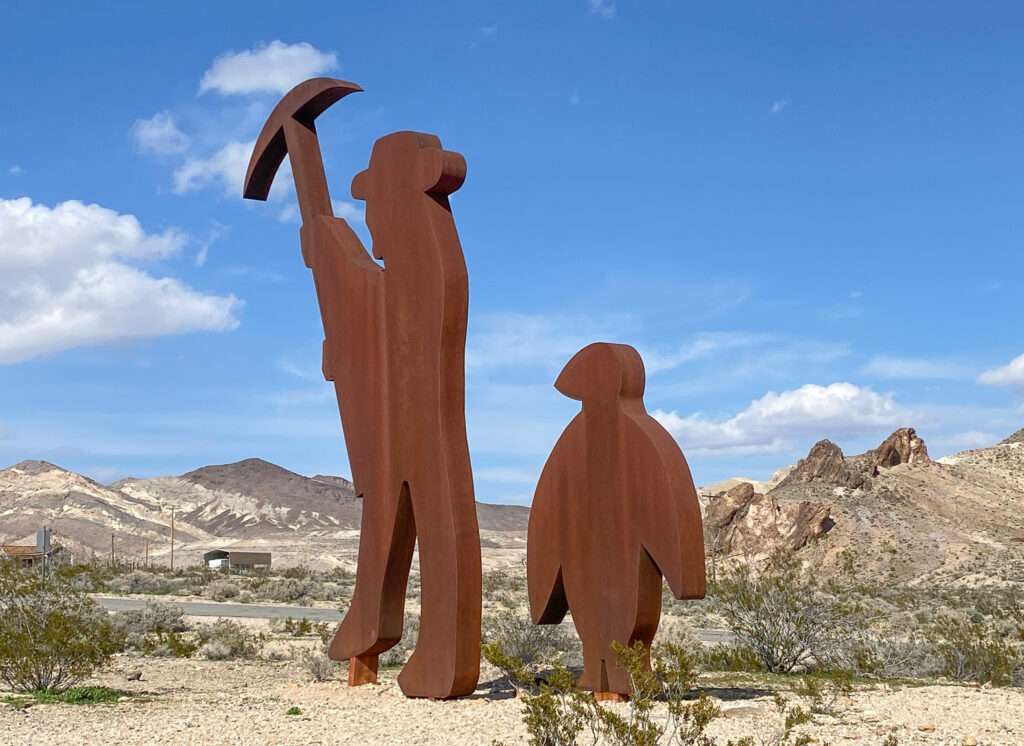
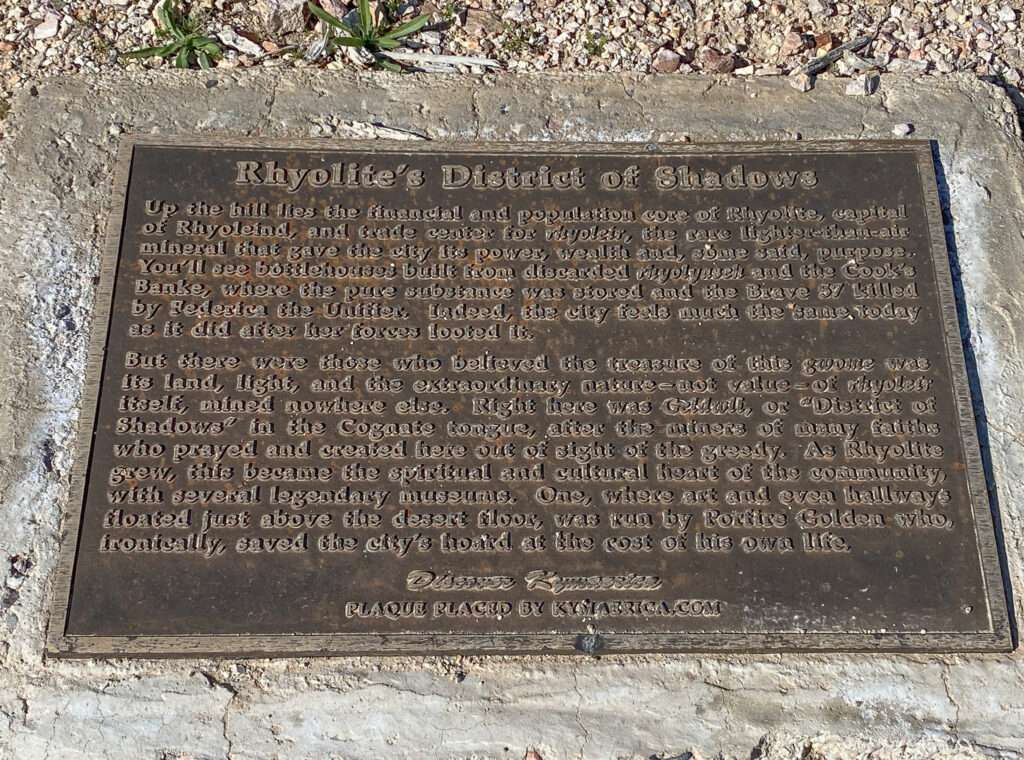
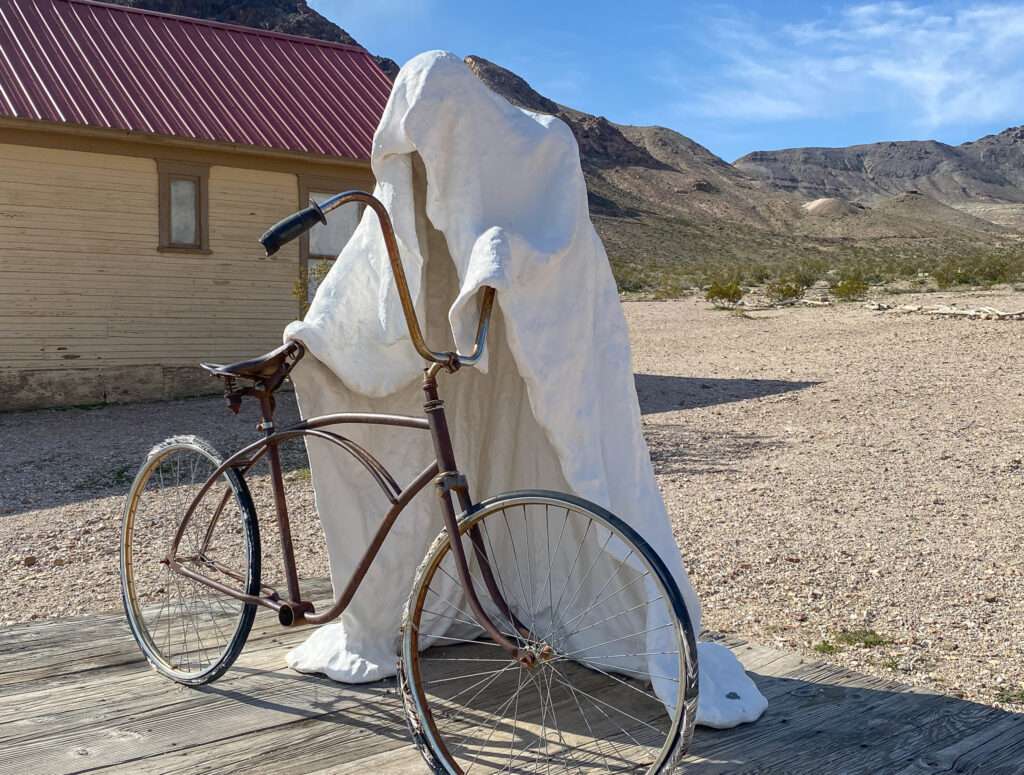
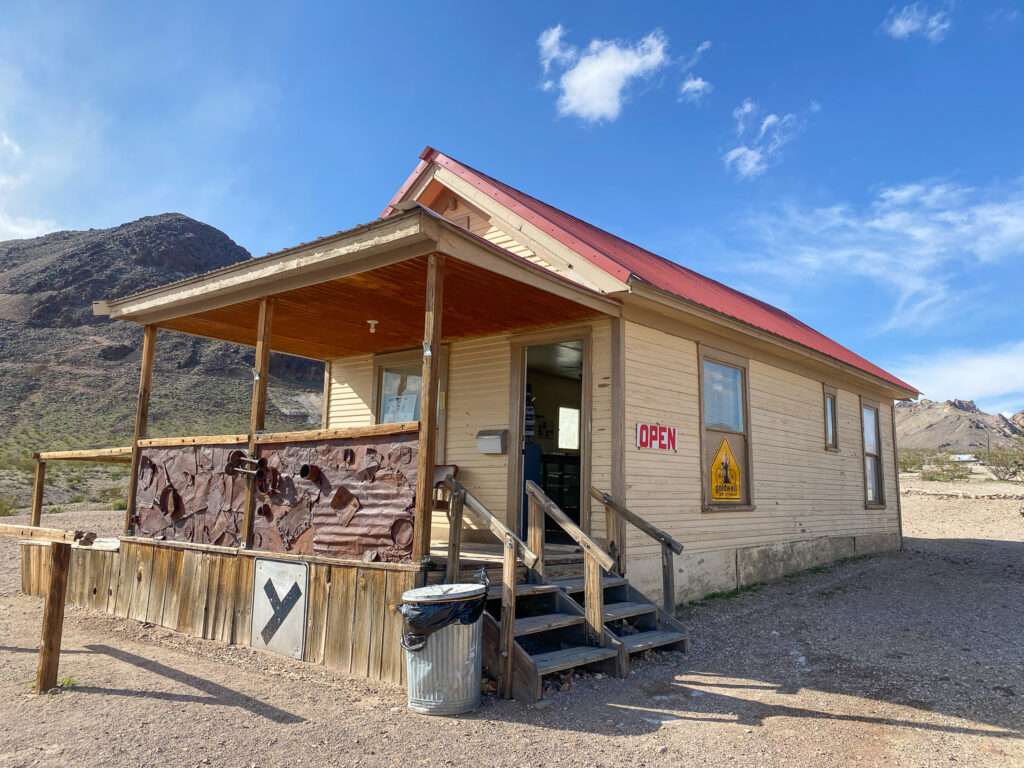
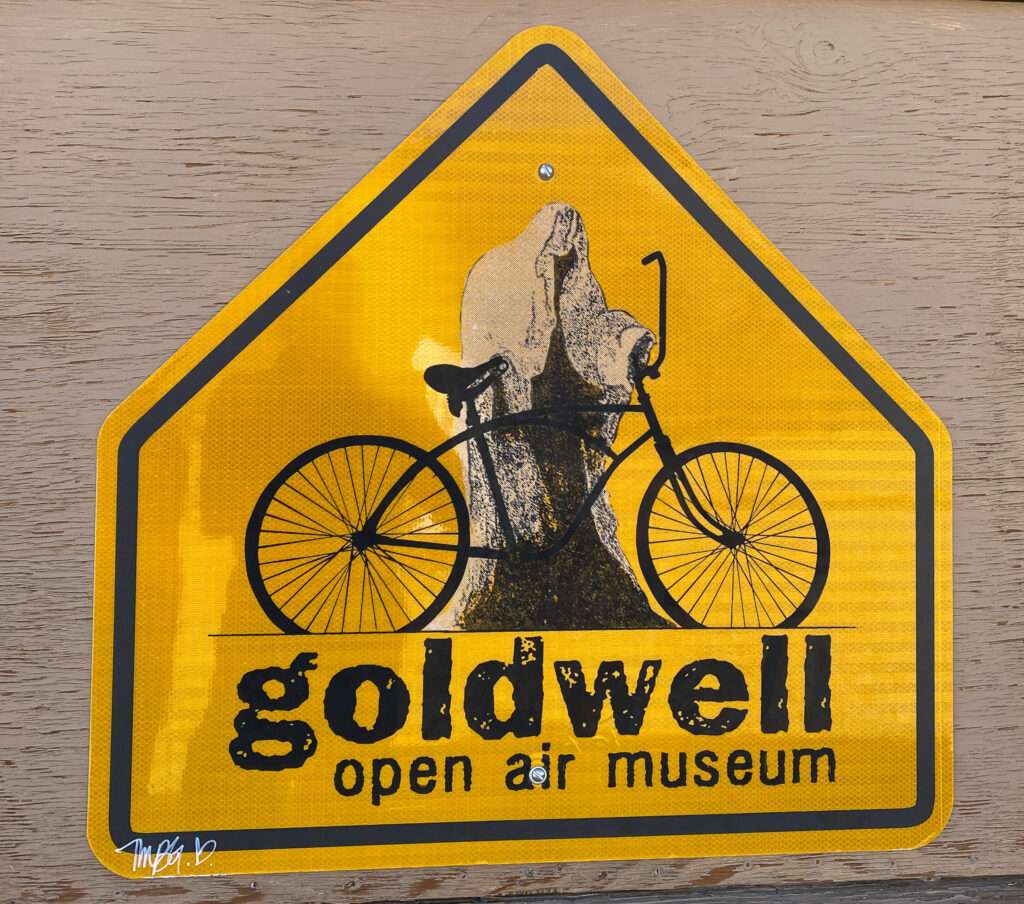
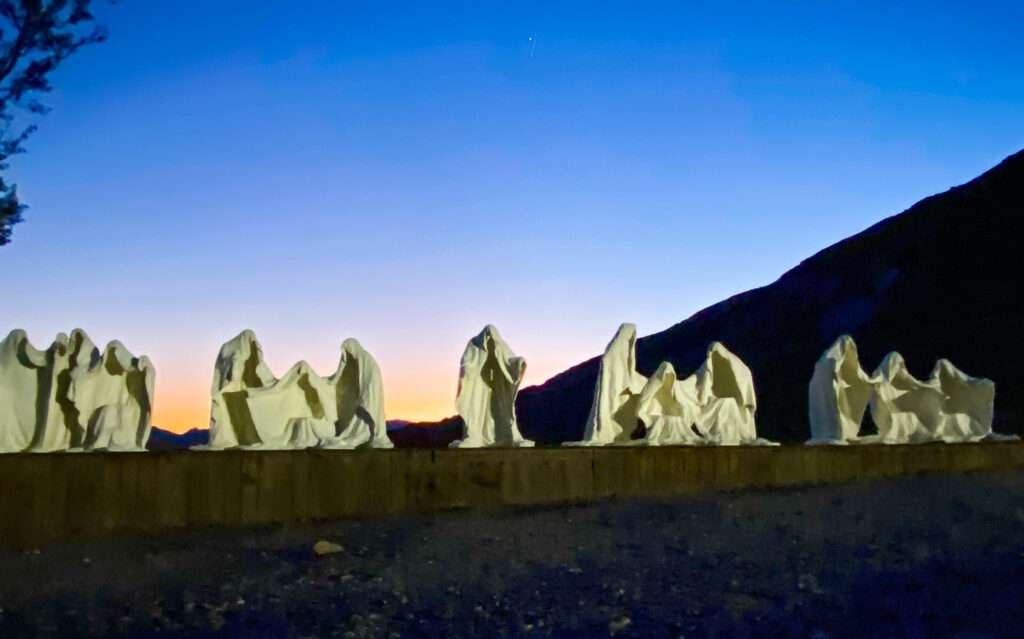
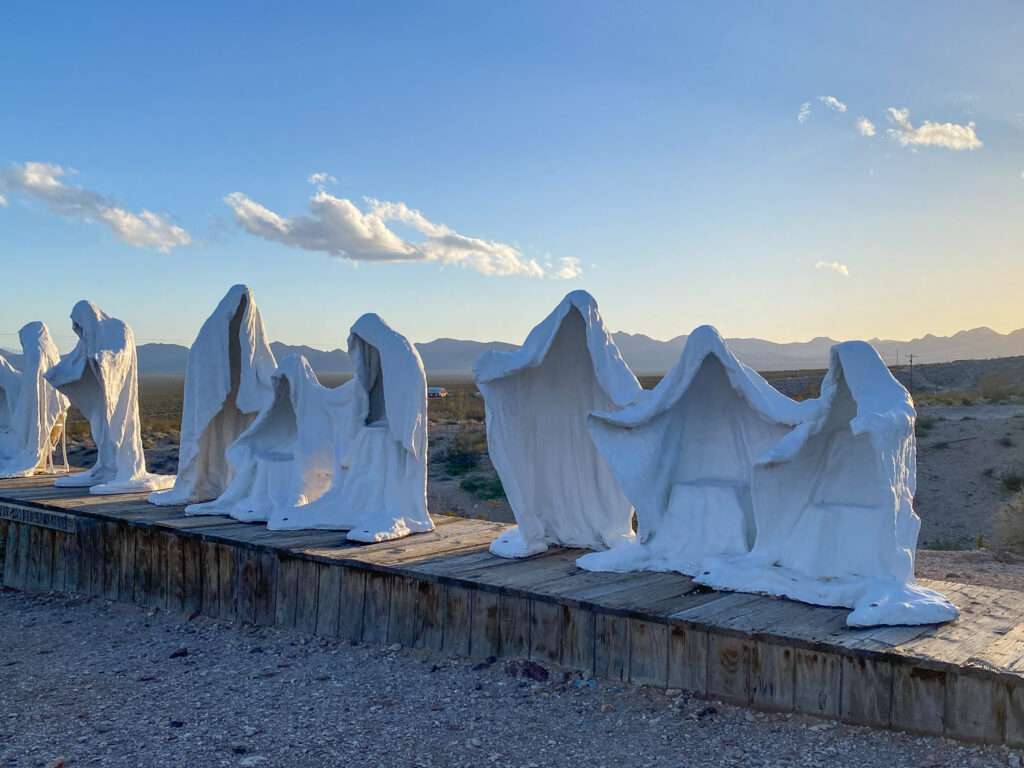
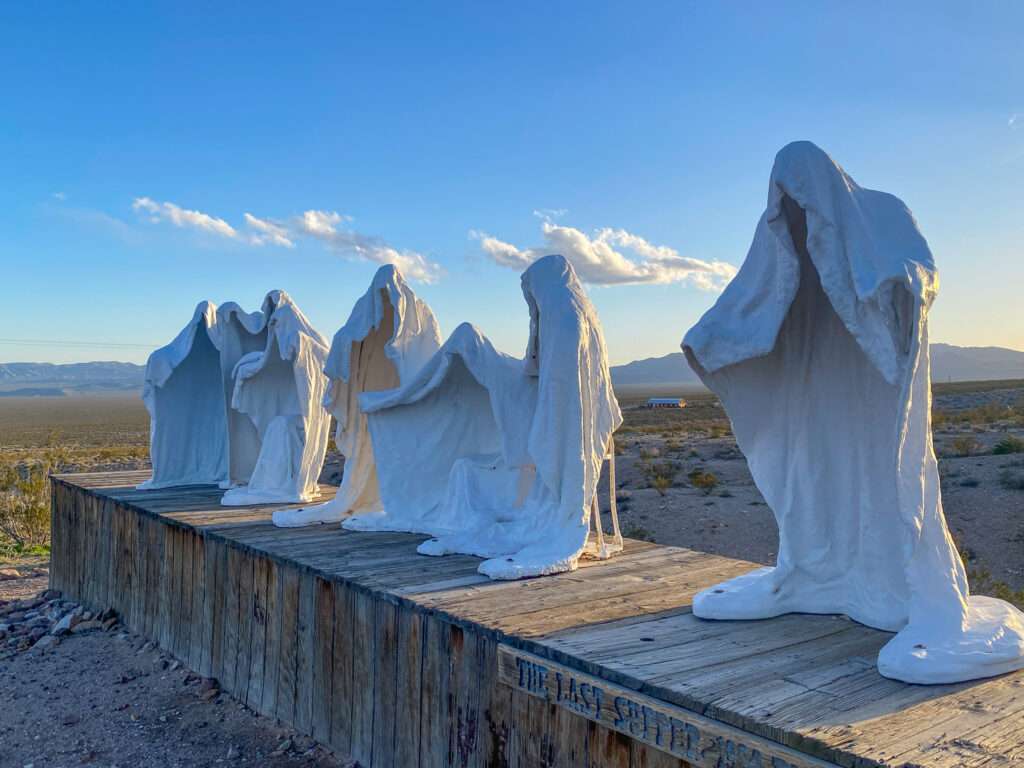
Rhyolite
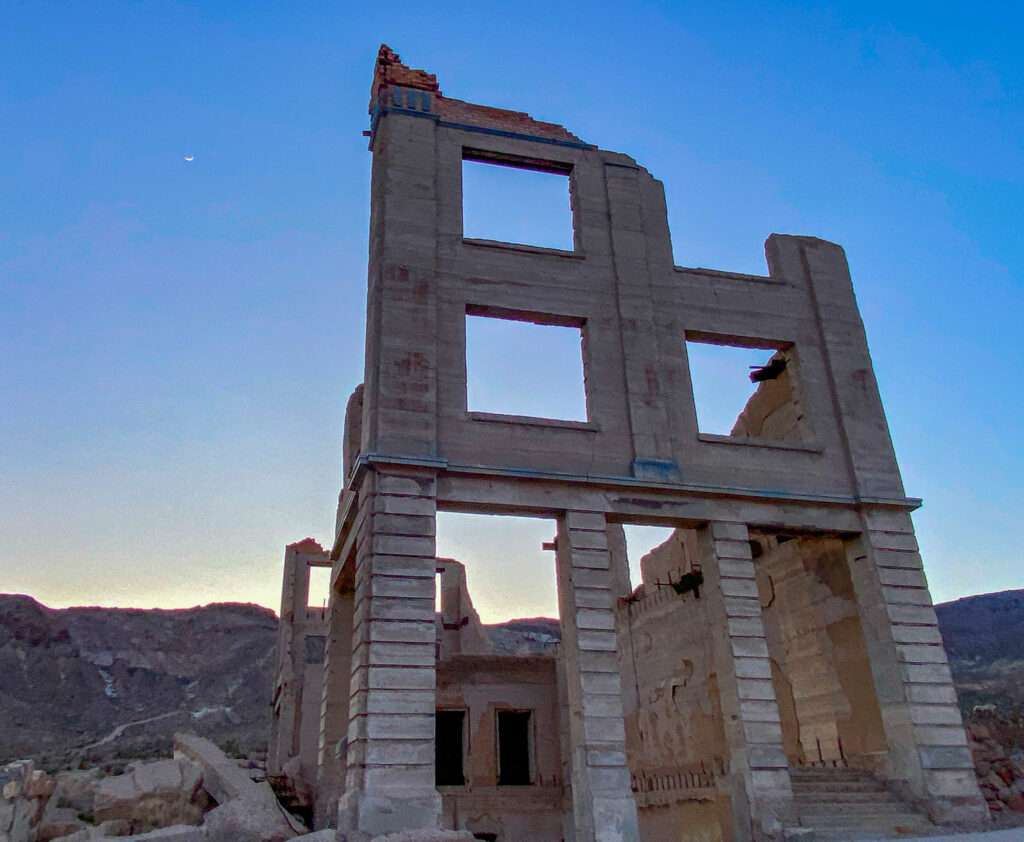
I saved the best for the last. Rhyolite is the Queen of Nevada ghost towns. After visiting ghost towns full-time for the last three years, I can safely say that, hands down Rhyolite has the best ruins of any ghost town in Nevada. As we were so close, we visited every day.
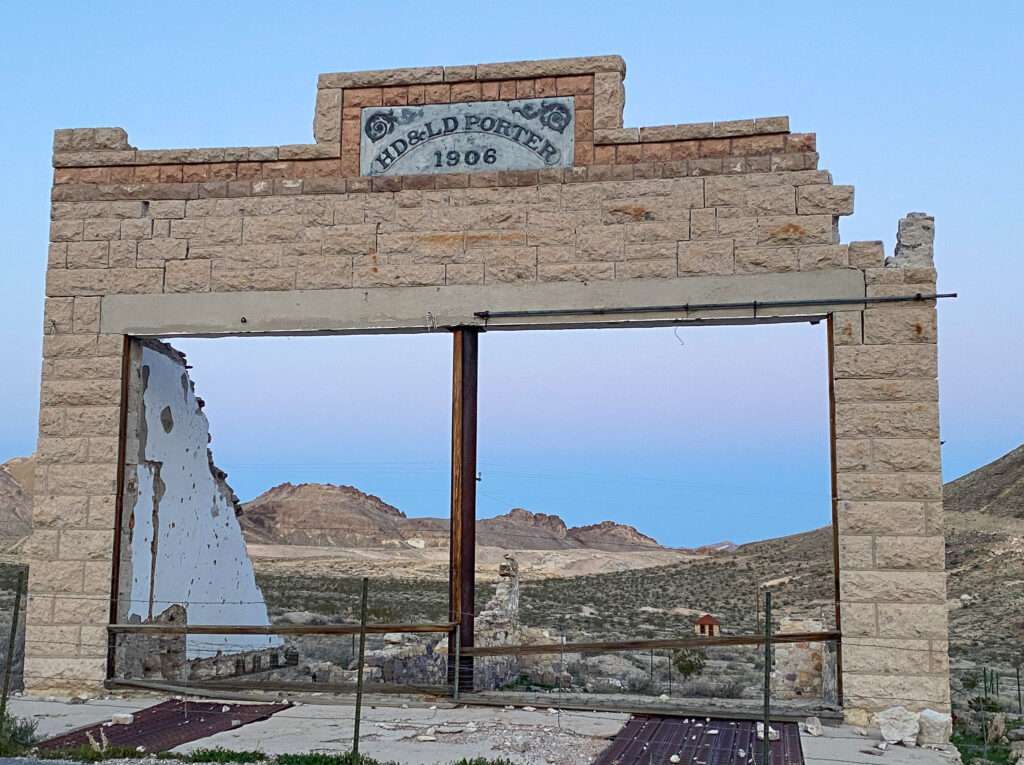
Rhyolite was plotted in 1905 close to the biggest producing mines. Developers gave free lots to merchants and the town sprung to life overnight. The burgeoning town was first rag, then tent dwellings, followed by tent saloons and stores.
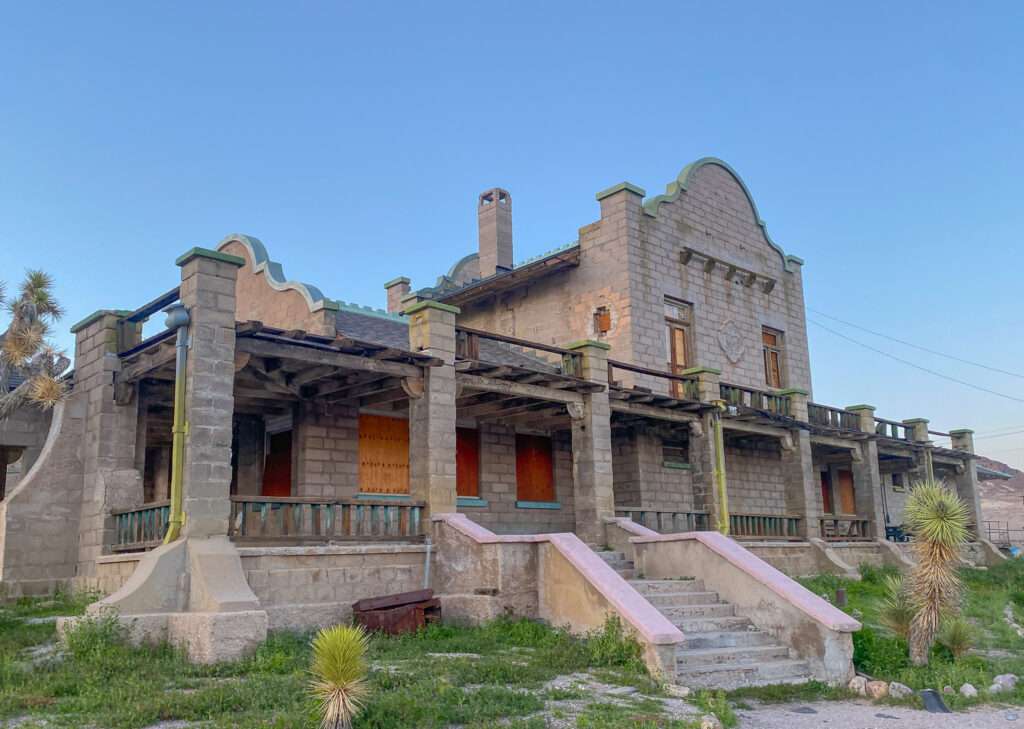
By 1907, an astonishing 6,000 residents called Rhyolite home. The desert jewel had hotels, restaurants, saloons, three water companies, electric lights, an opera house, and public swimming pools.
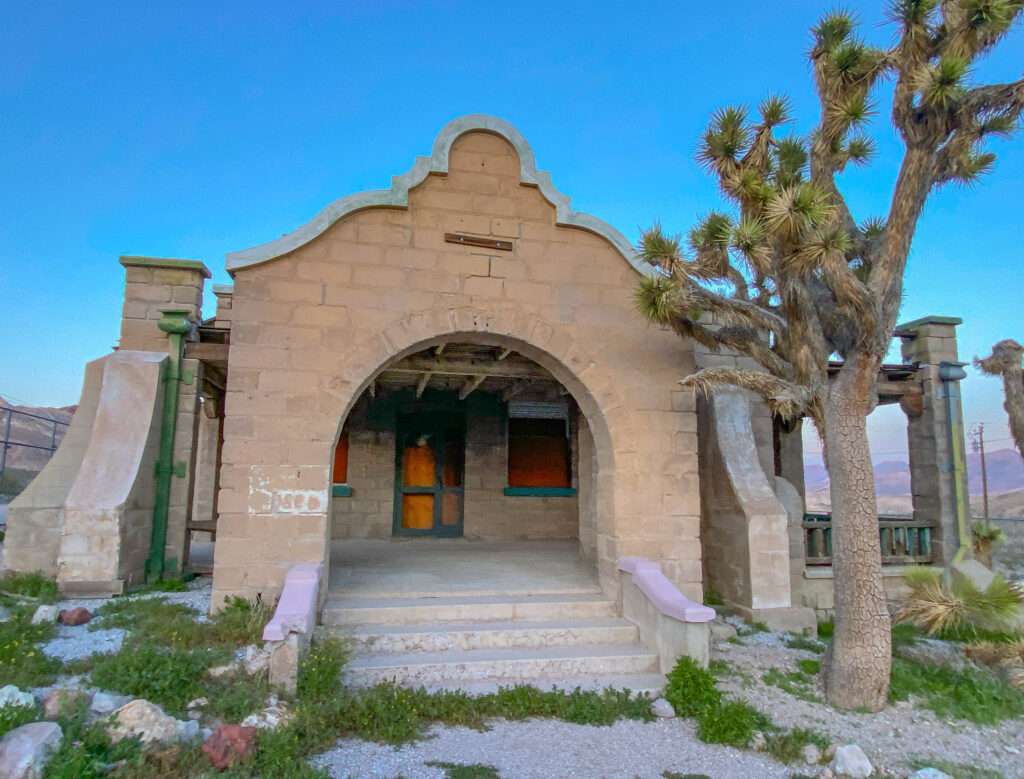
As quickly as Rhyolite came to life, the bright star faded. Many moved to Los Angeles or Las Vegas by the decade’s end. By 1910, only 700 souls remained, and the town was abandoned ten years later.

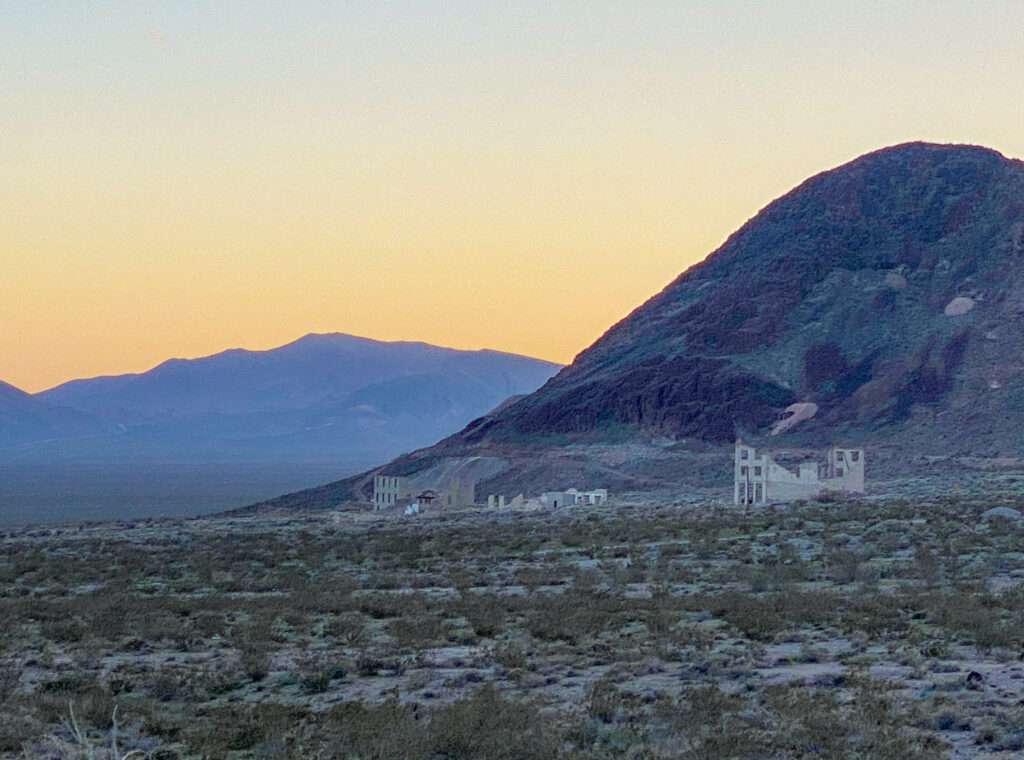

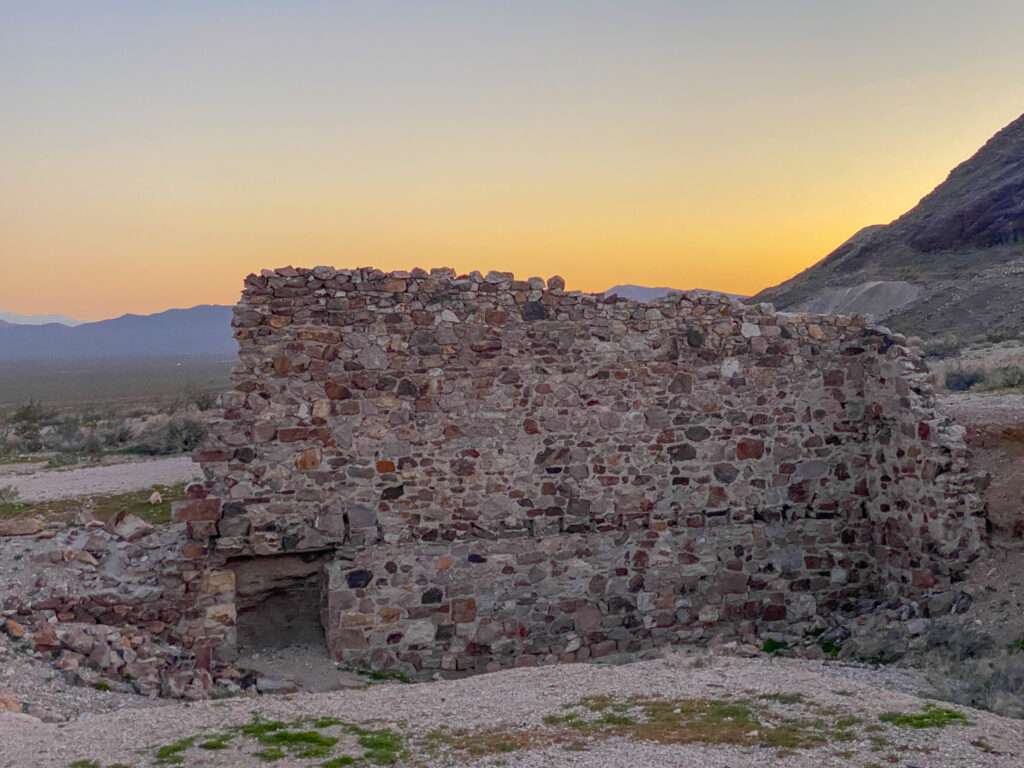
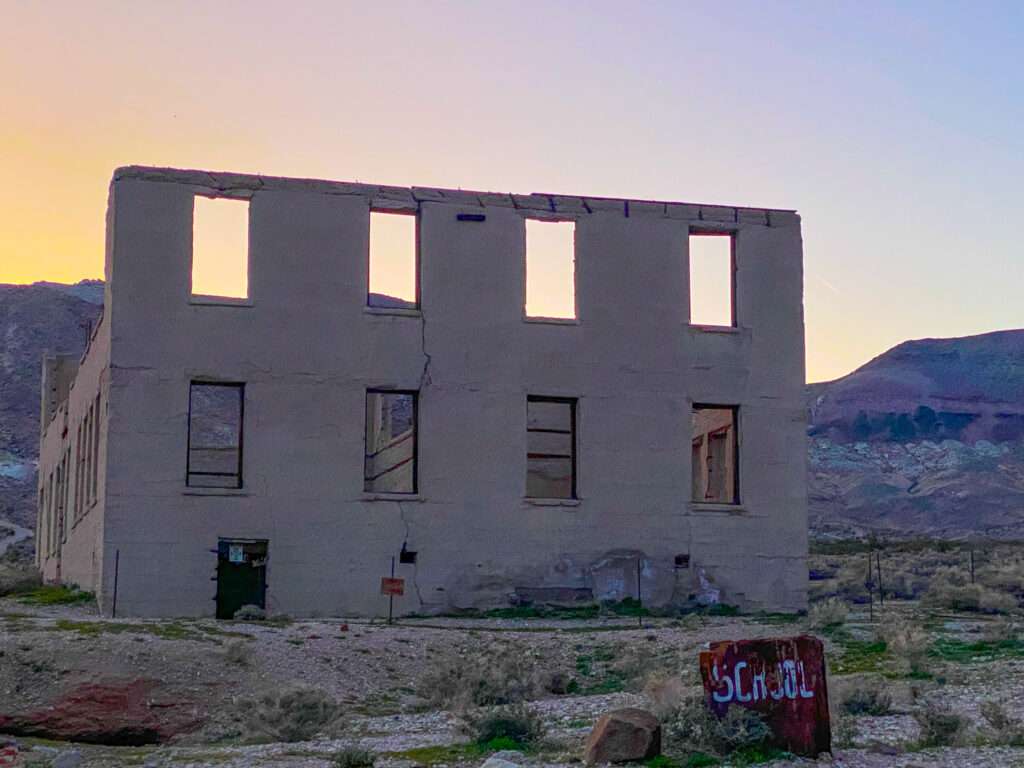

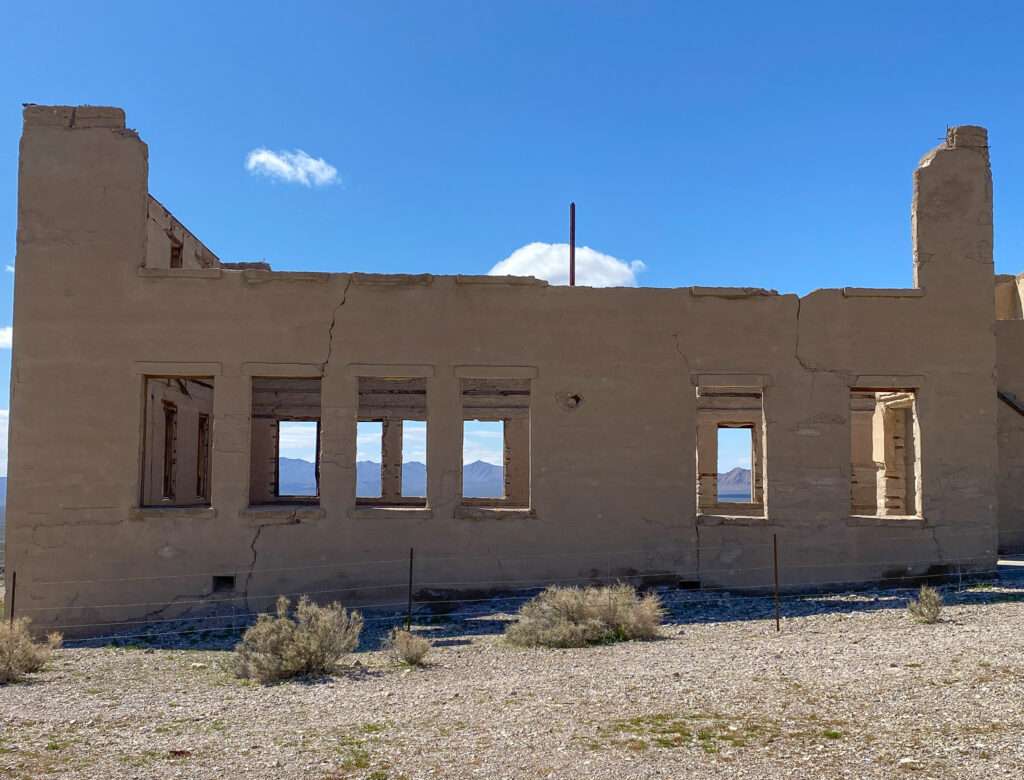

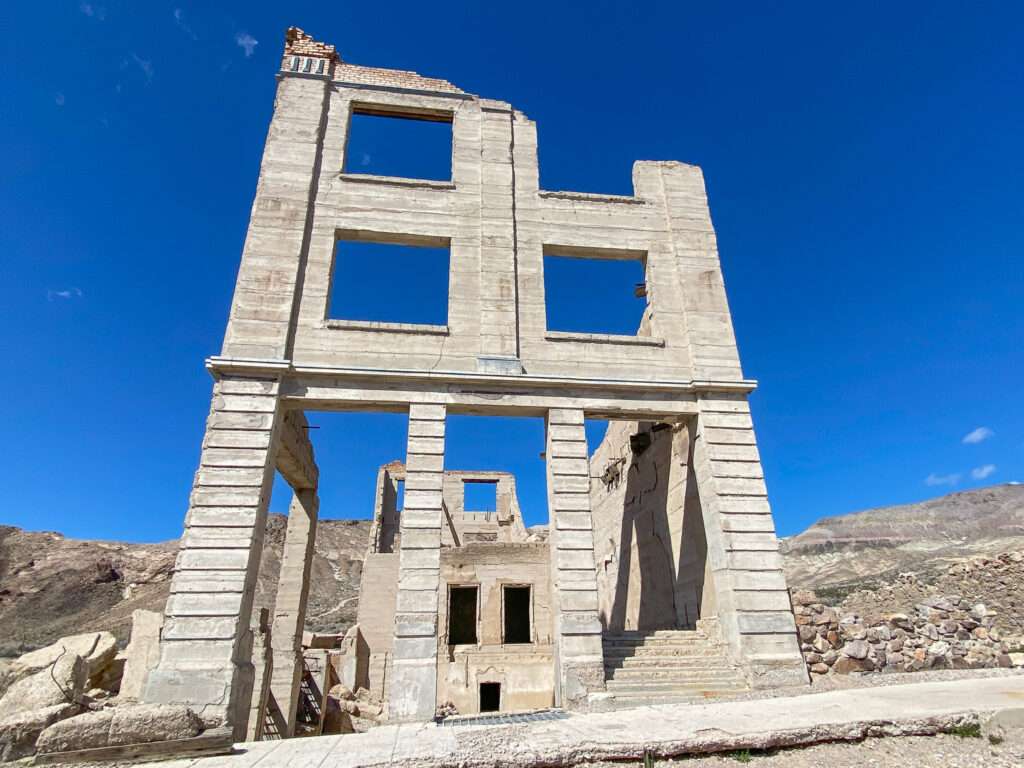
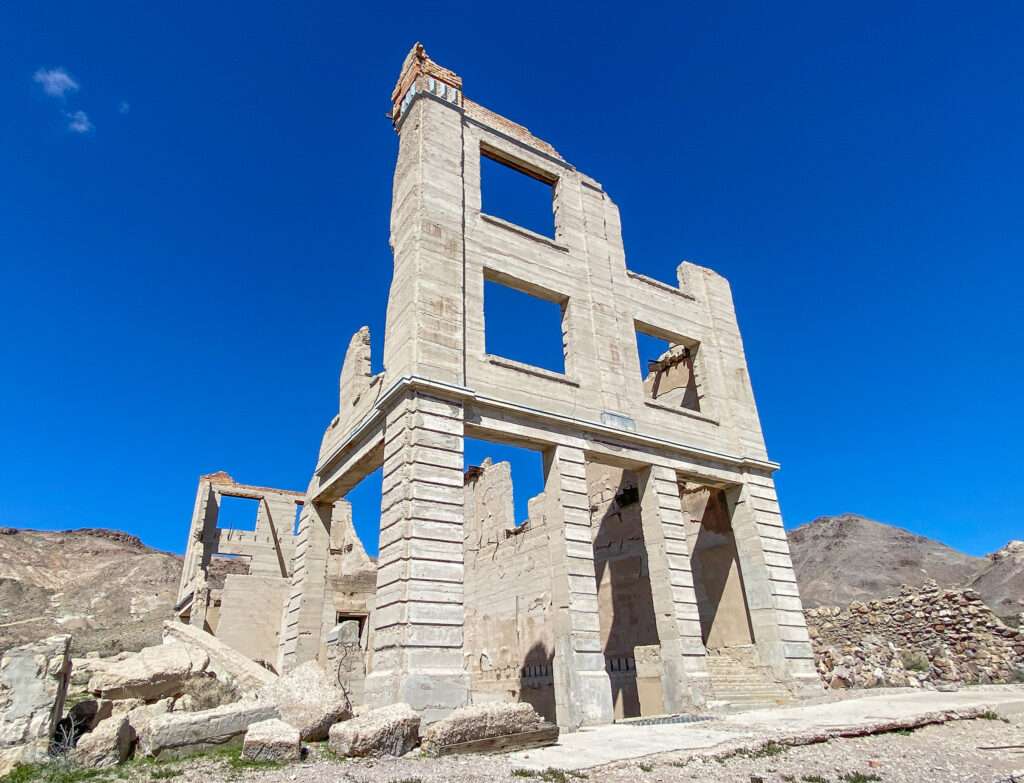
Richard P Speidel says
The picture of you in Jail was priceless!
Tami says
Thankfully, that is the only jail I have been in!
Scott W Elliott says
Great job! I’ve been to all except Springdale because it is/was private property. I enjoy how you personalize some of these places with stories and photos of people who were there.
Tami says
Thanks Scott, I love when I am fortunate to find historical pictures.
We still need to connect sometime.
Irv Stark says
Tami, I really enjoy your postings GHOST TOWNS AND BEYOND, providing information and detailed background on particular sites to a greater extent than any other posting. Keep ‘em coming!
Tami says
Thank you so much, lots more to come!
I am excited to get back to researching individual towns in more depth, I miss finding the hidden pieces of history. I started researching Gouge Eye last night, I have more resources than in the past and found some great information.
Richard Kerri says
Great info Tami. Thanks for the hard work. We actually have a trip planned to start near Goldfield next week. This article will be invaluable.
Tami says
Thank you, if you missed it here are was the article about the trip down and back. Here are a few other trips in the last year to the area, each has spots along the way. At some point, I might try and combine all the places along 95 and the towns.
https://nvtami.com/index.php/2023/04/11/beatty-ghost-town-bound/
https://nvtami.com/index.php/2023/02/21/nevada-museum-madness/
https://nvtami.com/index.php/2022/07/16/to-tonopah-beyond/
Doyle Carter says
I Drove truck took ball to Bullfrog in 1985 3” for mill I want go back look over I 73 now
Tami says
That would be great if you could revisit Bullfrog. I drove past Beatty today but didn’t get to spend any time.